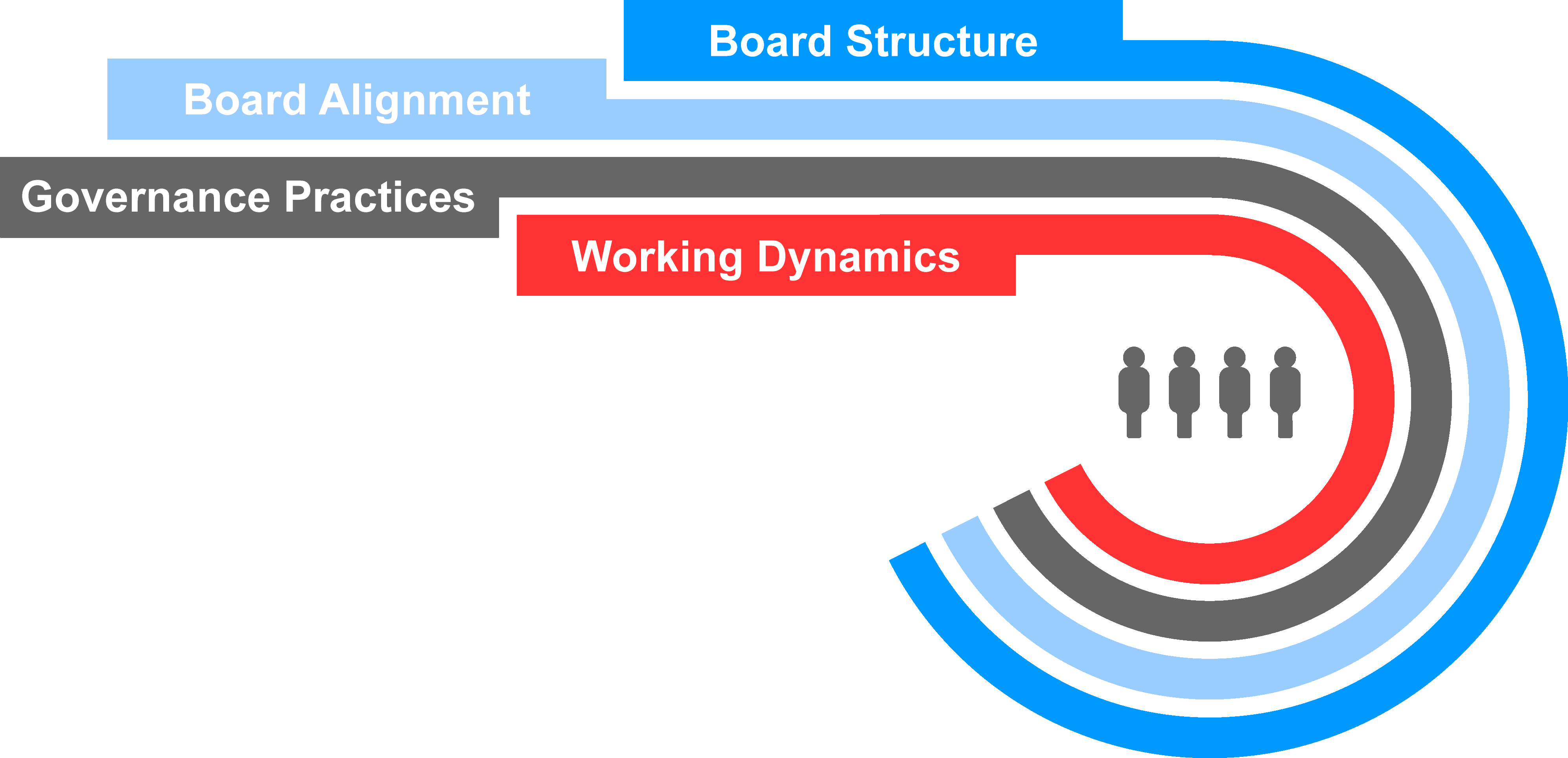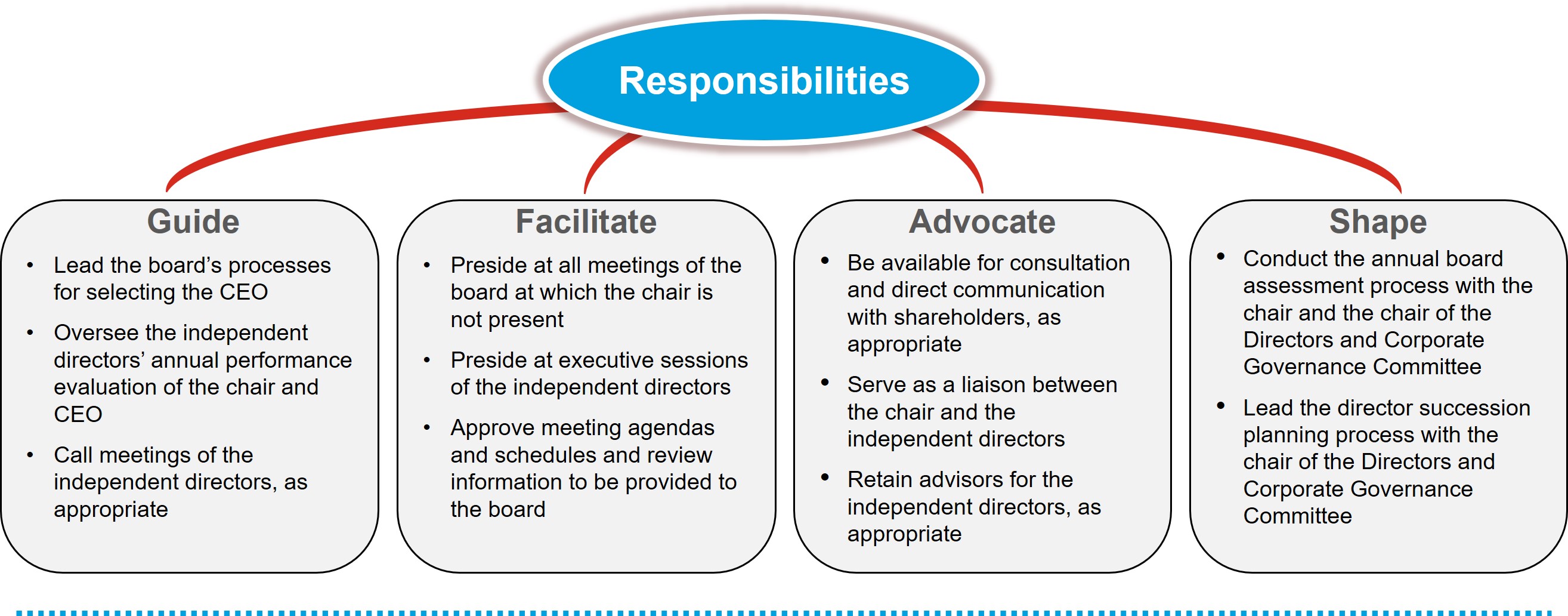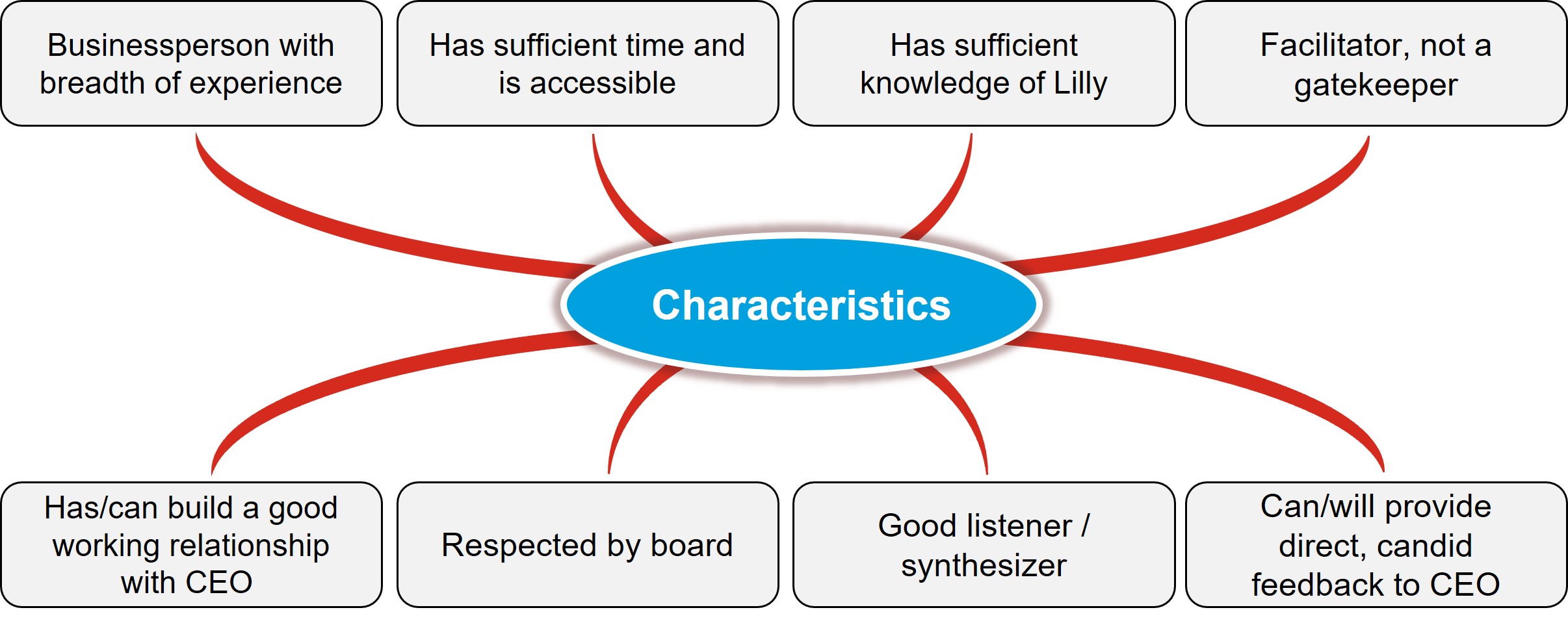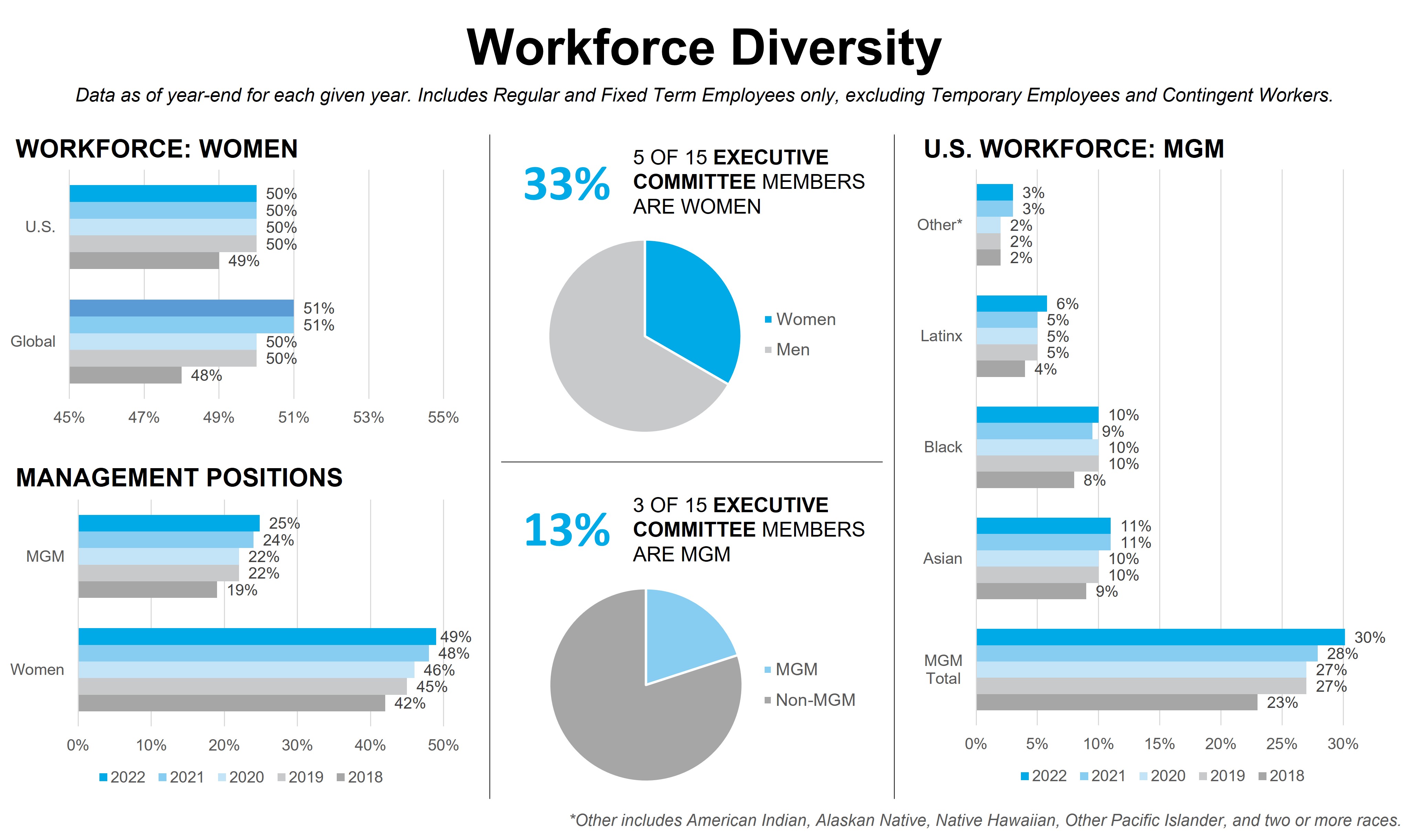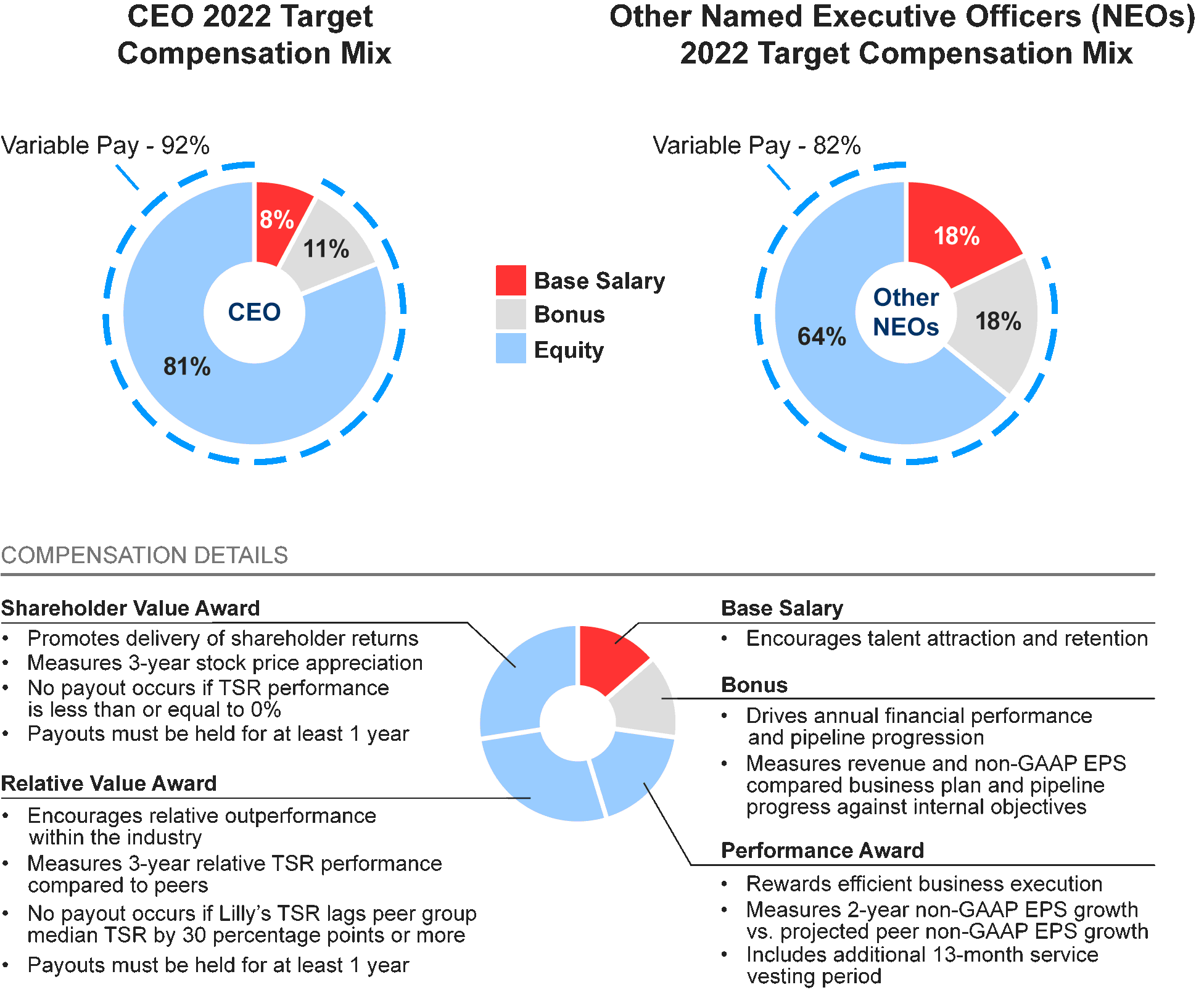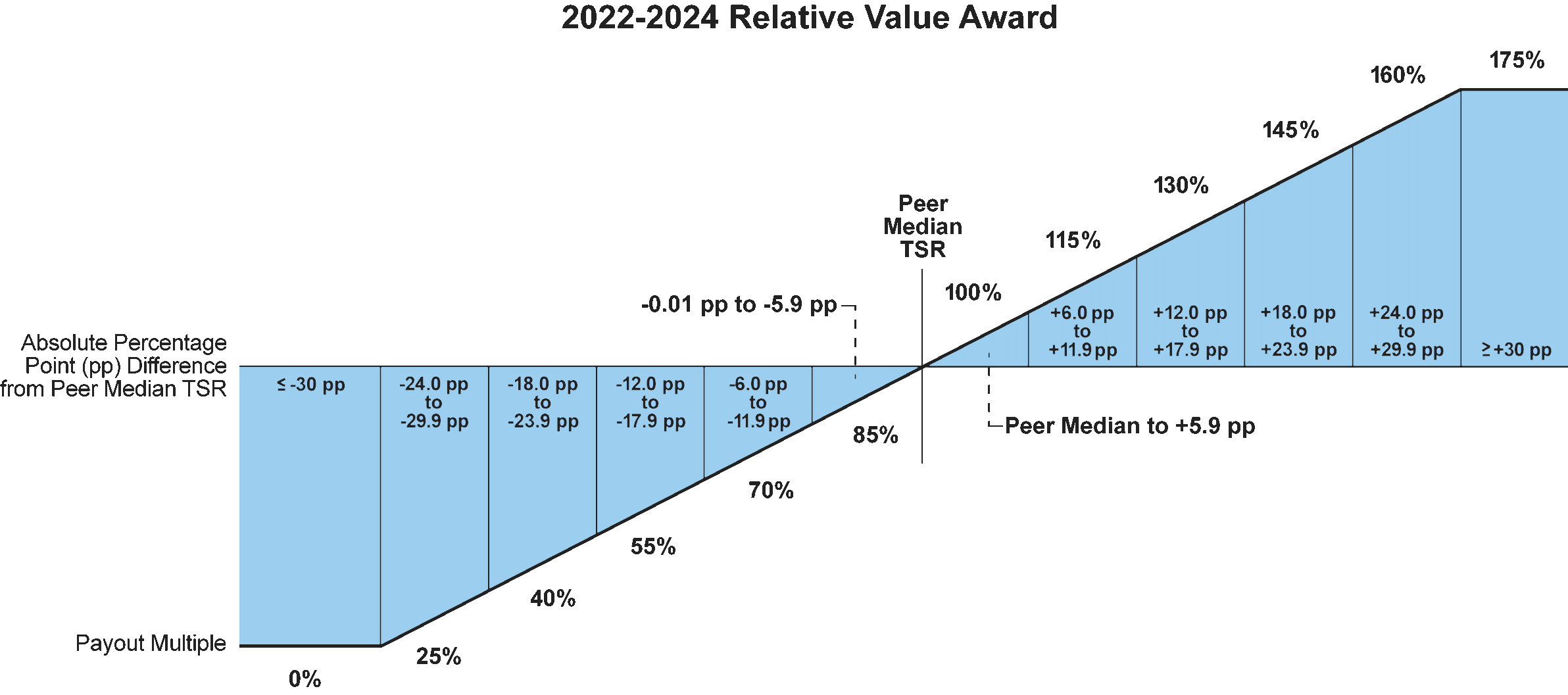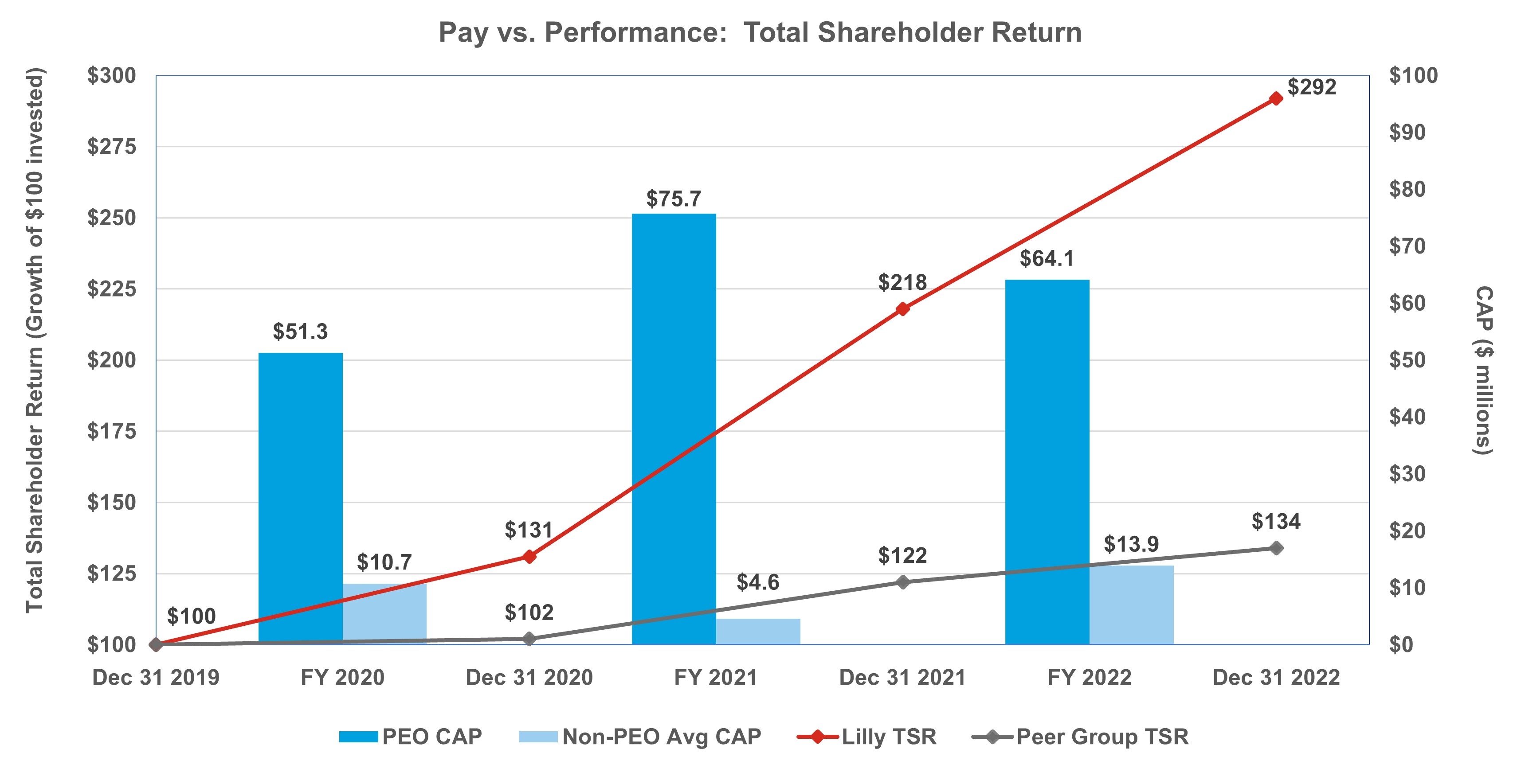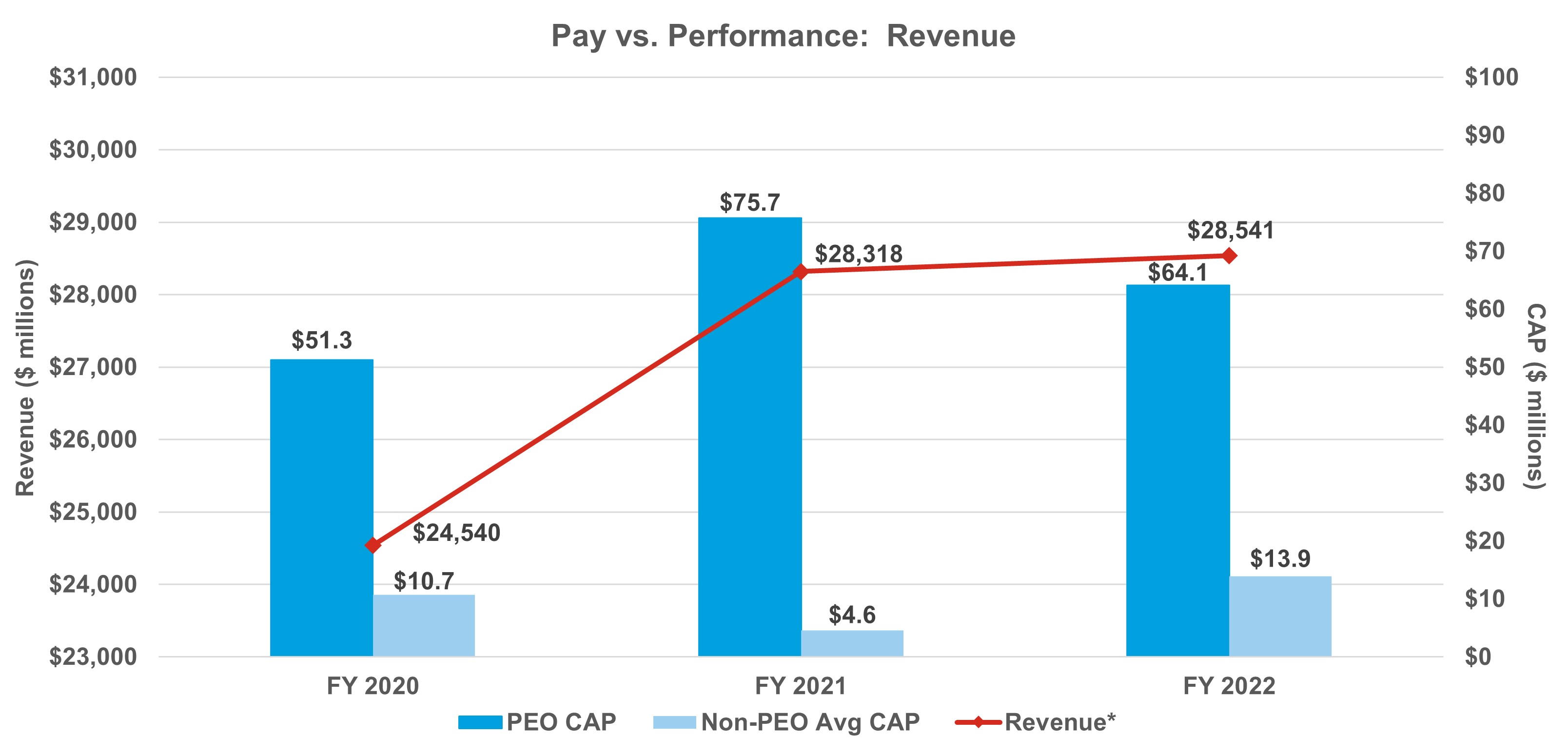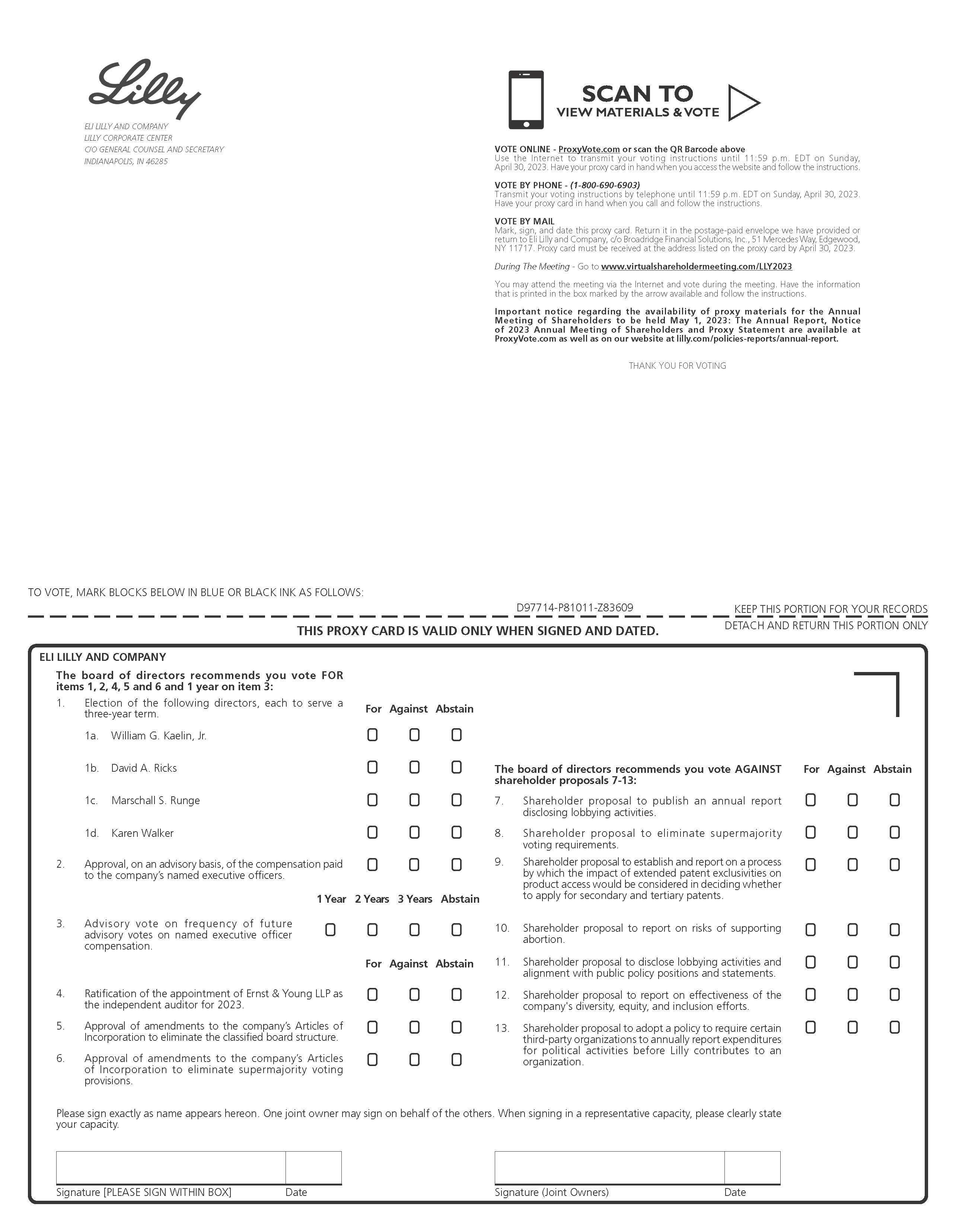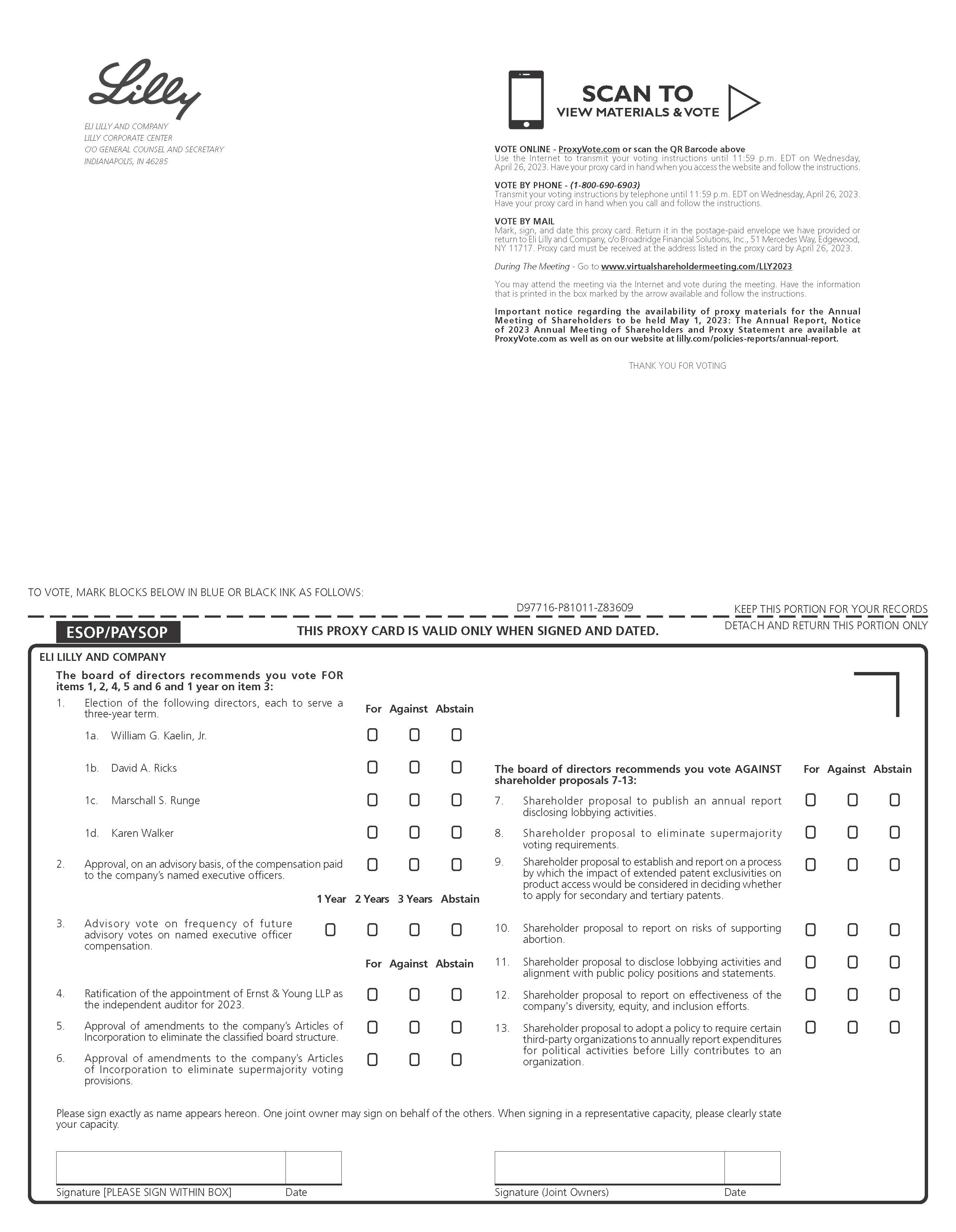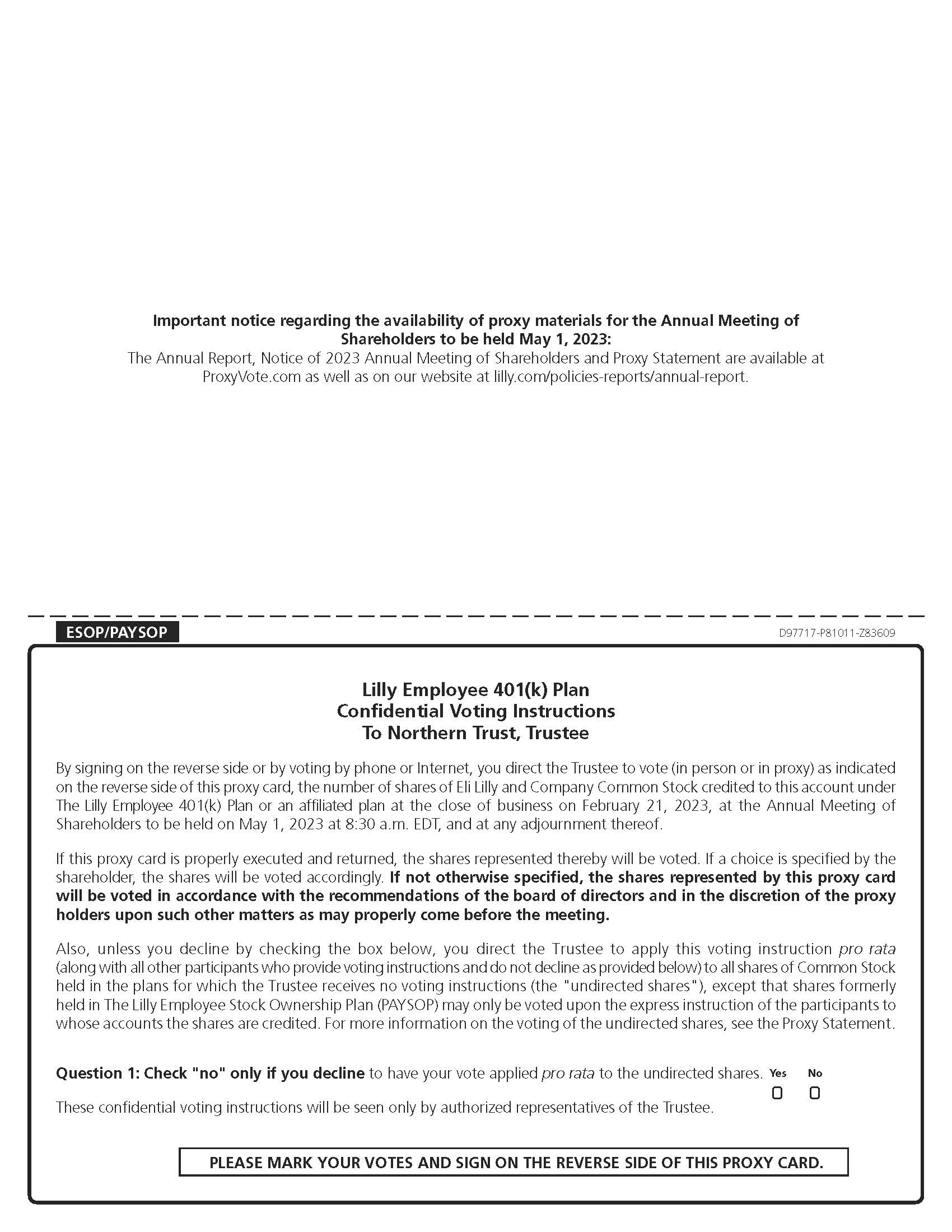0000059478DEF 14AFALSE00000594782022-01-012022-12-310000059478lly:AshkenaziMemberecd:NonPeoNeoMember2022-01-012022-12-31iso4217:USDxbrli:shares0000059478ecd:NonPeoNeoMember2022-01-012022-12-31xbrli:pureiso4217:USD00000594782021-01-012021-12-3100000594782020-01-012020-12-310000059478lly:AdjustmentEquityMemberecd:PeoMember2022-01-012022-12-310000059478lly:AdjustmentChangeInPensionValueMemberecd:PeoMember2022-01-012022-12-310000059478lly:AdjustmentChangeInYearEndValueOfPriorYearsUnvestedAwardsPlusChangeInFairValueOfPriorYearsVestedAwardsMemberecd:PeoMember2022-01-012022-12-310000059478lly:AdjustmentPensionServiceCostMemberecd:PeoMember2022-01-012022-12-310000059478lly:AdjustmentEquityMemberecd:PeoMember2021-01-012021-12-310000059478lly:AdjustmentChangeInPensionValueMemberecd:PeoMember2021-01-012021-12-310000059478lly:AdjustmentChangeInYearEndValueOfPriorYearsUnvestedAwardsPlusChangeInFairValueOfPriorYearsVestedAwardsMemberecd:PeoMember2021-01-012021-12-310000059478lly:AdjustmentPensionServiceCostMemberecd:PeoMember2021-01-012021-12-310000059478lly:AdjustmentEquityMemberecd:PeoMember2020-01-012020-12-310000059478lly:AdjustmentChangeInPensionValueMemberecd:PeoMember2020-01-012020-12-310000059478lly:AdjustmentChangeInYearEndValueOfPriorYearsUnvestedAwardsPlusChangeInFairValueOfPriorYearsVestedAwardsMemberecd:PeoMember2020-01-012020-12-310000059478lly:AdjustmentPensionServiceCostMemberecd:PeoMember2020-01-012020-12-310000059478lly:AdjustmentEquityMemberecd:NonPeoNeoMember2022-01-012022-12-310000059478lly:AdjustmentChangeInPensionValueMemberecd:NonPeoNeoMember2022-01-012022-12-310000059478lly:AdjustmentChangeInYearEndValueOfPriorYearsUnvestedAwardsPlusChangeInFairValueOfPriorYearsVestedAwardsMemberecd:NonPeoNeoMember2022-01-012022-12-310000059478lly:AdjustmentPensionServiceCostMemberecd:NonPeoNeoMember2022-01-012022-12-310000059478lly:AdjustmentEquityMemberecd:NonPeoNeoMember2021-01-012021-12-310000059478lly:AdjustmentChangeInPensionValueMemberecd:NonPeoNeoMember2021-01-012021-12-310000059478lly:AdjustmentChangeInYearEndValueOfPriorYearsUnvestedAwardsPlusChangeInFairValueOfPriorYearsVestedAwardsMemberecd:NonPeoNeoMember2021-01-012021-12-310000059478lly:AdjustmentPensionServiceCostMemberecd:NonPeoNeoMember2021-01-012021-12-310000059478lly:AdjustmentEquityMemberecd:NonPeoNeoMember2020-01-012020-12-310000059478lly:AdjustmentChangeInPensionValueMemberecd:NonPeoNeoMember2020-01-012020-12-310000059478lly:AdjustmentChangeInYearEndValueOfPriorYearsUnvestedAwardsPlusChangeInFairValueOfPriorYearsVestedAwardsMemberecd:NonPeoNeoMember2020-01-012020-12-310000059478lly:AdjustmentPensionServiceCostMemberecd:NonPeoNeoMember2020-01-012020-12-31000005947812022-01-012022-12-31000005947822022-01-012022-12-31000005947832022-01-012022-12-31000005947822021-01-012021-12-31
UNITED STATES
SECURITIES AND EXCHANGE COMMISSION
Washington, D.C. 20549
SCHEDULE 14A
Proxy Statement Pursuant to Section 14(a) of the
Securities Exchange Act of 1934
(Amendment No. )
Filed by the Registrant ☒
Filed by a Party other than the Registrant ☐
Check the appropriate box:
| | | | | | | | |
| o | | Preliminary Proxy Statement |
| o | | Confidential, for Use of the Commission Only (as permitted by Rule 14a-6(e)(2)) |
| x | | Definitive Proxy Statement |
| o | | Definitive Additional Materials |
| o | | Soliciting Material Pursuant to §240.14a-12 |
| | |
ELI LILLY AND COMPANY |
| (Name of Registrant as Specified In Its Charter) |
| | |
| (Name of Person(s) Filing Proxy Statement, if other than the Registrant) |
| | | | | | | | | | | | | | |
Payment of Filing Fee (Check all boxes that apply): |
x | | No fee required |
o | | Fee paid previously with preliminary materials |
o | | Fee computed on table in exhibit required by Item 25(b) per Exchange Act Rules 14a-6(i)(1) and 0-11 |
Notice of 2023
Annual Meeting of Shareholders
and Proxy Statement

| | | | | |
Dear Fellow Shareholders, Thank you for your continued support of, and investment in, Eli Lilly and Company. We are proud of Lilly’s achievements in 2022. We made several key regulatory and pipeline advancements with the potential to help people with diabetes, immune disorders, neurodegenerative conditions, and cancer. In particular, we introduced an important new type 2 diabetes treatment and added new indications to currently marketed products. And finally, we worked hard to deliver value to you, our shareholders. We delivered strong total shareholder returns through December 31, 2022, in terms of both total share price appreciation and dividends. We also strengthened our initiatives in support of patients and communities, including collaborating to enhance sustainable access to affordable insulin in Africa, expanding our use of solar energy at global facilities, and partnering with UNICEF to help improve health outcomes for 10 million children and adolescents. Our board continues to prioritize meaningful engagement with our shareholders and other key stakeholders. Since our 2022 annual meeting, we have spoken with a number of investors on an array of subjects, including: drug pricing transparency and global access to our products; product quality and safety; key enterprise risks and environmental, social and governance topics. We appreciate the thoughtful and constructive feedback that we receive from our stakeholders. As a result of this input, and as in past years, the board is putting forward management proposals at the 2023 annual meeting of shareholders (the Annual Meeting) to eliminate the classified board structure and supermajority voting requirements in our articles of incorporation. | |
We remain committed to serving you and making life better for millions of people around the world. We look forward to welcoming you to the Annual Meeting. |
Sincerely,
| | | | | | | | | | | | | | |
| | | | |
David A. Ricks Chair, President and CEO | | Juan Luciano
Lead Independent Director |
Table of Contents
| | | | | | | | |
| Notice of 2023 Annual Meeting of Shareholders | |
| Proxy Statement Summary | |
Governance | |
| Director Qualifications | |
| Director Nominations | |
| Item 1 - Election of Directors | |
| Working Dynamics | |
| Board Structure | |
| Governance Practices | |
| Board Alignment | |
| Communication with the Board of Directors | |
| Shareholder Engagement on Governance Issues | |
Ownership of Company Stock | |
Compensation | |
| Item 2 - Approval, on an Advisory Basis, of the Compensation Paid to the Company’s Named Executive Officers | |
| Talent and Compensation Committee Matters | |
| Compensation Discussion and Analysis | |
| Executive Compensation | |
| CEO Pay Ratio | |
| Pay versus Performance | |
| Item 3 - Advisory Vote on Frequency of Future Advisory Votes on Named Executive Officer Compensation | |
| Audit Matters | |
| Item 4 - Ratification of the Appointment of the Independent Auditor | |
| Management Proposals | |
| Item 5 - Proposal to Amend the Company’s Articles of Incorporation to Eliminate the Classified Board Structure | |
| Item 6 - Proposal to Amend the Company’s Articles of Incorporation to Eliminate Supermajority Voting Provisions | |
| Shareholder Proposals | |
| Item 7 - Proposal to Publish an Annual Report Disclosing Lobbying Activities | |
| | | | | | | | |
| Item 8 - Proposal to Eliminate Supermajority Voting Requirements | |
| Item 9 - Proposal to Establish and Report on a Process by which the Impact of Extended Patent Exclusivities on Product Access Would be Considered in Deciding Whether to Apply for Secondary and Tertiary Patents | |
| Item 10 - Proposal to Report on Risks of Supporting Abortion | |
| Item 11 - Proposal to Disclose Lobbying Activities and Alignment with Public Policy Positions and Statements | |
| Item 12 - Proposal to Report on Effectiveness of the Company’s Diversity, Equity, and Inclusion Efforts | |
| Item 13 - Proposal to Adopt a Policy to Require Certain Third-Party Organizations to Annually Report Expenditures for Political Activities before Lilly Contributes to an Organization | |
| Other Information | |
| Meeting and Voting Logistics | |
| Other Matters | |
Appendix A - Summary of Adjustments Related to the Annual Cash Bonus and Performance Award | |
Appendix B - Proposed Amendments to the Company’s Articles of Incorporation | |
| | |
| Frequently Referenced Topics | |
| |
| | |
Board Diversity | |
Board Skills Matrix | |
Board and Committee Oversight of: | |
ESG | |
Cybersecurity | |
Human Capital Management | |
Political Activities | |
Lead Independent Director Duties | |
Share Ownership and Retention Guidelines | |
Compensation Recovery Policy (Clawback) | |
Hedging and Pledging Restrictions | |
| Transactions with Related Persons | |
| | |
| | |
This proxy statement contains forward-looking statements, including those regarding our emissions, diversity and inclusion and other sustainability commitments and goals; our strategies and financial performance; our development of new products and technologies, and other statements that are not historical fact, and actual results could differ materially. Risks that could cause actual results to differ are set forth in the “Risk Factors” section of, and elsewhere in, our 2022 Annual Report on Form 10-K and other filings with the Securities and Exchange Commission. All forward-looking statements are based on management estimates, projections, and assumptions as of the date hereof, and we undertake no obligation to update any such statements. Certain documents and information referenced in this proxy statement are available on our website. However, we are not including the information contained on our website, or any information that may be accessed by links on our website, as part of, or incorporating it by reference into, this proxy statement.
Notice of 2023 Annual Meeting of Shareholders
| | | | | |
| ITEMS OF BUSINESS |
| Item 1 | Election of each of the four director nominees to serve three-year terms |
| Item 2 | Approval, on an advisory basis, of the compensation paid to the company’s named executive officers |
| Item 3 | Advisory vote on frequency of future advisory votes on named executive officer compensation |
| Item 4 | Ratification of the appointment of Ernst & Young LLP as the independent auditor for 2023 |
| Item 5 | Approval of amendments to the company’s articles of incorporation to eliminate the classified board structure |
| Item 6 | Approval of amendments to the company’s articles of incorporation to eliminate supermajority voting provisions |
| Item 7 | Shareholder proposal to publish an annual report disclosing lobbying activities |
| Item 8 | Shareholder proposal to eliminate supermajority voting requirements |
| Item 9 | Shareholder proposal to establish and report on a process by which the impact of extended patent exclusivities on product access would be considered in deciding whether to apply for secondary and tertiary patents |
| Item 10 | Shareholder proposal to report on risks of supporting abortion |
| Item 11 | Shareholder proposal to disclose lobbying activities and alignment with public policy positions and statements |
| Item 12 | Shareholder proposal to report on effectiveness of the company’s diversity, equity, and inclusion efforts |
| Item 13 | Shareholder proposal to adopt a policy to require certain third-party organizations to annually report expenditures for political activities before Lilly contributes to an organization |
| | | | | | | | | | | |
| ADMISSION | | WHEN 8:30 a.m. EDT Monday, May 1, 2023 |
The 2023 annual meeting of shareholders (the Annual Meeting) of Eli Lilly and Company will be held virtually via live webcast. The webcast is designed to provide shareholders the opportunity to participate virtually to facilitate shareholder attendance and to provide a consistent experience to all shareholders, regardless of location. You will be able to attend the Annual Meeting, vote, and submit questions virtually via live webcast by visiting virtualshareholdersmeeting.com/LLY2023. To be admitted to the Annual Meeting webcast, you must enter the 16-digit control number found on the proxy card, voting instruction form, or notice you received. For further information on Annual Meeting logistics, see the section titled “Other Information—Meeting and Voting Logistics.” This proxy statement is dated March 17, 2023. We mailed a notice of internet availability of proxy materials on or about that date to our shareholders of record as of February 21, 2023 (other than those who previously requested electronic or paper delivery of our proxy materials and certain participants in The Lilly Employee 401(k) plan (401(k) Plan)). | |
| WHERE Virtually at www.virtualshareholder meeting.com/LLY2023 |
| RECORD DATE February 21, 2023 |
| YOUR VOTE IS IMPORTANT | |
| Every shareholder vote is important. Even if you plan to attend the Annual Meeting, we encourage you to vote promptly online, by telephone, or, if you received or requested paper copies of your proxy materials, by signing, dating, and returning your proxy card or voting instruction form by mail, so that a quorum may be represented at the meeting. |
By order of the Board of Directors,
Anat Hakim
Executive Vice President, General Counsel and Secretary
March 17, 2023
| | | | | | | | |
IMPORTANT NOTICE REGARDING THE AVAILABILITY OF PROXY MATERIALS FOR THE SHAREHOLDER MEETING TO BE HELD MAY 1, 2023: The annual report to shareholders and proxy statement are available at ProxyVote.com as well as on our website at lilly.com/policies-reports/annual-report. |
Proxy Statement Summary
Powered by Purpose
Our purpose is to unite caring with discovery to create medicines that make life better for people around the world. This purpose fuels every aspect of our business, as we aspire to:
Discover first or best-in-class molecules from internal and external sources that address significant unmet needs by integrating disease understanding with innovative scientific capabilities;
Develop molecules faster than competitors by executing clinical plans that maximize the human and economic value of the medicines we launch;
Reach people around the world by creating volume-driven uptake and broad access to a safe and reliable supply of life-changing medicines;
Scale our business by prioritizing investments into medicines that can deliver the greatest value for customers and can drive long-term sustainable growth; and
Reinvest profits into our next wave of innovation and generate value for our investors.
Highlights of 2022 Performance
We continued to progress our strategy in 2022, focusing on four dimensions: operating performance, environmental, social and governance matters, our innovation pipeline and other business development, and shareholder return (both absolute and relative). See our Annual Report on Form 10-K for the fiscal year ended December 31, 2022, for more details.
| | | | | | | | | | | |
| Operating Performance |
$28.5
billion
in 2022 revenue | $6.90 earnings per share (EPS) in 2022 on a reported basis, up from $6.12 in 2021 | $7.94 EPS on a
non-GAAP basis in 2022 |
Reported results were prepared in accordance with U.S. generally accepted accounting principles (GAAP) and include all revenue and expenses recognized during the periods. A reconciliation of EPS on a reported basis to EPS on a non-GAAP basis is included in Appendix A. |
| | | | | | | | | | | | | | | | | |
| Environmental, Social, and Governance | |
Innovative collaboration to deliver high-quality, affordable human and analogue insulin to at | | New solar parking canopy in Fegersheim, France capable of producing approximately 4,200 megawatt-hours of electricity a year, progressing our 2030 goal to be carbon neutral in our own operations | Achieved an A- | |
least one million people living with type 1 and type 2 diabetes in low- to middle-income countries, most of which are in Africa | score for each of our climate and water 2022 CDP submissions, above the sector average |
|
|
| Racial Justice Pledge Progress From 2020 through 2022* |
30,000+
volunteer hours served by employees to advance racial justice initiatives since 2020 | $214.7M
increase in Black Business Enterprises spend; 150% increase over 2020 | 70+
apprentices from underrepresented groups trained for family sustaining jobs at Lilly without a four-year degree |
| | | | | | | | | | | | | | |
| Innovation Pipeline and Other Business Development |
| New Indications |
U.S. approval of Mounjaro (tirzepatide), the first and only GIP and GLP-1 receptor agonist, for the treatment of adults with type 2 diabetes | | U.S. approval of Retevmo (selpercatinib), the first and only RET inhibitor for adults with advanced or metastatic solid tumors with a RET gene fusion, regardless of type | |
In collaboration with Boehringer Ingelheim International GmbH, U.S. approval of a new indication for Jardiance (empagliflozin) to treat adults with heart failure regardless of left ventricular ejection fraction |
In collaboration with Incyte Corporation, U.S. approval of Olumiant (baricitinib) as a first-in-disease systemic treatment for adults with severe alopecia areata |
| |
| Key Data Readouts |
We announced several key data readouts in 2022, including: •Positive results from tirzepatide’s Phase III SURMOUNT-1 study evaluating the efficacy and safety of tirzepatide compared to placebo in adults with obesity. We received U.S. FDA Fast Track designation and initiated a rolling submission that will be based primarily on these results and those of SURMOUNT-2, which is expected to complete in the first half of 2023; •Positive results from two studies of lebrikizumab’s Phase III programs evaluating the efficacy and safety of lebrikizumab in people with moderate-to-severe atopic dermatitis through one year of treatment; •Positive results for Jardiance (empagliflozin) in the Phase III EMPA-KIDNEY study evaluating efficacy and safety compared to placebo for the treatment of patients with chronic kidney disease; and •Updated data from the monarchE Phase III study evaluating the efficacy and safety of Verzenio (abemaciclib) in combination with standard endocrine therapy for the treatment of hormone receptor-positive (HR+), human epidermal growth factor receptor 2-negative (HER2-), node-positive, high- risk early breast cancer. We submitted an application to the FDA to expand the adjuvant indication based on these data. |
| Other Business Development Activities |
Acquisition: acquired Akouos, Inc. to accelerate gene therapies that aim to restore, improve, and preserve hearing for patients living with disabling hearing loss worldwide. | 15+ acquisitions, license agreements, and research collaborations in 2022 |
License: expanded our licensing and collaboration agreement with ProQR to leverage ProQR’s Axiomer RNA editing platform technology to include additional targets beyond the liver and the nervous system, which were the focus of the original agreement from September 2021. |
| | | | | | | | | | | | | | | | | | | | | | | | | | | | | | | | | | | | | | | | | | | | | | | | | | | | | | | | | | | |
| Shareholder Return |
34% 2022 Total Shareholder Return | Consistently Exceeded Compensation Peer Group and S&P 500
in Total Shareholder Return
in 2022 and the three- and five-year periods shown below |
| TSR takes into account both share price appreciation and dividends. Any dividends paid by a given company are assumed to be reinvested in the company’s stock on a quarterly basis. |
Health, Safety and Welfare
As the COVID-19 pandemic has evolved, we have remained focused on protecting the health, safety, and well-being of our employees; supporting the medical system and our communities; and affordability of and access to our medicines.
Maintaining Supplies of and Access to Lilly Medicines
Throughout 2022, we continued our efforts to protect our manufacturing processes and remained in close communication with key suppliers regarding logistics, transportation, and supplies of raw materials. While we have faced challenges, and expect to continue to face challenges, meeting strong demand for our incretin products, we expect significant additional manufacturing capacity will become operational starting in 2023 and continuing over the next several years as part of our ongoing efforts to meet the significant demand for our incretin medicines.
We also continued patient support programs to ensure patients maintained affordable access to their medications and adjusted how we operate to offer innovative solutions to our customers. We remain committed to working with stakeholders in healthcare systems to help patients get the medicines they need, including through our Insulin Value Program, which allows anyone with commercial insurance and those without insurance to fill their monthly prescription of Lilly insulin for $35, as well as our other access and affordability initiatives.
| | | | | | | | | | | | | | | | | |
| | Insulin Price Reduction Announcement | | | |
| | | | |
| On March 1, 2023, we announced upcoming list price reductions of 70% for our most commonly prescribed insulins and an expansion of our Insulin Value Program that caps patient out-of-pocket costs at $35 or less per month. Lilly is taking these actions to make it easier to access Lilly insulin and help Americans who may have difficulty navigating a complex healthcare system that may keep them from getting affordable insulin. | |
Working to Ensure Diversity in Clinical Trials
We continue to identify and address barriers to fair access and representation of communities in our clinical research to help develop innovative medicines. Diverse representation in clinical trials is critical to helping our researchers develop medicines that will be as effective as possible for patients who use them. We are working to ensure trial participants match the composition of the patient population that might use the trial’s medicine by selecting diverse investigators and collaborating with external groups to identify and implement solutions. We collaborate with patients, patient advocacy groups, regulatory agencies, health care professionals and community
organizations to identify and implement solutions that will result in diverse representation, improve health equity and generate evidence to support better patient outcomes.
Keeping Our Employees Safe and Healthy
Board Leadership and Composition Highlights
Director Nominee Snapshot
| | | | | | | | | | | | | | | | | | | | | | | |
| Name | Age | Director Since | Other Public Boards | Principal Occupation | | Committee Membership |
| William G. Kaelin, Jr., M.D. Independent Director | 65 | 2012 | 0 | Sidney Farber professor of Medicine, Harvard Medical School; Professor, Dana-Farber Cancer Institute and Brigham and Women’s Hospital; Investigator, Howard Hughes Medical Institute |  Science & Technology Science & Technology
 Directors & Corporate Governance Directors & Corporate Governance |
| David A. Ricks Chair of the Board | 55 | 2017 | 1 | Chair, President and Chief Executive Officer, Eli Lilly and Company | None |
| Marschall S. Runge, M.D., Ph.D. Independent Director | 68 | 2013 | 0 | CEO, Michigan Medicine, Executive Vice President for Medical Affairs and Dean, Medical School, University of Michigan |  Ethics & Compliance Ethics & Compliance
 Science & Technology Science & Technology |
| Karen Walker Independent Director | 61 | 2018 | 1 | Operating Partner, The Goldman Sachs Group, Inc. |  Talent and Compensation Talent and Compensation
 Audit Audit |
| | | | | | | | | | | | | | |
| | Director Retirement | | |
| | | |
| Jackson P. Tai, who joined the board in 2013 and serves on the Audit Committee and the Directors and Corporate Governance Committee, will retire from the board following the Annual Meeting pursuant to our retirement policy. |
Board Leadership and Structure
| | | | | |
•Lead Independent Director: We have a strong lead independent director empowered with clearly defined responsibilities. •Independent Committees: All standing board committees are composed solely of independent directors and led by independent committee chairs. •Executive Sessions: Our board holds executive sessions of the independent directors that are presided over by the lead independent director at every regular board meeting. •Access to Management & Advisors: Our independent directors actively engage in board meetings, have direct access to management, and, along with our board committees, have discretion to hire independent advisors at the company’s expense. •Conflict of Interest Management: Our conflict of interest policy requires disclosures of potential conflicts to Lilly and clarifies when Lilly board service must be disclosed to others. •CEO Selection and Compensation: Our independent directors lead the board’s process for selecting the CEO. Our Talent and Compensation Committee (and, in the case of our CEO, | Information as of the date of this proxy statement. |
| in consultation with other independent directors and our external compensation consultant) establishes the compensation for our CEO and other executive officers. |
•Refreshment: We are committed to maintaining an active and insightful board and seek to balance continuity of experience with fresh perspectives. |
•Robust Annual Assessment: Our board conducts a robust annual assessment of its performance led by the lead independent director, including an annual assessment of each director. These assessments help provide the board with valuable perspectives to drive effectiveness and leadership. |
Strategy and Risk Oversight
•Strategy: Our board approves and actively oversees our corporate long-term strategy. Our board and board committee agendas are structured to engage our directors in informed reviews of strategic and forward-looking issues, as well as in constructive challenges to management initiatives and programs.
•Code of Conduct: Our code of business conduct reflects principles that are consistent with our company values of integrity, excellence, and respect for people, which are stated in The Red Book. This code applies to our board and all employees worldwide and is reviewed and approved annually by the board. In 2022 we revised The Red Book training to update our Global Conduct in the Workplace procedure to continue to help ensure that we maintain a respectful, safe, inclusive, and professional workplace. We have a supplemental code of conduct for our CEO and all members of financial management, in recognition of their unique responsibilities to ensure proper accounting, financial reporting, internal controls, and financial stewardship.
•Corporate Governance: The charters of our board committees clearly establish the committees’ respective roles and responsibilities.
•Compliance Program and Enterprise Risk Reviews: Our board reviews the overall state of our compliance program at least annually and regularly reviews our enterprise-level risks. Our Audit Committee oversees the process by which we identify and create mitigation plans for enterprise-level risks. See “Governance Practices—Board Oversight” for additional information.
Board Oversight of Certain Key Areas
| | | | | | | | | | | | | | | | | | | | | | | | | | | | | | | | | | | | | | | | | | | | |
| | | | | | | | | | | | | | |
| | | | | | | | | | |
| Cybersecurity | | Political Activity | | Environment | | DEI |
| Our board and Audit Committee receive regular presentations on cybersecurity and information technology as part of their oversight of enterprise-level risks; in addition to regular presentations, management promptly updates our board regarding significant threats or incidents as they arise, as well as changes to the broader cybersecurity landscape. | | Our board oversees our political expenditures and lobbying activities. Directors receive regular updates on public policy issues and on the company’s political corporate activity. The board also receives semi-annual updates on political engagement, including information on the contributions made by LillyPAC and the company, as well as trade association memberships. | | Our board, including its Directors and Corporate Governance Committee, oversees and maintains ongoing engagement on key climate and sustainability matters. | | Our board exercises active oversight over the overall talent management process, including human capital management strategies, corporate culture, and DEI programs. The board also oversees the work of its committees in connection with the board’s development of corporate policies and frameworks designed to attract, retain, engage, and develop a workforce that aligns with our values and mission. |
Shareholder Access & Engagement
Engagement Response
•In response to input from our shareholders and consistent with previous years, management is putting forth for consideration at the Annual Meeting proposals to amend our articles of incorporation to eliminate the classified board structure and to eliminate supermajority voting.
•In response to input from our shareholders, at our 2022 annual meeting, management put forth, and shareholders approved, amendments to our articles of incorporation and bylaws to permit shareholders to amend the company’s bylaws.
Proxy Access
•Our bylaws provide proxy access rights for shareholders holding at least three percent of our common stock for at least three years to
nominate to the board the greater of two directors or 20 percent of our board seats.
Board Accountability
•We have a majority voting standard and a resignation policy for the election of directors in uncontested elections.
•Shareholders have the ability to amend our bylaws.
•We do not have a shareholder rights plan (known as a “poison pill”).
•We have meaningful stock ownership and retention guidelines for our directors and executive officers to foster alignment with shareholders.
•We have an annual cap on director compensation.
Compensation
Compensation Practices of Interest
Shareholders strongly support our compensation practices. For each of the last five years, greater than 94 percent of shares cast voted in favor of our executive compensation programs.
| | | | | | | | | | | | | | | | | | | | | | | |
| Pay for Performance Philosophy | | Compensation Policies | | What We Don’t Do |
|  Our compensation programs are designed to align executive pay with shareholder interests and link pay to performance through a blend of short- and long-term performance measures. Our compensation programs are designed to align executive pay with shareholder interests and link pay to performance through a blend of short- and long-term performance measures. Our Talent and Compensation Committee annually reviews our compensation programs to help ensure they provide incentives to deliver long-term, sustainable business results while discouraging excessive risk-taking and other adverse behaviors. Our Talent and Compensation Committee annually reviews our compensation programs to help ensure they provide incentives to deliver long-term, sustainable business results while discouraging excessive risk-taking and other adverse behaviors. | | |  We have robust stock ownership and retention guidelines for executive officers. We have robust stock ownership and retention guidelines for executive officers. Executive officers are prohibited from hedging or pledging their company stock. Executive officers are prohibited from hedging or pledging their company stock. We have a compensation recovery or “clawback” policy that applies to all executives and covers a wide range of misconduct. We have a compensation recovery or “clawback” policy that applies to all executives and covers a wide range of misconduct. We have a restrictive policy on perquisites. We have a restrictive policy on perquisites. We have double trigger change-in-control provisions in severance plans. We have double trigger change-in-control provisions in severance plans. | | |  We don’t enter into employment agreements with any of our executive officers. We don’t enter into employment agreements with any of our executive officers. We don’t provide “top hat” retirement plans. We don’t provide “top hat” retirement plans.  We don’t provide tax gross-ups to executive officers (except for limited gross-ups related to international assignments). We don’t provide tax gross-ups to executive officers (except for limited gross-ups related to international assignments). |
| | | | |
Executive Compensation Summary for 2022
At the end of 2022, the total target compensation for our named executive officers was comparable to the median of the company’s peer group. Bonus and equity payouts exceeded target, consistent with strong company performance over the respective performance periods.
Pay for Performance
As described in the Compensation Discussion and Analysis (CD&A), we link our incentive pay programs to a mix of measures on three dimensions of company performance: operating performance; progress with our innovation pipeline; and shareholder return (both absolute and relative). The Talent and Compensation Committee adjusts reported EPS results to eliminate the distorting effect of certain unusual items on incentive compensation performance measures.
The summary below highlights how our incentive pay programs are intended to align with company performance. Please also see Appendix A for adjustments made to revenue and EPS for incentive compensation programs. | | | | | |
•Bonus Plan Result: In 2022, the company exceeded its annual cash bonus target for revenue and nearly achieved its target for EPS. We also made significant pipeline advances. For purposes of the bonus, the Talent and Compensation Committee adjusted revenue and adjusted non-GAAP EPS to exclude estimated savings from certain discrete and unplanned performance items. See the CD&A for further discussion of the Eli Lilly and Company Bonus Plan (Bonus Plan). | 1.20 Bonus Plan Multiple |
•2021-2023 Performance Award (PA) Result: We exceeded the two-year EPS growth target set for our PA program. The PA target is based on expected EPS growth of peer companies over a two-year period. As a result of exceeding the EPS growth target set for our PA program, the PA payout was above target. See the CD&A for further discussion on the PA program. | 140% 2021-2023 PA Payout |
•2020-2022 Shareholder Value Award (SVA) Result: Our total stock price growth exceeded the target range in our SVA program, which is based on expected large-cap company returns over a three-year period. This performance resulted in a SVA payout above target. See the CD&A for further discussion on the SVA program. | 175% 2020-2022 SVA Payout |
| | | | | |
•2020-2022 Relative Value Award (RVA) Result: The RVA measures Lilly’s relative total shareholder return (TSR) against its peers. Lilly’s TSR performance exceeded the peer median TSR for the 2020-2022 performance period resulting in a payout above target. See the CD&A for further discussion on the RVA program. | 175% 2020-2022 RVA Payout |
Voting
How to Vote
| | | | | | | | | | | |
| | | |
| ONLINE | BY TELEPHONE | BY MAIL | AT THE MEETING |
| Visit the website listed on your notice, proxy card, or voting instruction form | Call 1-800-690-6903 and follow the instructions provided | If you received or requested paper copies of your proxy materials, sign, date, and return your proxy card or voting instruction form | Attend the Annual Meeting, online by live webcast at virtualshareholdermeeting.com/LLY2023 on Monday, May 1, 2023, at 8:30 a.m. EDT |
Vote Early: Even if you plan to attend the Annual Meeting, we encourage you to vote prior to the meeting, either online, by telephone or by mail.
Beneficial Shareholders: Shareholders who hold their shares beneficially through an institutional holder of record, such as a broker or bank (sometimes referred to as holding shares in street name), will receive voting instructions from that holder of record. If you do not provide voting instructions to the holder of record, your shares will not be voted on any proposal on which the broker does not have discretionary authority to vote. See “Other Information—Meeting and Voting Logistics—How to Vote” for more information. Voting Deadlines: You may vote your shares prior to the Annual Meeting until 11:59 p.m. EDT on April 30, 2023, online or by telephone. If you are voting by mail, your marked, signed, and dated proxy card must be received by April 30, 2023. Shareholders who hold their shares in the 401(k) Plan must vote in advance of the Annual Meeting, by April 26, 2023, so the plan trustee can vote their shares accordingly. See “Other Information—Meeting and Voting Logistics—How to Vote” for more information. Voting Matters and Board Recommendations
| | | | | | | | | | | | | | |
| Voting Matter | Required Vote | Board Vote Recommendation | See Page |
| Item 1 | Election of four directors to serve three-year terms | Majority of votes cast (for each nominee) | FOR EACH NOMINEE | |
| Item 2 | Advisory vote on compensation paid to named executive officers | Majority of votes cast | FOR | |
| Item 3 | Advisory vote on frequency of future advisory votes on named executive officer compensation | Majority of votes cast | FOR | |
| Item 4 | Ratification of the appointment of the independent auditor | Majority of votes cast | FOR | |
| Item 5 | Proposal to amend the company’s articles of incorporation to eliminate the classified board structure | 80% of outstanding shares | FOR | |
| | | | | | | | | | | | | | |
| Voting Matter | Required Vote | Board Vote Recommendation | See Page |
| Item 6 | Proposal to amend the company’s articles of incorporation to eliminate supermajority voting provisions | 80% of outstanding shares | FOR | |
| Item 7 | Shareholder proposal to publish an annual report disclosing lobbying activities | Majority of votes cast | AGAINST | |
| Item 8 | Shareholder proposal to eliminate supermajority voting requirements | Majority of votes cast | AGAINST | |
| Item 9 | Shareholder proposal to establish and report on a process by which the impact of extended patent exclusivities on product access would be considered in deciding whether to apply for secondary and tertiary patents | Majority of votes cast | AGAINST | |
| Item 10 | Shareholder proposal to report on risks of supporting abortion | Majority of votes cast | AGAINST | |
| Item 11 | Shareholder proposal to disclose lobbying activities and alignment with public policy positions and statements | Majority of votes cast | AGAINST | |
| Item 12 | Shareholder proposal to report on effectiveness of the company’s diversity, equity, and inclusion efforts | Majority of votes cast | AGAINST | |
| Item 13 | Shareholder proposal to adopt a policy to require certain third-party organizations to annually report expenditures for political activities before Lilly contributes to an organization | Majority of votes cast | AGAINST | |
Governance
How We Build an Effective Board
| | | | | |
Our directors are elected by the company’s shareholders to oversee the actions and results of the company’s management. The Directors and Corporate Governance Committee, together with our lead independent director, regularly assesses the effectiveness of the board to ensure that directors reflect the skill sets, experiences, diverse viewpoints and characteristics necessary to lead our complex and evolving business. Execution of our robust assessment and refreshment process, guided by key governance guidelines, has resulted in a mix of directors that balance experienced institutional knowledge and fresh perspectives, and reflect a broad range of backgrounds and viewpoints. | |
Director Qualifications
Character: Our board members should possess the personal attributes necessary to be an effective director, including unquestioned integrity, sound judgment, a collaborative spirit, and commitment to our company, our shareholders, and other constituencies.
Independence: We believe there should always be a substantial majority (75 percent or more) of independent directors. The board annually determines the independence of directors based on a review and recommendation by the Directors and Corporate Governance Committee. No director is considered independent unless the board has affirmatively determined that he or she has no material relationship with the company, either directly or as a partner, shareholder, or officer of an organization that has a relationship with the company. In assessing whether a director has no material relationship with Lilly, the board of directors also considers any persons or organizations with which the director has an affiliation. Material relationships can include commercial, industrial, banking, consulting, legal, accounting, charitable, and familial relationships, among others. To evaluate the materiality of any such relationship, the board has adopted categorical independence standards consistent with the New York Stock Exchange (NYSE) listing standards.
Lilly’s process for determining director independence is set forth in our Standards for Director Independence, which can be found on our website at lilly.com/leadership/governance, along with our corporate governance guidelines.
On the recommendation of the Directors and Corporate Governance Committee, the board determined that each current non-employee director is independent. The board also determined that the members of our Audit and Talent and Compensation Committees meet the heightened independence standards applicable to those committees. The board determined that none of the current non-employee directors has had during the last three years (i) any of the relationships identified in the company’s categorical independence standards or (ii) any other material relationship with the company that would compromise his or her independence.
| | | | | |
| In making its independence determinations, the board considered that Ms. Walker is affiliated with the Goldman Sachs Group, which the company may use for advisory, investment banking or similar services from time to time. In addition, the board considered that some of the current non-employee directors are affiliated with companies or entities to which the company sold products or made payments, or from which the company purchased products or services during the year. Drs. Baicker, Kaelin, Hedley, and Runge are employed at medical or academic institutions with which the company engages in clinical research, |
provides research grants, and/or engages in commercial transactions in the ordinary course of business. Mr. Luciano is employed by Archer-Daniels-Midland Company. The company engages in routine business transactions with these organizations. Aggregate payments to or from each such organization, in each of the last three fiscal years, did not exceed the greater of $1 million or 2 percent of that organization’s consolidated gross revenues in a single fiscal year. In reviewing these relationships, the board considered all relevant factors, including:
•whether transactions were entered into at arm’s length in the normal course of business and, to the extent they were commercial relationships, had standard commercial terms; and
•whether any director had any direct business relationships with the company or received any direct personal benefit from any of these transactions, relationships, or arrangements.
| | | | | |
Diversity: The board strives to achieve diversity in the broadest sense, including persons diverse in geography, gender, ethnicity, age, and experience. Although the board does not establish specific diversity goals or have a standalone diversity policy, the board’s overall diversity is an important consideration in the director selection and nomination process. The Directors and Corporate Governance Committee assesses the effectiveness of board diversity efforts in connection with the annual nomination process as well as in new director searches. The company’s current 13 directors range in age from 50 to 72 and include five women and six minority group members (MGM). | |
| | | | | | | | |
7.8 Years Average Director Tenure | | Tenure: Our director composition reflects a mix of tenure on the board, which provides an effective balance of historical perspective and an understanding of the evolution of our business with fresh perspectives and insights. Mr. Tai, who joined the board in 2013, will retire from the board following the Annual Meeting. |
| | | | | | | | | | | | | | |
| | Director Governance Spotlight | | |
| | | |
| ü | Resignation Policy - In an uncontested election, directors are elected by a majority of votes cast. An incumbent nominee who fails to receive a greater number of votes “for” than “against” his or her election will tender his or her resignation from the board following the certification of the shareholder vote. The board, on recommendation of the Directors and Corporate Governance Committee, will decide whether to accept the resignation. The company will promptly disclose the board’s decision, including, if applicable, the reasons the board rejected the resignation. | |
| | | | |
| ü | Director Retirement Policy - Non-employee directors must retire from the board no later than the date of the annual meeting that follows their seventy-second birthday, although the Directors and Corporate Governance Committee may recommend exceptions to this policy. The Directors and Corporate Governance Committee, with input from all board members, also considers the contributions of the individual directors annually, with a more robust assessment at least every three years when considering whether to nominate directors to new three-year terms. The company has not adopted term limits because the board believes that the company benefits from having a mix of longer- and shorter-tenured members of the board. | |
| | | | |
| ü | Other Board Service Policy - To ensure proper engagement from our directors and effective functioning of our board, we have instituted certain limitations on service on the boards of other companies. In general, no director may serve on more than three other public company boards. No director that is an executive officer of a public company may serve on more than two public company boards (inclusive of Lilly). The Directors and Corporate Governance Committee may approve exceptions if it determines that the additional service will not impair the director’s effectiveness on the Lilly board. In addition, no director serving on the Audit Committee may serve simultaneously on the audit committee of more than two other public companies without the prior approval of the board. | |
| | | | |
| ü | Confidentiality Policy - The board has adopted a Confidentiality Policy, applicable to all members of the board. The policy prohibits a director from sharing confidential information obtained in his or her role as a director with any third party except under limited circumstances where the director is seeking legal advice or is required by law to disclose information. The Confidentiality Policy can be viewed on the company’s website at: lilly.com/leadership/governance. | |
| | | | |
Director Skills:
Our directors are responsible for overseeing the company’s business consistent with their fiduciary duties. This significant responsibility requires highly skilled individuals with various qualities, attributes, and professional experiences. We believe the board is well-rounded, with a balance of relevant perspectives and experience, as illustrated in the following chart.
Director Experience:
Set forth below is information, as of February 21, 2023, regarding our directors and director nominees. We have provided the most relevant experiences, qualifications, attributes, and skills that led to the conclusion that each director or director nominee should serve as a director in light of our business and operations.
No family relationship exists among any of our directors, director nominees, or executive officers. To the best of our knowledge, there are no pending material legal proceedings in which any of our directors or nominees for director, or any of their associates, is a party adverse to us or any of our affiliates, or has a material interest adverse to us or any of our affiliates. Additionally, to the best of our knowledge, there have been no events under
any bankruptcy laws, no criminal proceedings and no judgments, sanctions, or injunctions during the past 10 years that are material to the evaluation of the ability or integrity of any of our directors or nominees for director. There is no arrangement or understanding between any director or director nominee and any other person pursuant to which he or she was or is to be selected as a director or director nominee.
Under our articles of incorporation, the board is divided into three classes with approximately one-third of the directors standing for election each year.
Class of 2023
| | | | | | | | | | | | | | |
| | | KEY EXPERIENCE AND QUALIFICATIONS | |
| | | |
| | |
| | Dr. Kaelin is a world-renowned Nobel Laureate, scientist, academician, and physician who provides valuable leadership to the board’s oversight of Lilly’s discovery and development programs. His groundbreaking research and discovery talents provide an important resource to management, including in his role as the Chair of the board’s Science and Technology Committee. •With decades of preeminent medical research experience, particularly within oncology, Dr. Kaelin offers a valuable perspective to the board and management in pharmaceutical research and discovery in key therapeutic areas. •Dr. Kaelin has extensive experience as a professor and mentor to medical professionals who are key constituents for Lilly’s business and workforce. •As an investigator at Howard Hughes Medical Institute, Dr. Kaelin has a deep understanding of the challenges, perspectives, and opportunities for medical researchers. •Dr. Kaelin also brings commercialization experience to the board through his work with venture capital funds and biotech companies. •Dr. Kaelin’s passion for improving the lives of patients drives his ongoing research and is core to Lilly’s mission. |
| William G. Kaelin, Jr., M.D. |
Age: 65 Director since: 2012 Board Committees: –Directors and Corporate Governance –Science and Technology (Chair) Other Public Boards: –None Recent Prior Public Boards: –None Key Skills: |
| | CAREER HIGHLIGHTS •Harvard Medical School –Sidney Farber Professor of Medicine (2018 - present) –Professor of Medicine (2002 - 2018) •Dana-Farber Cancer Institute and Brigham and Women’s Hospital –Professor (2002 - present) •Howard Hughes Medical Institute –Investigator (2002 - present) –Assistant Investigator (1998 - 2002) |
| | OTHER HIGHLIGHTS •Recipient of numerous prizes and honors, including: –Nobel Prize in Physiology or Medicine –Albert Lasker Basic Medical Research Award –Canada Gairdner International Award –Wiley Prize in Biomedical Sciences from the Rockefeller University –Paul Marks Prize for Cancer Research from the Memorial Sloan Kettering Cancer Center •Member, National Academy of Medicine; National Academy of Sciences; American College of Physicians; Association of American Physicians; American Society of Clinical Investigation (ASCI); American Academy of Arts and Sciences |
| | | | | | | | | | | | | | | | | | | | | | | | | | | | | |
| CEO Leadership | | Finance / Accounting | | International Business | | Healthcare Industry | | Science / Academia |
| | | | | | | | | | | | | | | | | | | | | | | |
| Government Relations / Public Policy | | Sales / Marketing | | Technology / Digital | | Operations / Strategy |
| | | | | | | | | | | | | | |
| | | KEY EXPERIENCE AND QUALIFICATIONS | |
| | | |
| | |
| | Mr. Ricks has 25 years of experience at Lilly, leading and shaping large-scale operations across the world. He has overseen some of the most transformative growth in the company’s history; since assuming the role as CEO, Lilly has (i) experienced revenue growth of approximately 34%, (ii) experienced a five-year total shareholder return of 377%, and (iii) taken important steps to increase the affordability and accessibility of our products around the globe. •Mr. Ricks embodies the “tone at the top” that strengthens the company’s culture, including through his commitment to compliance, talent development, and the expansion of our diverse workforce. •Mr. Ricks has combined his company-specific and industry knowledge to grow, articulate and implement Lilly’s strategic plan, as reflected by the growth in revenue, robust pipeline, and progressive approach on leveraging technology into the business. •As the primary face for Lilly, Mr. Ricks is able to draw on his extensive interactions with various stakeholders to apprise the board of significant developments in our business and industry, as well as to communicate feedback to the board and offer insights. •Mr. Ricks’ multi-faceted leadership approach is derived from his experience in marketing, sales, drug development, and international operations, as well as his significant experience in public policy. |
David A. Ricks Chair, President, and CEO |
Age: 55 Director since: 2017 Board Committees: None Other Public Boards: –Adobe Inc. Recent Prior Public Boards: –Elanco Animal Health Inc. Key Skills:
|
| | CAREER HIGHLIGHTS •Eli Lilly and Company –Chair, President, and Chief Executive Officer (2017 - present) –Senior Vice President and President, Lilly Bio-Medicines (2012 - 2016) –President, Lilly USA (2009 - 2012) –Served in various marketing, sales and international leadership roles (1996 - 2009), including: •As president and general manager of Lilly China •As general manager of Lilly Canada |
| | OTHER HIGHLIGHTS •International Federation of Pharmaceutical Manufacturers & Associations (IFPMA), CEO Steering Committee •Pharmaceutical Research and Manufacturers of America (PhRMA), Board (Past Chair) •U.S. Patent and Trademark Office, Council for Inclusive Innovation •Riley Children's Foundation •Central Indiana Corporate Partnership, Board |
| | | | | | | | | | | | | | | | | | | | | | | | | | | | | |
| CEO Leadership | | Finance / Accounting | | International Business | | Healthcare Industry | | Science / Academia |
| | | | | | | | | | | | | | | | | | | | | | | |
| Government Relations / Public Policy | | Sales / Marketing | | Technology / Digital | | Operations / Strategy |
| | | | | | | | | | | | | | |
| | | KEY EXPERIENCE AND QUALIFICATIONS | |
| | | |
| | |
| | Dr. Runge’s extensive experience as a physician and scientist contributes a unique depth of understanding to the board’s risk oversight and advice on scientific matters involving Lilly’s discovery and development programs, including a strong understanding of healthcare facility systems, biomedical research and training, innovation, clinical trial design and patient safety. •As CEO of one of the largest hospitals in Michigan that is committed to high-quality care to under-resourced communities and is also a premier academic medical center, Dr. Runge brings to the board first-hand knowledge of healthcare services delivery, including hospital procurement and in-patient experiences with pharmaceuticals. Dr. Runge is committed to providing high-quality, low-cost healthcare for the underserved populations – locally and across the state. •With over three decades of academic experience across the United States, Dr. Runge provides a distinctive perspective on how future healthcare professionals are trained. •Dr. Runge’s service as a principal investigator and director of an institution that was part of a national consortium to improve the way biomedical research is conducted across the country, as well as his own research efforts, provide valuable insights into the medical research process. •Dr. Runge’s practical experience obtained at some of nation’s renowned medical institutions offers a valuable perspective on diabetes and obesity treatment. |
| Marschall S. Runge, M.D., Ph.D. |
Age: 68 Director since: 2013 Board Committees: –Ethics and Compliance –Science and Technology Other Public Boards: –None Recent Prior Public Boards: –None Key Skills: |
| | CAREER HIGHLIGHTS •University of Michigan –CEO, Michigan Medicine (2015 - present) –Executive Vice President for Medical Affairs (2015 - present) –Dean, Medical School (2015 - present) •University of North Carolina School of Medicine –Executive Dean (2010 - 2015) –Chair of the Department of Medicine (2000 - 2015) –Principal Investigator and Director of the North Carolina Translational and Clinical Sciences Institute (2010 - 2015) |
| | | OTHER HIGHLIGHTS •Vice Chair, the University of Michigan Health Board •Chair, the Michigan Health Corp. Board (the governing board for business partnerships) •Member, American Association of Medical Colleges, American College of Cardiology, and American Medical Association •Cardiology Fellow and Faculty Member at Harvard’s Massachusetts General Hospital •Associate Professor of Medicine at Emory University •John Sealy Distinguished Centennial Chair in Internal Medicine and Director of the Division of Cardiology and the Sealy Center for Molecular Cardiology at the University of Texas Medical Branch at Galveston |
| | | | | | | | | | | | | | | | | | | | | | | | | | | | | |
| CEO Leadership | | Finance / Accounting | | International Business | | Healthcare Industry | | Science / Academia |
| | | | | | | | | | | | | | | | | | | | | | | |
| Government Relations / Public Policy | | Sales / Marketing | | Technology / Digital | | Operations / Strategy |
| | | | | | | | | | | | | | |
| | | KEY EXPERIENCE AND QUALIFICATIONS | |
| | | |
| | |
| | Ms. Walker brings to the board extensive experience in building and strengthening brands, cultivating opportunities in new and existing markets, scaling organizations, and demonstrating accountability for results. She has an acute understanding of technology’s importance in organizational success. •Ms. Walker has spent more than three decades in the information technology industry, building strong technology acumen and strategic insight through business and consumer leadership positions. •Ms. Walker has been a key leader in international organizations applying new strategies to achieve transformative change, including transforming the Intel brand, and an award-winning integrated marketing and communications approach using digital and social media to engage customers and partners on their purchase journey. •During her career at Cisco, Ms. Walker led a complete transformation of the company’s marketing function to become a leader in real-time marketing and communications while also spearheading transformation to a hybrid business model selling hardware, services, software as a service (SaaS) and software. |
| Karen Walker |
Age: 61 Director since: 2018 Board Committees: –Audit –Talent and Compensation Other Public Boards: –Sprout Social, Inc. Recent Prior Public Boards: –None Key Skills:
|
| | CAREER HIGHLIGHTS •The Goldman Sachs Group, Inc., a leading global financial institution that delivers a broad range of financial services –Operating Partner (2023 – present) •Intel Corporation, a leader in the semiconductor industry –Senior Vice President and Chief Marketing Officer (2019 - 2022) •Cisco Systems, Inc., a provider of communications technologies and services to commercial and governmental customers –Senior Vice President and Chief Marketing Officer (2015 - 2019) –Senior Vice President, Marketing (2013 - 2015) –Senior Vice President of Segment, Services and Marketing Partner (2012 - 2013) •Hewlett-Packard Company, a manufacturer of software and computer services –Various marketing, strategy and operations roles in Europe, North America and Asia-Pacific (1984 - 2009) |
| | | OTHER HIGHLIGHTS •Advisory Board, Salvation Army of Silicon Valley •Forbes Top 10 Most Influential CMOs in the World (2017 and 2019) |
| | | | | | | | | | | | | | | | | | | | | | | | | | | | | |
| CEO Leadership | | Finance / Accounting | | International Business | | Healthcare Industry | | Science / Academia |
| | | | | | | | | | | | | | | | | | | | | | | |
| Government Relations / Public Policy | | Sales / Marketing | | Technology / Digital | | Operations / Strategy |
Class of 2024
| | | | | | | | | | | | | | |
| | | KEY EXPERIENCE AND QUALIFICATIONS | |
| | | |
| | |
| | Dr. Baicker’s experience in health economics research and policy at the highest levels, including as a former economic advisor to the White House and a current health advisor to the Congressional Budget Office, provides an invaluable perspective to the board. In addition to Dr. Baicker’s own high-impact research, her leadership of a preeminent research and educational institution gives her both insight into and influence over the future of health policy. •Through Dr. Baicker’s decades of research and policy engagement, including with respect to the effects of health system reforms of public and private insurance coverage and payment policy, she brings to the board insight and context as it oversees the company’s navigation of the complex environment of government regulation, insurance reimbursement, and access to affordable care. •Drawing on Dr. Baicker’s experience as an advisor to both the executive and legislative branches of the U.S. government, state governments, and numerous healthcare-related commissions and committees provides a keen understanding of government perspectives in our highly regulated industry. •Dr. Baicker, with extensive involvement with medical and health system research organizations, adds valuable input on the research and development landscape within the pharmaceutical industry. |
| Katherine Baicker, Ph.D. |
Age: 51 Director since: 2011 Board Committees: –Ethics and Compliance (Chair) –Science and Technology Other Public Boards: –None Recent Prior Public Boards: –HMS Holdings Corp. Key Skills: |
| | CAREER HIGHLIGHTS •University of Chicago –Provost (Effective March 2023) –Dean and the Emmett Dedmon Professor, Harris School of Public Policy (2017 - present) •Harvard University –C. Boyden Gray Professor of Health Economics (2014 - 2017) –Department of Health Policy and Management, Chair (2014 - 2016) –Adjunct Professor (2017 - present) –Harvard T.H. Chan School of Public Health (primary) –Harvard Kennedy School of Government (secondary) •National Bureau of Economic Research –Research Associate, Health Care and Public Economics Programs (2007 - present) –Faculty Research Fellow, Public Economics Program (2001 - 2005) •Council of Economic Advisers, Executive Office of the President –Member, confirmed by U.S. Senate (2005 - 2007) –Senior Economist (2001 - 2002) |
| | | OTHER HIGHLIGHTS •Panel of Health Advisers to the Congressional Budget Office •Advisory Board of the National Institute for Health Care Management •Editorial Board of Health Affairs, JAMA Health Forum •Trustee of the Mayo Clinic •Member of the National Academy of Medicine, the National Academy of Social Insurance, and the Council on Foreign Relations, American Academy of Arts and Sciences |
| | | | | | | | | | | | | | | | | | | | | | | | | | | | | |
| CEO Leadership | | Finance / Accounting | | International Business | | Healthcare Industry | | Science / Academia |
| | | | | | | | | | | | | | | | | | | | | | | |
| Government Relations / Public Policy | | Sales / Marketing | | Technology / Digital | | Operations / Strategy |
| | | | | | | | | | | | | | |
| | | KEY EXPERIENCE AND QUALIFICATIONS | |
| | | |
| | |
| | Mr. Fyrwald brings to the board a deep understanding of operational and strategic leadership and international business. •Mr. Fyrwald’s substantial experience in leading international companies provides valuable perspectives relating to international operations, manufacturing, logistics, and sustainability. •Mr. Fyrwald has a demonstrated focus on technology and a deep understanding of the challenges of developing and commercializing the results of innovation, as he has worked to align Syngenta to digital innovation and new agricultural technologies in the fight against climate change. •Mr. Fyrwald has also developed significant corporate governance experience through his current and prior service on the boards of directors of international companies and not-for-profit entities. |
| J. Erik Fyrwald |
Age: 63 Director since: 2005 Board Committees: –Talent and Compensation –Science and Technology Other Public Boards: –Bunge Limited Recent Prior Public Boards: –None Key Skills: |
| | CAREER HIGHLIGHTS •Syngenta Group, a global Swiss-based agriculture technology company that produces agrochemicals and seeds –President and Chief Executive Officer (2016 - present) –Member of the Board of Directors –Member of the Sustainability Committee •Univar, Inc., a leading distributor of chemicals and provider of related services –President and Chief Executive Officer (2012 - 2016) •Ecolab, Inc., a leading provider of cleaning, sanitation and water products and services –President (2011-2012) •Nalco Company, a leading provider of water treatment products and services –Chairman and Chief Executive Officer (2008 – 2011) •E.I. du Pont de Nemours and Company, a global chemical company –Various management positions from 1980 to 2008 in production, sales, and marketing, including most recently Group vice president, agriculture and nutrition (2003 – 2008) |
| | | OTHER HIGHLIGHTS •Not-for-profit boards of directors: –UN World Food Program Farm to Market Alliance –CropLife International (chair) –Syngenta Foundation for Sustainable Agriculture |
| | | | | | | | | | | | | | | | | | | | | | | | | | | | | |
| CEO Leadership | | Finance / Accounting | | International Business | | Healthcare Industry | | Science / Academia |
| | | | | | | | | | | | | | | | | | | | | | | |
| Government Relations / Public Policy | | Sales / Marketing | | Technology / Digital | | Operations / Strategy |
| | | | | | | | | | | | | | |
| | | KEY EXPERIENCE AND QUALIFICATIONS | |
| | | |
| | |
| | Mr. Jackson brings to the board significant global financial experience and a strong background in strategic planning. •Mr. Jackson’s global finance experience, including as chief financial officer at multiple Fortune 500 companies, provides extensive knowledge of international business operations and their associated financial complexities. •Mr. Jackson brings a valuable perspective on the management of complex financial risks and wide-ranging knowledge of finance and accounting matters to his role as Audit Committee Chair. •Mr. Jackson has also held roles in strategic planning and mergers and acquisitions, including responsibility for driving financial rigor, developing strategy and implementing change. |
| Jamere Jackson |
Age: 54 Director since: 2016 Board Committees: –Audit (Chair) –Ethics and Compliance Other Public Boards: –None Recent Prior Public Boards: –Hibbett, Inc. Key Skills: |
| | CAREER HIGHLIGHTS •AutoZone, Inc., a leading retailer and distributor of automotive replacement parts and accessories in the United States, Mexico and Brazil –Chief Financial Officer and Executive Vice President, Finance and Store Development (2020 - present) •Hertz Global Holdings, Inc., a global vehicle rental, leasing and fleet management business –Chief Financial Officer (2018 - 2020) •Nielsen Holdings plc, a global measurement and data analytics company –Chief Financial Officer (2014 - 2018) •General Electric Corporation, an American multinational company and leader in the power renewable energy, aviation and healthcare industries –Vice President and Chief Financial Officer, General Electric Oil and Gas, drilling and surface division (2013 - 2014) –Senior Executive, Finance, General Electric Aviation (2007 - 2013) –Finance Executive, General Electric Corporate (2004 - 2007) |
| | OTHER HIGHLIGHTS •Certified Public Accountant •Not-for-profit boards of directors: –Youth Villages –Future 5 |
| | | | | | | | | | | | | | | | | | | | | | | | | | | | | |
| CEO Leadership | | Finance / Accounting | | International Business | | Healthcare Industry | | Science / Academia |
| | | | | | | | | | | | | | | | | | | | | | | |
| Government Relations / Public Policy | | Sales / Marketing | | Technology / Digital | | Operations / Strategy |
| | | | | | | | | | | | | | |
| | | KEY EXPERIENCE AND QUALIFICATIONS | |
| | | |
| | |
| | Ms. Sulzberger brings over 30 years of experience advising public and privately held companies in consumer products, retail, financial services, and life sciences. •Ms. Sulzberger’s career in private equity has given her valuable experience in helping companies navigate disruption and transformation, engage with shareholders, and position businesses for growth and success. •Ms. Sulzberger provides global perspective as the Chair of Global ESG Advisory at Teneo, supporting Lilly and the Board’s commitment to continuous progress and improving our positive impact on people, the planet and society. •Ms. Sulzberger developed deep corporate governance experience through her work with corporate boards, both as a board member and as a governance committee chair. •Ms. Sulzberger also draws on experiences from her prior service as chief financial officer of several public and private companies and audit committee chair of several public companies, providing leadership as an Audit Committee Financial Expert. |
| Gabrielle Sulzberger |
Age: 62 Director since: 2021 Board Committees: –Audit –Directors and Corporate Governance Other Public Boards: –Mastercard Incorporated –Cerevel Therapeutics Holdings, Inc. –Warby Parker Inc. Recent Prior Public Boards: –Teva Pharmaceutical Industries Limited –Brixmor Property Group Inc. Key Skills: |
| | CAREER HIGHLIGHTS •Teneo, a global CEO advisory firm –Chair of Global ESG Advisory (2021 - present) •Two Sigma Impact, a private equity firm based in New York, New York –Senior Advisor (2021 - present) •Centerbridge Partners, a multidisciplinary investment firm –Senior Advisor (2021 - present) •Rustic Canyon/Fontis Partners L.P., a private equity firm based in California –General Partner (2005 - 2018) |
| | OTHER HIGHLIGHTS •Director or Trustee of the following not-for-profit organizations: –Metropolitan Museum of Art –Ford Foundation –Trinity Church Wall Street –Sesame Street Workshop •Former director, board chair and chair of Audit Committee, Whole Foods Market, Inc. |
| | | | | | | | | | | | | | | | | | | | | | | | | | | | | |
| CEO Leadership | | Finance / Accounting | | International Business | | Healthcare Industry | | Science / Academia |
| | | | | | | | | | | | | | | | | | | | | | | |
| Government Relations / Public Policy | | Sales / Marketing | | Technology / Digital | | Operations / Strategy |
| | | | | | | | | | | | | | |
| | | KEY EXPERIENCE AND QUALIFICATIONS | |
| | | |
| | |
| | Mr. Tai is an accomplished international business executive who combines strong investment banking credentials, a depth of expertise about operating in Asia and broad experience as a non-executive board director across a wide range of sectors and geographies. •Mr. Tai’s distinguished career at DBS Group Holdings Ltd, one of the largest financial services groups in Asia, provides deep knowledge of the complex Asia-Pacific region. •Mr. Tai is an accomplished leader with international business, global capital markets, enterprise risk, and financial services experience, including developing emerging markets. •Mr. Tai brings a valuable combination of strategic and executive skills, along with a strong network of business and regulatory connections. •Mr. Tai also brings a wealth of corporate governance experience from his service on corporate and institutional investor boards in North America, Europe, and Asia, including NYSE Euronext, Bank of China, Singapore Airlines, and the Canada Pension Plan Investment Board. |
| Jackson P. Tai* |
Age: 72 Director since: 2013 Board Committees: –Audit –Directors and Corporate Governance Other Public Boards: –Mastercard Incorporated –HSBC Holdings plc Recent Prior Public Boards: –None Key Skills: |
| | CAREER HIGHLIGHTS •DBS Group Holdings Ltd and DBS Bank Ltd (formerly the Development Bank of Singapore), a financial services institution –Vice Chairman and Chief Executive Officer (2002 - 2007) –President and Chief Operating Officer (2001 - 2002) –Chief Financial Officer (1999 - 2001) •J.P. Morgan & Co. Incorporated, a leading global financial institution –Managing Director in the Investment Banking Division (1974 - 1999), including service as the senior officer for Japan Capital Markets and chairman of the Asia Pacific Management Committee |
| | OTHER HIGHLIGHTS •Director, Metropolitan Opera •Trustee, Rensselaer Polytechnic Institute •Member, Harvard Business School Asia Pacific Advisory Board |
*Mr. Tai will retire from the board following the Annual Meeting.
| | | | | | | | | | | | | | | | | | | | | | | | | | | | | |
| CEO Leadership | | Finance / Accounting | | International Business | | Healthcare Industry | | Science / Academia |
| | | | | | | | | | | | | | | | | | | | | | | |
| Government Relations / Public Policy | | Sales / Marketing | | Technology / Digital | | Operations / Strategy |
Class of 2025
| | | | | | | | | | | | | | |
| | | KEY EXPERIENCE AND QUALIFICATIONS | |
| | | |
| | |
| | Mr. Alvarez brings to the board more than 40 years of experience in consumer marketing, global operations, international business, and strategic planning, as well as extensive executive leadership experience in managing some of the world’s best-known brands. Mr. Alvarez is a leader of people and brings to the Board a strong perspective on how to motivate and engage diverse talent. •As a senior executive of a leading global foodservice retailer and other global restaurant businesses, Mr. Alvarez developed in-depth knowledge of consumer marketing, brand management and strategic planning. •Mr. Alvarez also contributes an understanding of international markets and operations, including a special focus on Japan and emerging markets. •Mr. Alvarez has acquired wide-ranging corporate governance experience from his service on other public and private company boards. •Mr. Alvarez is an Audit Committee Financial Expert based on his public company experience, including his prior audit committee service on Lowe’s board of directors. |
| Ralph Alvarez |
Age: 67 Director since: 2009 Board Committees: –Audit –Talent and Compensation (Chair) Other Public Boards: –Lowe’s Companies, Inc. –Traeger, Inc. –First Watch Restaurant Group, Inc. (chair) Recent Prior Public Boards: –Dunkin’ Brands Group, Inc. –McDonald’s Corporation –KeyCorp –Skylark Co., Ltd. –Realogy Holdings Corp. Key Skills: |
| | CAREER HIGHLIGHTS •Advent International Corporation, a leading global private equity firm –Operating Partner (2017 - present) •Skylark Co., Ltd., a leading restaurant operator in Japan –Chairman of the Board (2013 - 2018) •McDonald’s Corporation, a leading food service retailer –President and Chief Operating Officer (2006 - 2009) |
| | OTHER HIGHLIGHTS •University of Miami President’s Council |
| | | | | | | | | | | | | | | | | | | | | | | | | | | | | |
| CEO Leadership | | Finance / Accounting | | International Business | | Healthcare Industry | | Science / Academia |
| | | | | | | | | | | | | | | | | | | | | | | |
| Government Relations / Public Policy | | Sales / Marketing | | Technology / Digital | | Operations / Strategy |
| | | | | | | | | | | | | | |
| | | KEY EXPERIENCE AND QUALIFICATIONS | |
| | | |
| | |
| | Dr. Hedley’s career has uniquely combined discovery, translational and clinical research and commercialization, bringing to the board extensive business leadership and scientific investigation experience in the biotechnology industry. •Having served as co-founder, CEO, president, chief scientific officer or chief operating officer of several biotechnology companies, Dr. Hedley has experience leading and overseeing the complex operations and risks of these businesses, including building C-suite teams, raising capital, and managing research and development, commercial development, manufacturing and supply chains, quality, regulatory affairs, and corporate strategy. •Dr. Hedley contributes a wide-ranging perspective on the life science business, acquired through her roles at multiple successful companies and her industry-spanning work advising CEOs, venture and life science companies in addition to academic scientists advancing therapeutic drug development while at the Broad Institute. •Dr. Hedley has substantial experience with developing and commercializing oncology therapeutics, one of Lilly’s core therapeutics areas. •Dr. Hedley’s service on the boards of directors and board committees of other public companies and not-for-profit entities, and, in particular, as chair or former chair of the nominating and corporate governance committees at each of Veeva Systems and Millendo Therapeutics and the audit committee of Centessa Pharmaceuticals, provides a multifaceted governance perspective. |
| Mary Lynne Hedley, Ph.D. |
Age: 60 Director since: 2022 Board Committees: –Ethics and Compliance –Science and Technology Other Public Boards: –VEEVA Systems Inc. –Centessa Pharmaceuticals plc Recent Prior Public Boards: –Millendo Therapeutics, Inc. –bluebird bio, Inc. –TESARO, Inc. Key Skills: |
| | CAREER HIGHLIGHTS •Broad Institute of Harvard and MIT –Senior Scientific Fellow (2021 - present) •GlaxoSmithKline plc, a leading global pharmaceutical company –Member of executive research & development team; led integration efforts for TESARO acquisition (2019 - 2020) •TESARO, Inc., a company focused on the development and global commercialization of oncology therapeutics (acquired by GlaxoSmithKline plc in 2019) –President and Chief Operating Officer (2010 - 2019) •Abraxis BioScience, Inc., a biotechnology company (acquired by Celgene Corporation in 2010 –Executive Vice President and Chief Science Officer (2009 - 2010) |
| | | OTHER HIGHLIGHTS •Board of directors, Helsinn SA •Member, American Association of Immunologists; American Association for Advancement of Science; American Society of Clinical Oncology; American Association of Cancer Research •Advisory board, Boston Museum of Science |
| | | | | | | | | | | | | | | | | | | | | | | | | | | | | |
| CEO Leadership | | Finance / Accounting | | International Business | | Healthcare Industry | | Science / Academia |
| | | | | | | | | | | | | | | | | | | | | | | |
| Government Relations / Public Policy | | Sales / Marketing | | Technology / Digital | | Operations / Strategy |
| | | | | | | | | | | | | | |
| | | KEY EXPERIENCE AND QUALIFICATIONS | |
| | | |
| | |
| | Ms. Johnson brings to the board considerable financial experience and a strong background in technology, governance, and strategy for global risk management. •Ms. Johnson’s wide-ranging operational experience at two complex financial institutions has included leadership over various departments focused on cybersecurity, technology, operations, account services, enterprise change, data, modeling, analytics, information security, resiliency, innovation, and corporate strategy. •Ms. Johnson also brings deep understanding of enterprise risk management, having served as chief risk officer of Fannie Mae and currently overseeing enterprise risk at T. Rowe Price. •Ms. Johnson also brings to the board knowledge of technology operations, having led Fannie Mae’s digital transformation, establishing a four-year enterprise modernization plan and an operational roadmap for redesigning business processes and reengineering core technology. |
| Kimberly Johnson |
Age: 50 Director since: 2021 Board Committees: –Talent and Compensation –Ethics and Compliance Other Public Boards: –None Recent Prior Public Boards: –None Key Skills:
|
| | CAREER HIGHLIGHTS •T. Rowe Price Group, Inc., a global leader in asset management –Vice President and Chief Operating Officer (2022 - present) •Federal National Mortgage Association (Fannie Mae), a provider of affordable mortgage financing in the United States –Executive Vice President and Chief Operating Officer (2018 - 2022) –Executive Vice President and Chief Risk Officer (2017 - 2018) –Senior Vice President and Chief Risk Officer (2015 - 2017) –Senior Vice President and Deputy Chief Risk Officer (2013 - 2015) •Credit Suisse AG, a global wealth manager, investment bank, and financial firm founded and based in Switzerland –Director, Interest Rate Derivative Products (2005 - 2006) –Vice President (2002 - 2004) |
| | OTHER HIGHLIGHTS •Director, Share Our Strength •Director, Planet Word •Former trustee, Princeton University |
| | | | | | | | | | | | | | | | | | | | | | | | | | | | | |
| CEO Leadership | | Finance / Accounting | | International Business | | Healthcare Industry | | Science / Academia |
| | | | | | | | | | | | | | | | | | | | | | | |
| Government Relations / Public Policy | | Sales / Marketing | | Technology / Digital | | Operations / Strategy |
| | | | | | | | | | | | | | |
| | | KEY EXPERIENCE AND QUALIFICATIONS | |
| | | |
| | |
| | Mr. Luciano’s decades of experience, including as Chairman and CEO of Archer-Daniels-Midland Company, in leading large organizations, international business, strategy, and operations bring to the board valuable insights into the complexities of operating in a rapidly changing global market. Mr. Luciano has strong leadership qualities that enable him to act as an independent leader for the Board. •As chairman and CEO of a major global enterprise, Mr. Luciano contributes extensive knowledge of international business and the development and execution of strategy, such as the increased use of innovative technologies to meet customer needs. •Mr. Luciano’s experience as a chief operating officer and line executive in several product areas also bring a thorough understanding of operations, especially in highly regulated sectors. •Mr. Luciano’s results-oriented perspective and his experience in leading a major multinational company are particularly valuable to the board and make him a strong lead independent director. •Mr. Luciano is a well-respected leader of the Board, with the willingness and ability to provide direct, candid feedback to the CEO while acting as a facilitator of discussion and progress. |
Juan R. Luciano Lead Independent Director (2019) |
Age: 61 Director since: 2016 Board Committees: –Talent and Compensation –Directors and Corporate Governance (chair) Other Public Boards: –Archer-Daniels-Midland Company Recent Prior Public Boards: –None Key Skills: |
| | CAREER HIGHLIGHTS •Archer-Daniels-Midland Company, a global food processing and commodities-trading company –Chairman (2016 - present) –Chief Executive Officer and President (2015 - present) –President and Chief Operating Officer (2014 - 2015) •The Dow Chemical Company, a multinational chemical company –Executive Vice President and President, Performance Division (2010 - 2011) |
| | OTHER HIGHLIGHTS •Alternate Director, Wilmar International •Intersect Illinois, Board •Rush University Medical Center, Board of Trustees •The Business Roundtable •Civic Committee at the Commercial Club of Chicago, Member •Economic Club of Chicago, Member |
| | | | | | | | | | | | | | | | | | | | | | | | | | | | | |
| CEO Leadership | | Finance / Accounting | | International Business | | Healthcare Industry | | Science / Academia |
| | | | | | | | | | | | | | | | | | | | | | | |
| Government Relations / Public Policy | | Sales / Marketing | | Technology / Digital | | Operations / Strategy |
Director Nominations
Each year, the board proposes a slate of director nominees for election by shareholders at the Annual Meeting. The board has delegated the process of screening potential director candidates to the Directors and Corporate Governance Committee, which receives input from other board members.
| | | | | | | | | | | | | | | | | | | | | | | |
| Incumbent Directors | | | Candidate Pool | | In-Depth Review | | Recommend Selected Candidates for Election to the Board |
| | | |
| Shareholders | | |
•Evaluate qualifications –Diverse backgrounds and experiences –Review independence –Assess skills •Meet with directors
|
| | |
| Executive Search Firms | | |
| | |
| Management | | |
Candidate Identification: Director candidates can be identified from several sources, including executive search firms retained by the committee, incumbent directors, management, and shareholders.
The Directors and Corporate Governance Committee employs the same process to evaluate all candidates, including those submitted by shareholders, in accordance with our bylaws and corporate governance guidelines.
1.Evaluate director qualifications. The committee initially evaluates a candidate based on publicly available information and any additional information supplied by the party recommending the candidate. If the candidate appears to satisfy the selection criteria and the committee’s initial evaluation is favorable, the committee, assisted by management or a search firm, gathers additional data on the candidate’s qualifications, availability, probable level of interest, and any potential conflicts of interest.
Incumbent Directors - For incumbent directors being considered for re-nomination, the Directors and Corporate Governance Committee has the additional benefit of (i) feedback from the annual board and committee evaluations and related individual discussions between each director and each of the chair and the lead independent director; (ii) knowledge of attendance and participation at, and preparation for, prior board and committee meetings; and (iii) shareholder feedback, if such nominee has been elected at a prior annual meeting.
2.Meetings with Select Directors. If the committee’s subsequent evaluation continues to be favorable, the candidate is contacted by the chair of the board and one or more of the independent directors, including the lead independent director, for direct discussions to determine the mutual level of interest in pursuing the candidacy.
3.Recommendation for Election. If these discussions are favorable, the committee recommends that the board nominate the candidate for election by the shareholders (or for the board to elect the candidate to fill a vacancy, as applicable).
| | | | | | | | | | | | | | |
| | Shareholder Director Candidates | | |
| | | |
|  Shareholder Recommendations of Director Candidates - A shareholder who wishes to recommend a director candidate for evaluation should forward the candidate’s name and information about the candidate’s qualifications by delivery and email to: Shareholder Recommendations of Director Candidates - A shareholder who wishes to recommend a director candidate for evaluation should forward the candidate’s name and information about the candidate’s qualifications by delivery and email to:Chair of the Directors and Corporate Governance Committee c/o General Counsel and Secretary Lilly Corporate Center Indianapolis, IN 46285 Email: shareholderproposals@lilly.com  Shareholder Nominations for Director Candidates for Inclusion in the Proxy Statement (“Proxy Access”) - If a shareholder or group of shareholders wishes to nominate one or more director candidates to be included in the proxy statement for the 2024 annual meeting pursuant to the “proxy access” provisions of the company’s bylaws (section 1.10), such shareholder or group of shareholders must deliver to the company’s Secretary, and the company’s Secretary must receive, written notice no later than November 18, 2023, and no earlier than October 19, 2023. However, if the date of the 2024 annual meeting is changed by more than 30 days from May 1, 2024 (the date contemplated for the 2024 annual meeting as set forth in this proxy statement), a shareholder must give the company written notice no earlier than 150 days in advance of the date of the 2024 meeting and no later than the close of business on the later of 120 days in advance of the 2024 annual meeting or 10 days following the date we first publicly announce the date of 2024 annual meeting. Any such notice must also comply with the timing, disclosure, procedural, and other requirements as set forth in the bylaws. Shareholder Nominations for Director Candidates for Inclusion in the Proxy Statement (“Proxy Access”) - If a shareholder or group of shareholders wishes to nominate one or more director candidates to be included in the proxy statement for the 2024 annual meeting pursuant to the “proxy access” provisions of the company’s bylaws (section 1.10), such shareholder or group of shareholders must deliver to the company’s Secretary, and the company’s Secretary must receive, written notice no later than November 18, 2023, and no earlier than October 19, 2023. However, if the date of the 2024 annual meeting is changed by more than 30 days from May 1, 2024 (the date contemplated for the 2024 annual meeting as set forth in this proxy statement), a shareholder must give the company written notice no earlier than 150 days in advance of the date of the 2024 meeting and no later than the close of business on the later of 120 days in advance of the 2024 annual meeting or 10 days following the date we first publicly announce the date of 2024 annual meeting. Any such notice must also comply with the timing, disclosure, procedural, and other requirements as set forth in the bylaws. Other Shareholder Nominations for Director Candidates - In addition, under Section 1.9 of the company’s bylaws, any shareholder of record wishing to directly nominate a director candidate at the 2024 annual meeting of shareholders (i.e., to propose a candidate for election who is not otherwise nominated by the board through the recommendation process described above and not pursuant to the “proxy access” provisions described above) must deliver to the company’s Secretary, and the company’s Secretary must receive, written notice no later than the close of business on November 18, 2023, and no earlier than the close of business on September 19, 2023. However, if the date of the 2024 annual meeting is changed by more than 30 days from May 1, 2024 (the date contemplated for the 2024 annual meeting as set forth in this proxy statement), a shareholder must give the company written notice no later than the close of business on the later of 120 days in advance of the 2024 annual meeting or 10 days following the date we first publicly announce the date of 2024 annual meeting. Any such notice must also comply with the timing, disclosure, procedural and other requirements as set forth in the bylaws. A copy of the bylaws is available online at lilly.com/leadership/governance. Other Shareholder Nominations for Director Candidates - In addition, under Section 1.9 of the company’s bylaws, any shareholder of record wishing to directly nominate a director candidate at the 2024 annual meeting of shareholders (i.e., to propose a candidate for election who is not otherwise nominated by the board through the recommendation process described above and not pursuant to the “proxy access” provisions described above) must deliver to the company’s Secretary, and the company’s Secretary must receive, written notice no later than the close of business on November 18, 2023, and no earlier than the close of business on September 19, 2023. However, if the date of the 2024 annual meeting is changed by more than 30 days from May 1, 2024 (the date contemplated for the 2024 annual meeting as set forth in this proxy statement), a shareholder must give the company written notice no later than the close of business on the later of 120 days in advance of the 2024 annual meeting or 10 days following the date we first publicly announce the date of 2024 annual meeting. Any such notice must also comply with the timing, disclosure, procedural and other requirements as set forth in the bylaws. A copy of the bylaws is available online at lilly.com/leadership/governance. Universal Proxy for Shareholder Nominations - In addition to satisfying the requirements under our bylaws, if a shareholder intends to comply with the SEC’s universal proxy rules and to solicit proxies in support of director nominees other than the company’s nominees, the shareholder must provide notice that sets forth the information required by Rule 14a-19 under the Exchange Act, which notice must be postmarked or transmitted electronically to us at the address stated above for shareholder recommendations no later than 60 calendar days prior to the one-year anniversary date of the Annual Meeting (for the 2024 annual meeting of shareholders, no later than March 2, 2024). If the date of the 2024 annual meeting of shareholders is changed by more than 30 calendar days from such anniversary date, however, then the shareholder must provide notice by the later of 60 calendar days prior to the date of the 2024 annual meeting of shareholders and the 10th calendar day following the date on which public announcement of the date of the 2024 annual meeting of shareholders is first made by the company. Universal Proxy for Shareholder Nominations - In addition to satisfying the requirements under our bylaws, if a shareholder intends to comply with the SEC’s universal proxy rules and to solicit proxies in support of director nominees other than the company’s nominees, the shareholder must provide notice that sets forth the information required by Rule 14a-19 under the Exchange Act, which notice must be postmarked or transmitted electronically to us at the address stated above for shareholder recommendations no later than 60 calendar days prior to the one-year anniversary date of the Annual Meeting (for the 2024 annual meeting of shareholders, no later than March 2, 2024). If the date of the 2024 annual meeting of shareholders is changed by more than 30 calendar days from such anniversary date, however, then the shareholder must provide notice by the later of 60 calendar days prior to the date of the 2024 annual meeting of shareholders and the 10th calendar day following the date on which public announcement of the date of the 2024 annual meeting of shareholders is first made by the company. | |
| | | | |
Item 1. Election of Directors
Under our articles of incorporation, the board is divided into three classes with approximately one-third of the directors standing for election each year. The Directors and Corporate Governance Committee has recommended that each of the following four nominees be elected at the Annual Meeting. Each of the director nominees is currently serving as a director.
| | | | | | | | | | | |
| 2023 Nominees |
| | | |
William G. Kaelin, Jr., M.D. Independent Director | David A. Ricks Chair of the Board | Marschall S. Runge, M.D., Ph.D. Independent Director | Karen Walker Independent Director |
The term for directors to be elected this year will expire at the annual meeting of shareholders held in 2026. Each of the director nominees above has agreed to serve for that term. Nominees are elected to serve until his or her successor is duly elected and qualified. If a nominee set forth in this proxy statement is unable to serve or for good cause will not serve, proxy holders may vote for another nominee proposed by the board or, as an alternative, the board may reduce the number of directors to be elected at the Annual Meeting.
For more information about each of the nominees and the other directors serving on our board, please see “Director Experience” in this proxy statement. | | | | | | | | | | | | | | |
| | RECOMMENDATION FOR | | |
| | |
The board recommends that you vote FOR the election of each of the board’s nominees, William G. Kaelin, Jr., M.D., David A. Ricks, Marschall S. Runge, M.D., Ph.D., and Karen Walker, to serve as directors until our 2026 Annual Meeting of Shareholders and until their successors are duly elected and qualified, or until their earlier death, resignation, or removal. |
|
How We Operate an Effective Board
| | | | | |
| We believe that high board effectiveness promotes the long-term interests of our shareholders, strengthens the accountability of the board of directors and management, and improves our standing as a trusted member of the communities we serve. In addition to having the right mix of directors, there are many factors involved in operating an effective board. | |
Working Dynamics
Leadership Structure
Our board believes that there is no “one-size-fits-all” approach to board leadership and recognizes that one of its key responsibilities is to evaluate its optimal leadership structure to ensure both independent oversight of management and an engaged board with complementary qualities, perspectives, and experiences. The board regularly reviews its leadership structure and developments in the area of corporate governance to ensure that our chosen leadership structure continues to strike the appropriate balance for the company and our stakeholders and enables us to promote the long-term interests of our shareholders.
In 2022, the board continued its proactive assessment of board succession and refreshment. After thoughtful consideration of our business, long-term strategy, and related risks, and the strength of our lead independent director, the independent directors believe that the combination of the chair and CEO roles, coupled with a strong lead independent director position, continues to be in the best interest of the company and our shareholders. The board believes that Mr. Ricks’ extensive knowledge of, and experience in, the pharmaceutical industry enables him to effectively set the long-term strategic direction of the company and provide diligent, long-term leadership and direction for management and our board.
Mr. Luciano serves as the current lead independent director. Mr. Luciano is a strong lead independent director who fulfills the duties below. As the CEO and president of Archer-Daniels-Midland Company, he brings valuable and diverse experience and outside perspective to his lead independent director role, which permits him to serve as a trusted adviser to Mr. Ricks and ensure effective board management and risk oversight.
| | | | | | | | |
| Lead Independent Director Responsibilities and Characteristics | |
| |
|
In 2022, the independent directors, led by Mr. Luciano, met at each regularly scheduled board meeting in executive session to discuss various matters related to the oversight of the company, the management of the board’s affairs, and the CEO’s performance. We believe Mr. Luciano fosters an open and constructive dialogue during these sessions as well as during individual discussions with the independent directors. Mr. Luciano informs Mr. Ricks of the independent directors’ discussions, including providing performance feedback.
Fostering Independent Oversight
In addition to a strong lead independent director role, the board has put in place a number of governance practices to ensure effective independent oversight, including:
•Executive sessions of the independent directors: Held after every regular board meeting and presided over by the lead independent director.
•Annual performance evaluation of the chair and CEO: Conducted by the independent directors, the results of which are reviewed with the CEO and considered by the Talent and Compensation Committee and independent directors in establishing the CEO’s compensation for the following year.
•Lead independent director assessment: The lead independent director is elected by and from among the independent directors of the board, which conducts an assessment of his or her performance as part of the annual board assessment process as well as an assessment of key characteristics for the lead independent director position.
•Director access to independent advisors: The independent directors and all committees have the ability to retain their own independent advisors, at the company’s expense, whenever they deem it desirable to do so.
•Director access to management: Independent directors have direct access to members of management whenever they deem it necessary, and certain of the company’s executive officers attend part of each regularly scheduled board meeting.
Board Structure
The board has established five standing committees: Audit, Talent and Compensation, Directors and Corporate Governance, Science and Technology, and Ethics and Compliance. Our independent directors are appointed to committees to take advantage of their diverse skill sets and enable deep focus on a specific scope of matters. The board annually reviews committee memberships and chair positions, seeking the best blend of continuity and innovative perspectives on the committees.
Each of our committees:
•operates pursuant to a written charter (available on our website at lilly.com/leadership/governance),
•evaluates its performance annually,
•reviews its charter annually, and
•is composed only of members that have been determined by the board to be independent as defined in the NYSE listing requirements and Lilly’s independence standards.
The chair of each committee determines the frequency and agenda of committee meetings, subject to any minimums specified in the relevant committee charter, and the committees meet alone in executive session on a regular basis.
Meetings of the Board and Its Committees
In 2022, our board met seven times, and each director attended at least 75 percent of the total number of meetings of the board and the committees on which he or she served during his or her tenure as a board or committee member. In addition, all board members are expected to attend the Annual Meeting. All directors then serving on the board attended the 2022 annual meeting of shareholders with the exception of Mr. Eskew, who retired following the 2022 annual meeting. Key responsibilities, current committee membership and the number of meetings of the board and each committee held in 2022 are shown in the table below.
| | | | | |
Members: •Mr. Alvarez* •Mr. Jackson* (Chair) •Ms. Sulzberger* •Mr. Tai* •Ms. Walker * Financial Experts Meetings in 2022: 6
| Key responsibilities and areas of risk oversight: •oversees integrity of financial information provided to our shareholders and others •oversees management’s systems of internal controls and disclosure controls •oversees performance of internal and independent audit functions •establishes qualifications and determines independence of the company’s independent auditor •has sole authority to appoint or replace the independent auditor •oversees compliance with legal and regulatory requirements •oversees processes and procedures related to identifying and mitigating enterprise-level risks •oversees the company’s programs, policies, procedures, and risk management activities related to information security and data protection •together with the ethics and compliance committee, oversees the company’s compliance with the company’s code of ethics |
| | | | | | | | | | | |
| | Talent and Compensation Committee | |
| |
| | | | | |
Members: •Mr. Alvarez (Chair) •Mr. Fyrwald •Ms. Johnson •Mr. Luciano •Ms. Walker Meetings in 2022: 7
| Key responsibilities and areas of risk oversight: •establishes the compensation of CEO (in consultation with independent directors and external compensation consultant) and other executive officers •oversees global compensation philosophy and human management capital efforts, including DEI efforts •has authority to appoint or replace the compensation consultant •acts as the oversight committee with respect to the company’s deferred compensation plans, management stock plans, and other management incentive and benefit programs •reviews succession plans for the CEO and other key senior leadership positions, including a broad review of our succession management •advises our management and the board regarding other human capital management, DEI efforts, and employee compensation and benefits matters •reviews, monitors, and oversees stock ownership guidelines for executive officers •oversees the company’s executive compensation recovery policy •oversees the company’s engagement with shareholders regarding executive compensation matters, including reviewing and evaluating the results of advisory votes on executive compensation |
| | | | | | | | | | | |
| | Directors and Corporate Governance Committee | |
| |
| | | | | |
Members: •Dr. Kaelin •Mr. Luciano (Chair) •Ms. Sulzberger •Mr. Tai Meetings in 2022: 7 | Key responsibilities and areas of risk oversight: •reviews and recommends to the board the size and composition of the board and its committees •leads the process for director recruitment, together with the lead independent director •reviews recommendations for nominees for the board of directors •oversees matters of corporate governance, including board performance, non-employee director independence and compensation, corporate governance guidelines, and shareholder engagement on governance matters •identifies and brings to the attention of the board as appropriate current and emerging environmental, social, political, and governance trends and public policy issues that may affect the business operations, performance, or reputation of the company •annually assesses the performance of the board, board committees and board processes, and reviews such findings with the board |
| | | | | | | | | | | |
| | Ethics and Compliance Committee | |
| |
| | | | | |
Members: •Dr. Baicker (Chair) •Dr. Hedley •Mr. Jackson •Ms. Johnson •Dr. Runge Meetings in 2022: 4 | Key responsibilities and areas of risk oversight: •reviews, identifies and, when appropriate, brings to the attention of the board legal and regulatory trends and issues, and compliance and quality matters that may have an impact on the business operations, financial performance, or reputation of the company •reviews, monitors, and makes recommendations to the board on corporate policies and practices related to compliance, including those related to employee health and safety •together with the audit committee, assists the board in its oversight of legal and regulatory compliance and oversees the company’s compliance with its code of ethics |
| | | | | | | | | | | |
| | Science and Technology Committee | |
| |
| | | | | |
Members: •Dr. Baicker •Mr. Fyrwald •Dr. Hedley •Dr. Kaelin (Chair) •Dr. Runge Meetings in 2022: 7 | Key responsibilities and areas of risk oversight: •reviews and advises the board regarding the company’s long-term strategic goals and objectives and the quality and direction of the company’s research and development programs •reviews and advises the board and management on the company’s major technology positions and strategies relative to emerging technologies, emerging concepts of therapy and health care, and changing market requirements •monitors and evaluates developments, technologies, and trends in pharmaceutical research and development •regularly reviews the company’s product pipeline •assists the board with its oversight responsibility for enterprise risk management in areas affecting the company’s research and development |
Compensation Committee Interlocks and Insider Participation
During the year ended December 31, 2022, Mr. Alvarez, Mr. Fyrwald, Ms. Johnson, Mr. Luciano, and Ms. Walker served on the Talent and Compensation Committee.
None of the Talent and Compensation Committee members:
•has ever been an officer or employee of the company,
•has any other interlocking relationships requiring disclosure under applicable SEC rules.
Governance Practices
We are committed to good corporate governance, which promotes the long-term interests of shareholders and other company stakeholders, builds confidence in our leadership, and strengthens accountability by the board and management.
Board Oversight
The board exercises oversight over a broad range of areas, but the board’s key responsibilities include the following (certain of which are carried out through the board’s committees):
•providing general oversight of the business
•approving corporate strategy
•approving major management initiatives
•overseeing significant capital allocation
•selecting, compensating, evaluating, and, when necessary, replacing the CEO, and compensating other senior executives
•ensuring that an effective succession plan is in place for all key senior leadership positions and reviewing our broader talent management process, including human capital management strategies, overall corporate culture, and DEI programs
•overseeing the company’s ethics and compliance program and management of significant business risks
•selecting, compensating, and evaluating directors, and evaluating board processes and performance
•overseeing the company’s enterprise risk management program, including receiving regular briefings on cybersecurity, technology, and information risks
•overseeing the company’s approach to current and emerging environmental, social, political, and governance trends and public policy issues that may affect the business operations, performance or reputation of the company, and
•overseeing the company’s political expenditures and lobbying activities.
| | |
| Key Areas of Oversight by the Board and Its Committees |
The board takes an active role in overseeing the development and execution of the company’s business strategy. Each year, the board and executive management conduct an extended review and discussion of the company’s strategy, goals, external environment, and key risks. Board meetings include discussions of company performance relative to its strategy. The board also reviews strategic focus areas for the company, such as innovation, information security, cybersecurity, and human capital management. Decisions reached in this session are reevaluated throughout the year, including as the board discusses the company’s financial performance, the performance of our business units, and progress in our product pipeline.
The board, together with its committees, oversees the processes by which the company conducts its business to ensure the company operates in a manner that complies with laws and regulations and reflects the highest standards of integrity. The Ethics and Compliance Committee meets at least four times per year, including semi-annual private sessions to discuss compliance with the company’s chief ethics and compliance officer, the general auditor, and the executive vice president, global quality. On an annual basis, the full board reviews the company’s overall state of compliance and the Ethics and Compliance Committee receives an update on compliance at each committee meeting. The chief ethics and compliance officer and the executive vice president, global quality report directly to the CEO.
Our board, as a whole, is responsible for broad oversight of all existing and emerging enterprise risk (over the short-, mid- and long-term) and of management’s development and execution of mitigation strategies designed to address those risks. In this capacity, the board has designated committees to assist in its oversight of particular key risks as described in Board Structure—Committee Descriptions. Oversight of additional matters of potential risk not delegated remain the responsibility of the full board. While the board and its committees oversee risk management, the company’s senior management is responsible for identifying, assessing and mitigating risk on a day-to-day basis. Each committee of our board meets regularly with key management personnel and, as desired by the applicable committee, outside advisors (including outside counsel, consultants and experts) to oversee risks associated with their respective principal areas of focus. In turn, each committee reports to the board regularly, fostering awareness and communication of significant matters among all directors, and promoting a coordinated and cohesive approach to enterprise risk oversight.
The company’s enterprise risk management program, which is overseen by the Audit Committee, is directed by its chief ethics and compliance officer. Enterprise risks are identified and prioritized by management through both top-down and bottom-up processes. Management uses robust internal processes and controls to manage risk. The enterprise-level risks are reviewed annually at a full board meeting, and relevant enterprise risks are also addressed in periodic business function reviews and at the annual board and senior management strategy session. Management frequently collaborates throughout the year to keep an open dialogue on emerging risks identified from a variety of internal and external sources.
Corporate Governance Guidelines - The board has adopted corporate governance guidelines that set forth the company’s key principles of corporate governance and are available at lilly.com/leadership/governance.
Code of Ethics - The board approves the company’s code of ethics, which is set out in:
The Red Book: A code of ethical and legal business conduct applicable to all employees worldwide and to our board. The Red Book is reviewed and approved annually by the board. In 2022, we revised The Red Book training to update our Global Conduct in the Workplace procedure to continue to help ensure that we maintain a respectful, safe, inclusive, and professional workplace.
Code of Ethical Conduct for Lilly Financial Management: A supplemental code for our CEO and all members of financial management in recognition of their unique responsibilities to ensure proper accounting, financial reporting, internal controls, and financial stewardship.
These documents are available at lilly.com/operating-responsibly/ethics-compliance and lilly.com/operating-responsibly/ethics-compliance/financial-management-ethical-conduct. In the event of any amendments to, or waivers from, a provision of the code affecting the CEO, chief financial officer, chief accounting officer, controller, or persons performing similar functions, we intend to post on the above website, within four business days after the event, a description of the amendment or waiver as required under applicable SEC rules. We will maintain that information on our website for at least 12 months.
At least annually, the Talent and Compensation Committee, board, and CEO review the company’s succession plans for the CEO and other key senior leadership positions. The independent directors also meet without the CEO to discuss CEO succession planning.
During these reviews, the CEO and directors discuss:
•future candidates for the CEO and other senior leadership positions;
•succession timing; and
•development plans for potential candidates.
The independent directors and the CEO maintain a confidential plan for the timely and efficient transfer of the CEO’s responsibilities in the event of an emergency or his sudden departure, incapacitation, or death.
The company ensures that the directors have multiple opportunities to interact with the company’s top leadership talent in both formal and informal settings to allow them to most effectively assess the candidates’ qualifications and capabilities.
| | | | | | | | | | | |
| | Environmental, Social, and Governance | |
| |
Our approach to ESG governance includes board oversight, management accountability, corporate policies and management systems, and stated public policies and positions on key ESG topics. Our full board is engaged in strategic ESG oversight, receives regular updates on ESG matters, reviews our long-term environmental goals, and weighs in on significant strategic investments, including those related to ESG. The Directors and Corporate Governance Committee is also responsible for identifying and bringing to the attention of the board, as appropriate, current and emerging environmental, social, political, and governance trends and public policy issues that may affect our business operations, performance, or reputation.
In addition, we have formed an ESG Governance Committee that includes senior leaders across many of our business functions. The committee reports to our senior leadership Executive Committee.
The board exercises active oversight over our overall talent management process, including human capital management strategies, corporate culture, and DEI programs. The board also oversees the work of its committees in developing corporate policies and frameworks designed to attract, retain, engage, and develop a workforce that aligns with our values and mission. The Talent and Compensation Committee advises the board and management on and is responsible for oversight of human capital management, DEI efforts, and employee compensation and benefits matters, and annually reviews our leadership development and succession planning practices.
The board also oversees human capital management by regularly engaging with management and facilitating a system of reporting that highlights the importance of DEI to Lilly. For example, as part of our commitment to DEI, our board considers the contributions related to DEI of our CEO and other executive committee members when determining their compensation. Our board also oversees the activities of our CEO and executive committee in setting expectations for inclusive leadership and holding leaders accountable for building diverse and inclusive teams. Our CEO receives regular reports from Lilly’s executive vice president for human resources and diversity. In addition, our chief DEI officer is a senior vice president who also has responsibility for all aspects of talent management in the company, which enables full integration of DEI into our talent systems. The senior vice president of DEI and talent management reports to the executive vice president for human resources and diversity, who is a member of our executive committee. We believe this system of oversight and reporting by the board and our key executives is critical to our success in fostering an inclusive, supportive, and rewarding workplace.
Our board and Audit Committee receive regular presentations on cybersecurity and information technology from our management as part of their oversight of enterprise-level risks. In addition to regular presentations, management promptly updates our board regarding significant threats or incidents as they arise, as well as changes to the broader cybersecurity landscape.
Our board exercises governance oversight of our political expenditures and lobbying activities, ensuring our commitment to stewardship of corporate funds and risk minimization with respect to such activities. The Directors and Corporate Governance Committee is responsible for identifying current and emerging environmental, social, political, and governance trends and public policy issues that may affect the business operations, performance, or reputation of the company. In addition, the board receives regular updates at board meetings from our executive vice president, corporate affairs, and communications, which include updates on public policy issues and the company’s political corporate activity, as needed. The board also receives semi-annual updates on political engagement, including information on the contributions made by our employee political action committee (LillyPAC) and the company, as well as trade association memberships.
Environmental, Social and Governance
Overview
Our purpose is to unite caring with discovery to create medicines that make life better for people around the world. This purpose guides our business and ESG strategy.
We have undertaken a detailed review of our sustainability efforts, how we communicate progress toward our ESG goals, and our broader ESG strategy. In 2021, we adopted additional prevalent reporting frameworks, established new 2030 sustainability goals, and held an ESG stakeholder day to share our strategy and progress. In 2021, we also issued Lilly’s first sustainability bond, which will help fund projects intended to contribute to our ESG objectives.
Reporting Frameworks: We have adopted and communicate our progress toward our ESG objectives related with the respect to the:
1.Sustainability Accounting Standards Board (SASB) for Biotechnology and Pharmaceuticals,
2.Task Force on Climate-Related Financial Disclosures, and
3.United Nations Sustainable Development Goals.
Additional information on our ESG efforts is available in our ESG report on our website. The information on our website is not, and shall not be deemed to be, a part of this proxy statement or incorporated herein.
| | |
| Highlights of 2022 Progress |
We made progress toward our ESG goals in 2022 by, among other things:
•Establishing a collaboration to deliver high-quality, affordable human and analogue insulin to at least one million people living with type 1 and type 2 diabetes in low- to middle-income countries, most of which are in Africa.
•Installing a new solar parking canopy at our facility in Fegersheim, France capable of producing approximately 4,200 megawatt-hours of electricity a year as part of our 2030 goal to be carbon neutral in our own operations.
•Publishing the first allocation report for our sustainability bond.
| | | | | | | | | | | |
| | Increase Access to Medicines | |
| |
We are deeply committed to equitable and affordable access to our medicines so our breakthroughs can transform more lives. We are also committed to expanding our impact on society by addressing complex global health challenges, with a focus on communities with limited resources. Reaching across industry boundaries, we collaborate with partners to reach more people, and our collective work seeking to benefit individual patients and the global health system.
We offer a variety of affordability solutions through patient support programs and copay assistance across our major products, including medicines for diabetes, migraine, immunology diseases and cancer. For migraine and immunology, we have designed copay assistance programs to bring eligible patients’ monthly out-of-pocket costs to $25 or lower. For cancer treatment, we have created a Lilly Oncology Support Center that assists eligible patients in identifying affordability options related to our products in their treatment.
For millions of people with diabetes, insulin is a life-saving medicine. Over the last century, this medical miracle has improved and extended countless lives around the world. Lilly takes its role as a leading diabetes company seriously — and we believe that includes affordable access to treatments. Today, anyone in the United States is eligible to obtain their monthly prescription of Lilly insulin for $35 or less — regardless of the number of vials or pens — whether they are uninsured or use commercial insurance, Medicaid or a participating Medicare Part D plan.
As a global company, we are particularly aware of the social and economic circumstances in many developing countries that may make access to medicines difficult. In response, Lilly is researching and implementing alternative business models, recognizing particular access challenges in lower-income countries. We also support efforts to decrease the final price of medicines to patients, such as minimizing taxes and limiting markups applied in the supply chain.
Through investments in people, medicines and health systems, we aim to improve access to quality health care for 30 million people living in settings with limited resources annually by 2030. We call this global effort Lilly 30x30. To achieve our goal, we are leveraging the company’s resources and working with leading health organizations to increase access to Lilly medicines and address complex global health challenges. Our Lilly 30x30 goal is intended to advance health equity across three areas of impact: our pipeline and external pipelines we help support, programs to increase access to Lilly medicines, and partnerships. In each of these areas, we are working to develop high-impact, scalable solutions.
| | | | | | | | | | | |
| | Improve Lives and Communities | |
| |
Beyond our medicines, we invest our time, expertise, and resources to drive positive social impact with a focus on health. We focus on action and advocacy designed to build stronger communities where people and companies can prosper and thrive. We collaborate with organizations that have proven track records of social impact. We also encourage our employees to volunteer and give in meaningful ways.
| | | | | | | | | | | |
| | Empower a Diverse Workforce | |
| |
DEI is at the core of how we do business. Our long-standing values of integrity, excellence, and respect for people foster an environment where team members are encouraged to speak up, share ideas, and be fully engaged in our work, while bringing their full authentic selves to work every day. By doing so, we help innovate, accelerate, and deliver life-changing medicines that make a difference for people around the world. See below under “—Human Capital Management” for additional information regarding our DEI efforts and progress. | | | | | | | | | | | |
| | Operate Ethically and Responsibly | |
| |
We strive to earn and maintain the trust of people we serve by acting ethically and responsibly. We set high standards for our products, operations and performance, and we show caring and respect for those
| | | | | | | | | | | |
| | Minimize our Environmental Impact | |
| |
We believe that making life better means protecting and preserving the world in which we live. While making medicines requires the use of valuable resources, including energy, water, and raw materials, we remain committed to improving our environmental impact across our product life cycles and supply chain. We have set 2030 sustainability goals to reduce our emissions and waste and to continue using water responsibly and efficiently.
Human Capital Management
Overview
At Lilly, dedication to human capital management is a core component of our corporate governance and culture. Our comprehensive approach to human capital management is grounded in our core values of integrity, excellence, and respect for people, which reflect our commitment to creating a safe, supportive, ethical, and rewarding work environment.
| | |
| Measuring Progress on Diversity, Equity, and Inclusion |
We are committed to fairness and nondiscrimination in our employment practices, and we deeply value diverse backgrounds, skills, and global perspectives. To fulfill our purpose, we believe we must look at challenges from multiple viewpoints and understand the diverse experiences of the patients who depend on us. In short, we believe that diverse representation at all levels makes Lilly a stronger and more innovative company.
We believe that fostering DEI begins with understanding, and we have approached DEI with the same rigor as our other business-critical priorities. Our Employee Journeys research has yielded important insights about the experiences of women, Black/African American, Latinx, Asian, and LGBTQ+ employees at Lilly. In response to insights from our Employee Journeys research, we developed, among others, an education and awareness program to help build cultural literacy and foster an understanding of employee expectations for feeling psychologically safe at work. More than 3,500 leaders and more than 13,000 employees have participated in required training to gain greater awareness of how unconscious bias and microaggressions can harm team cohesiveness and hurt employee engagement. Our Employee Journeys research has also resulted in growing energy around DEI, with a company-wide network of DEI champions, initiatives, and teams across business areas—and an expanding appreciation of the value of different perspectives. The results of this research are reviewed by our senior leadership, and we deploy actions and activities in response to these insights to improve our workplace and corporate culture.
| | | | | | | | | | | |
| | Racial Justice Commitment | |
| |
In 2020, Lilly and the Lilly Foundation launched the Racial Justice Commitment, with Lilly pledging 25,000 volunteer hours over five years and the Lilly Foundation committing $25 million over five years to help decrease the burden of racial injustice and its effects on communities of color. The Racial Justice Commitment aims to drive change across five areas: internal people development, health equity, social impact, diversity partners, and family sustaining jobs, through the use of financial and people resources. From 2020 through 2022, we have made progress in these efforts, including nearly tripling our spend with Black-owned businesses, committing over $98 million to minority-led venture capital firms, serving over 30,000 volunteer hours to advance racial justice initiatives, and expanding our Skills First Program at Lilly for individuals without four-year college degrees.
Since 2017, we have committed to increasing women, Black/African American, Latinx, and Asian representation in leadership roles, and we actively monitor our progress. From the end of 2018 through the end of 2022, we increased the percentage of women in management globally from 42 percent to 49 percent. For MGM in the United States, over the same period, we increased management representation from 19 percent to 25 percent. Across all levels of our workforce, from the end of 2018 through the end of 2022, we have seen increased representation for MGMs in the United States and women globally.
| | | | | | | | | | | |
| 5 | 3 | 5 | 6 |
| Women | MGMs | Women | MGMs |
out of 15 current executive committee members | out of 15 current executive committee members | out of 13 current directors on our board | out of 13 current directors on our board |
| | | | | | | | | | | | | | | | | |
| | Spotlight on Level Up! | | | |
| | | | |
| In 2022 Lilly hosted our biggest ever Global DEI conference, ‘Level Up’, with approximately 6,000 employees attending virtually and in person. The conference brought together employees and leaders across the company to embrace the rich dimensions of difference that exist across Team Lilly and to help become advocates for equity and inclusion through a variety of interactive workshops and external speakers. | |
| | | | | |
Recognition
At Lilly we strive to be leaders in DEI and workplace benefits, and we are honored when we receive recognition for our efforts to improve the lives of our employees. Below are some of our accolades for 2022:
| | | | | | | | | | | | | | | | | | | | | | | | | | | | | |
| | | | | | | | | |
DiversityInc: Top 50 Companies for Diversity: No. 5 | | | DiversityInc: Top Companies for Board of Directors: No. 2 | | | DiversityInc: Top Companies for Supplier Diversity: No. 8 | | | DiversityInc: Top Companies for ESG: No. 15 |
| | | | | | | | | |
| | | | | | | | | |
| | | | | | | | | | | | | | | | | | | | | | | | | | | | | |
Ethisphere: World’s Most Ethical Companies | | | Forbes: America’s Best Employers for Women | | | Zero Project: Zero Project Award for Access Lilly
| | | Disability:IN Disability Equity Index Best Places to Work — Perfect Score |
| | | | | | | | | |
| | | | | | | | | |
Human Rights Campaign Foundation: Corporate Equality Index — Perfect Score | | | Fortune and IDEA Pharma: Pharmaceutical Innovation Index: No. 19 | | | Seramount: Top Companies for Executive Women | | | Seramount: Best Companies for Multicultural Women, Best Companies for Dads, 70% and Higher Inclusion Index |
| | | | | | | | | |
Employee Development
Hiring: We believe attracting and retaining the best, diverse talent begins with the hiring process. We therefore require hiring managers to consider a diverse pool of candidates, and we strive to provide a diverse panel of interviewers for open positions. We believe that hiring in this way helps ensure that people from all backgrounds have equal opportunity to advance their careers.
Onboarding: In early 2022, we launched Discover, a 12-month new employee onboarding program with multiple touchpoints designed to foster integration into the Lilly culture, to accelerate learning in their new roles and to create connections to further a sense of belonging at Lilly. Discover was shaped in part by external benchmarking, feedback from employees and learnings from onboarding remotely during the COVID-19 pandemic.
Continuing Education: We offer training to enable our employees to perform their duties in our highly regulated industry. We also strive to cultivate a culture that promotes ongoing learning by encouraging employees to seek further education and growth experiences, helping them build rewarding careers. We have introduced online programming to facilitate access to our learning and development offerings in addition to our in-person programs. Many training courses are designed to improve accessibility for people with disabilities and other unique needs. Across Lilly, we are continuously working to design learning experiences to be more inclusive and effective. In addition, we have implemented development tools and resources for all employees, improved our talent programs and processes to provide broader access to information, and increased transparency regarding career development and advancement at Lilly.
Employee Resource Groups (ERGs): Our ERGs are another important component of developing talent at Lilly. We currently have 11 ERGs representing groups including women, MGMs, LGBTQ+ individuals, veterans, and people with disabilities. ERGs offer our diverse workforce opportunities to build relationships, engage with senior leaders, advance our caring community, and offer unique insights and perspectives to improve our business.
Make it Safe to Thrive: We have continued our efforts to create an inclusive workplace with the goal of ensuring that all employees feel safe to speak up and share their ideas at work. Our Make it Safe to Thrive education and awareness program is designed to help employees and leaders understand how individual psychological safety can be created and enhanced and includes live and online training. In late 2022, we introduced a new version of Make it Safe to Thrive for leaders that continues to focus on psychological safety and creating an inclusive environment, but it provides leaders with the opportunity to work through challenging conversations and situations currently being navigated in the workplace.
Cultural Foundation: Lilly is committed to fostering a culture of diversity and respect in the workplace—an environment free of discrimination, harassment, or retaliation of any kind. In 2022, as part of our annual review of The Red Book and related policies and procedures, we revised the Global Conduct in the Workplace procedure to continue to help ensure that we maintain a respectful, safe, inclusive, and professional workplace.
Compensation, Benefits, and Pay Equity
While our rewards programs vary around the world, we take a holistic approach to employee benefits. These may include flexible work arrangements, on-site conveniences, such as cafes, fitness centers and child development centers, competitive time-off programs, retirement benefits, and health and disability programs that are available to eligible employees when they need support. We are committed to rewarding, supporting, and developing our employees who make it possible to fulfill our mission to unite caring with discovery to create medicines that make life better for people around the world.
| | | | | | | | |
We are also committed to ensuring pay is administered equitably across our workforce. For more than 20 years, we have regularly conducted pay equity studies of our workforce in the United States and have more recently started conducting studies of our workforce outside of the United States. While minimal, we have made pay adjustments as warranted based on these analyses. We believe that pay equity is critical to our success in supporting a global, diverse, and inclusive workforce. | | 20 |
| Years |
| of pay equity studies in the U.S. |
| |
Employee Health and Safety
We strive to foster a healthy, vibrant work environment, which includes keeping our employees safe. We seek to create a companywide culture where best-in-class safety practices are consistently followed. To do this, we assess and continuously attempt to improve our companywide safety performance to promote the well-being of employees and to help safeguard communities where we operate. As the COVID-19 pandemic has evolved, we have continued to take various measures (as necessary) to protect and support the health and safety of our employees globally. We believe a holistic approach and dedication to safety helps us be our best as we deliver on our company purpose to improve lives around the world.
Political and Policy Participation
As a biopharmaceutical company that develops treatments for serious diseases, we believe it is important for our company to be a responsible participant in global political and public policy debates. Our engagement in the political arena helps ensure that patients have access to needed medications. Through public policy engagement, we provide a way for all our locations globally to offer Lilly’s perspective on the political environment in a manner that supports access to innovative medicines and a way to engage on issues specific to local business environments.
As discussed in “Governance—How We Operate an Effective Board—Governance Practices—Board Oversight”, the board exercises governance oversight of our political expenditures and lobbying activities. We provide information on our website related to direct company contributions and LillyPAC contributions to support candidates for political office, political parties, officials, or committees in the United States, as well as information regarding our trade association memberships and the company’s oversight of these activities. In response to input from our stakeholders, we have reviewed and enhanced the information available on our corporate website and plan to continue to engage with stakeholders on this topic. Board Alignment
Conflicts of Interest and Transactions with Related Persons
Conflicts of Interest
Occasionally, a director’s business or personal relationships may give rise to an interest that conflicts, or appears to conflict, with the interests of the company. As outlined in the company’s corporate governance guidelines, directors must disclose to the company all relationships that could create a conflict or an appearance of a conflict. The board, after consultation with counsel, takes appropriate steps to identify actual or apparent conflicts and ensure that all directors voting on an issue are disinterested with respect to that issue. A director may be excused from board discussions and decisions on an issue related to an actual or apparent conflict, as appropriate.
In addition, a director’s relationship with Lilly may give rise to an interest that conflicts, or appears to conflict, with the interests of another company, institution, or other stakeholder. A director must disclose his or her relationship with Lilly in connection with any scientific publication, using the International Committee of Medical Journal Editors (ICMJE) conflict of interest form for this purpose when possible. Each director must disclose his or her service on the board to his or her employer and any other organization with which the director has a relationship of trust and where the relationship with Lilly is relevant. In addition, directors must follow the internal conflict of interest policies and procedures of each such organization.
Review and Approval of Transactions with Related Persons
The board has adopted a written policy and procedures for review, approval, and monitoring of transactions involving the company and related persons (including current executive officers, directors, or director nominees and persons who served in those roles at any time since the beginning of our last fiscal year, greater than five percent shareholders of the company, immediate family members of such persons, and related entities of such persons, including entities in which any of such persons is employed, is a general partner or principal or in which
such person has a 10 percent or greater beneficial ownership interest). The policy covers any related person transaction that meets the minimum threshold for disclosure in this proxy statement under relevant SEC rules (generally, transactions involving amounts exceeding $120,000 in which a related person has a direct or indirect material interest).
Policy:
Related person transactions must be preapproved by the Directors and Corporate Governance Committee of the board or another independent body of the board, who will approve the transaction only if the Directors and Corporate Governance Committee or such independent body determines it to be consistent with the interests of the company and its shareholders. In considering the transaction, the Directors and Corporate Governance Committee or such independent body will consider all relevant factors, including:
•the company’s business rationale for entering into the transaction;
•the purpose of, and potential benefits to the company of, the transaction;
•the alternatives to entering into a related person transaction;
•whether the transaction is on terms comparable to those available to third parties, or in the case of employment relationships, to employees generally;
•the potential for the transaction to lead to an actual or apparent conflict of interest and any safeguards imposed to prevent such actual or apparent conflicts;
•the overall fairness of the transaction to the company;
•the approximate dollar value of the amount involved in the transaction, particularly as it relates to the related person;
•the related person’s interest in the transaction; and
•any other information regarding the transaction or the related person that would be material to the company’s shareholders in light of the circumstances of the particular transaction.
Procedures:
•Prior to entering into a transaction that may be a related person transaction, the related person (or the appropriate executive officer or director, in the case of immediate family members) is required to bring the matter to the attention of the chair of the board or the lead independent director, or alternatively, the General Counsel and Secretary.
•The chair of the board and the lead independent director jointly determine (or, if either is involved in the transaction, the other determines in consultation with the chair of the Directors and Corporate Governance Committee) whether the matter should be considered by the Directors and Corporate Governance Committee or another independent body of the board.
•If a director is involved in the transaction, he or she will be recused from all discussions and decisions relating to the transaction.
•The Directors and Corporate Governance Committee or such other independent body may approve the related person transaction only if the Directors and Corporate Governance Committee or such other independent body determines in good faith that, under all of the circumstances, the transaction is consistent with the interests of the company and its shareholders.
•The Directors and Corporate Governance Committee or such other independent body may impose such conditions as it deems appropriate on the company or the related person in connection with the approval of the related person transaction.
•If the transaction is recurring and is approved, the Directors and Corporate Governance Committee or such other independent body will review the related person transaction annually to determine whether it continues to be consistent with the interests of the company and its shareholders.
The Directors and Corporate Governance Committee or another independent body of the board retains the right to review and ratify related person transactions. In addition, the Directors and Corporate Governance Committee
or such other independent body may take or cause to be taken additional actions including, but not limited to, immediate discontinuation or rescission of the transaction, or modification of the transaction.
In 2022, there were no related party transactions required to be reported pursuant to relevant SEC rules in this proxy statement.
Board and Director Assessment
| | | | | | | | | | | | | | | | | | | | | | | | | | | | | | | | |
| Reexamine Evaluation Process | | Questionnaire | | One-On-One Discussions | | Evaluation Summary | | Closed Session Discussions | | Follow Through |
| | | | | | | | | |
Our lead independent director and Directors and Corporate Governance Committee reviewed the evaluation process.
| | Directors provided written feedback on an unattributed basis.
| | Each director had one-on-one discussions with the lead independent director and with the board chair. | | A summary of board and committee evaluations results was provided to the board and its committees.
| | Closed session evaluation discussions of the board and committees were led by our lead independent director and independent committee chairs. | | Incorporated feedback into nomination process and the 2023 board and committee planning process, as applicable.
|
Every year, the Directors and Corporate Governance Committee, together with the chair and the lead independent director, conducts a robust assessment of the performance of the board and board committees, and of all board processes, based on input from all directors. We also conduct an annual assessment of each director’s performance, and every three years we conduct a detailed review of individual director performance when considering whether to nominate the director to a new three-year term.
The results of these assessments inform the board’s recommendations on nominations for directors at the annual meeting of shareholders each year and help provide us with insight on the types of experiences, skills, perspectives, and other characteristics we should be seeking for future director candidates. Together with our lead independent director, the Directors and Corporate Governance Committee performs periodic assessments of the overall composition and skills of the board to ensure that the board is actively engaged in succession planning for directors, and that our board reflects the diversity of viewpoints and expertise necessary to support our complex and evolving business.
Board Education
Periodic briefing sessions are provided to members of the board and committees on subjects that would assist them in discharging their duties. Directors also attend regular continuing education sessions on areas of relevance or importance to our company, and we hold periodic mandatory training sessions for the Audit Committee.
Beyond the Boardroom
Director Orientation
Each new director participates in an orientation program upon joining the board. The program includes presentations by senior management to familiarize new directors with, among other things, Lilly’s ethics, compliance and governance programs, business units, financial position, strategic plans, and human capital management programs.
Business Deep Dive
Periodically, directors will be invited or may request “deep dive” educational sessions with respect to a particular business unit or other aspect of our business.
Site Visits
Periodically, directors will be invited or may request to visit the company’s manufacturing or other operating sites, and management will prepare educational sessions for the directors relevant to the location’s business and culture.
Diversity and Inclusion Events
Directors have the opportunity to participate in a variety of Lilly diversity and inclusion events, both as presenters and as participants. This offers a chance for directors to connect with Lilly employees, show their support for these activities and see our diversity and inclusion strategies in action.
Shareholder Engagement
The board receives periodic updates on shareholder engagement led by management, and is directly involved in responding to and participating in communications where appropriate. From time to time, directors participate in direct engagement with shareholders to discuss specific matters of mutual importance.
Director Compensation
Directors who are employees receive no additional compensation for serving on the board. Non-employee director compensation is reviewed and approved by the board, on the recommendation of the Directors and Corporate Governance Committee.
| | | | | | | | |
62% Board Service Compensation linked to the long-term performance of Lilly stock | 5x Annual Board Retainer share ownership requirement for non-employee directors | CAP on total annual compensation for non-employee directors
|
Director Compensation Governance
The Directors and Corporate Governance Committee performs an annual in-depth review of non-employee director compensation, including considerations such as:
ü general industry and pharmaceutical company peer group analysis conducted with the assistance of an outside compensation consultant,
ü the desire to have non-employee director compensation positioned near the market median when compared against the general industry peer group,
ü the desire to avoid excess compensation, and
ü a focus to link a significant portion of compensation to the long-term performance of Lilly stock.
If the Directors and Corporate Governance Committee determine adjustments to non-employee director compensation are warranted, it will make recommendations to the full board for consideration.
Compensation Elements
The following table shows the compensation elements in effect for all non-employee directors:
| | | | | | | | | | | | | | | | | |
| Compensation Element | Payment or Value | Changes for 20232 | |
Board Service1 | | | |
| Annual board retainer | $110,000 | $110,000 | |
Annual equity grant3 | $180,000 in deferred stock units | $200,000 in deferred stock units | |
| Lead independent director | $35,000 | $40,000 | |
Committee Service1 | | |
Annual Committee Retainer2 | Chair | Member | Chair | Member | |
| Audit Committee | $22,000 | $6,000 | $26,000 | $6,000 | |
| Science and Technology Committee | $18,000 | $6,000 | $18,000 | $6,000 | |
| Talent and Compensation Committee | $17,000 | $3,000 | $17,000 | $3,000 | |
| Ethics and Compliance Committee | $17,000 | $3,000 | $17,000 | $3,000 | |
| Directors and Corporate Governance Committee | $17,000 | $3,000 | $17,000 | $3,000 | |
Total Compensation Value Cap of $800,0004 |
1 Expenses and Ad Hoc Committees. Directors are reimbursed for customary and usual travel expenses in connection with their travel to and from board meetings and other company events. Non-employee directors may also receive additional cash compensation for serving on ad hoc committees that may be formed by the board from time to time. Committee chair retainers are in addition to member retainers.
2 Changes for 2023. Following the Directors and Corporate Governance Committee’s in-depth review of non-employee director compensation (as further described above) related to 2023 non-employee director compensation, the board approved increases to the annual equity grant, lead independent director retainer and audit committee chair retainer, effective January 1, 2023.
3 Stock Compensation. Non-employee directors received an annual equity-based award that was credited to each non-employee director’s deferred stock account established under the Lilly Directors’ Deferral Plan as a number of units calculated by dividing $180,000 by the closing stock price on a pre-set annual date (approximately 498 units). When applicable, the annual equity-based award is prorated for time served. See “Lilly Directors’ Deferral Plan—Deferred Stock Account”. 4 Annual Compensation Cap for Directors. In 2018, the board approved an annual cap to the total annual compensation (cash and equity compensation) for non-employee directors of $800,000. The cap is intended to avoid excessive director compensation and is included in both the Lilly Directors’ Deferral Plan and in the Amended and Restated 2002 Lilly Stock Plan approved by shareholders at the 2018 annual meeting of shareholders.
Share Ownership Guidelines
Non-employee directors are required to hold Lilly stock, directly or through units representing the right to receive shares of Lilly stock under the Lilly Directors’ Deferral Plan, valued at not less than five times their annual board retainer. New non-employee directors are allowed five years to reach the required ownership level. All non-employee directors serving at least five years have satisfied these guidelines. All other non-employee directors are, or in the case of recently elected directors, are expected to begin, making progress toward these requirements.
Lilly Directors’ Deferral Plan
In addition to the annual equity-based grants credited to each non-employee director’s deferred stock account as described above, the Lilly Directors’ Deferral Plan allows non-employee directors to defer receipt of all or part of their cash compensation until after their service on the board has ended. Each director can choose to invest any amounts deferred in one or both of the following two accounts:
•Deferred Stock Account. This account allows the non-employee director, in effect, to invest his or her deferred cash compensation in company stock. Funds in this account are credited as units representing the right to receive shares of company stock based on the closing stock price on pre-set monthly dates. Hypothetical dividends are deemed “reinvested” in additional units based on the market price of the stock on the date dividends are paid. The units become issuable to the non-employee director as shares of company stock commencing on the second January following the director’s departure from board service (either in a lump sum or installments as described below). The deferral stock account is the same account where the annual equity awards for board service are credited using the same conversion timing and procedure.
•Deferred Compensation Account. Deferred cash compensation in this account earns interest each year at a rate of 120 percent of the applicable federal long-term rate, compounded monthly, as established the preceding December by the U.S. Treasury Department under Section 1274(d) of the Internal Revenue Code of 1986 (the Internal Revenue Code). The aggregate amount of interest that accrued in 2022 for the participating directors was $91,920, at a rate of 2.3 percent. The rate for 2023 is 5.1 percent.
Both accounts may be paid out in a lump sum or in annual installments for up to 10 years based on individual director annual elections. All payments begin the second January following the director’s departure from board service. Amounts in the deferred stock account are paid in shares of company stock.
2022 Compensation for Non-Employee Directors
| | | | | | | | | | | | | | | | | | | | | | | | | | |
| Name | Fees Earned
or Paid in Cash ($) | Stock Awards ($)1 | All Other
Compensation
and Payments ($)2 | Total ($)3 |
| Mr. Alvarez | $136,000 | | $180,000 | | $0 | | $316,000 | |
| Dr. Baicker | $136,000 | | $180,000 | | $0 | | $316,000 | |
| Mr. Fyrwald | $119,000 | | $180,000 | | $24,882 | | $323,882 | |
| Dr. Hedley | $74,855 | | $120,000 | | $0 | | $194,855 | |
| Mr. Jackson | $141,000 | | $180,000 | | $0 | | $321,000 | |
| Ms. Johnson | $116,000 | | $180,000 | | $0 | | $296,000 | |
| Dr. Kaelin | $137,000 | | $180,000 | | $9,500 | | $326,500 | |
| Mr. Luciano | $162,288 | | $180,000 | | $0 | | $342,288 | |
| Dr. Runge | $119,000 | | $180,000 | | $0 | | $299,000 | |
| Ms. Sulzberger | $119,000 | | $180,000 | | $0 | | $299,000 | |
| Mr. Tai | $119,000 | | $180,000 | | $30,000 | | $329,000 | |
| Ms. Walker | $119,000 | | $180,000 | | $20,000 | | $319,000 | |
| | | | | | | | |
| Former Director: | | | | | | | | |
Mr. Eskew4 | $46,065 | | $75,000 | | $27,500 | | $148,565 | |
1 Each non-employee director received an equity-based award of units valued at $180,000 (approximately 498 units) except Dr. Hedley, and Mr. Eskew who both received a pro-rated award for a partial year of service. These units, and all prior awards of such units, are fully vested; however, the shares subject to such awards of units are not issued until the second January following the director’s departure from board service when, as described above under “Lilly Directors’ Deferral Plan,” the units are converted into shares of company stock and distributed to the former director. The column shows the grant date fair value for each director’s equity-based award computed in accordance with FASB ASC Topic 718, based on the closing stock price on the grant date. See Note 12 of the consolidated financial statements in the company’s Annual Report on Form 10-K for the fiscal year ended December 31, 2022, for additional detail regarding assumptions underlying the valuation of equity awards. Aggregate outstanding stock awards are shown in the “Common Stock Ownership by Directors and Executive Officers” table in the “Stock Units Not Distributable Within 60 Days” column.
2 The amount for Mr. Eskew includes a $10,000 donation by the Foundation to a charity of Mr. Eskew's choosing in honor of his retirement from the board, consistent with the company’s traditional practice for retiring directors. This column includes amounts donated by the Eli Lilly and Company Foundation, Inc. (the Foundation) under its matching gift program, which is generally available to U.S. employees as well as non-employee directors. Under this program, the Foundation matched 100 percent of charitable donations over $25 made to eligible charities, up to a maximum of $30,000 per year for each individual. The Foundation matched these donations via payments made directly to the recipient charity. The expected payments in 2023 related to matching contributions for donations made by non-employee directors at the end of 2022 include for Mr. Fyrwald - $25,884; Mr. Tai - $30,000; Ms. Sulzberger - $16,500 and Ms. Walker - $20,000.
3 Non-employee directors do not participate in a company pension plan or non-equity incentive plan.
4 Mr. Eskew retired following the 2022 annual meeting.
Communication with the Board of Directors
You may send written communications to members of the board, including independent directors, addressed to:
Board of Directors
Eli Lilly and Company
c/o General Counsel and Secretary
Lilly Corporate Center
Indianapolis, IN 46285
Shareholder Engagement on Governance Issues
To ensure that a variety of perspectives are thoughtfully considered on several issues, each year the company engages large shareholders and other key constituents to discuss areas of interest or concern related to corporate governance, as well as any specific issues for the coming proxy season. Since our 2022 annual meeting of shareholders, we have spoken with a number of investors on an array of subjects, including board leadership; environmental, social and governance matters; drug pricing transparency and global access to our products; product quality and safety; key enterprise risks; executive compensation; DEI; and human capital management. We appreciate the thoughtful and constructive feedback that we receive from our stakeholders. While a few shareholders communicated differing views on some of our governance practices, the investors with whom we spoke were generally supportive of our performance and overall compensation and governance policies. This feedback has been discussed with our chair and CEO, the lead independent director, our Talent and
Compensation Committee, and our Directors and Corporate Governance Committee, and it was a key input into board discussions on corporate governance topics. As a result of these discussions and its own deliberations, the board decided to recommend in favor of the two management proposals described below. We are committed to continuing to engage with our investors to ensure that their diverse perspectives on corporate governance and other issues are thoughtfully considered.
Management Proposals to Eliminate Classified Board and Supermajority Voting Requirements
Each year between 2007 and 2012, and again from 2018 through 2022, our management put forward proposals to eliminate the company’s classified board structure. The proposals did not pass because they failed to receive a “supermajority vote” of 80 percent of the outstanding shares of our common stock, as required in the company’s articles of incorporation. In addition, each year from 2011 through 2013, and again from 2019 through 2023, we submitted management proposals to eliminate the supermajority voting requirements. Those proposals also did not receive the required 80 percent vote.
Prior to 2012, these proposals received support ranging from 72 to 77 percent of our outstanding shares. In 2012, the vote in support of these proposals was approximately 63 percent of our outstanding shares, driven in part by a 2012 NYSE rule revision prohibiting brokers from voting their clients’ shares on corporate governance matters absent specific instructions from such clients. In 2018, 2019, 2020, 2021 and 2022, the vote in support was approximately 62, 66, 69, 70 and 70 percent of our outstanding shares, respectively.
After considering the interests of the company and our shareholders, we have resubmitted for consideration at the Annual Meeting management proposals to eliminate the classified board structure and supermajority voting requirements (see Items 5 and 6). We will continue to engage with our shareholders on these and other topics to ensure that we continue to demonstrate strong corporate governance and accountability to shareholders.
Shareholder Proposals
Shareholder Proposals under Rule 14a-8
Shareholders interested in submitting a proposal considered for inclusion in the proxy statement for the 2024 annual meeting must follow the procedures set forth in Rule 14a-8 under the Securities Exchange Act of 1934. Proposals should be addressed to the General Counsel and Secretary and mailed to Lilly Corporate Center, Indianapolis, IN 46285. For convenience, emailed copies may also be sent to shareholderproposals@lilly.com. In general, to be eligible for inclusion in the proxy statement for the 2024 annual meeting, shareholder proposals must be received no later than November 18, 2023.
Other Shareholder Proposals
In addition, under section 1.8 of the company’s bylaws, any shareholder of record wishing to propose business (other than pursuant to Rule 14a-8 or related to the nomination of directors) at the 2024 annual meeting of shareholders, must give the company written notice no later than the close of business on November 18, 2023, and no earlier than the close of business on September 19, 2023. However, if the date of the 2024 annual meeting is changed by more than 30 days from May 1, 2024 (the date contemplated for the 2024 annual meeting as set forth in this proxy statement), a shareholder must give the company written notice no later than the close of business on the later of 120 days in advance of the 2024 annual meeting or 10 days following the date we first publicly announce the date of the 2024 annual meeting. Any such notice must also comply with the timing, disclosure, procedural and other requirements as set forth in the bylaws. A copy of the bylaws is available online at lilly.com/leadership/governance.
Ownership of Company Stock
Common Stock Ownership by Directors and Executive Officers
The following table sets forth the number of shares of company common stock beneficially owned by directors, named executive officers, and all directors and executive officers as a group, as of February 21, 2023. On February 21, 2023, there were 950,296,153 shares of the company’s common stock outstanding. None of the stock or stock units owned by any of the listed individuals has been pledged as collateral for a loan or other obligation.
| | | | | | | | | | | | | | | | | | | | |
| Common Stock1 | | | |
| Beneficial Owners | Shares Owned2 | Stock Units Distributable Within 60 Days3 | Percent of Class | Stock Units Not Distributable Within 60 Days4 |
| Ralph Alvarez | — | | | — | * | 52,772 | | |
| Anat Ashkenazi | 38,305 | | | — | * | 11,499 | | |
| Katherine Baicker, Ph.D. | — | | | — | * | 22,154 | | |
| J. Erik Fyrwald | 100 | | | — | * | 70,539 | | |
| Anat Hakim | 22,189 | | | — | * | 4,442 | | |
| Mary Lynne Hedley | — | | | — | * | 623 | | |
| Jamere Jackson | — | | | — | * | 8,392 | | |
| Kimberly H. Johnson | — | | | — | * | 2,010 | | |
| Patrik Jonsson | 43,417 | | | — | * | 4,124 | | |
| William G. Kaelin, Jr., M.D. | — | | | — | * | 20,525 | | |
| Juan R. Luciano | — | | | — | * | 14,783 | | |
| David A. Ricks | 644,144 | | | — | * | 29,611 | | |
| Marschall S. Runge, M.D., Ph.D. | 202 | | | — | * | 15,928 | | |
| Daniel Skovronsky, M.D., Ph.D. | 175,587 | | | — | * | 9,941 | | |
| Gabrielle Sulzberger | — | | | — | * | 1,614 | | |
| Jackson P. Tai | 47,592 | | | — | * | 15,864 | | |
| Karen Walker | — | | | — | * | 5,529 | | |
| All directors and current executive officers as a group (27 people): | 1,212,249 | | | 5,271 | * | 341,071 | | |
* Less than 1.0 percent of the outstanding common stock of the company.
1 The sum of the “Shares Owned” and “Stock Units Distributable Within 60 Days” columns represents the shares considered “beneficially owned” for purposes of disclosure in this proxy statement. Unless otherwise indicated in a footnote, each person listed in the table possesses sole voting and sole investment power with respect to their shares.
2 This column includes the number of shares of common stock held directly or indirectly, including the number of 401(k) Plan shares held by the beneficial owners indirectly through the 401(k) Plan.
3 This column sets forth restricted stock units that vest within 60 days of February 21, 2023.
4 For the executive officers, this column reflects restricted stock units that will not vest within 60 days of February 21, 2023. For the non-employee directors, this column reflects the number of units representing the right to receive shares of company stock credited to the directors’ accounts in the Lilly Directors’ Deferral Plan.
5 The shares shown for Mr. Ricks include 55,497 shares that are owned by a family foundation for which he is a director. Mr. Ricks has shared voting power and shared investment power with respect to the shares held by the foundation.
Common Stock Ownership of Certain Beneficial Holders
The following table sets forth the number of shares of company common stock beneficially owned as of December 31, 2022, unless otherwise indicated, by each person known to the company to beneficially own more than 5 percent of the outstanding shares of the company’s common stock:
| | | | | | | | | | | | | | |
| Name and Address | | Number of Shares
Beneficially Owned | | Percent of Class* |
Lilly Endowment Inc. (the Endowment)
2801 North Meridian Street
Indianapolis, IN 46208 | 1 | 102,948,810 | | 10.8% |
The Vanguard Group
100 Vanguard Blvd.
Malvern, PA 19355 | 2 | 73,429,863 | | 7.7% |
BlackRock, Inc.
55 East 52nd Street
New York, NY 10055 | 3 | 65,467,793 | | 6.9% |
The PNC Financial Services Group, Inc.
300 Fifth Avenue
Pittsburgh, PA 15222 | 4 | 51,829,873 | | 5.5% |
*Percent of class is calculated based on the shares of our common stock outstanding as of February 21, 2023.
1 Based on information provided to Lilly by the Endowment as of January 6, 2023, and a Schedule 13G/A filed by the Endowment with the SEC on January 25, 2023, the Endowment has sole voting and sole dispositive power with respect to all of its shares.
2 Based solely on the Schedule 13G/A filed with the SEC on February 9, 2023, by The Vanguard Group, it beneficially owns 73,429,863 shares altogether. It does not have sole voting power with respect to any of its shares and it has shared voting power with respect to 1,190,462 of its shares. It has sole dispositive power with respect to 70,058,275 of its shares and shared dispositive power with respect to 3,371,588 of its shares.
3 Based solely on the Schedule 13G/A filed with the SEC on February 1, 2023, by BlackRock, Inc., it has sole voting power with respect to 58,947,344 of its shares and sole dispositive power with respect to 65,467,793 of its shares.
4 Based solely on the Schedule 13G/A filed with the SEC on February 10, 2023, by The PNC Financial Services Group, Inc.; PNC Bancorp, Inc.; PNC Bank, National Association (PNC Bank); PNC Delaware Trust Company; and PNC Investments LLC (collectively, PNC), PNC beneficially owns 51,829,873 shares altogether. PNC has sole voting power with respect to 1,795,248 of its shares and shared voting power with respect to 50,007,832 of its shares. PNC has sole dispositive power with respect to 1,472,029 of its shares and shared dispositive power with respect to 50,311,228 of its shares. Of the total shares of common stock reported for PNC above, 50,000,000 shares are held in the Eli Lilly and Company Compensation Trust account for which PNC Bank serves as directed trustee. As directed trustee, PNC Bank is deemed to share both voting power and investment discretion with respect to those 50,000,000 shares.
Delinquent Section 16(a) Reports
Section 16(a) of the Exchange Act requires our directors and executive officers and persons who own more than 10% of a registered class of our equity securities to file reports of ownership of, and transactions in, our equity securities with the SEC. Based on a review of the copies of these reports, and on written representations from our reporting persons, we believe that all such reports were timely filed, except that, due to administrative error, Marschall Runge was four days late in reporting an open market purchase of common stock.
Compensation
Item 2. Advisory Vote on Compensation Paid to Named Executive Officers
Section 14A of the Securities Exchange Act of 1934 provides the company’s shareholders with the opportunity to approve, on an advisory basis, the compensation of the company’s named executive officers as disclosed in this proxy statement. Our compensation philosophy is designed to attract, engage, and retain highly talented individuals from a variety of backgrounds and motivate them to create long-term shareholder value by achieving top-tier corporate performance while embracing the company’s core values of integrity, excellence, and respect for people.
The Talent and Compensation Committee and the board believe that our executive compensation aligns well with our philosophy and with corporate performance. Executive compensation is an important matter for our shareholders. We routinely review our compensation practices and engage in ongoing dialogue with our shareholders to ensure our practices are aligned with stakeholder interests and reflect best practices.
We request shareholder approval, on an advisory basis, of the compensation of the company’s named executive officers as disclosed in this proxy statement. As an advisory vote, this proposal is not binding on the company.
However, the Talent and Compensation Committee values input from shareholders and will consider the outcome of the vote when making future executive compensation decisions.
| | | | | | | | | | | |
| | RECOMMENDATION FOR | |
| |
The board recommends that you vote FOR the approval, on an advisory basis, of the compensation paid to the named executive officers, as disclosed pursuant to Item 402 of Regulation S-K, including the CD&A, the compensation tables, and related narratives provided below in this proxy statement. |
|
Talent and Compensation Committee Matters
Background
Role of the Independent Consultant in Assessing Executive Compensation
The Talent and Compensation Committee has retained Frederic W. Cook & Co., Inc. (FW Cook) as its independent compensation consultant. FW Cook reports directly to the Talent and Compensation Committee, and it is not permitted to have any business or personal relationship with management or members of the Talent and Compensation Committee. FW Cook’s responsibilities are to:
•review the company’s total compensation philosophy, peer group, and target competitive positioning for reasonableness and appropriateness;
•review the company’s executive compensation program and advise the Talent and Compensation Committee of evolving best practices;
•provide independent analyses and recommendations to the Talent and Compensation Committee on the CEO’s pay;
•review the draft CD&A and related tables for the proxy statement;
•proactively advise the Talent and Compensation Committee on best practices for board governance of executive compensation; and
•undertake special projects at the request of the Talent and Compensation Committee or its chair.
FW Cook interacts directly with members of company management only on matters under the Talent and Compensation Committee’s oversight and with the knowledge and permission of the Talent and Compensation Committee chair.
Role of Executive Officers and Management in Assessing Executive Compensation
With the oversight of the CEO and the executive vice president of human resources and diversity, the company’s global compensation group formulates recommendations on compensation philosophy, plan design, and compensation for executive officers (other than the CEO, as noted below). The CEO provides the Talent and Compensation Committee with a performance assessment and compensation recommendation for each of the other executive officers. The Talent and Compensation Committee considers those recommendations with the assistance of its compensation consultant FW Cook. The CEO and the executive vice president of human resources and diversity attend Talent and Compensation Committee meetings; however, they are not present for executive sessions or any discussion of their own compensation. Only non-employee directors and the Talent and Compensation Committee’s consultant attend executive sessions.
The CEO does not participate in the formulation or discussion of his pay recommendations. He has no prior knowledge of the recommendations that FW Cook makes to the Talent and Compensation Committee.
Risk Assessment Process
As part of the company’s overall enterprise risk management program, in 2022 (consistent with prior years), the Talent and Compensation Committee reviewed the company’s compensation policies and practices and concluded that the programs and practices are not reasonably likely to have a material adverse effect on the company. The Talent and Compensation Committee noted numerous policy and design features of the company’s compensation programs and governance structure that reduce the likelihood of inappropriate or excessive risk-taking, including, but not limited to:
•Only independent directors serve on the Talent and Compensation Committee.
•The Talent and Compensation Committee engages its own independent compensation consultant.
•The Talent and Compensation Committee has downward discretion to lower compensation plan payouts.
•The Talent and Compensation Committee approves all adjustments to financial results that affect compensation calculations.
•Different measures and metrics are used across multiple incentive plans that appropriately balance cash/stock, fixed/variable pay, and short-term/long-term incentives.
•Incentive plans have predetermined maximum payouts.
•Performance objectives are challenging but achievable.
•Programs with operational metrics have a continuum of payout multiples based upon achievement of performance milestones, rather than “cliffs” that might encourage suboptimal or improper behavior.
•A compensation recovery policy is in place for all members of senior management; negative compensation consequences can result in cases involving serious compliance violations.
•Meaningful share ownership and retention requirements are in place for all members of senior management and the board.
Talent and Compensation Committee Report
The Talent and Compensation Committee evaluates and establishes compensation for executive officers and oversees the deferred compensation plan, management stock plans, and other management incentive and benefit programs. Management has the primary responsibility for the company’s financial statements and reporting process, including the disclosure of executive compensation in the CD&A. With this in mind, the Talent and Compensation Committee has reviewed and discussed the CD&A with management. Based on this discussion, the Talent and Compensation Committee recommended to the board that the CD&A be included in this proxy statement and the company’s Annual Report on Form 10-K for the fiscal year ended December 31, 2022, for filing with the SEC.
Talent and Compensation Committee
Ralph Alvarez, Chair
J. Erik Fyrwald
Kimberly H. Johnson
Juan R. Luciano
Karen Walker
Compensation Discussion and Analysis
This CD&A describes our executive compensation philosophy, the Talent and Compensation Committee’s process for setting executive compensation, the elements of our compensation program, the factors the Talent and Compensation Committee considered when setting executive compensation for 2022, and how the company’s results affected incentive payouts. This CD&A provides compensation information for our chief executive officer, David Ricks, our chief financial officer, Anat Ashkenazi, and our next three most highly compensated executive officers who were serving as executive officers on December 31, 2022, Daniel Skovronsky, Anat Hakim, and Patrik Jonsson.
| | | | | |
| Name and principal occupation |
| David Ricks Chair, President, and CEO |
| Anat Ashkenazi Executive Vice President and Chief Financial Officer |
| Daniel Skovronsky, M.D., Ph.D. Executive Vice President, Chief Scientific and Medical Officer and President, Lilly Research Laboratories |
| Anat Hakim Executive Vice President, General Counsel and Secretary |
| Patrik Jonsson Executive Vice President and President, Lilly Immunology, Lilly USA and Chief Customer Officer |
Our Philosophy on Compensation
At Lilly, our purpose is to unite caring with discovery to create medicines that make life better for people around the world. To do this, we must attract, engage, and retain highly talented individuals from a variety of backgrounds and motivate them to create long-term shareholder value by achieving top-tier corporate performance while embracing the company’s core values of integrity, excellence, and respect for people. Our compensation programs are designed to help us achieve these goals while balancing the long-term interests of our shareholders and customers.
Objectives
Our compensation and benefits programs are based on the following objectives:
•Reflect individual and company performance: We reinforce a high-performance culture by linking pay with individual and company performance. As employees assume greater responsibilities, the proportion of total compensation based on absolute company performance, relative company performance and shareholder returns increases. We perform annual reviews to ensure our programs provide an incentive to deliver long-term, sustainable business results while discouraging excessive risk-taking or other adverse behaviors.
•Attract and retain talented employees: Compensation opportunity is market competitive and reflects the level of job impact and responsibilities. Retention of talent is an important factor in the design of our compensation and benefit programs.
•Implement broad-based programs: While the amount of compensation paid to employees varies, the overall structure of our compensation and benefit programs is broadly similar across the organization to encourage and reward all employees who contribute to our success.
•Consider shareholder input: Management and the Talent and Compensation Committee consider the results of our annual say-on-pay vote and other sources of shareholder feedback when designing executive compensation and benefit programs.
Say-on-Pay Results
At our 2022 annual meeting of shareholders, greater than 94 percent of the votes cast were in favor of the company’s say-on-pay proposal on executive compensation. Management and the Talent and Compensation Committee view this vote as supportive of the company’s overall approach toward executive compensation.
Talent and Compensation Committee’s Processes and Analyses
Setting Compensation
The Talent and Compensation Committee considers individual performance assessments, compensation recommendations from the CEO (with respect to each of the other executive officers), company performance, peer group data, input from its compensation consultant, feedback from shareholders, and its own judgment when determining compensation for the company’s executive officers.
•Individual performance:
–CEO: Generally, the independent directors, under the direction of the lead independent director, meet with the CEO at the beginning of each year to establish the CEO’s performance objectives. At the end of the year, the independent directors meet to assess the CEO’s achievement of those objectives along with other factors, including contribution to the company’s performance, environmental, social (DEI) and governance matters, ethics, and integrity. This evaluation is used in setting the CEO’s compensation opportunity for the next year.
–Other Executives: The Talent and Compensation Committee receives individual performance assessments and target compensation recommendations from the CEO for each of the remaining executive officers. Each executive officer’s performance assessment is based on the achievement of objectives established at the start of the year, as well as other factors, including contribution to the company’s performance, environmental, social (DEI) and governance matters, ethics, and integrity. The Talent and Compensation Committee considers these inputs, its knowledge of and interactions with each executive officer, and its judgment to develop a final individual performance assessment. For new executive officers, target compensation is set by the Talent and Compensation Committee at the time of promotion or appointment.
•Company performance: Lilly performance is considered in multiple ways:
–Overall prior year performance is a factor in setting target compensation for the upcoming year.
–At the beginning of each calendar year, annual performance goals are established and approved by the Talent and Compensation Committee. Performance against these annual goals is used to determine the short-term cash incentive payout.
–Prior to the annual equity grant, multi-year performance goals are established and approved by the Talent and Compensation Committee. Performance against these multi-year objectives is used to determine the long-term incentive equity payout.
•Peer group analysis: The Talent and Compensation Committee uses data from the peer group described below as a market check for compensation decisions but does not use these data as the sole basis for its compensation targets and does not target a specific position within that range of market data.
•Input from independent compensation consultant: The Talent and Compensation Committee considers the advice of its independent compensation consultant, FW Cook, when setting executive officer compensation.
Competitive Pay Assessment
Lilly’s peer group is composed of companies that directly compete with Lilly, use a similar business model, and employ people with the unique skills required to operate an established biopharmaceutical company. The Talent and Compensation Committee selects a peer group whose median market cap and revenue are broadly like Lilly’s. The Talent and Compensation Committee reviews and approves the peer group at least every three years, and the Chair and independent compensation consultant review the peer group annually. The Talent and Compensation Committee established the following peer group in May 2021 for purposes of assessing competitive pay:
| | | | | | | | | | | | | | | | | | | | |
| AbbVie | | Bristol-Myers Squibb | | Merck | | Roche |
| Amgen | | Gilead | | Novartis | | Sanofi |
| AstraZeneca | | GlaxoSmithKline | | Novo Nordisk | | Takeda |
| Biogen | | Johnson & Johnson | | Pfizer | | |
At the time of the review in May 2021, all peer companies were no greater than two times our revenue or market cap except Johnson & Johnson and Roche. The Talent and Compensation Committee included these two companies despite their size because they compete directly with Lilly, have similar business models, and seek to hire from the same pool of management and scientific talent.
When determining pay levels for target compensation, the Talent and Compensation Committee considers an analysis of market competitive pay for each executive officer position (except CEO), along with internal factors such as the performance and experience of each executive officer. The independent compensation consultant for the Talent and Compensation Committee provides a similar analysis when recommending pay levels for the CEO. The CEO analysis includes a comparison of our CEO’s actual total direct compensation in the prior year to company performance on an absolute and relative basis. The analysis also includes a comparison of current target total direct compensation for our CEO to recently available data on CEO target total direct compensation for our peer group with an emphasis on peers that are headquartered in the United States. On average, the named executive officers’ target total direct compensation for 2022 was comparable to the median of the peer group.
Components of Our Compensation
Our 2022 executive compensation was primarily composed of three components:
•base salary;
•annual cash bonus, which is generally based on company performance relative to internal targets for revenue, EPS, and the progress of our pipeline; and
•three different forms of equity incentives:
–performance award, which is a performance-based equity award that vests over three years. Payout is based on the company’s two-year growth in EPS relative to the median external analyst anticipated peer group EPS growth. After the two-year performance period, the performance-adjusted shares are then subject to a 13-month service-vesting period
–shareholder value award, which is a performance-based equity award that pays out based on absolute company stock price growth measured over a three-year period, followed by a one-year holding period
–relative value award, which is a performance-based equity award that pays out based on company TSR results relative to peers measured over a three-year period, followed by a one-year holding period.
Adjustments to Reported Financial Results
The Talent and Compensation Committee has the authority to adjust the company’s reported revenue and EPS upon which incentive compensation payouts are determined to eliminate the distorting effect of unusual income or expense items. The adjustments are intended to:
•align award payments with the underlying performance of the core business;
•avoid volatile, artificial inflation or deflation of awards due to unusual items during the performance period;
•eliminate certain counterproductive short-term incentives—for example, incentives to refrain from acquiring new technologies, to defer disposing of underutilized assets, or to defer settling legacy legal proceedings to protect current bonus payments; and
•facilitate comparisons with peer companies.
The Talent and Compensation Committee considers the adjustments approved by the Audit Committee for reporting non-GAAP EPS and other adjustments, based on guidelines approved by the Talent and Compensation Committee. The Talent and Compensation Committee reviews and approves adjustments on a quarterly basis and may adjust payouts for items, including but not limited to, the impact of significant acquisitions or divestitures, the impact of share repurchases that differ significantly from business plan, and large swings in foreign exchange rates. Further details on the adjustments for 2022 and the rationale for making these adjustments are set forth in
The Talent and Compensation Committee has general authority to apply downward discretion to bonus, performance award, shareholder value award, and relative value award payouts for individual or all executive officers.
1. Base Salary
In setting salaries, Lilly seeks to retain, motivate, and reward successful performers while maintaining affordability within the company’s business plan. Base salaries are reviewed and established annually and may be adjusted upon promotion, following a change in job responsibilities, or to maintain market competitiveness. Salaries are compared annually with peer group data and are based on each person’s level of contribution, responsibility, expertise, experience, performance over time, and competitiveness.
If an executive officer’s salary is deemed competitive given their experience and performance, no salary increase is provided.
2. Annual Cash Bonus (Bonus Plan)
The Bonus Plan is designed to reward the achievement of the company’s annual financial and innovation objectives. All the named executive officers participated in the Bonus Plan during 2022.
The Talent and Compensation Committee sets Bonus Plan performance goals and individual bonus targets at the beginning of each year. The bonus is based on three areas of company performance measured relative to internal targets: revenue, EPS, and pipeline progress. The annual cash bonus payout is calculated as follows:
| | | | | | | | | | | | | | |
| base salary earnings | | individual bonus target | | bonus multiple |
Actual payouts can range from 0 to 200 percent of an individual’s bonus target. The Talent and Compensation Committee references the annual operating plan and pipeline objectives to establish performance targets and to assess the relative weighting for each objective. In 2022, the performance measures and weightings remained unchanged from the prior year:
| | | | | |
| Lilly Goals | Weighting |
| Revenue performance | 25% |
| EPS performance | 50% |
| Pipeline progress | 25% |
Based on this weighting, the company bonus multiple is calculated as follows:
| | | | | | | | | | | | | | | | | | | | |
| 25% x revenue multiple | | 50% x EPS multiple | | 25% x pipeline multiple | | bonus multiple |
3. Equity Incentives
The company grants three types of equity incentives to executives and certain other employees: performance awards that are designed to focus leaders on multi‑year operational performance relative to peer companies, shareholder value awards that are intended to align earned compensation with long-term growth in shareholder value, and relative value awards which encourage TSR outperformance compared to our peer group. These awards, when considered together, align with shareholder interests by incenting long-term operational excellence, shareholder return and peer company outperformance without encouraging excessive risk-taking behaviors.
Performance Awards
Performance awards vest after three years. Payouts are based on achieving EPS growth targets over a two-year performance period, followed by an additional 13-month service-vesting period for executive officers. During the service-vesting period, the award is held in the form of restricted stock units. The growth-rate targets are set relative to the median external analyst anticipated EPS growth for our peer group over the same performance period. These awards do not accumulate dividends during the two-year performance period, but they do
accumulate dividend equivalent units during the service-vesting period.
The Talent and Compensation Committee believes EPS growth is an effective measure of operational performance because it is closely linked to shareholder value, is broadly communicated to the public, is understood by Lilly employees, and allows for comparisons to the performance of Lilly’s peer group. Consistent with the objectives established by the Talent and Compensation Committee, Lilly company performance exceeding the expected peer group median results in above‑target payouts, while Lilly company performance lagging the expected peer group median results in below‑target payouts. Possible payouts range from 0 percent to 175 percent of the target number of shares, depending on Lilly EPS growth over the performance period.
The measure of EPS used in the performance award program differs from the measure used in the Bonus Plan in two ways. First, the EPS goal in the Bonus Plan is set with reference to internal goals that align to our annual operating plan, while the EPS goal in the performance award program is set based on the external analyst anticipated EPS growth rates of our peer group. Second, the Bonus Plan measures EPS over a one-year period, while the performance award program measures EPS over a two-year period. In any given year, the Bonus Plan may pay above target while the performance award pays below target (or vice versa).
Shareholder Value Awards
Shareholder value awards are earned based on Lilly’s share price performance. Shareholder value awards pay above target if Lilly’s stock outperforms an expected rate of return and below target if Lilly's stock underperforms that expected rate of return. The expected rate of return is based on the three-year TSR that a reasonable investor would consider appropriate when investing in a basket of large-cap U.S. companies, as determined by the Talent and Compensation Committee. The minimum price to achieve target is calculated by multiplying the starting share price of Lilly’s stock by the three-year compounded expected rate of return less Lilly’s dividend yield. Shareholder value awards have a three-year performance period, and any shares paid are subject to a one-year holding requirement. No dividends are accrued during the performance period. Possible payouts are based on share price growth and range from 0 to 175 percent of the target number of shares. Executive officers receive no payout if Lilly’s TSR for the three-year period is zero or negative.
Relative Value Awards
Relative value awards are earned based on Lilly’s TSR performance relative to our peer group. The minimum performance to achieve target is a TSR that is equal to the median TSR performance for the peer group. Relative value awards have a three-year performance period, and any shares paid are subject to a one-year holding requirement. No dividends are accrued during the performance period. Executive officers receive no payout if Lilly’s TSR for the three-year period is 30 or more percentage points below the median TSR performance for the peer group over the same time period. Possible payouts range from 0 to 175 percent of the target number of shares.
Pay for Performance
The mix of compensation for our named executive officers reflects Lilly’s desire to link executive compensation with individual and company performance. As reflected in the charts below, a substantial portion of the target pay for executive officers is performance-based. The annual cash bonus and equity payouts are contingent upon company performance, with the bonus factoring in performance over a one-year period, and equity compensation factoring in performance over multi-year periods. The charts depict the annualized mix of target compensation for Lilly’s CEO and the annualized average for Ms. Ashkenazi, Dr. Skovronsky, Ms. Hakim and Mr. Jonsson.
Target Total Compensation
Performance Review Process
In setting 2022 target compensation for the named executive officers, the Talent and Compensation Committee considered individual contributions, Lilly’s performance during 2021, internal relativity, peer group data, and input from the CEO for named executive officers other than himself.
Evaluation of Individual Named Executive Officer Performance
A summary of the Talent and Compensation Committee’s review of individual named executive officer performance in 2021 that influenced decisions on 2022 target compensation is provided below:
David Ricks, Chair, President, and CEO:
In accordance with the company’s corporate governance guidelines, the independent directors conducted an assessment of Mr. Ricks’ performance led by the lead independent director. The independent directors believe the company largely met or exceeded its combined financial and strategic goals for 2021 under Mr. Ricks’ leadership. In 2021, Mr. Ricks and his team:
•Launched 18 new indications for already marketed medicines to patients around the world including Verzenio in certain people with high-risk early breast cancer and Jardiance in heart failure which reduced ejection fraction.
•Progressed 12 and 10 potential new medicines into Phase I and Phase II clinical development respectively from both internal research and external sources.
•Advanced tirzepatide and donanemab, two promising pipeline assets, both having significant data releases and initiating the regulatory review process.
•Contributed towards the fight against the global COVID-19 pandemic, including discovering and developing SARS-CoV-2 neutralizing antibodies and striving to protect the health and safety of Lilly employees who continued to provide lifesaving medicines to people around the world.
•Completed numerous pre-clinical and new modality business development transactions to complement and expand internal research efforts.
•Continued to drive a cross-company productivity agenda resulting in savings that funded increased investment in research and development and commercialization of key medicines.
•Continued execution of a comprehensive strategy that improved DEI across the company, increased the representation of women and minorities in management and conducted pay equity studies to promote equality in pay. The company was ranked #3 on the DiversityInc. top 50 companies list. Additionally, led the company’s comprehensive Racial Justice Commitment to help improve equity within Lilly and the communities in which it operates.
•Established new 2030 environmental performance goals to be carbon neutral in our own operations, purchase 100% renewable electricity, have zero waste to landfill from routine operations and continue our water stewardship. Held the company’s first ESG investor meeting and published Lilly’s comprehensive ESG report.
•In addition, the company was named one of the world’s most ethical companies by the Ethisphere Institute.
Anat Ashkenazi, Executive Vice President and Chief Financial Officer:
Ms. Ashkenazi contributed to the strong financial performance of the company in her first year as chief financial officer. Ms. Ashkenazi’s 2021 accomplishments included:
•Played a key role in the company achieving its financial targets in 2021.
•Drove the company’s 2022 strategic planning and business planning process.
•Championed the company’s productivity agenda throughout 2021 and during the company’s strategic and operational planning processes.
•Led the capital allocation process allowing for investment in several in-licensing deals and increased funding for the advancement of new medicines through clinical development.
•Continued to build excellent rapport and represent the company with the investment community.
•Was a strong partner with the business unit presidents, chief scientific and medical officer, and president of manufacturing operations.
◦Sponsors Lilly’s Veteran Network, an employee resource group focused on recruiting and advancing people who served in the country’s military.
Daniel Skovronsky, M.D., Ph.D., Executive Vice President, Chief Scientific and Medical Officer and President, Lilly Research Laboratories:
Dr. Skovronsky advanced innovation for patients as the company’s chief scientific and medical officer. His contributions in 2021 included:
•Advanced innovative medicines through the product pipeline leading to 18 new indications for already-marketed medicines that were launched to patients globally, including Verzenio in certain people with high-risk early breast cancer and Jardiance in heart failure which reduced ejection fraction in the United States and other key markets.
•Achieved industry leading speed across preclinical and clinical development, clinical success rates above the industry peer average, and sellside consensus as the highest valued pipeline in the industry.
•Delivered several significant positive data readouts including for tirzepatide, donanemab, mirikizumab, and pirtobrutinib.
•Led numerous pre-clinical and new modality business development transactions to complement and expand internal research efforts.
•Sped research resulting in 12 and 10 potential new medicines into Phase I and Phase II clinical development respectively from both internal research and external sources via business development.
•Led the company’s efforts in the fight against SARS-CoV-2 including discovering and developing SARS-CoV-2 neutralizing antibodies.
•Led DEI strategies in research and development to improve innovation and productivity and sponsored Lilly’s Chinese Culture Network.
Anat Hakim, Executive Vice President, General Counsel and Secretary:
Ms. Hakim was effective and influential in her second year as general counsel in 2021, and she was a productive partner with the executive team. In 2021, she:
•Continued to build even stronger credibility with the company’s board as Corporate Secretary.
•Defended several key patents, including patents for Alimta and Taltz.
•Developed and implemented legal strategies in the areas of M&A, intellectual property protection, product liability, regulatory reform and pharmaceutical pricing. Drove a transformation effort to increase the capability of the company’s law division.
•Provided sound legal counsel through numerous business development activities.
•Influenced the company’s ethics and compliance programs globally to ensure the company realizes its long-standing value of integrity.
•Led a company initiative to increase protection of Lilly’s intellectual property assets and partnered with the chief information and digital officer to improve cybersecurity.
•Led and served as an executive sponsor of the company’s Women Leading in Lilly, an employee resource group focused on supporting and advancing women within Lilly.
Patrik Jonsson, Executive Vice President, President, Lilly Immunology and Lilly USA, and Chief Customer Officer:
Mr. Jonsson demonstrated strong leadership of Lilly Immunology, Lilly USA and across the company. In 2021, he:
•Drove volume growth within the immunology business unit and delivered financial results.
•Championed the development of potential new medicines with significant data readouts for mirikizumab and Olumiant.
•Successfully led the company’s commercial business in the United States, which is the company’s largest market.
•As the company’s chief customer officer, led the continued transformation of the company’s go-to-market strategies in preparation for potential launches of tirzepatide, donanemab, mirikizumab and pirtobrutinib.
•Served as executive sponsor of OLA, the company’s employee resource group focused on supporting and advancing the development of Latin and Hispanic employees across the company.
Target Compensation
The information below reflects total compensation at target for named executive officers for 2022. The actual compensation received is summarized below in “Compensation Results.”
Rationale for Changes to Named Executive Officer Target Compensation
The Talent and Compensation Committee established the 2022 target total compensation for each named executive officer based on the named executive officer’s 2021 performance, internal relativity, and peer group data.
Base Salary
The following table shows the approved annualized salary for each named executive officer. Mr. Ricks did not receive a base pay adjustment in 2022; however, other named executive officer base pay amounts were adjusted to align pay with their level of experience, internal relativity, peer group market data and individual performance. Each named executive officer’s actual base salary earned during 2022 is reflected in the Summary Compensation Table in the “Executive Compensation” section of this proxy statement.
| | | | | | | | | | | | | | | | | | | | |
| Name | 2021 Annual Base Salary Effective March 7, 2021 | 2022 Annual Base Salary
Effective March 6, 2022 | Increase |
| Mr. Ricks | $1,500,000 | | $1,500,000 | | 0 | % | |
| Ms. Ashkenazi | $900,000 | | $950,000 | | 5.6 | % | |
| Dr. Skovronsky | $1,000,000 | | $1,250,000 | | 25.0 | % | |
| Ms. Hakim | $775,000 | | $900,000 | | 16.1 | % | |
| Mr. Jonsson | N/A | 1 | $750,000 | | N/A | 1 |
1 Mr. Jonsson was not a named executive officer in 2021.
Annual Cash Bonus Targets
Based on a review of internal relativity, peer group market data, and individual performance, the Talent and Compensation Committee retained the same percent-of-salary bonus targets as in 2021 for Mr. Ricks, Ms. Ashkenazi, Dr. Skovronsky and Ms. Hakim. Mr. Jonsson’s bonus target was set at 100 percent for the 2022 performance year. 2022 Bonus targets were:
| | | | | | | | | | | | | | |
| Name | 2021 Bonus Target | 2022 Bonus Target |
| Mr. Ricks | 150 | % | | 150 | % | |
| Ms. Ashkenazi | 100 | % | | 100 | % | |
| Dr. Skovronsky | 100 | % | | 100 | % | |
| Ms. Hakim | 100 | % | | 100 | % | |
| Mr. Jonsson | N/A | 1 | 100 | % | |
1 Mr. Jonsson was not a named executive officer in 2021.
Equity Incentives - Target Grant Values
For 2022 equity grants, the Talent and Compensation Committee set the total target values for named executive officers based on internal relativity, peer group market data and individual performance. Named executive officers have 35 percent of their equity target allocated to shareholder value awards and relative value awards, respectively, and 30 percent to performance awards. Total target values for the 2021 and 2022 equity grants to the named executive officers were as follows:
| | | | | | | | | | | | | | |
| Name | 2021 Annual Equity Grant | 2022 Annual Equity Grant |
| Mr. Ricks | $14,000,000 | | $16,250,000 | |
| Ms. Ashkenazi | $2,200,000 | | $3,000,000 | |
| Dr. Skovronsky | $4,700,000 | | $5,500,000 | |
| Ms. Hakim | $2,100,000 | | $3,000,000 | |
| Mr. Jonsson | N/A | 1 | $2,100,000 | |
1 Mr. Jonsson was not a named executive officer in 2021.
Performance Goals for Incentive Programs
Annual Cash Bonus Goals
The Talent and Compensation Committee established the company performance targets using the company’s 2022 annual operating plan, which was approved by the board in 2021. These targets are described below under “Compensation Results.”
Performance Award
In February 2022, the Talent and Compensation Committee established a two-year EPS growth target of 6.3 percent per year based on investment analysts’ EPS growth estimates for our peer group companies at that time. Shortly after the approval of the EPS growth target, following guidance from the SEC, Lilly’s presentation of Non-GAAP EPS began including acquired in-process research and development (acquired IPR&D) and development milestone charges. In May 2022, the Talent and Compensation Committee reconvened to approve an updated 2021 EPS baseline that excluded all acquired IPR&D and development milestone charges. As a result, the updated 2021 EPS baseline changed from $8.16 to $8.25. The Talent and Compensation Committee reapplied the previously approved 6.3 percent per year growth rate to establish the 2022-2024 performance target as calculated below: | | | | | | | | | | | | | | |
| Target 2022 EPS | | Target 2023 EPS | | Two-Year Cumulative Target EPS |
$8.25*1.063 | | $8.25 * 1.063 * 1.063 | | $18.09 |
Payouts for the 2022-2024 performance award can range from 0 to 175 percent of the target number of shares, as shown below:
| | | | | | | | | | | | | | | | | | | | | | | | | | | | | | | | | | | | | | | | | |
| 2022-2024 Performance Award |
| | | | | | | Target | | |
| | | | | | | | | | | | |
| 0% | 50% | 51% -99% | 100% - 174% | 175% |
| | | | | | | | | | | | | |
| | | | | | | | | | | | | |
| EPS Growth | | Payout threshold | | -1.7% | 6.3% | | 18.3% | | |
| Cumulative 2-Year EPS | | $8.25 | | $16.08 | $18.09 | | $21.31+ | | |
Shareholder Value Award
For purposes of establishing the stock price target for the shareholder value awards, the starting price was $260.57 per share, the average closing stock price for all trading days in November and December 2021. The target share price was established using the expected annual rate of return for large-cap companies (8 percent) as determined by the Talent and Compensation Committee, less an assumed Lilly dividend yield (1.50 percent). To determine payout, the ending price will be the average closing price of company stock for all trading days in November and December 2024. The award is designed to deliver no payout to executive officers if the shareholder return (including projected dividends) is zero or negative. Possible payouts based on share price ranges are illustrated in the grid below.
| | | | | | | | | | | | | | | | | | | | | | | |
| 2022-2024 Shareholder Value Award |
| | | | Target | | | |
| | | | | | | |
| % of Target | 0% | 50% | 75% | 100% | 125% | 150% | 175% |
| Stock Price | <$246.99 | $246.99- $280.85 | $280.86 - $314.71 | $314.72 - $348.58 | $348.59 - $382.45 | $382.46 - $416.32 | >$416.32 |
| Compound Annual Stock Price Growth | <-1.8% | -1.8%-2.5% | 2.5% - 6.5% | 6.5% - 10.2% | 10.2% - 13.6% | 13.6% - 16.9% | >16.9% |
Relative Value Award
The relative value award is based on the three-year Lilly TSR performance compared to our peer group. To determine payout, the TSR performance is calculated for Lilly and its peers. This calculation compares the average closing price of each company’s stock for all trading days in November and December 2021 to the average closing price of each company’s stock for all trading days in November and December 2024, assuming reinvestment of dividends, to obtain the TSR for each company. The median TSR for the peer companies is then subtracted from Lilly’s TSR to determine what payout has been earned. For example, if Lilly’s TSR was 55 percent over the three-year performance period and the median peer company performance was 41 percent, Lilly would have outperformed by 14 percentage points (55 percent - 41 percent). This outperformance would have resulted in a 130 percent payout based on the payout ranges depicted below.
Compensation Results
The information in this section reflects the amounts paid to named executive officers under the Bonus Plan and for equity awards granted in prior years for which the relevant performance period ended in 2022.
Lilly Performance
In 2022, the company exceeded our revenue target and nearly achieved our EPS target. We also made significant pipeline advances. Key pipeline progression highlights include:
•U.S. approval of Mounjaro (tirzepatide), the first and only GIP and GLP-1 receptor agonist, for the treatment of adults with type 2 diabetes
•Positive results from tirzepatide’s Phase III SURMOUNT-1 study evaluating the efficacy and safety of tirzepatide compared to placebo in adults with obesity, or overweight with at least one comorbidity who do not have diabetes
•In collaboration with Incyte Corporation, U.S. approval of Olumiant (baricitinib) as a first-in-disease systemic treatment for adults with severe alopecia areata
•In collaboration with Boehringer Ingelheim, U.S. approval of a new indication for Jardiance (empagliflozin) to treat adults with heart failure regardless of left ventricular ejection fraction
•U.S. Emergency Use Authorization of bebtelovimab for certain non-hospitalized patients with mild-to-moderate COVID-19 at high risk of progression to severe disease
•U.S. approval of Retevmo (selpercatinib), the first and only RET inhibitor for adults with advanced or metastatic solid tumors with a RET gene fusion, regardless of type
•Positive results from two studies of lebrikizumab’s Phase III program evaluating the efficacy and safety of lebrikizumab in people with moderate-to-severe atopic dermatitis through one year of treatment
•Updated data for Verzenio (abemaciclib) from the monarchE Phase III study evaluating the efficacy and safety of Verzenio in combination with standard endocrine therapy for the treatment of hormone receptor-positive (HR+), human epidermal growth factor receptor 2-negative (HER2-), node-positive, high risk early breast cancer.
By the end of 2022, Lilly exceeded its two-year EPS growth target for the performance award, our three-year stock price growth target for the shareholder value award and the median total shareholder return of our peer companies for the relative value award. The discussion below details the measures used in each program, what the performance goal was to obtain target performance, how performance outcomes were assessed and what the Talent and Compensation Committee approved as the final payout multiple.
Bonus Plan
The company utilized revenue, EPS, and pipeline progress to incent the achievement of 2022 company objectives. Each measure contributes to the final payout multiple on a weighted basis: revenue (25 percent), EPS (50 percent), and pipeline progress (25 percent). Each performance measure is assessed a payout multiple of 0 to 200 percent.
The Science and Technology Committee’s assessment of the company’s product pipeline achievements is detailed below:
| | | | | | | | |
| Activity | Objective | Achievement |
| Approvals | 1 new drug first approval
>18 other approvals | 1 new drug first approval
30 other approvals |
| Potential new drug Phase III starts | 3 | 3 |
| Potential new drug Phase I starts | 16-17 | 9 |
| Potential new indication or line extension Phase III starts | 5 | 8 |
| Plan Boldly | Meet industry benchmark for speed of development | Exceeded industry benchmark for speed of development |
| Deliver to Launch | Meet planned project timelines | Met planned project timelines |
| Qualitative Assessment | Assessment of the chief scientific and medical officer’s evaluation of performance against strategic objectives |
Game Changer Event1 | Assessment by the Science and Technology Committee of the Board regarding significant scientific events |
1 The Game Changer Event was added starting with the 2022 performance year. A Game Changer Event is a significant scientific advancement that the Science and Technology Committee of the board deems could capture significant value for patients and for the company.
The Science and Technology Committee may also recommend that the Talent and Compensation Committee use downward discretion on the pipeline metric result if clinical development for a potential major asset is unsuccessful. The Science and Technology Committee did not recommend that the Talent and Compensation Committee exercise this discretion related to the 2022 pipeline multiple.
Based on the recommendation of the Science and Technology Committee, the Talent and Compensation Committee approved a pipeline multiple of 1.68.
The company’s performance compared to targets as well as the resulting bonus multiple is illustrated below:
When combined, the revenue, EPS, and pipeline multiples yielded a bonus multiple of 1.20.
| | | | | | | | | | | | | | | | | | | | |
| Revenue | | EPS | | Pipeline | | Payout |
25% x 1.33 | | 50% x 0.90 | | 25% x 1.68 | | 1.20 bonus multiple |
Bonus Payments
The 2022 bonuses paid to the applicable named executive officers under the Bonus Plan were as follows:
| | | | | |
| Name | 2022 Bonus ($) |
| Mr. Ricks | $2,700,000 |
| Ms. Ashkenazi | $1,128,462 |
| Dr. Skovronsky | $1,442,308 |
| Ms. Hakim | $1,051,154 |
| Mr. Jonsson | $888,462 |
2021-2023 Performance Awards
The target cumulative EPS for the 2021-2023 performance award was originally set in the first quarter of 2021, reflecting expected peer group EPS growth of 8.8 percent each year and a total cumulative target EPS of $15.40 over the two-year performance period. In May 2022, following the aforementioned change to its presentation of non-GAAP measures, the Talent and Compensation Committee updated the award to align with the new SEC guidance to exclude adjustments for acquired IPR&D and development milestone charges from its non-GAAP results. The updated award retained the Talent and Compensation Committee’s decision to establish a two-year EPS growth target of 8.8 percent per year, but the growth was applied to an adjusted 2020 non-GAAP EPS of $6.89 that excluded acquired IPR&D and development milestone charges. Using this methodology, the updated cumulative EPS target became $15.65 for the two-year performance period of 2021-2022. The company’s actual adjusted non-GAAP EPS over the performance period was $17.09 representing a growth rate of 15.2 percent and a final payout percentage of 140 percent.
For Messrs. Ricks, Jonsson, Ms. Hakim and Dr. Skovronsky, shares earned for the 2021-2022 performance period are subject to an additional 13-month service-vesting period and are shown in the table below as restricted stock units. Because she was not an executive officer when the award was granted, Ms. Ashkenazi’s 2021-2022 performance award was paid in shares of Lilly common stock and not subject to the additional service-vesting period.
| | | | | | | | | | | |
| Name | Target Shares | Shares Earned | RSUs |
| | | |
| Mr. Ricks | 21,151 | N/A | 29,611 |
| Ms. Ashkenazi | 5,540 | 7,756 | N/A |
| Dr. Skovronsky | 7,101 | N/A | 9,941 |
| Ms. Hakim | 3,173 | N/A | 4,442 |
| Mr. Jonsson | 2,946 | N/A | 4,124 |
2020-2022 Shareholder Value Award
The target stock price range of $140.74 to $156.21 (17.5 percent to 30.1 percent total stock price growth) for the 2020-2022 shareholder value award was set in 2020 based on a beginning stock price of $119.76, which was the average closing price for Lilly stock for all trading days in November and December 2019. The ending stock price of $363.15, which was the average closing price for Lilly stock for all trading days in November and December 2022, represents annualized stock price growth of 44.7 percent over the relevant three-year period resulting in a payout percentage of 175 percent.
| | | | | | | | | | | | | | | | | | | | | | | | | | | | | | | | |
| 2020-2022 Shareholder Value Award Payout |
| | | | Target | | | Final Result:
Avg. Stock Price: $363.15
Annualized Stock Price Growth: 44.7% |
| | | | | | | | | | |
| % of Target | 0% | 50% | 75% | 100% | 125% | 150% | 175% | | |
| Stock Price | <$109.78 | $109.78- $125.25 | $125.26 - $140.73 | $140.74 - $156.21 | $156.22 - $171.69 | $171.70 - $187.17 | >$187.17 | | |
| Compound Annual Stock Price Growth | <-2.9% | -2.9%-1.5% | 1.5% - 5.5% | 5.5% - 9.3% | 9.3% - 12.8% | 12.8% - 16.0% | >16.0% | | |
The number of shares paid to each named executive officers for the 2020-2022 shareholder value award performance period were as follows:
| | | | | | | | |
| Name | Target Shares | Shares Paid Out |
| Mr. Ricks | 33,750 | 59,063 |
Ms. Ashkenazi1 | 1,317 | 2,305 |
| Dr. Skovronsky | 11,070 | 19,373 |
| Ms. Hakim | 5,400 | 9,450 |
| Mr. Jonsson | 4,725 | 8,269 |
1 Ms. Ashkenazi’s 2020-2022 shareholder value award was granted prior to becoming an executive officer.
2020-2022 Relative Value Award
The relative value award is based on the three-year Lilly TSR performance compared to our peer group. To determine relative performance, the calculation compares the average closing price of each company’s stock for all trading days in November and December 2019 to the average closing price of each company’s stock for all trading days in November and December 2022, assuming reinvestment of dividends, to obtain the TSR for each company. The median TSR for the peer companies is then subtracted from Lilly’s TSR to determine what payout has been earned.
Lilly’s average closing price adjusted for dividend reinvestment for November and December 2019 was $113.96, and Lilly’s average closing price adjusted for dividend reinvestment for November and December 2022 was $362.94. Therefore, Lilly’s TSR over the performance period was 218.5 percent. The median TSR for the peer companies was 37.4 percent thereby making Lilly’s peer outperformance 181.1 percentage points (218.5 percent minus 37.4 percent). This level of outperformance yields a 175 percent payout as depicted in the chart below.
The number of shares paid to each named executive officer for the 2020-2022 relative value award performance period were as follows:
| | | | | | | | |
| Name | Target Shares | Shares Paid Out |
| Mr. Ricks | 24,319 | 42,558 |
Ms. Ashkenazi1 | 1,042 | 1,824 |
| Dr. Skovronsky | 7,977 | 13,960 |
| Ms. Hakim | 3,891 | 6,809 |
| Mr. Jonsson | 3,405 | 5,959 |
1 Ms. Ashkenazi’s 2020-2022 relative value award was granted prior to becoming an executive officer.
Other Compensation Practices and Information
Employee Benefits
The company offers core employee benefits coverage to:
•provide our workforce with a reasonable level of financial support in the event of illness or injury,
•provide post-retirement income, and
•enhance productivity and job satisfaction through benefit programs that focus on overall well-being.
The benefit programs available to executive officers are offered to all eligible U.S. employees and include benefits such as medical and dental coverage, disability insurance, and life insurance. In addition, the 401(k) Plan and The Lilly Retirement Plan (the Retirement Plan) are intended to provide U.S. employees a reasonable level of retirement income reflecting employees’ careers with the company. To the extent that any employee’s calculated retirement benefit exceeds Internal Revenue Service (IRS) limits for amounts that can be paid through a qualified plan, the company also offers a nonqualified pension plan and a nonqualified savings plan. These plans provide
only the difference between the calculated benefits and the applicable IRS limits, and the formula is the same for all participating employees. The cost of employee benefits is partially borne by the employee, including each executive officer.
Perquisites
The company provides limited perquisites to executive officers. Mr. Ricks was granted personal use of the corporate aircraft up to a maximum incremental cost established by the Talent and Compensation Committee as a means to (i) increase his time available for company business and (ii) protect his health and safety. The incremental cost of personal use of the corporate aircraft is included as a perquisite in the Summary Compensation Table under the heading “All Other Compensation.” The Lilly Deferred Compensation Plan
Members of senior management may defer receipt of part or all of their cash compensation under The Lilly Deferred Compensation Plan (Deferred Compensation Plan), which allows executives to save for retirement in a tax-effective way at minimal cost to the company. Under this unfunded plan, amounts deferred by the executive are credited at an interest rate of 120 percent of the applicable federal long-term rate, as described in more detail following the “Nonqualified Deferred Compensation in 2022” table. Severance Benefits
Except in the case of certain terminations following a change in control of the company, the company is generally not obligated to pay severance to executive officers upon termination of their employment; any such payments are at the discretion of the Talent and Compensation Committee.
The company has adopted change-in-control severance pay plans for nearly all employees, including executive officers. The plans are intended to preserve employee morale and productivity and encourage retention in the face of the disruptive impact of an actual or rumored change in control. In addition, the plans are intended to align executive and shareholder interests by enabling executives to evaluate corporate transactions that may be in the best interests of the shareholders and other constituents of the company without undue concern over whether the transactions may jeopardize the executives’ own employment.
Highlights of Our Change-in-Control Severance Plans
•all regular employees are covered
•double trigger required
•no tax gross-ups
•up to two-year pay protection
•18-month benefit continuation
Although benefit levels may differ depending on the employee’s job level and seniority, the basic elements of the plans are comparable for all eligible employees:
•Double trigger: Unlike “single trigger” plans that pay out immediately upon a change in control, our plans require a “double trigger”—a change in control followed by an involuntary loss of employment within two years. This is consistent with the plans’ intent to provide employees with financial protection upon loss of employment. With respect to unvested equity, performance to the date of the change in control will be used to determine the number of shares earned under an award, but vesting does not accelerate immediately upon a change in control. Rather, the performance-adjusted awards will convert to time-based restricted stock units that continue to vest with the new company. Shares will pay out upon the earlier of the completion of the original award period; upon a covered termination; or if the successor entity does not assume, substitute, or otherwise replace the awards.
•Covered terminations: Employees are eligible for payments if, within two years of the change in control, their employment is terminated (i) without cause by the company or (ii) for good reason by the employee, each as defined in the plans. See “Compensation—Executive Compensation—Payments upon Termination or Change in Control” for a more detailed discussion, including a discussion of what constitutes a change in control.
•Employees who suffer a covered termination receive up to two years of pay and 18 months of benefits protection: These provisions ensure employees a reasonable period of protection of their income and core employee benefits.
•Severance payment. Eligible terminated employees would receive a severance payment ranging from six months’ to two years’ base salary. Executives are all eligible for two years’ base salary plus two times the then-current year’s target bonus.
•Benefit continuation. Basic employee benefits such as health, dental, life insurance and long-term disability would continue for 18 months following termination of employment, unless the individual becomes eligible for coverage with a new employer. All employees would receive an additional two years of both age and years-of-service credit for purposes of determining eligibility for retiree medical and dental benefits.
•Accelerated vesting of equity awards: Any unvested equity awards would vest at the time of a covered termination.
•Excise tax: In some circumstances, the payments or other benefits received by the employee in connection with a change in control could exceed limits established under Section 280G of the Internal Revenue Code. The employee would then be subject to an excise tax on top of normal federal income tax. The company does not reimburse employees for these taxes. However, the amount of any change-in-control-related benefit will be reduced to the 280G limit if the effect would be to deliver a greater after-tax benefit than the employee would receive with an unreduced benefit.
Share Ownership and Retention Guidelines
Share ownership and retention guidelines help create direct alignment of interests between senior management and shareholders over the longer term. Lilly has established a formal share ownership policy under which the CEO and other senior executives are required to acquire and hold Lilly shares in an amount representing a multiple of base salary. The share ownership requirement for the CEO is 12 times his annual base salary and the share ownership requirement for the other named executive officers is 6 times their annual base salary.
Until ownership of the required number of shares is reached, an executive officer must hold 50 percent of all shares, net of tax, from all equity payouts. Executive officers are also required to hold all shares received from equity program payouts, net of taxes, for at least one year, even once share ownership requirements have been met. For performance awards granted to executive officers, this holding requirement is met by the 13-month service-vesting period after the end of the performance period.
All of the named executive officers are compliant with the share ownership guidelines. The following graphic shows each respective named executive officer’s guideline and each named executive officer’s holdings as of December 31, 2022.
| | | | | | | | | | | | | | | | | | | | | | | | | | | | | | | | | | | | | | | | | |
| Share Ownership and Retention Guidelines | |
| | | | | | 12x Base Salary Ownership Requirement |
| | | | | |
| Mr. Ricks | | | | | | | | | | | | 123x | |
| | | | | | | | | | | | | |
| | | | 6x Base Salary Ownership Requirement | | |
| | | | | |
| Ms. Ashkenazi | | | | 12x | | | | | | | | |
| | | | | | | | | | | | | |
| Dr. Skovronsky | | | | | | | | | 43x | | | | |
| | | | | | | | | | | | | |
| Ms. Hakim* | | 4x | | | | | | | | | | | |
| | | | | | | | | | | | | |
| Mr. Jonsson | | | | | 16x | | | | | | | |
| | | | | | | | | | | | | |
| *Ms. Hakim joined Lilly in February 2020 and has held at least 50 percent of her net share payouts in compliance with share ownership and retention guidelines. | |
Prohibition on Hedging and Pledging Shares
Non-employee directors and employees, including executive officers, are not permitted to hedge their economic exposures to company stock through short sales or derivative transactions. Non-employee directors and employees, including executive officers, are prohibited from pledging any company stock (i.e., using company stock as collateral for a loan or trading shares on margin).
Executive Compensation Recovery Policy
Pursuant to the provisions of our incentive award agreements and our robust executive compensation recovery policy (the Executive Compensation Recovery Policy), Lilly may seek recoupment of incentive compensation (cash or equity) and/or non-qualified benefits previously granted or paid to executives in the event of: (a) certain financial restatements resulting from misconduct or (b) other misconduct resulting in material violations of law or company policy that causes significant harm to the company. Furthermore, all outstanding incentive awards are subject to forfeiture upon termination of employment.
Specifically, the company may recover all or a portion of any incentive compensation paid to an executive officer during the prior three years and the company could also recover non-qualified retirement benefits accrued beginning January 1, 2022, in the case of materially inaccurate financial statements or material errors in the performance calculation. Compensation recovery may occur whether financial statement inaccuracies or errors result in a restatement and whether or not the executive officer has engaged in wrongful conduct. Subsequent changes in status, including retirement or termination of employment, do not affect the company’s rights to recover compensation under the policy.
The Executive Compensation Recovery Policy is administered by the Talent and Compensation Committee. The company will disclose decisions to take action pursuant to the Executive Compensation Recovery Policy in its proxy materials when required by, and in compliance with, SEC rules and regulations and other applicable laws. In addition, when legally permissible to do so, the company will disclose a decision to act under this policy when the facts and circumstances of the matter that triggered application of the policy have been publicly disclosed in the company’s filings with the SEC and where disclosure can be made without prejudicing the company and its shareholders.
The company will further comply with any recoupment requirements imposed by applicable laws, rules or regulations, including in connection with the final rule issued by the SEC implementing the provisions of the Dodd-Frank Wall Street Reform and Consumer Protection Act relating to recoupment of incentive-based compensation. We will monitor the listing standards adopted by the NYSE and amend our Executive Compensation Recovery Policy during the required timeframe in compliance with those standards.
Executive Compensation
Summary Compensation Table
| | | | | | | | | | | | | | | | | | | | | | | | | | | | | | | | | | | | | | | | | | | | |
| Name and Principal Position | Year | Salary
($) | | Bonus
($) | | Stock Awards
($) 1 | | Non-Equity Incentive Plan Compensation
($) 2 | | Change in
Pension Value
($) 3 | | All Other Compensation
($) 4 | | Total Compensation
($) |
| David A. Ricks | 2022 | $1,500,000 | | | $0 | | | $ | 16,981,250 | | | $2,700,000 | | | $0 | | $216,885 | | $21,398,135 | |
| Chair, President, and Chief Executive Officer | 2021 | $1,500,000 | | | $0 | | | $ | 14,966,000 | | | $2,475,000 | | | $2,442,235 | | $126,750 | | $21,509,985 | |
| 2020 | $1,483,333 | | | $0 | | | $13,587,500 | | $2,625,500 | | | $5,883,924 | | $128,372 | | $23,708,629 | |
Anat Ashkenazi5 | 2022 | $940,385 | | | $0 | | | $3,135,000 | | $1,128,462 | | | $0 | | $56,423 | | $5,260,270 | |
| Executive Vice President and Chief Financial Officer | 2021 | $850,432 | | | $0 | | | $2,453,000 | | $906,894 | | | $395,335 | | $51,026 | | $4,656,687 | |
| 2020 | N/A | | N/A | | N/A |
| N/A | | N/A | | N/A | | N/A |
| Daniel M. Skovronsky, M.D., Ph.D. | 2022 | $1,201,923 | | $0 | | | $5,747,500 | | $1,442,308 | | | $0 | | | $72,115 | | $8,463,846 | |
Executive Vice President,
Chief Scientific and Medical Officer and President, Lilly Research Laboratories | 2021 | $1,000,000 | | $0 | | | $5,024,300 | | $1,100,000 | | | $342,792 | | | $60,000 | | $7,527,092 | |
| 2020 | $983,333 | | $0 | | | $4,456,700 | | $1,102,317 | | | $751,223 | | | $58,539 | | $7,352,112 | |
| Anat Hakim | 2022 | $875,962 | | $0 | | | $3,135,000 | | $1,051,154 | | | $317,189 | | | $52,558 | | $5,431,863 | |
| Executive Vice President, General Counsel and Secretary | 2021 | $775,000 | | $0 | | | $2,244,900 | | $852,500 | | | $98,953 | | | $46,500 | | $4,017,853 | |
| 2020 | $710,417 | | $150,000 | | | $4,174,043 | | $670,633 | | | $87,848 | | | $124,958 | | $5,917,899 | |
Patrik Jonsson5 | 2022 | $740,385 | | $0 | | | $2,194,500 | | $888,462 | | | $55,495 | | | $44,423 | | $3,923,265 | |
| Executive Vice President and President, Lilly Immunology, Lilly USA and Chief Customer Officer | 2021 | N/A | | N/A | | N/A |
| N/A | | N/A | | N/A | | N/A |
| 2020 | N/A | | N/A | | N/A |
| N/A | | N/A | | N/A | | N/A |
1 This column shows the grant date fair value of performance awards, shareholder value awards and relative value awards for all named executive officers computed in accordance with FASB ASC Topic 718. See Note 12 of the consolidated financial statements in the company’s Annual Report on Form 10-K for the fiscal year ended December 31, 2022 for additional detail regarding assumptions underlying the valuation of equity awards. All values in the “Stock Awards” column were based upon the probable outcome of performance conditions as of the grant date, which vary year to year.
The table below shows the target and maximum payouts (valuing the number of shares that would vest at each payout level using the grant date fair value) for the 2022-2024 performance award, the 2022-2024 shareholder value award, and the 2022-2024 relative value award, each of which are included in the Summary Compensation Table above. All awards below pay out in February 2025 and have a minimum payout of $0.
| | | | | | | | | | | | | | | | | | | | | | | | | | |
| 2022-2024 PA | | 2022-2024 SVA | | 2022-2024 RVA |
| Name | Target | Maximum | | Target | Maximum | | Target | Maximum |
| Mr. Ricks | $4,875,000 | | $8,531,250 | | | $5,687,500 | | $9,953,125 | | | $5,687,500 | | $9,953,125 | |
| Ms. Ashkenazi | $900,000 | | $1,575,000 | | | $1,050,000 | | $1,837,500 | | | $1,050,000 | | $1,837,500 | |
| Dr. Skovronsky | $1,650,000 | | $2,887,500 | | | $1,925,000 | | $3,368,750 | | | $1,925,000 | | $3,368,750 | |
| Ms. Hakim | $900,000 | | $1,575,000 | | | $1,050,000 | | $1,837,500 | | | $1,050,000 | | $1,837,500 | |
| Mr. Jonsson | $630,000 | | $1,102,500 | | | $735,000 | | $1,286,250 | | | $735,000 | | $1,286,250 | |
2 Payments under the Bonus Plan for performance in the years represented.
3 The amounts in this column reflect the change in pension value for each individual, calculated by an actuary. The changes in pension values in 2022 were driven by changes in actuarial assumptions offset by pay changes and an additional year of credited service. The design of the pension benefit plan did not change. See the Pension Benefits in 2022 table below for information about the standard actuarial assumptions used. No named executive officer received preferential or above-market earnings on deferred compensation.
4 The amounts in this column are company matching contributions into each individual’s 401(k) and nonqualified savings plan contributions. For Mr. Ricks, the amount in this column reflects $90,000 of company matching contributions and nonqualified savings plan contributions and $126,885 of aggregate incremental cost for his personal use of the corporate aircraft. The aggregate incremental costs for personal use of our aircraft are calculated based on our variable operating costs, which include crew travel expenses, on-board catering, landing fees, trip-related hangar/parking costs, fuel, trip-related maintenance, and other smaller variable costs. Because the vast majority of the use of the corporate aircraft is for business purposes, fixed costs such as aircraft purchase costs, maintenance not related to personal trips, and flight crew salaries are not included. The company does not reimburse executives for taxes outside of the limited circumstance of taxes related to a domestic employee relocation or a prior international assignment.
5 Ms. Ashkenazi was not a named executive officer in 2020. Mr. Jonsson was not a named executive officer in 2020 or 2021.
Grants of Plan-Based Awards During 2022
The compensation plans under which the grants in the following table were made are described in the CD&A above and consist of the Bonus Plan (a non-equity incentive plan) and the Amended and Restated 2002 Lilly Stock Plan which provides for performance awards, shareholder value awards, relative value awards, and restricted stock units, among others.
To receive a payout under a performance award, a shareholder value award and a relative value award issued annually to executive officers, the participant must remain employed with the company through the end of the relevant performance period, retire after December 31 of the year in which the award was granted or be subject to termination events outside of the control of the employee (death, plant closing or reduction in workforce). Annual awards granted to executive officers are also generally subject to a one-year non-compete post company exit. The annual awards granted to executive officers provide that if the former executive officer works for a direct competitor within the one-year restriction period, all annual cycle awards granted during the 2022 annual cycle or later would be forfeited. Awards issued to employees who were not executive officers at the time of grant generally did not include the non-compete or vesting into retirement provisions.
No dividends accrue on performance awards, shareholder value awards, or relative value awards during the performance period. During the performance award 13-month service-vesting period and restricted stock unit award restriction period, non-preferential dividends accrue and are paid upon vesting.
| | | | | | | | | | | | | | | | | | | | | | | | | | | | | | | | | | | |
| Name | Award | | Grant Date2 | Compensation Committee Action Date | Estimated Future Payouts
Under Non-Equity
Incentive Plan Awards 1 | Estimated Future
Payouts Under Equity
Incentive Plan Awards | Grant Date
Fair Value
of Stock and Option Awards |
Threshold
($) | Target
($) | Maximum
($) | Threshold
(# shares) | Target
(# shares) | Maximum
(# shares) |
| Mr. Ricks | | __ | __ | $562,500 | $2,250,000 | $4,500,000 | | | | |
| 2022-2024 PA | 3 | 2/9/2022 | 12/13/2021 | | | | 10,376 | | 20,751 | | 36,314 | | $5,606,250 | |
| 2022-2024 SVA | 4 | 2/9/2022 | 12/13/2021 | | | | 16,186 | | 32,372 | | 56,651 | | $5,687,500 | |
| 2022-2024 RVA | 5 | 2/9/2022 | 12/13/2021 | | | | 12,364 | | 24,728 | | 43,274 | | $5,687,500 | |
| | | | | | | | | | | |
| Ms. Ashkenazi | | __ | __ | $235,096 | $940,385 | $1,880,769 | | | | |
| 2022-2024 PA | 3 | 2/9/2022 | 12/13/2021 | | | | 1,916 | | 3,831 | | 6,704 | | $1,035,000 | |
| 2022-2024 SVA | 4 | 2/9/2022 | 12/13/2021 | | | | 2,988 | | 5,976 | | 10,458 | | $1,050,000 | |
| 2022-2024 RVA | 5 | 2/9/2022 | 12/13/2021 | | | | 2,283 | | 4,565 | | 7,989 | | $1,050,000 | |
| | | | | | | | | | | |
| Dr. Skovronsky | | __ | __ | $300,481 | $1,201,923 | $2,403,846 | | | | |
| 2022-2024 PA | 3 | 2/9/2022 | 12/13/2021 | | | | 3,512 | | 7,023 | | 12,290 | | $1,897,500 | |
| 2022-2024 SVA | 4 | 2/9/2022 | 12/13/2021 | | | | 5,479 | | 10,957 | | 19,175 | | $1,925,000 | |
| 2022-2024 RVA | 5 | 2/9/2022 | 12/13/2021 | | | | 4,185 | | 8,370 | | 14,648 | | $1,925,000 | |
| | | | | | | | | | | |
| Ms. Hakim | | __ | __ | $218,990 | $875,962 | $1,751,923 | | | | |
| 2022-2024 PA | 3 | 2/9/2022 | 12/13/2021 | | | | 1,916 | | 3,831 | | 6,704 | | $1,035,000 | |
| 2022-2024 SVA | 4 | 2/9/2022 | 12/13/2021 | | | | 2,988 | | 5,976 | | 10,458 | | $1,050,000 | |
| 2022-2024 RVA | 5 | 2/9/2022 | 12/13/2021 | | | | 2,283 | | 4,565 | | 7,989 | | $1,050,000 | |
| | | | | | | | | | | |
| Mr. Jonsson | | __ | __ | $185,096 | $740,385 | $1,480,769 | | | | |
| 2022-2024 PA | 3 | 2/9/2022 | 12/13/2021 | | | | 1,341 | | 1,277 | | 1,277 | | $724,500 | |
| 2022-2024 SVA | 4 | 2/9/2022 | 12/13/2021 | | | | 2,092 | | 1,992 | | 1,992 | | $735,000 | |
| 2022-2024 RVA | 5 | 2/9/2022 | 12/13/2021 | | | | 1,598 | | 1,522 | | 1,522 | | $735,000 | |
| | | | | | | | | | | |
1 These columns show the threshold, target and maximum payouts for performance under the Bonus Plan. The Bonus Plan payouts range from 0 to 200 percent of target. The Bonus Plan payout for 2022 performance was 120 percent of target. Actual payouts are shown in the Summary Compensation Table in the column titled “Non-Equity Incentive Plan Compensation.”
2 To assure grant timing is not manipulated for employee gain, the annual grant date is established in advance by the Talent and Compensation Committee.
3 This row shows the possible payouts for the 2022-2024 performance awards ranging from 0 to 175 percent of target. This performance award will pay out in February 2025.
4 This row shows the range of payouts for the 2022-2024 shareholder value awards. This shareholder value award will pay out in February 2025, with payouts ranging from 0 to 175 percent of target. We measure the fair value of the shareholder value award on the grant date using a Monte Carlo simulation model.
5 This row shows the range of payouts for the 2022-2024 relative value awards. This relative value award will pay out in February 2025, with payouts ranging from 0 to 175 percent of target. We measure the fair value of the relative value award on the grant date using a Monte Carlo simulation model.
Outstanding Equity Awards on December 31, 2022
The 2022 closing stock price used to calculate the values in the table below was $365.84.
| | | | | | | | | | | | | | | | | | | | | | | | | | |
| | | | | | | | |
| | | Stock Awards |
Name | Award | | Number of Shares or Units of Stock That Have Not Vested (#) | Market Value of Shares or Units of Stock That Have Not Vested ($) | Equity Incentive Plan Awards: Number of Unearned Shares, Units, or Other Rights That Have Not Vested (#) | Equity Incentive Plan Awards: Market or Payout Value of Unearned Shares, Units, or Other Rights That Have Not Vested ($) |
| Mr. Ricks | 2022-2024 SVA | | | | | 56,651 | 1 | $20,725,202 |
| 2021-2023 SVA | | | | | 39,447 | 2 | $14,431,290 |
| 2022-2024 RVA | | | | | 43,274 | 3 | $15,831,360 |
| 2021-2023 RVA | | | | | 29,908 | 4 | $10,941,543 |
| 2022-2024 PA | | | | | 36,314 | 5 | $13,285,114 |
| 2021-2023 PA | | 29,611 | 6 | $10,832,888 | |
| |
| 2020-2022 PA | | 47,786 | 7 | $17,482,030 | |
| |
| Ms. Ashkenazi | 2022-2024 SVA | | | | | 10,458 | 1 | $3,825,955 |
| 2021-2023 SVA | | | | | 4,114 | 2 | $1,505,066 |
| 2022-2024 RVA | | | | | 7,989 | 3 | $2,922,696 |
| 2021-2023 RVA | | | | | 3,357 | 4 | $1,228,125 |
| 2022-2024 PA | | | | | 6,704 | 5 | $2,452,591 |
| RSU | | 11,499 | 8 | $4,206,794 | | | |
| Dr. Skovronsky | 2022-2024 SVA | | | | | 19,175 | 1 | $7,014,982 |
| 2021-2023 SVA | | | | | 13,242 | 2 | $4,844,453 |
| 2022-2024 RVA | | | | | 14,648 | 3 | $7,014,982 |
| 2021-2023 RVA | | | | | 10,042 | 4 | $3,673,765 |
| 2022-2024 PA | | | | | 12,290 | 5 | $4,496,174 |
| 2021-2023 PA | | 9,941 | 6 | $3,636,815 | | | |
| 2020-2022 PA | | 15,675 | 7 | $5,734,542 | | | |
| Ms. Hakim | 2022-2024 SVA | | | | | 10,458 | 1 | $3,825,955 |
| 2021-2023 SVA | | | | | 5,917 | 2 | $2,164,675 |
| 2022-2024 RVA | | | | | 7,989 | 3 | $3,825,955 |
| 2021-2023 RVA | | | | | 4,487 | 4 | $1,641,524 |
| 2022-2024 PA | | | | | 6,704 | 5 | $2,452,591 |
| 2021-2023 PA | | 4,442 | 6 | $1,625,061 | | | |
| 2020-2022 PA | | 7,646 | 7 | $2,797,213 | | | |
| Mr. Jonsson | 2022-2024 SVA | | | | | 7,322 | 1 | $2,678,680 |
| 2021-2023 SVA | | | | | 5,495 | 2 | $2,010,291 |
| 2022-2024 RVA | | | | | 5,593 | 3 | $2,678,680 |
| 2021-2023 RVA | | | | | 4,165 | 4 | $1,523,724 |
| 2022-2024 PA | | | | | 4,694 | 5 | $1,717,253 |
| 2021-2023 PA | | 4,124 | 6 | $1,508,724 | | | |
| 2020-2022 PA | | 6,690 | 7 | $2,447,470 | | | |
1 Shareholder value awards granted for the 2022-2024 performance period will vest on December 31, 2024. The number of shares reported reflects the maximum payout, which will be made if the average closing stock price in November and December 2024 exceeds $416.32. Actual payouts may vary from 0 to 175 percent of target. Net shares from any payout must be held by executive officers for a minimum of one year. Had the performance period ended December 31, 2022, the payout would have been at 125 percent of target.
2 Shareholder value awards granted for the 2021-2023 performance period will vest on December 31, 2023. The number of shares reported reflects the maximum payout, which will be made if the average closing stock price in November and December 2023 exceeds $239.03. Actual payouts may vary from 0 to 175 percent of target. Net shares from any payout must be held by executive officers for a minimum of one year. Had the performance period ended December 31, 2022, the payout would have been 175 percent of target.
3 Relative value awards granted for the 2022-2024 performance period will vest on December 31, 2024. The number of shares reported reflects the maximum payout, which will be paid if Lilly’s absolute TSR exceeds the median peer absolute TSR by 30 percentage points or more. Net shares from any payout must be held by executive officers for a minimum of one year. Had the performance period ended December 31, 2022, the payout would have been 160 percent of target.
4 Relative value awards granted for the 2021-2023 performance period will vest on December 31, 2023. The number of shares reported reflects the maximum payout, which will be paid if Lilly’s absolute TSR exceeds the median peer absolute TSR by 30 percentage points or more. Net shares from any payout must be held by executive officers for a minimum of one year. Had the performance period ended December 31, 2022, the payout would have been 175 percent of target.
5 This number represents the maximum value of performance award shares that could pay out for the 2022-2024 performance awards, provided performance goals are met. Once the combined cumulative adjusted non-GAAP EPS result and associated payout level are determined at the end of the 2022-2023 performance period, the associated number of shares will be granted as restricted stock units, vesting in February 2025. Actual payouts may vary from 0 to 175 percent of target. The number of shares recorded in the table reflects the payout if the combined cumulative adjusted non-GAAP EPS for 2022 and 2023 is at least $21.31 under the 2022-2024 performance award grid (see “Compensation Discussion and Analysis—Performance Goals for 2022 Incentive Programs—2022-2024 Performance Award”). 6 The performance period ended December 31, 2022, for the 2021-2023 performance award, resulting in the issuance of restricted stock units for 140 percent of target shares for Mr. Ricks, Dr. Skovronsky, Ms. Hakim and Mr. Jonsson. These restricted stock units will vest in February 2024.
7 The performance period ended December 31, 2021 for the 2020-2022 performance award, resulting in the issuance of restricted stock units for Mr. Ricks, Dr. Skovronsky, Ms. Hakim and Mr. Jonsson that vested on February 1, 2023.
8 These grants were made outside of the normal annual cycle in 2020, and 4,600 units will vest on November 1, 2024, and 6,899 units will vest on November 1, 2026.
Option Exercises and Stock Vested in 2022
| | | | | | | | | | | |
| Stock Awards |
| Name | Number of Shares
Acquired on Vesting (#) | Value Realized
on Vesting ($)1 |
| Mr. Ricks | 56,205 | | 2 | $13,792,145 | |
| 59,063 | | 3 | $20,383,823 | |
| 42,558 | | 4 | $14,687,617 | |
| Ms. Ashkenazi | 2,305 | | 3 | $795,502 | |
| 1,824 | | 4 | $629,499 | |
| 7,756 | | 5 | $2,676,751 | |
| Dr. Skovronsky | 18,735 | | 2 | $4,597,382 | |
| 19,373 | | 3 | $6,686,010 | |
| 13,960 | | 4 | $4,817,875 | |
| Ms. Hakim | 9,450 | | 3 | $3,261,384 | |
| 6,809 | | 4 | $2,349,922 | |
| 7,929 | | 6 | $1,981,854 | |
| Mr. Jonsson | 8,269 | 3 | $2,853,797 | |
| 5,959 | 4 | $2,056,570 | |
1 Amounts reflect the market value of Lilly stock on the day value is realized.
2 Restricted stock units resulting from the 2019-2021 performance award that vested in February 2022.
3 Payout of the 2020-2022 shareholder value award at 175 percent of target.
4 Payout of the 2020-2022 relative value award at 175 percent of target.
5 Payout of the 2021-2023 performance award at 140 percent of target for Ms. Ashkenazi. She was not an executive officer in 2021 at the time of grant; therefore, no additional 13-month service-vesting period applied.
6 This grant was made outside of the normal annual cycle in 2020 when Ms. Hakim joined Lilly.
Retirement Benefits
We provide retirement income to eligible U.S. employees, including executive officers, through the following plans:
•The 401(k) Plan, a defined contribution plan qualified under Sections 401(a) and 401(k) of the Internal Revenue Code. Participants may elect to contribute a portion of their base salary to the plan, and the company provides matching contributions on employees’ contributions up to 6 percent of base salary up to IRS limits. The employee contributions, company contributions, and earnings thereon are paid out in accordance with elections made by the participant and the terms of the plan. See the “All Other Compensation” column in the Summary Compensation Table for information about company contributions under the 401(k) Plan for the named executive officers. •The Retirement Plan, a tax-qualified defined benefit plan that provides monthly benefits to retirees. See the Pension Benefits in 2021 table below for additional information about the value of these pension benefits.
Sections 401 and 415 of the Internal Revenue Code generally limit the amount of annual pension that can be paid from a tax-qualified plan ($245,000 in 2022 and $265,000 in 2023) as well as the amount of annual earnings that can be used to calculate a pension benefit ($305,000 in 2022 and $330,000 in 2023). However, since 1975 the company has maintained a nonqualified pension plan that pays eligible retirees the difference between the amount payable under the Retirement Plan and the amount they would have received without the Internal Revenue Code limits. The nonqualified pension plan is unfunded and subject to forfeiture in the event of bankruptcy. Likewise, the company maintains a nonqualified savings plan that allows participants to contribute up to 6 percent of base salary exceeding the IRS limit. The company matches these contributions in the same manner as described in the 401(k) Plan. For more information, see footnote 2 to the “Nonqualified Deferred Compensation in 2022” table. The following table shows benefits that the named executive officers have accrued under the Retirement Plan and the nonqualified pension plan.
Pension Benefits in 2022
| | | | | | | | | | | | | | | | | |
| Name | Plan Name | Number of Years Credited Service | Present Value of
Accumulated Benefit ($) 1 | Payments During
Last Fiscal Year ($) |
| Mr. Ricks | retirement plan (pre-2010) | 14 | $630,082 | | |
| retirement plan (post-2009) | 13 | $351,957 | | |
| nonqualified plan (pre-2010) | 14 | $9,226,014 | | |
| nonqualified plan (post-2009) | 13 | $5,041,161 | | |
| total | | $15,249,214 | | $0 |
| Ms. Ashkenazi | retirement plan (pre-2010) | 9 | $321,129 | | |
| retirement plan (post-2009) | 13 | $267,432 | | |
| retirement plan (post-2009) | 9 | $922,919 | | |
| nonqualified plan (post-2009) | 13 | $770,780 | | |
| total | | $2,282,260 | | $0 |
| Dr. Skovronsky | retirement plan (post-2009) | 10 | $205,453 | | |
| nonqualified plan (post-2009) | 10 | $1,269,986 | | |
| total | | $1,475,439 | | $0 |
| Ms. Hakim | retirement plan (post-2009) | 3 | $75,341 | | |
| nonqualified plan (post-2009) | 3 | $428,649 | | |
| total | | $503,990 | | $0 |
| Mr. Jonsson | retirement plan (post-2009) | 3 | $95,010 | | |
| nonqualified plan (post-2009) | 3 | $255,493 | | |
| total | | $350,503 | | $0 |
1 The following standard actuarial assumptions were used to calculate the present value of each individual’s accumulated pension benefit:
| | | | | |
| Discount rate: | 5.28 percent for the qualified plan and 5.21 percent for nonqualified plan |
| Mortality (post-retirement decrement only): | Private 2012 white collar table with generational projection using Scale MP-2021 |
| Pre-2010 joint and survivor benefit (% of pension): | 50 percent until age 62; 25 percent thereafter |
| Post-2009 benefit payment form: | Life annuity |
The Retirement Plan benefits shown in the table are net present values. The benefits are not payable as a lump sum; they are generally paid as a monthly annuity for the life of the retiree and, if elected, any qualifying survivor. The annual benefit under the Retirement Plan is calculated using years of service and the average of the annual earnings (salary plus bonus) for the highest five out of the last ten calendar years of service (final average earnings).
Post-2009 Plan Information: Following amendment of our Retirement Plan formulas, employees first hired on or after February 1, 2008, have accrued retirement benefits only under the new plan formula. Employees hired before that date have accrued benefits under both the old and new plan formulas. All eligible employees, including those hired on or after February 1, 2008, can currently retire at age 65 with at least five years of service and receive an unreduced benefit. The annual benefit under the new plan formula is equal to 1.2 percent of final
average earnings multiplied by years of service. Early retirement benefits under this plan formula are reduced six percent for each year under age 65. Transition benefits were afforded to employees with 50 points (age plus service) or more as of December 31, 2009. These benefits were intended to ease the transition to the new retirement formula for those employees who were closer to retirement or had been with the company longer at the time the plan was changed. For the transition group, early retirement benefits are reduced three percent for each year from age 65 to age 60 and six percent for each year under age 60. Mr. Ricks and Ms. Ashkenazi are in this transition group.
Pre-2010 Plan Information: Employees hired prior to February 1, 2008 accrued benefits under both plan formulas. For these employees, benefits that accrued before January 1, 2010 were calculated under the old plan formula. The amount of the benefit is calculated using actual years of service through December 31, 2009, while total years of service are used to determine eligibility and early retirement reductions. The benefit amount is increased (but not decreased) proportionately based on final average earnings at termination compared to final average earnings at December 31, 2009. Full retirement benefits are earned by employees with 90 or more points (the sum of his or her age plus years of service). Employees electing early retirement receive reduced benefits as described below:
•The benefit for employees with between 80 and 90 points is reduced by three percent for each year before the earlier of 90 points or age 62.
•The benefit for employees who have fewer than 80 points, but who reached age 55 and have at least ten years of service, is reduced as described above and is further reduced by six percent for each year before the earlier of 80 points or age 65.
Nonqualified Deferred Compensation in 2022
| | | | | | | | | | | | | | | | | | | | | | | | | | | | | |
| Name | Plan | Executive
Contributions in
Last Fiscal Year
($)1 | Registrant
Contributions in
Last Fiscal Year
($)2 | Aggregate Earnings in Last Fiscal Year ($) | Aggregate Withdrawals/ Distributions in Last Fiscal Year ($) | Aggregate
Balance at Last
Fiscal Year End
($)3 |
| Mr. Ricks | nonqualified savings | $71,700 | | | $71,700 | | $841,242 | | | $0 | | $4,116,026 | | |
| deferred compensation | $0 | | | $0 | | $0 | | | $0 | | $0 | | |
| total | $71,700 | | | $71,700 | | $841,242 | | | $0 | | $4,116,026 | | |
| Ms. Ashkenazi | nonqualified savings | $38,123 | | | $38,123 | | ($24,643) | | | $0 | | $264,160 | | |
| deferred compensation | $871,457 | | | $0 | | $15,182 | | | $0 | | $886,639 | | |
| total | $909,580 | | | $38,123 | | ($9,460) | | | $0 | | $1,150,799 | | |
| Dr. Skovronsky | nonqualified savings | $53,816 | | | $53,816 | | ($178,790) | | | $0 | | $849,488 | | |
| deferred compensation | $0 | | | $0 | | $0 | | | $0 | | $0 | | |
| total | $53,816 | | | $53,816 | | ($178,790) | | | $0 | | $849,488 | | |
| Ms. Hakim | nonqualified savings | $34,258 | | $34,258 | ($26,208) | | $0 | $174,143 | |
| deferred compensation | $0 | | $0 | $0 | | $0 | $0 | |
| total | $34,258 | | $34,258 | ($26,208) | | $0 | $174,143 | |
| Mr. Jonsson | nonqualified savings | $26,123 | | $26,123 | ($19,191) | | $0 | $138,719 | |
| deferred compensation | $0 | | $0 | $0 | | $0 | $0 | |
| total | $26,123 | | $26,123 | ($19,191) | | $0 | $138,719 | |
1 The amounts in this column are also included in the Summary Compensation Table in the “Salary” column (nonqualified savings) or the “Non-Equity Incentive Plan Compensation” column (deferred compensation).
2 The amounts in this column are also included in the Summary Compensation Table in the “All Other Compensation” column as a portion of the savings plan match.
3 Of the totals in this column, the following amounts have previously been reported in the Summary Compensation Table for this year and for previous years:
| | | | | | | | | | | | | | | | | |
| Name | 2022 ($) | Previous Years ($) | Total ($) |
| Mr. Ricks | $143,400 | | $692,615 | $836,015 | |
| Ms. Ashkenazi | $947,703 | | $67,252 | $1,014,955 | |
| Dr. Skovronsky | $107,631 | | $309,977 | $417,608 | |
| Ms. Hakim | $68,516 | | N/A | $68,516 | |
| Mr. Jonsson | $52,246 | | N/A | $52,246 | |
The Nonqualified Deferred Compensation in 2022 table above shows information about two company programs: the nonqualified savings plan and the Deferred Compensation Plan. The nonqualified savings plan is designed to allow each employee to contribute up to 6 percent of his or her base salary and receive a company match, beyond the contribution limits prescribed by the IRS with regards to 401(k) plans. This plan is administered in the same manner as the 401(k) Plan, with the same participation and investment elections. Executive officers and other U.S. executives may also defer receipt of all or part of their cash compensation under the Deferred Compensation Plan. Amounts deferred by executives under this plan are credited with interest at 120 percent of the applicable federal long-term rate as established the preceding December by the U.S. Treasury Department under Section 1274(d) of the Internal Revenue Code with monthly compounding, which was 2.3 percent for 2022 and is 5.1 percent for 2023. Participants may elect to receive the funds in a lump sum or in up to 10 annual installments following termination of employment but may not make withdrawals while employed by the company, except in the event of hardship as approved by the Talent and Compensation Committee. All deferral elections and associated distribution schedules are irrevocable. Both plans are unfunded and subject to forfeiture in the event of company bankruptcy.
Payments upon Termination or Change in Control (as of December 31, 2022)
The following table describes the potential payments and benefits under the company’s compensation and benefit plans and arrangements to which the named executive officers would be eligible upon qualifying termination of employment. Except for certain terminations following a change in control of the company, as described below, there are no agreements, arrangements, or plans that entitle named executive officers to severance, perquisites, or other enhanced benefits upon termination of their employment. Any agreement to provide such payments or benefits to a terminating executive officer (other than following a change in control) would be at the discretion of the Talent and Compensation Committee.
| | | | | | | | | | | | | | | | | | | | | | | |
| Name | Cash Severance Payment 1 | Continuation of Medical / Welfare Benefits (present value) 2 | Acceleration and Continuation of Equity Awards as of 12/31/2021 | Total Termination Benefits |
| Mr. Ricks | | | | | | |
| • | Involuntary retirement or termination | $0 | $0 | | $28,315,065 | | | $28,315,065 |
| • | Involuntary or good-reason termination after change in control | $7,500,000 | $48,219 | | $89,798,117 | | | $97,346,336 |
| Ms. Ashkenazi | | | | | | |
| • | Involuntary retirement or termination | $0 | $0 | | | $7,044,249 | | | $7,044,249 |
| • | Involuntary or good-reason termination after change in control | $3,800,000 | $57,473 | | | $16,443,648 | | | $20,301,121 |
| Dr. Skovronsky | | | | | | |
| • | Involuntary retirement or termination | $0 | $0 | | $9,371,504 | | $9,371,504 |
| • | Involuntary or good-reason termination after change in control | $5,000,000 | $48,408 | | $30,374,451 | | $35,422,859 |
| Ms. Hakim | | | | | | |
| • | Involuntary retirement or termination | $0 | $0 | | $4,422,347 | | | $4,422,347 |
| • | Involuntary or good-reason termination after change in control | $3,600,000 | $57,638 | | $14,894,755 | | | $18,552,393 |
| Mr. Jonsson | | | | | | |
| • | Involuntary retirement or termination | $0 | $0 | | $3,956,340 | | $3,956,340 |
| • | Involuntary or good-reason termination after change in control | $3,000,000 | $59,558 | | $12,157,522 | | $15,217,080 |
Accrued Pay and Regular Retirement Benefits: The amounts shown in the table above do not include certain payments and benefits to the extent they are provided on a non-discriminatory basis to salaried employees generally upon termination of employment. These include:
•accrued salary, vacation pay, and, if applicable, equity payouts prorated for time worked in the performance period and adjusted for company performance;
•regular pension benefits under the Retirement Plan and the nonqualified pension plan. See “Retirement Benefits” above; •welfare benefits provided to eligible U.S. retirees, including retiree medical and dental insurance. The amounts shown in the table above as “Continuation of Medical/Welfare Benefits” are explained below; and
•distributions of plan balances under the 401(k) Plan, the nonqualified savings plan, and the Deferred Compensation Plan. See the narrative following the Nonqualified Deferred Compensation in 2022 table for information about these plans.
Death and Disability: A termination of employment due to death or disability does not entitle named executive officers to any payments or benefits that are not available to U.S. employees generally.
Termination for Cause: Executives terminated for cause receive no severance or enhanced benefits and forfeit any unvested equity grants.
Change-in-Control Severance Pay Plan: As described in the CD&A under “Other Compensation Practices and Information—Severance Benefits,” the company maintains a change-in-control severance pay plan for nearly all employees, including the named executive officers. The change-in-control plan for executive officers defines a change in control specifically, but generally the terms include the occurrence of one of the following: (i) acquisition by any person of 20 percent or more of the company’s stock; (ii) replacement by the shareholders of one-half or more of the board of directors; (iii) consummation of a merger, share exchange, or consolidation of the company (other than a transaction that results in the Lilly shareholders prior to the transaction continuing to hold more than 60 percent of the voting stock of the combined entity); or (iv) complete liquidation of the company or sale or disposition of all or substantially all of its assets. The amounts shown in the table for “involuntary or good-reason termination after change in control” are based on the following assumptions and plan provisions: •Covered terminations. The table assumes a termination of employment that is eligible for severance under the terms of the plan, based on the named executive officer’s compensation, benefits, age, and service credit at December 31, 2022. Eligible terminations include an involuntary termination for reasons other than “cause” or a voluntary termination by the executive for “good reason,” each as defined in the plan, within two years following the change in control.
•A termination of an executive officer by the company is for “cause,” in general, if it is for any of the following reasons: (i) the employee’s willful refusal to perform, without legal cause, his or her material duties, resulting in demonstrable economic harm to the company or participating employers; (ii) any act of fraud, dishonesty, or gross misconduct resulting in significant economic harm or other significant harm to the company or participating employers or to the business reputation of the company or participating employers; or (iii) conviction by a court of competent jurisdiction of any crime (or the entering of a plea of guilty or nolo contendere to a charge of any crime) constituting a felony.
•A termination by the executive officer is for “good reason,” in general, if it results from: (i) a material diminution in the nature or status of the executive’s position, title, reporting relationship, duties, responsibilities, or authority, or the assignment to him or her of additional responsibilities that materially increase his or her workload; (ii) any reduction in the executive’s then-current base salary; (iii) a material reduction in the executive’s opportunities to earn incentive bonuses below those in effect for the year prior to the change in control; (iv) a material reduction in the executive’s employee benefits from the benefit levels in effect immediately prior to the change in control; (v) the failure to grant to the executive stock options, stock units, performance shares, or similar incentive rights during each 12-month period following the change in control on the basis of a number of shares or units and all other material terms at least as favorable to the executive as those rights granted to him or her on an annualized average basis for the three-year period immediately prior to the change in control; (vi) relocation of the executive by more than 50 miles from his or her regularly assigned workplace in effect immediately prior to the change in control; or (vii) any failure by a successor entity to the company in connection with a change in control to assume
the obligations of the company under the plan, or any attempted amendment, termination or repudiation of the plan by such successor entity.
•Cash severance payment. The cash severance payment amounts, in general, to two times the executive officer's annual base salary plus two times the executive officer’s bonus target for that year under the Bonus Plan, to be paid in a lump sum.
•Continuation of medical and welfare benefits. This amount represents the present value of the change-in-control plan’s provision, following a covered termination, of 18 months of continued coverage equivalent to the company’s current active employee medical, dental, group life, company-provided death benefit, and long-term disability insurance. Similar actuarial assumptions to those used to calculate incremental pension benefits apply to the calculation for continuation of medical and welfare benefits, with the addition of actual COBRA rates based on current benefit elections.
•Acceleration of equity awards. Upon a covered termination, any unvested equity awards would convert into restricted stock units of the new company, with the number of shares earned under the awards based on accrued performance at the time of the transaction. The restricted stock units will continue to vest and pay out upon the earlier of the completion of the original award period; upon a covered termination; or if the successor entity does not assume, substitute, or otherwise replace the award. The amount in this column represents the value of the acceleration of unvested equity grants had a qualifying termination occurred on December 31, 2022.
•Excise taxes. Upon a change in control, employees may be subject to certain excise taxes under Section 280G of the Internal Revenue Code. The company does not reimburse the affected employees for those excise taxes or any income taxes payable by the employee. To reduce the employee’s exposure to potential excise taxes, the employee’s change-in-control benefit will be decreased to maximize the after-tax benefit to the individual.
•Payments upon Change in Control Alone. The change-in-control plan is a “double trigger” plan, meaning payments are made only if the employee suffers a covered termination of employment within two years following the change in control, or in the case of equity awards, if the successor entity does not assume, substitute, or otherwise replace the awards.
CEO Pay Ratio
Lilly’s compensation and benefits philosophy across the organization is to encourage and reward all employees who contribute to our success. We strive to ensure that the pay of every Lilly employee reflects the level of their job impact and responsibilities and is competitive within our peer group. Lilly’s ongoing commitment to pay equity is critical to our success in supporting a diverse workforce with opportunities for all employees to grow, develop, and contribute.
Below is the 2022 annual total compensation of our CEO and our median employee and the ratio of the annual total compensation of our CEO to that of our median employee.
| | | | | |
| CEO Pay Ratio: |
| CEO Annual Total Compensation* | $21,398,135 |
| Median Employee Annual Total Compensation | $124,103 |
| CEO to Median Employee Pay Ratio | 172:1 |
| *This annual total compensation is the “Summary Compensation Table” amount. |
Methodology:
•Measurement Date: We identified the median employee using our employee population (excluding the CEO) on October 31, 2022. On this date, Lilly employed approximately 39,500 people, with approximately 17,900 members of our workforce located in the United States and approximately 21,600 members of our workforce located outside of the United States.
•Identification of Median Employee: In a manner consistent with SEC rules, we identified the median employee by use of a “consistently applied compensation measure,” or CACM. Specifically, we identified the median employee by looking at annual base pay, bonus opportunity at target, and the grant date fair value for annual equity awards. We did not adjust the compensation paid to part-time employees to calculate what they would
have been paid on a full-time basis.
•De Minimis Exception: Lilly has employees in 68 countries. In identifying the median employee, we excluded 466 workers in the following 11 countries, which represent approximately one percent of our workforce: Bahrain, Costa Rica, Ecuador, Egypt, Greece, Kuwait, Pakistan, Panama, Qatar, Russia and United Arab Emirates. We excluded these employees because they are affiliated with joint ventures, third-party distributors or currently undergoing a change in operating model.
•Calculated CEO Pay Ratio: After applying our CACM and excluding the employees listed above, we identified the median employee. Once the median employee was identified, we calculated the median employee’s total annual compensation in accordance with the requirements of the Summary Compensation Table.
Pay versus Performance
The Talent and Compensation Committee approves and administers compensation programs that are designed to attract, retain, engage, and incentivize our workforce to deliver medicines that make life better for people around the world. Our program aligns executive pay with shareholder interests and links pay to performance through a blend of short-, mid- and long-term performance measures. In 2022, incentive pay made up 92 percent of our CEO’s target compensation and, on average, 82 percent of our other named executive officers’ target compensation. The high utilization of incentive compensation results in higher total realized pay when leadership exceeds the Talent and Compensation Committee-approved performance targets. Conversely, failure to achieve approved targets results in lower realized pay including the possibility that some awards pay zero at the end of their performance period.
The compensation actually paid (CAP) for the Principal Executive Officer (PEO) and the average non-PEO named executive officers is calculated by taking the Summary Compensation Table values: a) less the grant value of equity granted during the year; b) less the change in pension value for the year; c) plus the year-end fair value of unvested equity awards granted during the year; d) plus, for awards granted in prior years that are outstanding and unvested at the end of the year, the difference between the year-end fair value and the immediately prior year-end fair value; e) plus, for awards granted in prior years that vested during the year, the difference between the fair value as of the vesting date and the immediately prior year-end fair value; f) plus the pension service cost for that year.
Pay versus Performance CAP Table
| | | | | | | | | | | | | | | | | | | | | | | | | | | | | |
| | | | | | Value of initial fixed $100 investment based on: | | |
Year | Summary Compensation Table Total for PEO1 | Compensation Actually Paid to PEO | Average Summary Compensation Table Total for Non-PEO NEOs2 | Average Compensation Actually Paid to Non-PEO NEOs | Total Shareholder Return | Peer Group Total Shareholder Return3 | Net Income ($ millions) | Company Selected Measure (CSM) –Adjusted Non-GAAP EPS4 |
2022 | $21,398,135 | $64,088,705 | $5,769,810 | 5 | $13,893,269 | | $292.18 | $133.61 | $6,245 | $8.84 |
2021 | $21,509,985 | $75,705,116 | $4,730,690 | 6 | $4,563,545 | | $217.66 | $121.90 | $5,582 | $8.25 |
2020 | $23,708,629 | $51,253,831 | $6,787,934 | 7 | $10,732,708 | | $131.06 | $102.07 | $6,194 | $6.89 |
1 The PEO Summary Compensation Table to compensation actually paid reconciliation is summarized in the following table:
| | | | | | | | | | | | | | | | | | | | |
| Year | Summary Compensation Table Total | Summary Compensation Table Equity | Summary Compensation Table Change in Pension Value | Change in year-end value of prior years’ awards unvested on 31-Dec-2022 plus change in value of prior year’s awards that vested in 2022 | Pension Service Cost for each calendar year | PEO CAP |
| a | b | c | d | e | a-b-c+d+e |
| 2022 | $21,398,135 | $16,981,250 | $0 | $59,048,474 | $623,346 | $64,088,705 |
| 2021 | $21,509,985 | $14,966,000 | $2,442,235 | $70,922,494 | $680,872 | $75,705,116 |
| 2020 | $23,708,629 | $13,587,500 | $5,883,924 | $46,356,324 | $660,302 | $51,253,831 |
2 The average non-PEO NEO Summary Compensation Table to CAP reconciliation is summarized in the following table:
| | | | | | | | | | | | | | | | | | | | |
| Year | Summary Compensation Table Total | Summary Compensation Table Equity | Summary Compensation Table Change in Pension Value | Change in value of prior year’s awards unvested on 31-Dec-2022 plus change in value of prior year’s awards that vested in FY 2022 | Pension Service Cost for each calendar year | Non-PEO NEO CAP |
| a | b | c | d | e | a-b-c+d+e |
| 2022 | $5,769,810 | $3,553,000 | $93,171 | $11,584,337 | $185,293 | $13,893,269 | |
| 2021 | $4,730,690 | $3,115,360 | $159,911 | $2,972,681 | $135,445 | $4,563,545 | |
| 2020 | $6,787,934 | $3,665,898 | $1,448,154 | $8,871,572 | $187,254 | $10,732,708 | |
3 The peer group used for calculating Peer Group Total Shareholder Return is the same peer group used by the company for benchmarking compensation, setting the growth goals for the performance award and for determining relative total shareholder return performance for the relative value award.
5 The average CAP for 2022 comprised compensation for Ms. Ashkenazi, Dr. Skovronsky, Ms. Hakim and Mr. Jonsson.
6 The average CAP for 2021 comprised compensation for Ms. Ashkenazi, Dr. Skovronsky, Mr. Van Naarden, Mr. Rau, and Mr. Smiley. Ms. Ashkenazi succeeded Mr. Smiley as CFO on February 9, 2021 when Mr. Smiley resigned his position.
7 The average CAP for 2020 comprised compensation for Mr. Smiley, Dr. Skovronsky, Ms. Hakim and Mr. Zulueta.
Pay versus Performance: Most Important Measures
The measures most important in determining pay during 2022 were those most heavily weighted in our long-term incentive and annual bonus programs.
| | |
| Most Important Performance Measures |
Adjusted non-GAAP EPS1 |
| Total Shareholder Return |
| Revenue |
Pay versus Performance: Total Shareholder Return
Over the immediately preceding three-year period, the company’s total shareholder return (TSR) significantly exceeded the peer group’s TSR. The company’s chosen peer group is the same as the group used for benchmarking compensation, setting growth goals for the performance award and for determining relative TSR performance for the relative value award, which will pay out for the first time in early 2023.
Lilly’s relative TSR outperformance was likely substantially attributable to strong developments in our product pipeline and was a significant contributor to the PEO and non-PEOs’ compensation over the three-year period. While the PEO CAP grew with each successive year of TSR outperformance, the highest growth occurred during 2021 when Lilly’s TSR was 66 percent compared to 19 percent for the peer group. Non-PEO average CAP was impacted by the shifting of non-PEO membership by at least three members each year and the cancellation of compensation for the company's former CFO, who departed during the 2021 reporting year.
Pay versus Performance: Net Income
Lilly does not currently utilize GAAP or non-GAAP net income as a metric in any of its incentive programs; however, non-GAAP net income generally moves in a similar direction as our most important company selected measure (CSM), adjusted non-GAAP EPS. Generally, CAP is not heavily correlated with GAAP net income because GAAP net income includes certain items that the Talent and Compensation Committee believes are not reflective of the underlying performance of the business. By excluding the impact of (i) amortization of intangible assets primarily associated with costs of marketed products acquired or licensed from third parties, (ii) net losses or gains on investments in equity securities, and (iii) other specified items that are not reflective of underlying business performance, the Talent and Compensation Committee believes non-GAAP net income better represents the operating performance of the company and is more correlated to CAP. For comparison purposes, the graph below reflects both GAAP net income and non-GAAP net income against PEO and average NEO CAP. For additional information on non-GAAP financial metrics, see Appendix A, “Summary of Adjustments Related to the Annual Cash Bonus and Performance Award.” 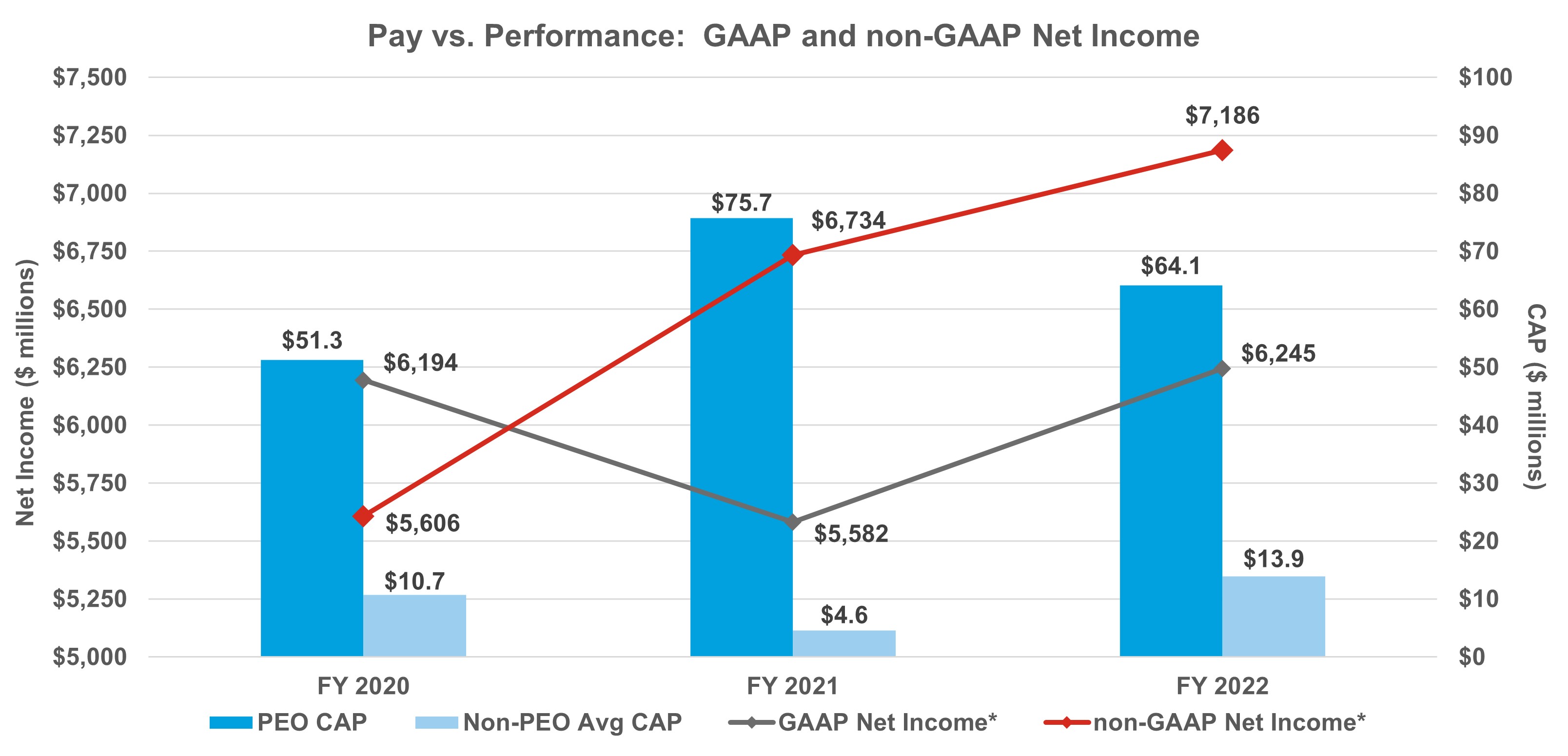
* GAAP Net Income and non-GAAP Net Income are discrete outcomes. Trend lines added to depict alignment with PEO and average non-PEO CAP.
Pay versus Performance: Adjusted Non-GAAP EPS
Lilly has chosen adjusted non-GAAP EPS as its most important CSM. Lilly leverages annual non-GAAP EPS derived from the board-approved business plan to set targets for the Lilly bonus. Additionally, Lilly uses a non-GAAP EPS derived from the median external analyst anticipated two-year non-GAAP EPS growth for our peer group to set our growth goal for our performance award. While these two approaches differ in performance period duration and source of performance comparison, significant sustained profitability growth can contribute to higher total CAP as seen in the graphic below. For additional information on non-GAAP financial metrics, see Appendix A, “Summary of Adjustments Related to the Annual Cash Bonus and Performance Award.” * Adjusted non-GAAP EPS data points are discrete outcomes. Trend lines added to depict alignment with PEO and average non-PEO CAP.
Pay versus Performance: Revenue
Lilly strives to make breakthrough medicines available to patients around the globe. Given a growing portfolio of new medicines, we motivate our entire workforce to reach as many patients as possible. The combination of a strong product portfolio and effective patient delivery yields higher sales volume and, generally, higher total revenue. A decline in product portfolio quality or effective launch execution reduces revenue. As such, revenue is one of our most important measures to ensure we are consistently growing the number of patients we serve. Our revenue curve over the preceding three-year period aligns with the growth in PEO and average non-PEO CAP.
* Revenue data points are discrete outcomes. Trend lines added to depict alignment with PEO and average non-PEO CAP.
Pay versus Performance: Conclusions
The Talent and Compensation Committee believes in pay for performance and has structured the Lilly compensation programs to reward leaders when the company is delivering strong results. Lilly has had strong cumulative TSR and EPS growth over the immediately preceding three-year period. As a result of this strong performance, shareholders have been rewarded with significant total stock returns and leadership has been rewarded with above target payouts from their incentive compensation programs.
Item 3. Advisory Vote on Frequency of Future Advisory Votes on Named Executive Officer Compensation
Federal legislation enables the company’s shareholders to vote, on an advisory or non-binding basis, on how frequently they would like to cast an advisory vote on the compensation of our named executive officers. Shareholders may indicate whether they would prefer an advisory vote on named executive officer compensation every one, two or three years. Shareholders may also, if they wish, abstain from casting a vote on this proposal.
We support advisory votes on named executive officer compensation every year, and they are currently occurring annually. We welcome shareholder input and believe that annual advisory votes on named executive officer compensation provide a meaningful way to continue dialogue with shareholders regarding this issue.
The board is not bound by this advisory shareholder vote; however, it will give significant weight to shareholder preferences on this matter.
| | | | | | | | | | | |
| | RECOMMENDATION FOR | |
| |
The board recommends that you vote FOR an annual (1 YEAR) advisory vote on the compensation of the company’s named executive officers as disclosed in its proxy statements. |
|
Audit Matters
Item 4. Ratification of the Appointment of the Independent Auditor
Audit Committee Oversight of the Independent Auditor
The Audit Committee is responsible for the appointment, compensation, retention, and oversight of the independent auditor and oversees the process for reviewing and evaluating the lead audit partner. Further information regarding the Audit Committee’s oversight of the independent auditor can be found in the Audit Committee charter, available online at lilly.com/leadership/governance.
Evaluation Process: In connection with the decision regarding whether to reappoint the independent auditor each year (subject to shareholder ratification), the Audit Committee assesses the independent auditor’s performance. This assessment includes:
1.the independent auditor’s qualifications and experience;
2.the communication and interactions with the auditor over the course of the year;
3.the auditor’s independence, objectivity, and professional skepticism; and
4.the independent auditor’s tenure.
These criteria are assessed against an internal and an external scorecard and are discussed with management during a private session as well as in executive session.
Based on the Audit Committee’s assessment of Ernst & Young LLP’s (EY) performance during 2022, the Audit Committee believes that the continued retention of EY to serve as the company's independent auditor is in the best interests of the company and its shareholders and has therefore reappointed EY as the company’s independent auditor for 2023.
Benefits of Longer Tenure: EY has served as the independent auditor for the company since 1940. There are several benefits of retaining a longer-tenured independent auditor, including institutional knowledge and expertise regarding the company’s global operations, accounting policies and practices, and internal controls over financial reporting. In addition, audit and other fees are competitive with peer companies because of familiarity with the company and its operations.
EY’s Internal Independence Assessment: EY conducts periodic internal reviews of its audit and other work, assesses the adequacy of partners and other personnel working on the Company’s account and rotates the lead assurance engagement partner, the global coordinating partner, and other partners on the engagement consistent with independence requirements.
Representatives of EY are expected to participate in the Annual Meeting and will be available to respond to questions. Those representatives will have the opportunity to make a statement if they wish to do so.
| | | | | | | | | | | |
| | RECOMMENDATION FOR | |
| |
The board recommends that you vote FOR ratifying the appointment of EY as the independent auditor for 2023. |
|
Audit Committee Report
The Audit Committee reviews the company’s financial reporting process on behalf of the board. Management has the primary responsibility for the financial statements and the reporting process, including the systems of internal controls and disclosure controls. In this context, the Audit Committee has met and held discussions with management and the independent auditor. Management represented to the Audit Committee that the company’s consolidated financial statements for the year ended December 31, 2022, were prepared in accordance with GAAP, and the Audit Committee has reviewed and discussed the audited financial statements and related disclosures with management and the independent auditor, including a review of the significant management
judgments underlying the financial statements and disclosures.
The independent auditor reports directly to the Audit Committee, which has sole authority to appoint and to replace the independent auditor (subject to shareholder ratification).
The Audit Committee has discussed with the independent auditor the matters required to be discussed with the Audit Committee by the standards of the Public Company Accounting Oversight Board (PCAOB), the SEC, and the NYSE, including the quality, not just the acceptability, of the accounting principles, the reasonableness of significant judgments, and the clarity of the disclosures in the financial statements. In addition, the Audit Committee has received the written disclosures and the letter from the independent auditor required by applicable PCAOB rules regarding communications with the Audit Committee concerning independence and has discussed with the independent auditor the auditor’s independence from the company and its management. In concluding that the auditor is independent, the Audit Committee determined, among other things, that the non-audit services provided by EY (as described below) were compatible with its independence. Consistent with the requirements of the Sarbanes-Oxley Act of 2002 (the Sarbanes-Oxley Act), the Audit Committee has adopted policies to ensure the independence of the independent auditor, such as prior committee approval of non-audit services and required audit partner rotation.
The Audit Committee discussed with the company’s internal and independent auditors the overall scope and plans for their respective audits, including internal control testing under Section 404 of the Sarbanes-Oxley Act. The Audit Committee periodically meets with the internal and independent auditors, with and without management present, and in private sessions with members of senior management (such as the chief financial officer and the chief accounting officer) to discuss the results of their examinations, their evaluations of the company’s internal controls, and the overall quality of the company’s financial reporting. The Audit Committee also periodically meets in executive session.
In reliance on the reviews and discussions referred to above, the Audit Committee recommended to the board (and the board subsequently approved the recommendation) that the audited consolidated financial statements be included in the company’s Annual Report on Form 10-K for the year ended December 31, 2022, for filing with the SEC. The Audit Committee has also appointed EY as the company’s independent auditor, subject to shareholder ratification, for 2023.
Audit Committee
Jamere Jackson, Chair
Ralph Alvarez
Gabrielle Sulzberger
Jackson P. Tai
Karen Walker
Services Performed by the Independent Auditor
The Audit Committee pre-approves all services performed by the independent auditor, in part to assess whether the provision of such services might impair the auditor’s independence. The Audit Committee’s policy and procedures are as follows:
•Audit services: The Audit Committee approves the annual audit services engagement and, if necessary, any changes in terms, conditions, and fees resulting from changes in audit scope, company structure, or other matters. Audit services include internal controls attestation work under Section 404 of the Sarbanes-Oxley Act. The Audit Committee may also pre-approve other audit services, which are those services that only the independent auditor reasonably can provide.
•Audit-related services: Audit-related services are assurance and related services that are reasonably related to the performance of the audit or reviews of the financial statements, and that are traditionally performed by the independent auditor. The Audit Committee believes that the provision of these services does not impair the independence of the auditor.
•Tax services: The Audit Committee believes that, in appropriate cases, the independent auditor can provide tax compliance services, tax planning, and tax advice without impairing the auditor’s independence.
•Other services: The Audit Committee may approve other services to be provided by the independent auditor if (i) the services are permissible under SEC and PCAOB rules, (ii) the Audit Committee believes the provision of the services would not impair the independence of the auditor, and (iii) management believes that the auditor is the best choice to provide the services.
Approval process: At the beginning of each audit year, management requests pre-approval from the Audit Committee of the annual audit, statutory audits, and quarterly reviews for the upcoming audit year as well as any other services known at that time. Management will also present at that time an estimate of all fees for the upcoming audit year and known services. As specific engagements are identified thereafter that were not initially approved, they are brought forward to the Audit Committee for approval. To the extent approvals are required between regularly scheduled Audit Committee meetings, pre-approval authority is delegated to the committee chair.
For each engagement, management provides the Audit Committee with information about the services and fees, sufficiently detailed to allow the committee to make an informed judgment about the nature and scope of the services and the potential for the services to impair the independence of the auditor.
After the end of the audit year, management provides the committee with a summary of the actual fees incurred for the completed audit year.
Independent Auditor Fees
The following table shows the fees incurred for services rendered on a worldwide basis by EY in 2022 and 2021. All such services were pre-approved by the Audit Committee in accordance with the pre-approval policy.
| | | | | | | | | | | |
| | 2022
($ millions)* | 2021
($ millions)* |
| Audit Fees | Annual audit of consolidated and subsidiary financial statements, including Sarbanes-Oxley 404 attestation, reviews of quarterly financial statements | $13.9 | $13.9 |
| Audit-Related Fees | Primarily related to assurance and related services reasonably related to the performance of the audit or reviews of the financial statements primarily related to employee benefit plan and other ancillary audits, and due diligence services on potential acquisitions | $0.7 | $0.7 |
| Tax Fees | Tax compliance services, tax planning, tax advice
Primarily related to consulting and compliance services | $1.6 | $2.1 |
| Total | | $16.2 | $16.7 |
* Numbers may not add due to roundingManagement Proposals
Item 5. Proposal to Amend the Company’s Articles of Incorporation to Eliminate the Classified Board Structure
The company’s articles of incorporation provide that the board is divided into three classes, with each class elected every three years. The board, after review by its Directors and Corporate Governance Committee, has approved, and recommends that the shareholders approve, amendments to eliminate the classified board structure in order to provide for the annual election of all directors (the Declassification Amendments). From 2010 through 2012 and again from 2018 through 2022, the board submitted this management proposal to shareholders seeking approval to eliminate the company’s classified board structure; however, under the company’s articles of incorporation the proposal requires the vote of 80 percent of the outstanding shares to be approved and on each prior occasion failed to receive the required vote.
If approved, the Declassification Amendments would become effective following the Annual Meeting upon the company making the required filings of the Declassification Amendments with the Secretary of State of Indiana. Directors elected prior to the effectiveness of the Declassification Amendments would serve the remainder of their respective three-year terms and each director elected after the Annual Meeting would serve a one-year term, ending at the next annual meeting of shareholders. Thereafter, the company’s classified board structure would be
fully eliminated starting with the 2026 annual meeting of shareholders. In the case of any vacancy on the board occurring after the Annual Meeting created by an increase in the number of directors, the vacancy would be filled through an appointment by the board, with the new director to serve a term ending at the next annual meeting of shareholders. Vacancies created by resignation, removal or death would be filled by appointment by the board of a new director to serve until the end of the term of the director being replaced. This proposal would not change the present number of directors or the board’s authority to change that number and to fill any vacancies or newly created directorships.
Background of Proposal
As part of its ongoing review of corporate governance matters, the board, taking into account the input of the Directors and Corporate Governance Committee, considered the advantages and disadvantages of maintaining the classified board structure. The board considered the view of certain shareholders who believe that classified boards have the effect of reducing the accountability of directors to shareholders because shareholders are unable to evaluate and consider all directors for election on an annual basis. The board gave considerable weight to the favorable votes of a strong majority of the outstanding shares for management’s proposals in prior years.
The board also considered the benefits of retaining the classified board structure. A classified structure may promote shareholder value by providing continuity and stability in the management of the business and affairs of the company, as a majority of the board always has prior experience as directors of the company. In addition, under certain circumstances, classified boards may protect shareholder value by forcing an entity seeking control of the company to initiate discussions at arm’s-length with the board of the company, because the entity cannot replace the majority of the board in a single election. The board also considered that even without a classified board (and without the supermajority voting requirements, which the board also recommends eliminating), the company would have appropriate safeguards to protect the interests of all shareholders and discourage a would-be acquirer from proceeding with a proposal that undervalues the company or is opportunistic. These include other provisions of the company’s articles of incorporation and bylaws, as well as certain provisions of Indiana corporation law.
After balancing these interests, the board has decided to resubmit this proposal to eliminate the classified board structure. The affirmative vote of at least 80 percent of the outstanding shares of common stock is needed to approve this proposal. Unless such vote is received, the present classification of the board will continue.
Text of the Amendments
Article 9(b) of the company’s articles of incorporation contains the provisions that will be affected if this proposal is adopted. This article, set forth in Appendix B to this proxy statement, shows the proposed changes, with deletions indicated by strikeouts and additions indicated by underlining. The board has also adopted conforming amendments to the company’s bylaws, to be effective immediately upon, and subject to, the effectiveness of the amendments to the articles of incorporation.
| | | | | | | | | | | |
| | RECOMMENDATION FOR | |
| |
The board recommends that you vote FOR amending the company’s articles of incorporation to eliminate the classified board structure. |
|
Item 6. Proposal to Amend the Company’s Articles of Incorporation to Eliminate Supermajority Voting Provisions
The company’s articles of incorporation provide that nearly all matters submitted to a vote of shareholders can be adopted by a majority of the votes cast. However, the company’s articles of incorporation require certain fundamental corporate actions to be approved by the holders of 80 percent of the outstanding shares of common stock. Those actions are:
•amending certain provisions of the articles of incorporation that relate to the number and terms of office of directors:
–the company’s classified board structure (as described under Item 4)
–a provision that the number of directors shall be specified solely by resolution of the board
•removing directors prior to the end of their elected term
•entering into mergers, consolidations, recapitalizations, or certain other business combinations with a “related person”—a party who has acquired at least five percent of the company’s stock (other than the Endowment or a company benefit plan) — without the prior approval of such action or transaction by the directors not affiliated with such shareholder
•modifying or eliminating any of the above supermajority voting requirements.
The board, after review by the Directors and Corporate Governance Committee, has approved, and recommends that the shareholders approve, amendments to eliminate the supermajority voting requirements (the Supermajority Voting Amendments). From 2010 through 2012 and again from 2018 through 2022, the board submitted this management proposal to shareholders seeking approval to eliminate these supermajority voting requirements; however, under the company’s articles of incorporation the proposal requires the vote of 80 percent of the outstanding shares to be approved and on each prior occasion failed to receive the required vote.
Background of Proposal
As part of its ongoing review of corporate governance matters, the board, taking into account the input of the Directors and Corporate Governance Committee, considered the advantages and disadvantages of maintaining the supermajority voting requirements. The board considered the potential adverse consequences of maintaining the supermajority voting requirements. The board believes it is important to maintain shareholder confidence by demonstrating that the board is responsive and accountable to shareholders and committed to strong corporate governance. This requires the board to carefully balance sometimes competing interests. In this regard, the board gave considerable weight to the favorable votes of a strong majority of the outstanding shares for management’s proposal in the previous four years. Many shareholders believe that supermajority voting requirements impede accountability to shareholders and contribute to board and management entrenchment. The board also considered that, even without the supermajority vote (and without the classified board, which the board also recommends eliminating), the company has appropriate safeguards to protect the interests of all shareholders and to discourage a would-be acquirer from proceeding with a proposal that undervalues the company or is opportunistic and to assist the board in responding to such proposals. These include other provisions of the company’s articles of incorporation and bylaws as well as certain provisions of Indiana corporation law.
The board also considered that under certain circumstances, supermajority voting requirements can provide benefits to the company and all its shareholders by making it more difficult for one or a few large shareholders to facilitate a takeover of the company or implement certain significant changes to the company without more widespread shareholder support.
After balancing these interests, the board has decided to resubmit this proposal to eliminate the supermajority voting requirements. The affirmative vote of at least 80 percent of the outstanding shares of common stock is needed to approve this proposal. Unless such vote is received, the supermajority voting requirements will continue to be in effect.
Text of Amendments
Articles 9(c), 9(d), and 13 of the company’s articles of incorporation contain the provisions that will be affected if this proposal is adopted. These articles, set forth in Appendix B to this proxy statement, show the proposed changes with deletions indicated by strikeouts and additions indicated by underlining. The board has also adopted conforming amendments to the company’s bylaws, to be effective immediately upon, and subject to, the effectiveness of the amendments to the articles of incorporation.
| | | | | | | | | | | |
| | RECOMMENDATION FOR | |
| |
The board recommends that you vote FOR amending the company’s articles of incorporation to eliminate supermajority voting requirements. |
|
Shareholder Proposals
Item 7. Proposal to Publish an Annual Report Disclosing Lobbying Activities
The Service Employees International Union Pension Plans Master Trust (SEIU), 1800 Massachusetts Ave. NW, Suite 301, Washington, D.C. 20036-1202, a beneficial owner of shares of our common stock having a market value in excess of $2,000, has submitted the following proposal:
Whereas, we believe in full disclosure of Lilly’s lobbying activities and expenditures to assess whether Lilly’s lobbying is consistent with its expressed goals and shareholder interests.
Resolved, the shareholders of Lilly request the preparation of a report, updated annually, disclosing:
1.Company policy and procedures governing lobbying, both direct and indirect, and grassroots lobbying communications.
2.Payments by Lilly used for (a) direct or indirect lobbying or (b) grassroots lobbying communications, in each case including the amount of the payment and the recipient.
3.Lilly’s membership in and payments to any tax-exempt organization that writes and endorses model legislation.
4.Description of management’s and the Board’s decision-making process and oversight for making payments described in sections 2 and 3 above.
For purposes of this proposal, a “grassroots lobbying communication” is a communication directed to the general public that (a) refers to specific legislation or regulation, (b) reflects a view on the legislation or regulation and (c) encourages the recipient of the communication to take action with respect to the legislation or regulation. “Indirect lobbying” is lobbying engaged in by a trade association or other organization of which Lilly is a member.
Both “direct and indirect lobbying” and “grassroots lobbying communications” include efforts at the local, territorial, state and federal levels.
The report shall be presented to the Public Policy and Compliance Committee and posted on Lilly’s website.
Supporting Statement
Lilly spent $95,877,000 from 2010 – 2021 on federal lobbying. This figure does not include state lobbying, where Lilly lobbied in at least 46 states in 2021. Lilly also lobbies abroad, spending between €900,000–999,000 on lobbying in Europe for 2021.
Lilly fails to disclose its third-party payments to trade associations and social welfare groups (SWGs), or the amounts used for lobbying, to shareholders. Companies can give unlimited amounts to third party groups that spend millions on lobbying and undisclosed grassroots activity. These groups may be spending “at least double what’s publicly reported.”1 For example, Pharmaceutical Research and Manufacturers of America (PhRMA) has given millions to controversial “dark money” SWGs like the American Action Network.2
Lilly belongs to the Chamber of Commerce, Business Roundtable, National Association of Manufacturers (NAM) and PhRMA, which together have spent over $2.8 billion on lobbying since 1998, and supports SWGs that lobby, like the Alliance for Patient Access (AfPA), “which claims to be pro-consumer but consistently advocates against policies to lower drug prices.”3
We believe Lilly’s lack of disclosure presents reputational risk when its lobbying contradicts company public positions. For example, Lilly states it supports more affordable medicines, yet funds PhRMA and AfPA’s opposition
1 https://theintercept.com/2019/08/06/business-group-spending-on-lobbying-in-washington-is-at-least-double-whats-publiclyreported/.
2 https://www.opensecrets.org/news/2019/11/big-pharma-bankrolled-conservative-groups-tax-returns-show/.
3 https://prospect.org/power/astroturf-campaign-attacks-discount-drug-program-for-poor/.
to lower prescription drug prices.4 Lilly opposed Indiana voter restrictions, yet groups have asked Lilly to cut ties with the American Legislative Exchange Council (ALEC) “because of its voter restriction efforts.”5 Lilly is also represented at ALEC by its trade associations, as the Chamber, NAM and PhRMA each sit on its Private Enterprise Advisory Council.
Statement in Opposition to the Shareholder Proposal to Publish an Annual Report Disclosing Lobbying Activities
The board, after review by its Directors and Corporate Governance Committee, recommends a vote against this proposal.
The proposal calls for the board to publish an annual report to shareholders disclosing the company’s direct and indirect lobbying activities and expenditures to assess whether its lobbying is consistent with its expressed goals and in the best interest of shareholders.
The report requested by the proposal is unnecessary because Lilly already provides shareholders with extensive disclosures regarding the company’s direct and indirect lobbying activities and expenditures, and information necessary to assess the consistency of the company’s lobbying activities with its expressed goals through existing disclosures. In November 2021, we substantially enhanced our public disclosures with respect to Lilly’s direct and indirect lobbying activities, including for example, disclosures regarding:
•our board’s oversight of political expenditures and lobbying activities;
•Lilly’s political contributions to candidates for public office (directly from Lilly and through the company’s exclusively employee-led political action committee (LillyPAC));
•recipients of Lilly’s political contributions;
•Lilly’s federal and state lobbying activities; and
•trade associations to which Lilly pays annual membership dues of $50,000 or more (including those trade associations on which Lilly has a board seat).
These extensive disclosures already enable shareholders to assess whether the company’s lobbying activities are consistent with its expressed goals and in the best interest of shareholders.
Contrary to the proposal’s assertions, Lilly does not fund opposition to lowering prescription drug prices. Lilly does, however, oppose legislative policies that would hinder medical discovery for patients. For example, as explained on our website’s news and stories section, we opposed H.R. 3 because it would not only stifle innovation but there are better policy solutions to help patients with their out of pockets costs such as Medicare Part D modernization and not requiring deductibles for insulin coverage. Similarly, we have opposed the drug pricing aspects of the Inflation Reduction Act of 2022 (the IRA) that would also have negative consequences to drug discovery without directly helping patients—such as Medicare price setting under the guise of negotiation. At the same time, Lilly actively supported portions of the IRA that we believe will benefit patients and innovation, such as the $35 out of pocket cap on insulin costs for Medicare beneficiaries and the elimination of the coverage gap in Medicare Part D plans.
Our political expenditures, in fact, cover the political spectrum and reflect our approach to engaging stakeholders on various complex issues to help preserve incentives and ensure an environment conducive to finding new treatments. As explained in further detail below, the company already publicly discloses this information, which provides shareholders with the information necessary to assess the consistency of the company’s lobbying activities with its expressed goals.
Lilly already publicly discloses the information requested by the proposal regarding the company’s policies and procedures governing direct and indirect lobbying activities.
In this proxy statement, the political participation page of Lilly’s website (Political Participation Website), and Lilly’s corporate governance guidelines, the company discloses its extensive policies and procedures governing direct and indirect lobbying activities. For example, the Political Participation Website discloses:
4 https://www.opensecrets.org/news/2021/09/pharmaceutical-industry-backs-democratic-holdouts-on-drug-pricing-plan/; https://nonprofitquarterly.org/alliance-for-patient-access-not-even-trying-subtlety/.
5 https://www.thenation.com/article/politics/alec-corporations-democracy/.
•Lilly’s commitment, through public policy engagement, to provide a way for all our locations globally to offer Lilly’s perspective on the political environment in a manner that supports access to innovative medicines, as well as to look for ways to engage on issues specific to local business environments;
•that Lilly employees must comply with our global policies, core values and legal obligations, which are outlined in our written code of business conduct, The Red Book;
•that when engaging in lobbying activities, Lilly complies with the laws that govern such activities, and that Lilly’s senior vice president, global government affairs is responsible for overseeing these activities and the company’s general counsel and chief financial officer, or their designees, also approve all corporate political contributions before they are made; and
•that, where permitted, Lilly makes lawful political contributions in the United States to political candidate committees, political parties, political action committees, ballot measure committees, associations and other political organizations operating under section 527 of the Internal Revenue Code.
Lilly already publicly discloses the information requested by the proposal regarding our direct and indirect lobbying expenditures.
Lilly makes extensive disclosures regarding its direct and indirect lobbying expenditures in its proxy statement, Political Participation Website, environmental, social and governance report, and other public disclosures regarding its political activities. The trade associations through which Lilly conducts its indirect lobbying activities (which are evaluated annually by the company’s U.S. government affairs leaders) also publicly disclose their lobbying expenditures. As noted in the bullet points above, in November 2021, Lilly substantially enhanced its disclosures related to its direct and indirect lobbying activities, including lobbying expenditures. Lilly voluntarily discloses its corporate political contributions and expenditures on an annual basis on the Political Participation Website. The proposal also requests we disclose our grassroots lobbying communications, however, Lilly does not engage in grassroots lobbying communications to the general public. The proposal also notes that groups have asked Lilly to cut ties with the American Legislative Exchange Council (ALEC). Lilly is no longer a member of ALEC. Additional details regarding the company’s corporate contributions, LillyPAC’s contributions (which are also voluntarily disclosed on a bi-annual basis), contribution data, and the company’s direct lobbying expenses are also already made available to the public from numerous public sources.
Lilly already publicly discloses the information requested by the proposal regarding our membership in, and payments to, any tax-exempt organization that writes and endorses model legislation.
As noted above, Lilly’s Political Participation Website also contains information regarding the company’s U.S. trade association memberships for which the company pays annual dues of $50,000 or more and information regarding the percentage of dues collected by such trade associations utilized for federal and state lobbying and political expenditures. In the Political Participation Website, Lilly already discloses Lilly’s memberships in organizations that report lobbying activity to the U.S. federal government, including the Pharmaceutical Research and Manufacturers of America, the National Association of Manufacturers, the Biotechnology Innovation Organization, the U.S. Chamber of Commerce, and the Business Roundtable.
Lilly already publicly discloses the information requested by the proposal regarding its decision-making process and the board’s oversight over direct and indirect lobbying activities.
In this proxy statement and the Political Participation Website, Lilly already discloses its decision-making process and the board’s oversight over the company’s political expenditures and direct and indirect lobbying activities to ensure the company fulfills its commitment to stewardship of corporate funds and minimizes risk with respect to such activities.
Requiring Lilly to prepare a separate report with this information would place an undue administrative burden on the company and would not provide meaningful additional information to shareholders.
We do not believe that publishing the standalone report requested by the proposal would provide meaningful additional information to shareholders to merit the resources required to provide the requested report. For these reasons, we believe the proposal is not in the best interests of the company and its shareholders.
| | | | | | | | | | | |
| | RECOMMENDATION AGAINST | |
| |
The board recommends that you vote AGAINST this proposal. |
|
Item 8. Proposal to Eliminate Supermajority Voting Requirements
John Chevedden, 2215 Nelson Avenue, No. 205, Redondo Beach, CA 90278, a beneficial owner of shares of our common stock having a market value in excess of $2,000, has submitted the following proposal:
Proposal 8— Simple Majority Vote
Shareholders request that our board take each step necessary so that each voting requirement in our charter and bylaws (that is explicit or implicit due to default to state law) that calls for a greater than simple majority vote be replaced by a requirement for a majority of the votes cast for and against such proposals, or a simple majority in compliance with applicable laws.
This means the closest standard to a majority of the votes cast for and against such proposals consistent with applicable laws. This includes any existing supermajority vote requirement that results from default to state law and can be subject to replacement. This proposal topic is important because it was approved by 84% of Eli Lilly shares that voted in 2021.
This 2023 proposal includes that the Board take all the steps necessary at its discretion to help ensure that the topic of this proposal is approved by the requirement of 80% of all outstanding shares including a commitment to hire a proxy solicitor to conduct an intensive campaign, a commitment to adjourn the annual meeting to obtain the votes required if necessary and to take a 2-year process to adopt this proposal topic if applicable. This proposal does not restrict the Board from using a means to obtain the necessary vote that is not mentioned in this proposal.
For instance PPG Industries, Inc. (PPG) adjourned its annual meeting for weeks to obtain the necessary votes on this proposal topic in 2022 and Raytheon Technologies Corporation (RTX) announced a 2-year process to obtain shareholder approval of this proposal topic in its 2022 proxy.
This proposal includes that the Board make an EDGAR filing approximately 10-days before the annual meeting urging shareholder to vote in favor and explaining all the efforts the board has taken or will take to obtain the necessary vote and all the available efforts that the Board has not taken with an explanation for each available effort not taken. This EDGAR filing would also describe any group of Eli Lilly shareholders who are opposed to this topic and Board efforts to reach out to such groups.
It is important to make an all-out effort now to obtain shareholder approval of this proposal topic in preference to the expense of conducting failed votes on this proposal topic every year into the foreseeable future. Extraordinary measures need to be taken to adopt this proposal topic due to the dead hand of our undemocratic governance provisions that require an 80% approval from all Eli Lilly shares outstanding to improve the corporate governance of Eli Lilly — given the reality that only 70% of Eli Lilly shares typically vote at the annual meeting.
Please vote yes:
Simple Majority Vote — Proposal 8
Statement in Opposition to the Shareholder Proposal to Eliminate Supermajority Voting Requirements
The board, after review by its Directors and Corporate Governance Committee, recommends a vote against this proposal.
The proposal calls for the board to take each step necessary so that each voting requirement in our charter and bylaws that calls for a greater than simple majority vote be replaced by a requirement for a majority of the votes cast for and against such proposals or a simple majority in compliance with applicable laws.
The board believes that, in light of management’s proposal set forth in Item 6 of this proxy statement to eliminate the supermajority voting requirements applicable to common shareholders, this non-binding shareholder proposal is redundant, unnecessary, and confusing.
The board has approved, and recommends that the shareholders approve, amendments to eliminate the supermajority voting requirements (the Supermajority Voting Amendments) in the company’s articles of incorporation as described in Item 6 of this proxy statement.
Lilly has repeatedly made efforts to obtain shareholder approval of the Supermajority Voting Amendments proposal over many years. From 2010 through 2012 and again from 2018 through 2022, the board has submitted this management proposal to shareholders seeking approval to eliminate these supermajority voting requirements.
For instance, as disclosed in this and prior proxy statements, for every year management has submitted the Supermajority Voting Amendments to shareholders for approval, the company has engaged a proxy solicitor to assist with distribution and solicitation of proxies, and the number of shares represented at the last four meetings (either in person or by proxy) has exceeded 90 percent. However, while over 81 percent of shares outstanding cast votes with respect to management’s Supermajority Voting Amendments proposal in the last three years, on each occasion the proposal has failed to receive the required affirmative vote given the failure of enough shareholders to vote in favor.
Because the board is submitting, and is recommending the adoption of, Item 6 to eliminate the supermajority voting requirements at the 2023 Annual Meeting, the board believes that the request in this non-binding and advisory shareholder proposal that the board take action that it believes it has already taken, including through the submission of Item 6, is unnecessary, redundant, and confusing.
The board recommends that the company’s shareholders oppose this proposal and instead adopt management’s proposal to adopt the Supermajority Voting Amendments set out in Item 6.
| | | | | | | | | | | |
| | RECOMMENDATION AGAINST | |
| |
The board recommends that you vote AGAINST this proposal. |
|
Item 9. Proposal to Establish and Report on a Process by which the Impact of Extended Patent Exclusivities on Product Access Would be Considered in Deciding Whether to Apply for Secondary and Tertiary Patents
Trinity Health, as lead filer, with multiple additional cofilers, each a beneficial owner of shares of our common stock having a market value in excess of $2,000, has submitted the following proposal:
RESOLVED, that shareholders of Eli Lilly & Co. (“Lilly”) ask the Board of Directors to establish and report on a process by which the impact of extended patent exclusivities on product access would be considered in deciding whether to apply for secondary and tertiary patents. Secondary and tertiary patents arc patents applied for after the main active ingredient/molecule patent(s) and which relate to the product. The report on the process should be prepared at reasonable cost, omitting confidential and proprietary information, and published on Lilly’s website.
Supporting Statement
Access to medicines, especially costly specialty drugs, is the subject of consistent and widespread public debate in the U.S. A 2021 Rand Corporation analysis concluded that U.S. prices for branded drugs were nearly 3.5 times higher than prices in 32 OECD member countries.6 The Kaiser Family Foundation has “consistently found prescription drug costs to be an important health policy area of public interest and public concern.”7
This high level of concern has driven policy responses. The Inflation Reduction Act empowers the federal government to negotiate some drug prices.8 State measures, including drug price transparency legislation and copay caps, have also been adopted.9 The House Committee on Oversight and Reform (the “Committee”) launched a far-reaching investigation into drug pricing in January 2019.10 The Committee and the Senate Finance Committee also undertook investigations into insulin pricing in 2019, which focused on Lilly’s Humalog insulin and two other products.11
Intellectual property protections on branded drugs play an important role in maintaining high prices and impeding access. When patent protection on a drug ends, generic manufacturers can enter the market, reducing prices. But branded drug manufacturers may try to delay generic competition by extending their exclusivity periods.
Such periods can be extended if secondary patents are granted. The Committee’s December 2021 report described construction of a “patent thicket,” which consists of many “secondary patents covering the formulations, dosing, or methods of using, administering, or manufacturing a drug”; they are granted after the drug’s primary patent, covering its main active ingredient or molecule, has been granted.12 In June 2022, citing the impact of patent thickets on drug prices, a bipartisan group of Senators urged the U.S. Patent and Trademark Office to “take regulatory steps to. . . eliminate large collections of patents on a single invention.”
Lilly has raised the price of a 10 ml vial of Humalog by 1219% since its launch. Secondary patents on Humalog extended Lilly’s exclusivity period by 17 years.13
In our view, a process that considers the impact of extended exclusivity periods on patient access would ensure that Lilly considers not only whether it can apply for secondary and tertiary patents but also whether it should do so. A more thoughtful process could, we believe, bolster Lilly’s reputation and help avoid regulatory blowback resulting from high drug prices and perceptions regarding abusive patenting practices.
Statement in Opposition to the Shareholder Proposal to Establish and Report on a Process by which the Impact of Extended Patent Exclusivities on Product Access Would be Considered in Deciding Whether to Apply for Secondary and Tertiary Patents
The board, after review by its Directors and Corporate Governance Committee, recommends a vote against this proposal.
We are proud of the work we do to increase access to medicines around the world. At the same time, intellectual property protection through patents is critical to Lilly’s ability to successfully commercialize our innovations and invest in the search for new medicines and indications. Like most companies in our industry, Lilly could not invest or operate to research, discover, develop, test, manufacture or deliver existing and new medicines for patients without an effective patent application strategy. Given the nature of our business, without obtaining patent protections, we could not make the investments necessary to develop new medicines or further develop already-approved products. There is a high rate of failure inherent in new drug discovery. To bring a drug from the discovery phase to market can take over a decade and can often cost in excess of $2 billion. Failure can occur at any point in the process, including in later stages after substantial investment. As a result, most funds invested in research programs will not generate financial returns. The decisions of when to incur technical risk, time, effort,
6 https:/ /www.rand.org/news/press /2021 /01 /28.html
7 https://www.kfforg/health-costs/poll-finding/public-opinion-on-prescription-dnigs-and-their-ptices/
8 https://www.kfforg/medicare/issue-brief/explaining-the-prescription-drug-provisions-in-the-inflation-reduction-act/
9 https://www.americanprogress.org/article/state-policies-to-address-prescription-drug-affordability-across-the-supplychain/
10 https://oversight.house.gov/sites/democrats.oversight.house.gov/files/DRUG%20PRICING%20REPORT%20WITH%20APPENDIX %20v3.pdf, at i.
11 https://www.grassley.senate.gove/news/news-releases/grassley-wyden-launch-bipartisan-investigation-insulin-prices
12 https://oversight.house.gov/sites/democrats.oversight.house.gove/files/DRUG%20PRICING%20REPORT%20WITH%20APPENDIX %20v3.pdf, at 79.
13 https://oversight.house.gov/sites/democrats.oversight.house.gov/files/DRUG%20PRICING%20REPORT%20WITH%20APPENDIX %20v3.pdf, at 14, 81.
and significant expense to seek to develop a new product or develop new indications or new medicine delivery options (the typical innovation sources for the “secondary” patents), and when to permit copying of an already-approved product are complicated decisions at the core of the Company’s business model. Lilly’s process for patent prosecution is thoughtful and overseen by legal experts focused on compliance with applicable laws. Subjecting this process to additional cumbersome procedures and shareholder oversight would interfere with Lilly’s operations and management’s ability to run the business.
The report requested by this shareholder proposal is unnecessary because the company already provides shareholders with information about the analysis and framework the company uses for intellectual property protection strategies. As discussed in detail under “Governance—Governance Practices—Environmental, Social, and Governance—Increase Access to Medicines” in this proxy statement, Lilly is deeply committed to patient access to our medicines so that our breakthroughs can transform more people’s lives. Notably, the supporting statement submitted by the proponent includes misleading assertions regarding basic facts and inaccurate data. In fact, there is increasing recognition that narratives such as those being advanced by proponents are often built on flawed and misleading data.14 For example, contrary to the statement in the proposal’s supporting statement, secondary patents on Humalog did not extend Lilly’s exclusivity period by 17 years. In fact, Lilly’s “primary” Humalog patent expired in 2013 and, just four years later in 2017, the FDA approved Sanofi’s Humalog follow-on biologic (Admelog®). The misleading and factually inaccurate information in the proposal also reveals a misunderstanding of the critical role of patents in sustaining and incentivizing an ecosystem that is fundamental for patient access to innovative drugs and that leads to the reliable entry of lower-cost biosimilar and generic drugs. Such misunderstanding combined with the misleading data presented around patents is in fact ultimately antithetical to patient access to innovative and lower-cost biosimilar and generic drugs. Due to the importance of and complexities involved in patent strategy, Lilly uses a framework (described below) to guide the internal experts who have the factual details to make patent strategy decisions on behalf of the company. In addition, and as explained below, Lilly has already provided public disclosure concerning its patent application process that is responsive to the proposal’s request.
Lilly already provides information on guiding principles related to its intellectual property protection strategies.
Lilly believes that patients benefit most from a biopharmaceutical innovation ecosystem that both (a) incentivizes discovery and development of a sustainable pipeline of innovative drugs and (b) leads to reliable entry of lower-cost biosimilar and generic drugs.
As described in our ESG Report, intellectual property protection improves patient access by incentivizing investment and innovation. Consistent with our commitment to promoting access to our medicines so that our breakthroughs can transform more people’s lives, Lilly supports the removal of regulatory or pricing, reimbursement and access restrictions for generics and biosimilars when intellectual property protections expire. In addition, Lilly has a long-standing practice of not seeking or enforcing patents for medicines in countries designated by the United Nations as the least developed.
In 2021, Lilly publicly announced its participation in the IP Principles for Advancing Cures and Therapies (the IP PACT), which serves as a framework for guiding the company’s commitment to innovation while keeping patients at the heart of its efforts. The IP PACT framework includes the following principles, among others:
•Patient and societal benefit will guide Lilly’s approach to IP.
•Lilly will support initiatives to ensure patent quality, which help advance biopharmaceutical innovation.
•Lilly will use IP rights to facilitate collaboration and enable partnerships that advance global health.
•Lilly believes that accessible patent information promotes scientific progress and helps improve the procurement of medicines, and we support voluntary initiatives that advance these goals.
14 See, e.g., Adam Mossoff, Unreliable Data Have Infected the Policy Debates Over Drug Patents (Jan. 2022); Letter from Sen. Thom Tillis to Dr. Janet Woodcock and Mr. Drew Hirshfeld (Jan. 31, 2022); Letter from Sen. Thom Tillis to Dr. Robert Califf and Mr. Drew Hirshfeld (Apr. 1, 2022); Erika Lietzan & Kristina Acri née Lybecker, Solutions Still Searching for a Problem: A Call for Relevant Data to Support “Evergreening” Allegations, 33 Fordham Intell. Prop., Media & Ent. L.J., at 1 (forthcoming). As noted by Mossoff, the data underlying sources for the proponent’s statement include “reported numbers of issued patents, patent applications, and exclusivity periods for drugs are infected with serious questions of reliability and accuracy…[with]repeated and vast discrepancies” from official, publicly available government sources like the FDA’s Orange Book. This data relied upon “has wrongfully inflated the purported number of patents covering biopharmaceutical products and has extended their predictions of loss of exclusivity dates beyond reality...”
•Lilly will act responsibility and professionally in the Company’s patent proceedings, and seek timely resolutions to enhance certainty for all stakeholders.
•Lilly believes that generic and biosimilar medicines are important for sustainable health systems, and that certain activities related to seeking regulatory approval should be exempt from patent infringement.
•Lilly believes that advancing public health depends on robust IP, rights as well as collaboration among stakeholders, and may call for tailored uses of our IP where these add value for patients.
•Lilly will approach IP in the world’s poorest countries in ways that considers their unique socio-economic challenges.
As part of our process for determining whether to apply for patent protection for new innovation, we conduct a fact-specific and complicated analysis in connection with patent applications for potential products or uses, including for secondary and tertiary patents. Once filed, those patent applications are examined by patent offices around the world to ensure any patent granted meets stringent legal requirements for patentability, including that the invention is appropriately described, new, and not obvious. The statutory text underlying the patent examination standards makes no distinction between the patentability requirements for applications directed to different technologies or for different application types. The IP PACT principles help guide our patent decisions and ensure that we consider product access as part of our evaluation.
Lilly provides information on its goals and approach to access to medicine.
As further discussed in this proxy statement, on our website, in our ESG Report, and in other public materials, Lilly provides extensive disclosure regarding goals and initiatives related to access and affordability of our medicines. For example, our global access program—30x30—is our strategy to invest in pipeline and partnership efforts to increase access to 30 million people in resource limited settings by 2030. A recent example in furtherance of this initiative, in December 2022 Lilly and EVA Pharma announced a collaboration to deliver a sustainable supply of high-quality, affordable human and analogue insulin to at least one million people living with type 1 and type 2 diabetes in low- to middle-income countries, most of which are in Africa.
Requiring Lilly to prepare a separate report with this information would place an undue administrative burden on the company and would not provide meaningful additional information to shareholders.
We do not believe the separate report requested by the proposal would provide meaningful additional information to shareholders to merit the resources required to provide the report. For all of these reasons, we believe the proposal is not in the best interests of the company and its shareholders.
| | | | | | | | | | | |
| | RECOMMENDATION AGAINST | |
| |
The board recommends that you vote AGAINST this proposal. |
|
Item 10. Proposal to Report on Risks of Supporting Abortion
National Center for Public Policy Research, 2005 Massachusetts Ave. NW, Washington, DC 20036, a beneficial owner of shares of our common stock having a market value in excess of $2,000, has submitted the following proposal:
Report on Risks of Supporting Abortion
Resolved: Shareholders request the Company issue a public report prior to December 31, 2023, omitting confidential and privileged information and at a reasonable expense, detailing the known and reasonably foreseeable risks and costs to the Company caused by opposing or otherwise altering Company policy in response to enacted or proposed state policies regulating abortion, and detailing any strategies beyond litigation and legal compliance that the Company may deploy to minimize or mitigate these risks.
Supporting Statement: In 2022, Eli Lilly made clear its opposition to an Indiana law that restricts abortion in cases other than rape, incest, or where a woman’s life is in danger.15 The Company claimed that as a result of this law, its ability to attract diverse employees would be hindered, and that it would be “forced to plan for more employment growth outside our home state.” 16 The Company also said it expanded its employee health plan coverage to include travel for abortion.17
Ironically, in spite of making these statements and policy changes that demonstrate a clear pro-abortion stance, the Company criticized state officials for taking a stance on such a controversial issue. Indeed, the Company claimed to recognize abortion as a “divisive and deeply personal issue with no clear consensus among the citizens of Indiana,” but then itself went on to take a position through its condemnation. “Despite this lack of agreement, Indiana has opted to quickly adopt one of the most restrictive anti-abortion laws in the United States,” the Company stated.18 We agree with the Company that abortion is a “divisive and deeply personal issue.” Views on the topic are often rooted in an individual’s religious or other core belief system, making taking a position on it a potential reputational, legal, and financial liability for a company—yet Eli Lilly has insisted on doing just that.
By criticizing laws that restrict abortion and implementing a benefit to pay for abortion access, the Company makes clear its opposition to pro-life legislation that limit abortion. This positioning is particularly troubling considering the emphasis the Company has placed on so-called “Diversity & Inclusion.” The Company claims that embracing differences drives its business success,19 but apparently that embrace of diversity ends at diversity of thought, opinion, and religious convictions.
Taking positions on issues the Company admits are “divisive,” “deeply personal,” and on which there is “no clear consensus,” can only serve to alienate consumers, employees, and investors and impact the Company’s bottom-line. The Company should instead focus on its pharmaceutical mission and its fiduciary duty to shareholders, a fiduciary duty that is likely to be violated by engaging in politically divisive rhetoric and actions.
Statement in Opposition to the Shareholder Proposal to Report on Risks of Supporting Abortion
The board, after review by its Directors and Corporate Governance Committee, recommends a vote against this proposal.
Lilly seeks to attract and retain diverse talent from around the world, and offers competitive compensation, healthcare coverage, and other benefits to its employees. Our board and its applicable committees provide oversight of the company’s global compensation philosophy, human capital management and compliance programs. After careful consideration of this proposal, we believe the preparation of the requested report would not benefit our shareholders, employees, and other stakeholders and, therefore, would be an unnecessary distraction and redirection of resources that otherwise could be focused on running the business and advancing Lilly’s mission.
Lilly offers competitive compensation, healthcare coverage and other benefits to its employees.
As a global company with approximately 39,000 employees, Lilly is dedicated to attracting, developing, engaging and retaining the best talent in order to create medicines that make life better for people around the world. We want our company to be a welcoming place that people want to join, and where they can enjoy meaningful work, build successful careers, and make important contributions to society. We compete for talent with others in our industry and in the geographies in which we operate. In order to attract and retain employees, we offer a competitive total rewards program, including pay, benefits, and learning and development opportunities.
Workforce management is a complicated topic that is core to management’s ability to run the business. Determining health benefits such as employee leave and insurance coverage for a multitude of issues is informed by a number of factors such as local market data, employee input, and financial affordability. The Company must
15 https://www.cbsnews.com/news/abortion-indiana-eli-lilly-cummins-roche/;https://www.cnbc.com/2022/08/06/eli-lilly-says-indianas-abortion-law-will-lead-the-drugmaker-to-grow-in-other-states.html; https://www.wthr.com/article/news/special-reports/indiana-abortion/eli-lilly-condemns-new-abortion-ban-looks-to-expand-outside-indiana/531-7dedb5c9-0dda-4d9e-acf1-8f18e0b988db
16 https://www.cnbc.com/2022/08/06/eli-lilly-says-indianas-abortion-law-will-lead-the-drugmaker-to-grow-in-other-states.html
17 https://www.cbsnews.com/news/abortion-indiana-eli-lilly-cummins-roche/;https://www.cnbc.com/2022/08/06/eli-lilly-says-indianas-abortion-law-will-lead-the-drugmaker-to-grow-in-other-states.html
18 https://www.cnbc.com/2022/08/06/eli-lilly-says-indianas-abortion-law-will-lead-the-drugmaker-to-grow-in-other-states.html
19 https://www.lilly.com.au/operating-responsibly/diversity-inclusion; https://blog.kelley.iupui.edu/2020/10/05/eli-lilly-ceo-to-lead-healthcare-focused-conversation-on-inclusive-leadership/
consider our benefit offerings with our global workforce in mind where roughly 55 percent of our full-time workforce works outside of the United States and benefit packages are developed at the individual country level. In the U.S., nearly 40 percent of our workforce lives outside of the state of Indiana, which is also an important consideration for benefits packages being developed for our U.S. employees.
We believe the healthcare coverage options offered to our employees are competitive in the markets in which we operate. We review benefit offerings frequently for compliance with applicable law and to be responsive to the needs of our current employees as well as those we are seeking to recruit. Without the flexibility to react to changes in the markets in which we operate and update our benefits offerings in the manner that management determines is most beneficial to the company, Lilly may face additional recruitment or retention challenges that could ultimately affect the company’s profitability.
Lilly is committed to fairness and nondiscrimination in our employment practices, and we value diverse backgrounds, skills and global perspectives.
Our long-standing values of integrity, excellence and respect for people promote an environment where team members are encouraged to speak up, share ideas and be fully engaged in our work while bringing their full authentic selves to work every day in order to achieve our mission. Leaders at Lilly are expected to lead more inclusively by valuing differences, recognizing and overcoming bias and fostering a speak-up culture where all colleagues feel their ideas and contributions are welcome and valued.
Lilly employees have different experiences, perspectives and traditions, and we are committed to welcoming, respecting and valuing those differences. Our health benefit policies are intended to be responsive to what our employees are seeking and what our competitors are offering to their employees, with the goal of creating a welcoming and diverse workplace where all employees feel supported and valued.
Lilly has a robust governance process in place to oversee risk and compliance.
The board and its committees receive regular updates from management, including related to human resources and compliance, and discuss management’s assessments from the company’s enterprise risk management process. Specifically, the company’s Compensation Committee advises management and the board regarding human capital management, diversity, equity and inclusion (DEI) efforts, and employee compensation and benefits matters. We believe these processes are reasonable and appropriate to assess and respond to any purported risks from any specific benefit policy without the need to commission the report requested by the proposal.
The scope of the requested report is framed so broadly and speculatively that we believe it would be extremely difficult for the company to produce a report that would provide value or utility to our shareholders, employees, and other stakeholders.
The requested report would involve a review and report of not only the laws in each of the states in which the company operates, but also all proposed bills, legislation in committee, speculation about the results or outcomes of relevant pending state-level litigation, and any current or proposed administrative policies of state governmental bodies. Moreover, it is not clear how the company could quantify what constitutes “risks and costs” caused by “opposing” or “altering” company policies and procedures “in response to enacted or proposed state policies” of the kind described in the proposal. Producing the requested report would prove to be a diversion of board and management time and other company resources that could be better spent running the business and managing the company’s workforce.
Lilly is committed to complying with any laws that are or may be enacted that apply to our company. We believe the company’s resources are better focused on its day-to-day review and design of our benefits plans and programs in order to remain competitive in our industry and in compliance with applicable regulatory requirements in the jurisdictions where we operate.
| | | | | | | | | | | |
| | RECOMMENDATION AGAINST | |
| |
The board recommends that you vote AGAINST this proposal. |
|
Item 11. Proposal to Disclose Lobbying Activities and Alignment with Public Policy Positions and Statements
CommonSpirit Health, 444 West Lake Street, Chicago, IL 60606, as lead filer, along with several cofilers, each a beneficial owner of shares of our common stock having a market value in excess of $2,000, has submitted the following proposal:
Resolved: Shareholders request that the Board of Directors commission and publish a third party review within the next year (at reasonable cost, omitting proprietary information) of how Eli Lilly and Company (“Lilly”) reconciles the strong commitments to both innovation and patient access, reflected in Lilly’s statement that it “strike[s] a balance between access and patient affordability, while sustaining investments to research innovative life-changing treatments for some of today’s most serious diseases”20--when lobbying and engaging in other policy advocacy activities (both direct and through trade associations).
Supporting Statement:
Lilly states that it “is committed to ensuring you can afford your Lilly insulin,”21 and says it wants to “help those with diabetes get the medication and care they need.”22 Though Lilly has a patient access program, there is not solid evidence that these programs reach the most vulnerable patients, with one study finding “limited evidence … that co-pay assistance was associated with improved treatment persistence/adherence across various diseases…”23 In March 2021, Lilly also made headlines for “deceptive trade practice claims” associated with “insulin price-gouging.”24 Lilly states, “Now more than ever, it’s vitally important that we demonstrate accountability and trustworthiness so we can continue to earn the confidence of patients, healthcare providers and other customers, as well as society as a whole.”25 However, Lilly has directly lobbied against drug pricing reform that advances affordability,26 hiring three lobbyists in March 2021 to defeat Democratic drug pricing proposals even while Lilly was under intense scrutiny for insulin price hikes.27 Lilly’s CEO Dave Ricks is a recent Board Chair for Pharmaceutical Research and Manufacturers of America (“PhRMA”), which raised nearly $527 million in 2020 and spent roughly $506 million, including donating millions to numerous other organizations for use in opposing congressional drug pricing reform efforts.28 PhRMA also sits on the Private Enterprise Advisory Council of the American Legislative Exchange Council, which has actively opposed bills to lower the costs of pharmaceuticals (H.R. 3 and its moderate counterpart S. 2534 (both 116th Congress)).29
Lilly spent $7.5M lobbying in 2021 and $5.3M in 2022 (through October 24).30 Given Lilly’s extensive direct and indirect lobbying against measures that would make drugs more affordable, investors need to better understand the balance Lilly is striking between its commitments to innovation, on the one hand, and access and affordability, on the other. For these reasons, we urge shareholders to support the proposal.
Statement in Opposition to the Shareholder Proposal to Disclose Lobbying Activities and Alignment with Public Policy Positions and Statements
The board, after review by its Directors and Corporate Governance Committee, recommends a vote against this proposal.
The proposal calls for the board to publish a report to shareholders disclosing how the company’s lobbying activities align with its public policy positions and statements, particularly regarding Lilly’s goals of promoting access and affordability of medicines, while at the same time sustaining investments to research innovative life-changing treatments for some of today’s most serious diseases.
20 https://www.lilly.com/policies-reports/public-policy
21 https://www.insulinaffordability.com/
22 https://www.insulinaffordability.com/lilly-diabetes-solution-center
23 https://www.ajmc.com/view/impact-of-co-pay-assistance-on-patient-clinical-and-economic-outcomes
24 https://www.news.bloomberglaw.com/antitrust/sanofi-lilly-novo-must-face-more-insulin-price-gouging-claims
25 https://www.lilly.com/impact/operating-ethically-and-responsibly
26 https://www.fiercepharma.com/pharma/novo-faces-new-shareholder-suit-for-alleged-collusive-price-fixing
27 https://www.opensecrets.org/news/2021/04/vaccine-access-pharma-lobbying-fight/
28 https://www.opensecrets.org/news/2021/12/pharma-lobby-poured-millions-into-darkmoney-groups/
29 https://www.alecaction.org/update/20-alec-lawmakers-say-no-to-importing-price-controls-and-socialized-medicine-to-america/
30 https://www.opensecrets.orgs/orgs/eli-lilly-co/summary?id=d000000166
The report requested by the proposal is unnecessary because Lilly already provides shareholders with sufficient information to assess the alignment of the company’s lobbying activities with its public positions and statements through existing disclosures. At Lilly, we provide public disclosures with respect to our direct and indirect lobbying activities, including disclosures regarding:
•our board’s oversight of political expenditures and lobbying activities;
•Lilly’s political contributions to candidates for public office (directly from Lilly and through the company’s exclusively employee-led political action committee (LillyPAC));
•recipients of Lilly’s political contributions;
•Lilly’s federal and state lobbying activities;
•trade associations to which Lilly pays annual membership dues of $50,000 or more (including those trade associations on which Lilly has a board seat);
•our public policy positions and goals on the promotion of access and affordability of medicines as well as expanded development of innovation, all of which are detailed in our environmental, social and governance report (ESG Report); and
•Lilly’s core principles and key areas of public policy effort when advocating for improvements to the U.S. healthcare system.
These extensive disclosures already enable shareholders (i) to understand Lilly’s perspective and approach to increasing access to medicines and innovative research and development, (ii) to assess whether the company’s lobbying activities align with its public policy positions and statements, and (iii) to assess the risks presented by any potential misalignment.
Lilly already publicly discloses the information requested by the proposal regarding the company’s lobbying activities.
Lilly makes extensive disclosures regarding its lobbying activities in the political participation page of its website (Political Participation Website), its proxy materials, its ESG Report, and through other publicly available disclosures regarding its political activities. For example, Lilly voluntarily discloses its corporate political contributions on a biannual basis. In addition to the public disclosures of lobbying expenditures by trade associations through which Lilly conducts its indirect lobbying activities (which are evaluated annually by the company’s U.S. government affairs leaders), Lilly’s Political Participation Website also contains information regarding the company’s trade association memberships for which the company pays annual dues of $50,000 or more, as well as information regarding the percentage of dues collected by such trade associations that is utilized for federal and state lobbying and political expenditures. Additional details regarding the company’s corporate contributions, LillyPAC’s contributions (which are also voluntarily disclosed on an annual basis), contribution data, and the company’s direct lobbying expenses are also already made available to the public from numerous public sources.
Lilly already publicly discloses the information requested by the proposal regarding its public policy positions and statements with regard to access and affordability and investments in research.
In this proxy statement, the Political Participation Website and Lilly’s public policy website, the company discloses its public policy positions regarding accessibility and affordability as well as fairness and transparency in the biopharmaceutical industry. These disclosures include Lilly’s commitment to advocate for improvements to the United States health care system that align with the company’s core principles of (1) encouraging and protecting innovation, (2) fairness and transparency in the biopharmaceutical industry and all of health care, and (3) lowering costs at the pharmacy counter for patients who use our medicines. Lilly’s lobbying activities are aligned with these public policy positions and our actions also clearly demonstrate this alignment. For example, Lilly advocates for insurers to pass through its negotiated rebates directly to consumers at the pharmacy counter, is supportive of efforts to exempt health care services for chronic conditions from a health insurance plan’s deductible and Lilly passes through estimated rebates directly to its employees at the pharmacy counter under its own healthcare coverage. In our proxy statement and other public disclosures, the company also discloses its support for various transparency initiatives globally, and explains that the company seeks to collaborate with policy makers, industry colleagues and key stakeholders to align on approaches that achieve these objectives. As demonstrations of delivering on its commitment to its public policy positions regarding drug pricing and access, Lilly introduced two additional lower-priced versions of Humalog in January 2020 and added the Lilly Insulin Value Program to Lilly’s
comprehensive suite of insulin affordability solutions in September 2020, which now enables customers with commercial insurance or no insurance to purchase their monthly prescription of all Lilly insulins for $35. In addition, in September 2021, Lilly announced that it would lower the list price of all Lilly’s non-branded insulins, including Insulin Lispro Injection, by an additional 40 percent in the United States. That price reduction took effect January 1, 2022, effectively reducing the list price to 2008 levels. These examples, among others, demonstrate Lilly’s commitment to providing effective oversight over drug pricing and access as well as the public’s ability to evaluate this information.
Lilly already publicly discloses the information requested by the proposal regarding its oversight and plans to mitigate alleged risks presented by any misaligned lobbying activities.
In this proxy statement and the Political Participation Website, Lilly already discloses its governance and risk mitigation procedures that are in place to avoid and address any potential misalignment between Lilly’s lobbying activities and its public policy positions and statements.
For example, the board exercises oversight of Lilly’s political expenditures and lobbying activities to ensure the company fulfills its commitment to stewardship of corporate funds and minimizes risk with respect to such activities. The board receives regular updates from the executive vice president, corporate affairs and communications regarding public policy issues and the company’s direct and indirect lobbying activities and the board also receives semi-annual updates on the company’s direct and indirect lobbying activities and trade association memberships.
Therefore, the board already takes substantial steps to oversee and mitigate the potential risks of misalignment between Lilly’s lobbying activities and public policy positions and statements and the company provides that information to the public.
Requiring Lilly to prepare a separate report with this information would place an undue administrative burden on the company and would not provide meaningful additional information to shareholders.
We believe our existing disclosures regarding out lobbying activities provide meaningful information that allows shareholders to evaluate how our lobbying activities align with our public policy positions and statements. Additionally, we do not believe the standalone report requested by the proposal would provide meaningful additional information to shareholders to merit the resources required to provide the report. For these reasons, we believe the proposal is not in the best interests of the company and its shareholders.
| | | | | | | | | | | |
| | RECOMMENDATION AGAINST | |
| |
The board recommends that you vote AGAINST this proposal. |
|
Item 12. Proposal to Report on Effectiveness of the Company’s Diversity, Equity, and Inclusion Efforts
As You Sow, on behalf of Leslie Oelsner Bene IRA of S Berman (S), Sarah B Sonnenfeld Rev Tr (S), Curtis Overway and Marcelina Cravat-Overway, each a beneficial owner of shares of our common stock having a market value in excess of $2,000, has submitted the following proposal:
RESOLVED: Shareholders request that Eli Lilly and Co. (“Eli Lilly”) report to shareholders on the effectiveness of the Company’s diversity, equity, and inclusion efforts. The report should be done at reasonable expense, exclude proprietary information, and provide transparency on outcomes, using quantitative metrics for hiring, retention, and promotion of employees, including data by gender, race, and ethnicity.
SUPPORTING STATEMENT: Quantitative data is sought so investors can assess and compare the effectiveness of the Company’s diversity, equity, and inclusion programs.
WHEREAS: Eli Lilly has not shared sufficient quantitative hiring, retention, and promotion data to allow investors to determine the effectiveness of its human capital management programs. Between September 2020 and September 2022, S&P 100 companies increased by 298 percent their release of hiring rate data by gender, race,
and ethnicity; retention rate data by 481 percent; and promotion rate data by 300 percent.31 Companies that release, or have committed to release, more inclusion data than Eli Lilly include CVS Health, Gilead Sciences, Illumina, Pfizer, and UnitedHealth Group.
Numerous studies have pointed to the benefits of a diverse workforce. Their findings include:
•There is a positive association between diversity in management and cash flow, net profit, revenue, and return on equity.32
•Companies in the top quartile for gender diversity are 21 percent more likely to outperform on profitability.33
•The 20 most diverse companies had an average annual five year-stock return that was 5.8 percentage points higher than the 20 least diverse companies.34
Similar to how an income statement pairs with a balance sheet, hiring, promotion, and retention rate data show how well a company manages its workforce diversity. Without this data, investors are unable to assess the effectiveness of a company’s human capital management program. Companies should look to hire the best talent. However, Black and Latino applicants face hiring challenges. Results of a meta-analysis of 24 field experiments found that, with identical resumes, White applicants received an average of 36 percent more callbacks than Black applicants and 24 percent more callbacks than Latino applicants.35
Promotion rates show how well diverse talent is nurtured at a company. Unfortunately, women and employees of color experience “a broken rung” in their careers; for every 100 men who are promoted, only 86 women are. Women of color are particularly impacted, comprising 17 percent of the entry-level workforce and only four percent of executives.36
Retention rates show whether employees choose to remain at a company. Morgan Stanley has found that employee retention above industry average can indicate a competitive advantage and higher levels of future profitability.37 Companies with high employee satisfaction have also been linked to annualized outperformance of over two percent.38
Investors have reason to be concerned as Eli Lilly has faced allegations of age, sex, and race discrimination.
Statement in Opposition to the Shareholder Proposal to Report on the Effectiveness of the Company’s Diversity, Equity, and Inclusion Efforts
The board, after review by its Directors and Corporate Governance Committee, recommends a vote against this proposal.
The proposal calls for the board to report to shareholders on the effectiveness of the company’s diversity, equity, and inclusion (DEI) efforts and provide transparency on outcomes using quantitative metrics hiring, retention, and promotion of employees, including data by gender, race, and ethnicity.
The report requested by the proposal is unnecessary because Lilly already establishes specific DEI goals, discloses progress towards these goals, and has consistently been evaluated and recognized by third parties for our DEI practices, programs and outcomes.
Lilly is committed to DEI.
At Lilly, we believe in the power of DEI to fulfill our purpose of creating medicines that make life better for people around the world. At our core, we believe that by leveraging the varied backgrounds of our more than 39,000
31 https://www.asyousow.org/our-work/social-justice/workplace-equity
32 https://www.asyousow.org/report-pages/workplace-diversity-and-financial-performance
33 Ibid
34 https://www.wsj.com/articles/the-business-case-for-more-diversity-11572091200
35 https://www.hbr.org/2017/10/hiring-discrimination-against-black-amercians-hasnt-declined-in-25-years
36 https://wiw-report.s3amazonaws.com/Women_in_the_Workplace_2021.pdf
37 https://www.morganstanley.com/im/publication/insights/articles/article_culturequantframework_us.pdf
38 https://www.institutionalinvestor.com/article/b1tx0zzdhhnf5x/Want-to-Pick-the-Best-Stocks-Pick-the-Happiest-Companies?utm_medium=email&utm_campaign=The%20Essential20II20100721&utm_content= The20Essential%20II20100721%20CID_eb103a9e15359075f72a85f7ff534c79&utm_source= CampaignMonitorEmail&utm_term=Want%20to%20Pick%20the%20Best%20Stocks%20Pick%20the%20Happiest%20Companies
employees—and by driving actionable and measurable strategies to improve DEI, including diversity within our clinical trials—we can better deliver scientific breakthroughs. We take a data-driven approach to DEI so that our business and employee base better reflect the world around us. We recognize that the wide array of races, ethnicities, abilities, ages, religions, sexual orientations, genders and political views in our communities serves as a catalyst for innovation and creativity that contributes to the health and prosperity of society.
The DEI commitment at Lilly includes, among other things, high-level oversight, purposeful corporate culture and ongoing data analyses to inform our approach. Our CEO and Executive Committee (EC) consistently set expectations for inclusive leadership and hold leaders accountable for building diverse and inclusive teams. The EC is dedicated to advising and driving corporate DEI strategy in order to promote diverse talent development, recruitment, and retainment as highlighted in our proxy statement and other public disclosures. The EC regularly reviews progress towards aspirational goals for women and minority group member talent for both recruiting and representation in management along with other DEI metrics, including employee survey data. Lilly is committed to data-driven results, and metrics are used to develop annual DEI plans, track progress and implement Lilly’s strategies, which are reviewed at least annually by the Board.
Our executive leadership team purposefully integrates DEI within our human resources talent management organization. Lilly’s executive vice president for human resources and diversity, a member of the EC, reports directly to our chair and CEO and is ultimately accountable for DEI at Lilly. Our chief DEI officer is a senior vice president reporting to the executive vice president for human resources and diversity and is also responsible for leading our talent management functions. As a result, DEI is integrated into how we recruit, develop, promote and retain talent.
Employee resource groups (ERGs) are another important component of developing talent at Lilly. Our ERGs represent groups including women, minority group members, LGBTQ+ individuals, veterans and people with disabilities. ERGs offer our diverse workforce opportunities to build relationships, engage with senior leaders, advance our caring community, and offer unique insights and perspectives to improve our business.
Lilly already provides extensive information on its DEI efforts and has posted its consolidated EEO-1 reports.
We already disclose Lilly’s DEI efforts, including the information provided above, in our proxy statement and other public disclosures along with quantitative diversity data, including the gender and ethnicity breakdown of both Lilly’s workforce and management. In addition, the company publishes its EEO-1 reports on the company’s website, which provides additional transparency and accountability with respect to Lilly’s workforce diversity data.
Lilly continues to be recognized for its DEI efforts.
Finally, Lilly has been recognized externally several times for its DEI efforts. Lilly is and has been ranked in the Top 5 Companies in effective DEI practices by DiversityInc for the past 4 years and in the Top 50 the past twelve (12) years running. DiversityInc has a systematic, rigorous process that reviews companies’ data across six categories: Leadership Accountability, Talent Programs, Human Capital and Diversity Metrics, Workplace Practices, Supplier Diversity and Philanthropy.
Additionally, Lilly has been recognized in Forbes, America’s Best Large Employers list; Seramount, Top Company for Executive Women and Best Company for Multicultural Women; DisabilityIN, Disability Equality Index Best Places to Work – Perfect Score; Human Rights Campaign Foundation, Corporate Equality Index – Perfect Score to name a few.
Requiring Lilly to prepare a separate report with this information would place an undue administrative burden on the company and would not provide meaningful additional information to shareholders.
We believe our existing DEI practices, and significant disclosures, provide meaningful information that allows shareholders to determine the effectiveness of our policies related to workplace diversity. Additionally, we do not believe the standalone report requested by the proposal would provide meaningful additional information to shareholders to merit the resources required to provide the report. For these reasons, we believe the proposal is not in the best interests of the company and its shareholders.
| | | | | | | | | | | |
| | RECOMMENDATION AGAINST | |
| |
The board recommends that you vote AGAINST this proposal. |
|
Item 13. Proposal to Adopt a Policy to Require Certain Third-Party Organizations to Annually Report Expenditures for Political Activities before Lilly Contributes to an Organization
Change Finance, P.B.C., a beneficial owner of shares of our common stock having a market value in excess of $2,000, has submitted the following proposal:
Eli Lilly & Company Model Code Proposal
Resolved: The shareholders of Eli Lilly & Company (“Lilly” or “Company”) ask the Company to adopt a policy requiring that, prior to making a donation or expenditure that supports the political activities of any trade association, social welfare organization, or organization organized and operated primarily to engage in political activities, Lilly will require that the organization report, at least annually, the organization’s expenditures for political activities, including the amount spent and the recipient, and that each such report be posted on Lilly’s website. For purposes of this proposal, “political activities” are (i) influencing or attempting to influence the selection, nomination, election, or appointment of any individual to a public office; or (ii) supporting a party, committee, association, fund, or other organization organized and operated primarily for the purpose of directly or indirectly accepting contributions or making expenditures to engage in the activities described in (i). This proposal does not encompass lobbying spending.
Supporting Statement
As long-term Lilly shareholders we support transparency and accountability in corporate electoral spending, including indirect political spending that is the subject of this proposal. Misaligned or non-transparent funding creates reputational risk that can harm shareholder value and place a company in legal jeopardy. Without knowing which candidates and political causes its funds ultimately support, our Company cannot assure shareholders, employees, or other stakeholders that its spending aligns with core values, business objectives, and policy positions. Without this information, none of the board, senior management, or shareowners can assess the risks associated with political spending.
The risks are especially serious when giving to trade associations, Super PACs, 527 committees, and “social welfare” organizations – groups that routinely pass money to or spend on behalf of candidates and political causes that a company might not otherwise wish to support. The Conference Board’s 2021 “Under a Microscope” report details these risks, discusses how to effectively manage them, and recommends the process suggested in this proposal. Media coverage amplifies the risk a company’s spending can pose and contributions to third-party groups can also embroil companies in scandal. Public records show Lilly has contributed at least $8.4 million in corporate funds to third-party groups dating to the 2010 election cycle. Beneficiaries of this spending have been tied to attacks on voting rights, efforts to deny climate change, and efforts to impose extreme restrictions on abortion – associations many companies wish to avoid.
It is unclear whether Lilly and its board received sufficient information from these groups to assess (a) the potential risks for the Company and stockholders, and (b) whether the groups’ expenditures aligned with our Company’s core values, business objectives, and policy positions. Mandating reports from third-party groups receiving Lilly political money would demonstrate our Company’s commitment to robust risk management and responsible civic engagement.
We urge a vote FOR the commonsense risk management measures contained in this proposal.
Statement in Opposition to the Shareholder Proposal to Adopt a Policy to Require Certain Third-Party Organizations to Annually Report Expenditures for Political Activities before Lilly Contributes to an Organization
The board, after review by its Directors and Corporate Governance Committee, recommends a vote against this proposal.
The proposal calls for the board to adopt a policy requiring that, prior to making a contribution or expenditure that supports the political activities of any trade association, social welfare organization, or organization organized and operated primarily to engage in political activities, Lilly will require that the organization report, at least annually,
the organization’s expenditures or political activities, including the amount spent and the recipient, and that each such report be posted on Lilly’s website.
The actions requested by the proposal are unnecessary, impracticable, and could exclude Lilly from important public policy discussions vital to Lilly’s business or restrict Lilly’s ability to further the public policy goals that are important to the company’s objectives.
Lilly already publicly discloses information regarding its lobbying activities and trade association memberships, including the extent of management and board oversight of the Company’s participation.
Lilly makes extensive disclosures regarding its lobbying activities in the political participation page of its website (Political Participation Website), its proxy materials, its environmental, social and governance report (ESG Report), and through other publicly available disclosures regarding its political activities. For example, Lilly voluntarily discloses its corporate political contributions on a biannual basis. In addition to the public disclosures of lobbying expenditures by trade associations through which Lilly conducts its indirect activities (which are evaluated annually by the company’s U.S. government affairs leaders), Lilly’s Political Participation Website also contains information regarding the company’s trade association memberships for which the company pays annual dues of $50,000 or more, as well as information regarding the percentage of dues collected by such trade associations that is utilized for federal and state lobbying and political expenditures. Additional details regarding the company’s corporate contributions, LillyPAC’s contributions (which are also voluntarily disclosed on an annual basis), contribution data, and the company’s direct lobbying expenses are also already made available to the public from numerous public sources.
Our contributions to these organizations are evaluated annually by the company’s U.S. Government Affairs leaders based on these organizations’ expertise in healthcare policy and advocacy and support of key issues of importance to Lilly. In addition to their positions on health care and business policy issues, we recognize that these organizations may engage in a broad range of other issues that extend beyond matters of primary importance to Lilly.
If concerns arise about an organization’s activities or involvement, we convey our concerns to them and evaluate whether the organization’s actions align with our core values, business objectives, and policy positions such that Lilly should maintain its relationship with that organization. We contribute to and participate in certain organizations because we believe there is value in ensuring our positions on issues important to Lilly and our industry are communicated and understood within the trade associations to which we belong. Lilly’s membership in these groups comes with the understanding that we may not always agree with the positions of the larger organization and/or other members.
Furthermore, as described in this proxy statement and on our Political Participation Website, Lilly discloses its decision-making process and the board’s oversight over the company’s political expenditures and direct and indirect lobbying activities. The board receives regular updates from the executive vice president, corporate affairs and communications regarding public policy issues and the company’s direct and indirect lobbying activities and receives semi-annual updates on direct and indirect lobbying activities and trade association memberships. This communication enables the board to oversee the company’s fulfillment of its commitment to stewardship of corporate funds and minimizes risk with respect to such activities. See “Governance—Governance Practices—Human Capital Management—Political and Policy Participation” for additional information. This robust internal oversight as well as the extensive public disclosure provided by the company allow the board, senior management, and our shareholders to assess the risks associated with political spending. Lilly does not have the power to control third-party disclosure and it is important for our business that we have flexibility to appropriately evaluate and engage in the public policymaking process.
We believe our membership in, or association with, certain trade associations allow us to work collaboratively and create consensus with organizations with similar interests on key policy issues and advocate in favor of those interests. However, our limited participation does not afford us the influence to require third parties to provide the detailed reports requested by the proposal, and mandating that organizations must produce these reports in order to receive contributions from Lilly could severely limit the number and types of organizations in which we could participate. Most of these organizations already provide some level of disclosure regarding their political spending activities, either voluntarily or based on legal obligations to do so. Trade associations, for example, are subject to public disclosure obligations with respect to their lobbying and political contributions and expenditures.
We do not believe that requiring additional disclosure from these groups would be beneficial to our shareholders and believe the disadvantage from more limited participation would far exceed any perceived advantage from
more disclosure. In addition, even if we were to receive such reports from organizations, we do not have the ability to ensure that such reports are accurate prior to posting on our website. Inaccurate records could undermine the disclosure and subject Lilly to unnecessary risk without benefiting shareholders.
We believe that our current practices, as described above, provide sufficient transparency and accountability with respect to our political spending and the governance and oversight of that spending, and that restricting the organizations that may receive contributions to those that are willing or able to prepare the reports requested by this proposal only harms Lilly by excluding the company from important public policy discussions that are critical to our business and restricting the furtherance of our public policy agenda. For these reasons, we believe the proposal is not in the best interests of the company and its shareholders.
| | | | | | | | | | | |
| | RECOMMENDATION AGAINST | |
| |
The board recommends that you vote AGAINST this proposal. |
|
Other Information
Meeting and Voting Logistics
Quorum
A majority of the outstanding shares entitled to vote, present or represented by proxy, constitutes a quorum for the Annual Meeting. As of February 21, 2023, 950,296,153 shares of company common stock were issued and outstanding.
Who Can Vote
Shareholders as of the close of business on February 21, 2023 (the record date) may vote or have their shares voted at the Annual Meeting. You have one vote for each share of common stock you held on the record date, including shares:
◦held directly in your name as the shareholder of record;
◦held for you in an account with a broker, bank, or other nominee; and
◦attributed to your account in the company’s 401(k) Plan.
Why You May Receive Multiple Notices, Proxy Materials, or Emails
If you received more than one notice, full set of proxy materials, or email related to proxy materials, you hold shares in more than one account. You will need to cast a vote for each notice, full set of proxy materials, or email you receive. If you do not receive a proxy card, you may have elected to receive your proxy statement electronically, in which case you should have received an email with directions on how to access this proxy statement and how to vote your shares. If you wish to request a paper copy of these materials and a proxy card, please call 1-800-579-1639 on or before April 17, 2023, to facilitate timely delivery.
Voting Choices
| | | | | | | | | | | | | | | | | |
| Voting Matter | Required Vote | Voting Options | Effect of Abstentions | Broker Discretionary Voting Allowed? | Effect of Broker Non-Votes |
| Election of directors | Majority of votes cast | FOR, AGAINST or ABSTAIN (for each director nominee) | No effect - not counted as a “vote cast” | No | No effect |
| Advisory vote on compensation paid to named executive officers | Majority of votes cast | FOR, AGAINST or ABSTAIN | No effect - not counted as a “vote cast” | No | No effect |
| Advisory vote on frequency of future advisory votes on named executive officer compensation | Majority of votes cast1 | 1 YEAR, 2 YEARS, 3 YEARS, ABSTAIN | No effect - not counted as a “vote cast” | No | No effect |
| Ratification of the appointment of the independent auditor | Majority of votes cast | FOR, AGAINST or ABSTAIN | No effect - not counted as a “vote cast” | Yes | Not applicable |
| Proposal to amend the company's articles of incorporation to eliminate the classified board structure | 80% of outstanding shares | FOR, AGAINST or ABSTAIN | Treated as a vote AGAINST the proposal | No | Treated as a vote AGAINST the proposal |
| Proposal to amend the company's articles of incorporation to eliminate supermajority voting provisions | 80% of outstanding shares | FOR, AGAINST or ABSTAIN | Treated as a vote AGAINST the proposal | No | Treated as a vote AGAINST the proposal |
| Shareholder Proposals | Majority of votes cast | FOR, AGAINST or ABSTAIN (for each shareholder proposal) | No effect - not counted as a “vote cast” | No | No effect |
1 If no frequency receives a majority of votes cast, then we will consider the option that receives the highest number of votes cast to be the frequency recommended by shareholders.
Additional Items of Business
We do not expect any items of business to be submitted to shareholders at the Annual Meeting other than the proposals referred to in this proxy statement. Nonetheless, if necessary, the persons named on the proxy have discretionary authority to vote the shares represented thereby with respect to any other matters that might be brought before the meeting. Those persons intend to vote on any such matters in accordance with their best judgment.
Vote Tabulation
Votes are tabulated by an independent inspector of election, Broadridge Financial Solutions, Inc.
List of Shareholders of Record
A list of the names of shareholders entitled to vote at the Annual Meeting will be available to shareholders for five business days prior to the Annual Meeting for any purpose germane to the Annual Meeting. Please contact us at shareholderproposals@lilly.com if you wish to examine the list prior to the Annual Meeting. The shareholder list will also be available during the virtual Annual Meeting for examination by shareholders who access the Annual Meeting using their 16-digit control number at virtualshareholdermeeting.com/LLY2023.
The 2024 Annual Meeting
The company’s 2024 annual meeting of shareholders is currently scheduled for May 6, 2024.
How to Vote
You may vote by any one of the following methods:
| | | | | | | | | | | |
| Shareholders of Record | Shares Held by a Broker | Shares Held in the Company 401(k) Plan |
Online | Vote online at ProxyVote.com. | The broker will ask you how you want your shares to be voted. You may instruct your broker or other nominee to vote your shares by following instructions that the broker or nominee provides to you. Most brokers offer voting by mail, by telephone, and online. You may submit new voting instructions by contacting your broker or other nominee or, if your broker provides you with a 16-digit control number found on the voting instruction form for ProxyVote.com, by signing in with your 16-digit control number and voting at the Annual Meeting. | Vote online at ProxyVote.com. |
Telephone | Call 1-800-690-6903 using a touch-tone phone and follow the instructions provided. | Call 1-800-690-6903 using a touch-tone phone and follow the instructions provided. |
Mail | Sign, date, and return each proxy card you received in the prepaid envelope. | Sign, date, and return the voting instruction form you received in the prepaid envelope. |
At the Meeting | Follow the instructions at virtualshareholdermeeting.com/LLY2023 to vote during the meeting | Plan shares cannot be voted at the meeting. The Trustee must receive your instructions by one of the methods above by April 26, 2023. |
| Voting Deadline | 11:59 p.m. EDT on April 30, 2023, unless you are voting at the meeting | Please refer to the information
provided by your broker, bank or other nominee | 11:59 p.m. EDT on April 26, 2023 |
| We encourage you to vote by mail, by telephone, or online even if you plan to attend the Annual Meeting. |
General: Follow the instructions on your proxy card, voting instruction form or notice. If you received these materials electronically, follow the instructions in the email message that notified you of their availability.
Signing your proxy card or voting instruction form: Sign your name exactly as it appears. If you are signing in a representative capacity (for example, as an attorney-in-fact, executor, administrator, guardian, trustee, or the officer or agent of a corporation or partnership), please indicate your name and your title or capacity. If the stock is held in custody for a minor (for example, under the Uniform Transfers to Minors Act), the custodian should sign, not the minor. If the stock is held in joint ownership, one owner may sign on behalf of all owners. If you return your signed proxy but do not indicate your voting preferences, the proxy holder will vote on your behalf based upon the board’s recommendations.
Voting Deadlines:
•Shareholders of record may vote their shares prior to the Annual Meeting until 11:59 p.m. EDT on April 30, 2023, by mail, online, or by telephone. If you are voting by mail, your marked, signed, and dated proxy card must be received by April 30, 2023. You have the right to change your vote or revoke your proxy before it is voted at the Annual Meeting by (i) timely notifying the General Counsel and Secretary in writing, (ii) timely delivering a later-dated proxy by mail, (iii) timely casting a new vote online or by telephone, or (iv) voting at the Annual Meeting.
•Shareholders who hold their shares in the 401(k) Plan must vote by 11:59 p.m. EDT on April 26, 2023 (mailed ballots must be received by the trustee by this time), so the plan trustee can vote the shares accordingly.
•Shareholders whose shares are held by a broker should follow the instructions and deadlines on your proxy card, voter instruction form or notice. If you received these materials electronically, follow the
instructions in the email message that notified you of their availability. You may submit new voting instructions by contacting your broker or other nominee or by voting at the Annual Meeting.
Broker Non-Votes: If your shares are held through a broker and you give the broker instructions, your shares will be voted as you direct. If you do not provide voting instructions, your shares will not be voted on any proposal on which the broker does not have discretionary authority to vote. This is called a “broker non-vote.” In these cases, the broker can register your shares as being present at the Annual Meeting for purposes of determining the presence of a quorum and will be able to use their discretionary voting authority under NYSE rules to vote your shares on the ratification of EY as the independent auditor for 2023. However, the broker will not be able to vote on those matters for which specific authorization is required under NYSE rules, such as to vote on the election of directors, the advisory approval of executive compensation, the advisory approval on frequency of future advisory votes on executive compensation, or the shareholder or management proposals without instructions from you, in which case a broker non-vote will occur, and your shares will not be voted on these matters.
Additional Voting Information for shares held in the company 401(k) Plan: If you hold shares in the company 401(k) Plan, unless you decline, your vote will apply to a proportionate number of other shares held by participants in the 401(k) Plan for which voting directions are not received (except for a small number of shares from a prior stock ownership plan, which can be voted only on the directions of the participants to whose accounts the shares are credited).
All participants are named fiduciaries under the terms of the 401(k) Plan and under the Employee Retirement Income Security Act (ERISA) for the limited purpose of voting shares credited to their accounts and the portion of undirected shares to which their vote applies. Under ERISA, fiduciaries are required to act prudently in making voting decisions.
If you do not want to have your vote applied to the undirected shares, you must so indicate when you vote. Otherwise, the trustee will automatically apply your voting preferences to the undirected shares proportionally with all other participants who elected to have their votes applied in this manner.
If you do not vote by the deadline, your shares will be voted in accordance with instructions received from other plan participants who have elected to have their voting preferences applied proportionally to all shares for which voting instructions are not otherwise received.
Attending the Annual Meeting
Who: All shareholders as of close of business on February 21, 2023 are entitled to participate.
When: Monday, May 1, 2023, starting at 8:30 a.m. EDT and ending at or before 9:15 a.m. EDT. Following the formal meeting and after agenda items are addressed there will be an opportunity for shareholder questions.
Where: The live webcast of the Annual Meeting can be accessed by shareholders on the day of the meeting at virtualshareholdermeeting.com/LLY2023. To attend the Annual Meeting, you will need to log in to virtualshareholdermeeting.com/LLY2023 using the 16-digit control number found on the proxy card, voting instruction form, or notice you previously received. This website can be accessed on a computer, tablet, or phone with internet connection. Online access to the webcast will open 15 minutes prior to the start of the Annual Meeting to allow time to log in and test your device’s audio system. We encourage you to access the meeting in advance of the designated start time.
Although you will not be able to attend the Annual Meeting at a physical location, we have designed the Annual Meeting live webcast to provide shareholders the opportunity to participate virtually to facilitate shareholder attendance and provide a consistent experience to all shareholders, regardless of location.
Asking Questions: To submit questions in advance of the Annual Meeting, visit ProxyVote.com before May 1, 2023, and enter your 16-digit control number. During the meeting, if you wish to submit a question, log into the virtual meeting website at virtualshareholdermeeting.com/LLY2023, click on “Q&A,” type your question into the “Submit a Question” field, and click “Submit.” In order to provide an opportunity to as many shareholders as possible who wish to ask a question, each shareholder will be limited to one question. Shareholders may ask a second question if all other shareholders have had an opportunity to ask a question and if time allows. We will endeavor to answer as many questions submitted by shareholders as time permits. We reserve the right to edit
profanity or other inappropriate language, to simplify language and to exclude questions regarding topics that are not pertinent to meeting matters or company business. If we receive substantially similar questions, we may group such questions together and provide a single response to avoid repetition. As appropriate, responses to questions relevant to meeting matters that we do not have time to respond to by the 9:15 a.m. EDT end time will be posted to our website following the meeting. Questions regarding topics that are not pertinent to meeting matters or company business will not be answered.
Technical Assistance: Support staff will be available on the meeting day should you experience any technical difficulties in accessing the virtual meeting. Instructions for requesting technical assistance will be available at virtualshareholdermeeting.com/LLY2023.
Other Matters
Notice and Access
We distribute proxy materials to many shareholders via the internet under the SEC’s “Notice and Access” rules to reduce production and mailing costs and to help preserve environmental resources. Using this method of distribution, on or about March 17, 2023, we mailed the Notice Regarding the Availability of Proxy Materials that contains basic information about the Annual Meeting and instructions on how to view all proxy materials and vote. If you receive the notice and prefer to receive proxy materials by regular mail or email, follow the instructions in the notice for making this request, and the materials will be sent promptly to you via the preferred method. If you prefer to vote by phone rather than online, the website listed on the notice (ProxyVote.com) has instructions for voting by phone.
Householding
We have adopted a procedure approved by the SEC called “householding.” Under the householding procedure, certain shareholders, whether they own registered shares or shares in street name, who have the same address and who receive either notices or paper copies of the proxy materials in the mail will receive only one copy of our proxy materials, or a single notice, for all shareholders at that address, unless one or more of the shareholders at that address has previously notified us that they want to receive separate copies. Each 401(k) Plan participant will continue to receive a copy of all of the proxy materials. Regardless of how you own your shares, if you received a single set of proxy materials as a result of householding, and one or more shareholders at your address would like to have separate copies of these materials with respect to the Annual Meeting or in the future, or if you would like to request that only a single set of proxy materials be sent to the household, please contact Broadridge Financial Solutions, Inc., at 1-866-540-7095 or 51 Mercedes Way, Edgewood, NY 11717.
Other Information Regarding the Company’s Proxy Solicitation
The board is soliciting proxies for the Annual Meeting. We will pay all expenses in connection with our solicitation of proxies. We will pay brokers, nominees, fiduciaries, or other custodians their reasonable expenses for sending proxy material to and obtaining instructions from persons for whom they hold stock of the company. We expect to solicit proxies primarily by mail and email, but directors, officers, and other employees of the company may also solicit in person or by telephone, fax, or email. We have retained Georgeson LLC to assist in the distribution and solicitation of proxies. Georgeson may solicit proxies by personal interview, telephone, fax, mail, and email. We expect that the fee for those services will not exceed $17,500 plus reimbursement of customary out-of-pocket expenses.
Corporate Governance Materials
The company’s main corporate website address is lilly.com. We also make available through our investor relations website, free of charge, our company filings with the SEC as soon as reasonably practicable after we electronically file them with, or furnish them to, the SEC. The reports we make available include annual reports on Form 10-K, quarterly reports on Form 10-Q, current reports on Form 8-K, proxy statements, registration statements, and any amendments to those documents. The website link to our SEC filings is investor.lilly.com/sec.cfm. This proxy statement and the annual report to shareholders are also available at ProxyVote.com as well as on our website at lilly.com/policies-reports/annual-report, and the articles of incorporation, bylaws, and all committee charters are available online at lilly.com/leadership/governance. Certain documents and information referenced in this proxy statement are available on our website. However, except as otherwise expressly provided in this proxy statement, we are not including the information contained on our website, or any information that may
be accessed by links on our website, as part of, or incorporating it by reference into, this proxy statement.
By order of the Board of Directors,
Anat Hakim
Executive Vice President, General Counsel and Secretary
March 17, 2023
| | | | | | | | | | | | | | | | | | | | |
| Voluntary Electronic Delivery of Proxy Materials | | | |
| | | |
| Help us Reduce Environmental Waste | | How to Enroll | |
| We encourage shareholders to voluntarily elect to receive future proxy materials and annual reports electronically to help contribute to our sustainability efforts. The benefits include: •you receive immediate and convenient access to the materials, •you can help reduce our impact on the environment, and •you can help reduce our printing and mailing costs. | | Shareholders of Record | |
| | Internet | www.proxyvote.com under the “Delivery Settings” tab | |
| | Telephone | 1-800-690-6903 and follow the instructions provided | |
| | Email | Send a blank email with your control number in the subject line to: sendmaterial@proxyvote.com | |
| | Shares Held by Broker | |
| | Contact | Contact your bank, broker or other nominee | |
| | | | | | |
Appendix A - Summary of Adjustments Related to the Annual Cash Bonus and Performance Award
Consistent with past practice, the Talent and Compensation Committee adjusted the reported financial results on which the 2022 annual cash bonus and the 2021-2023 performance awards were determined to eliminate the distorting effect of certain unusual items on incentive compensation performance measures. The adjustments were intended to:
•align award payments with the underlying performance of the core business
•avoid volatile, artificial inflation or deflation of awards due to unusual items during any year in the performance period, and, where relevant, the previous (comparator) year
•eliminate certain counterproductive short-term incentives—for example, incentives to refrain from acquiring new technologies, to defer disposing of underutilized assets, or to defer settling legacy legal proceedings to protect current bonus payments
•facilitate comparisons with peer companies.
To ensure the integrity of the adjustments, the Talent and Compensation Committee reviews and approves adjustment guidelines at least annually. These guidelines are generally consistent with the company guidelines for reporting non-GAAP financial measures to the investment community, which are reviewed by the Audit Committee. The adjustments apply equally to income and expense items. The Talent and Compensation Committee reviews all adjustments and retains downward discretion (i.e., discretion to reduce compensation below the amounts that are yielded by the adjustment guidelines).
Adjustments for 2022 Bonus Plan
For 2022 bonus calculations, the Talent and Compensation Committee made the following adjustments to reported EPS consistent with our external reporting of non-GAAP financial measures:
•Eliminated the impact of amortization of intangible assets
•Eliminated the impact of asset impairments, restructuring, and other special charges
•Eliminated the impact of net gains and losses on investments in equity securities
In addition to the adjustments consistent with our reporting of non-GAAP financial measures, the Talent and Compensation Committee made the following adjustments:
•Eliminated the impact of acquired in-process research and development (IPR&D) and development milestone charges. When the Talent and Compensation Committee set 2022 bonus targets, the Earnings Per Share (EPS) target included estimated development milestone charges but did not include estimated acquired IPR&D charges for potential business development transactions. Concurrent with the company’s changes to the presentation of acquired IPR&D and development milestone charges for purposes of non-GAAP EPS measures, the Talent and Compensation Committee subsequently adopted a policy to eliminate acquired IPR&D and development milestone charges from EPS for compensation purposes. To avoid eliminating charges that were included in the EPS target, the eliminated acquired IPR&D and development milestone charges were adjusted by the development milestone charges in the EPS target.
•Eliminated the Revenue and EPS impacts of foreign exchange rates in excess of a pre-determined tolerable ranges that were approved by the Talent and Compensation Committee at the beginning of the year.
•The company’s 2022 financial results include a favorable impact related to implementation of the provision of the 2017 Tax Act that requires capitalization and amortization of research and development expenses for tax purposes. When the Talent and Compensation Committee set 2022 bonus targets, the EPS target included an assumption that this provision of the 2017 Tax Act would be deferred or repealed by Congress effective for 2022. The year ended without a deferral or repeal of the provision by Congress, resulting in lower tax expense for the company. The Talent and Compensation Committee eliminated the beneficial EPS impact associated with this item for the purposes of the bonus calculation.
A reconciliation of adjustments to our reported revenue is below:
| | | | | |
| 2022 |
| Revenue as reported | $28,541.4 |
| Foreign exchange rate impact in excess of pre-determined tolerable range | 240.2 | |
| Adjusted revenue | $28,781.6 |
A reconciliation of adjustments to our reported EPS is below:
| | | | | |
| 2022 |
| EPS as reported | $6.90 |
| Amortization of intangible assets | 0.50 |
| Asset impairments, restructuring, and other special charges | 0.21 |
| Net losses on investments in equity securities | 0.33 |
| Non-GAAP EPS | 7.94 |
| Acquired IPR&D and development milestone charges ($0.90), net of development milestone charges in EPS target ($0.13) | 0.77 |
| Foreign exchange rate impact in excess of pre-determined tolerable range | 0.17 |
| Tax legislation impact | (0.33) |
| Adjusted Non-GAAP EPS for purposes of annual cash bonus | $8.55 |
*Numbers may not add due to rounding
Adjustments for 2021-2023 Performance Award
For the 2021-2023 performance award payout calculations, the Talent and Compensation Committee made the following adjustments to reported EPS consistent with our reporting of non-GAAP financial measures:
•2022, 2021, and 2020: Eliminated the impact of amortization of intangible assets
•2022, 2021, and 2020: Eliminated the impact of asset impairments, restructuring, and other special charges
•2022, 2021, and 2020: Eliminated the impact of net gains and losses on investments in equity securities
•2021: Eliminated the impact of charge related to the repurchase of debt
•2021: Eliminated the impact of COVID-19 antibodies inventory charges that were recognized primarily due to changes in forecasted demand from U.S. and international governments
In addition to the adjustments consistent with our reporting of non-GAAP financial measures, the Talent and Compensation Committee made the following adjustment:
•2022, 2021, and 2020: Eliminated the impact of charges recognized for acquired IPR&D and development milestone charges
A reconciliation of adjustments to our reported EPS is below:
| | | | | | | | | | | | | | | | | | | | | | | | | | | | | | | | | | | |
| 2022 | 2021 | % Growth
2022 vs. 2021 | 2020 | % Growth 2021 vs. 2020 |
| EPS as reported | $6.90 | | $6.12 | | 12.7 | % | | $6.79 | | (9.9) | % | |
| Amortization of intangible assets | 0.50 | | 0.53 | | | | 0.36 | | | |
| Asset impairment, restructuring, and other
special charges | 0.21 | | 0.28 | | | | 0.14 | | | |
| Net losses (gains) on investments in equity securities(a) | 0.33 | | (0.16) | | | | (1.15) | | | |
| Charge related to repurchase of debt | — | | 0.35 | | | | — | | | |
| COVID-19 antibodies inventory charges | — | | 0.25 | | | | — | | | |
| Non-GAAP EPS | 7.94 | | 7.39 | | | | 6.14 | | | |
| Acquired IPR&D and development milestone charges(b) | 0.90 | | 0.86 | | | | 0.75 | | | |
| Adjusted Non-GAAP EPS for purposes of performance awards | $8.84 | | $8.25 | | 7.2 | % | | $6.89 | | 19.7 | % | |
*Numbers may not add due to rounding
(a) In 2021, the company began excluding gains and losses on investments in equity securities from non-GAAP measures. The Talent and Compensation Committee recast 2020 non-GAAP EPS to be consistent with the 2021 non-GAAP EPS treatment of gains and losses on investments in equity securities. Those adjusted 2020 results are presented in this table for comparability.
(b) In 2022, the company began excluding acquired in process research development milestone charges from Adjusted Non-GAAP EPS for purposes of the performance awards. For the 2021-2022 performance award, the Talent and Compensation Committee adjusted the 2020 base-year results to which the expected industry growth rates are applied to derive the two-year cumulative EPS goals and recast 2021 Adjusted Non-GAAP EPS to be consistent with the 2022 Adjusted Non-GAAP EPS treatment of development milestone charges. Those adjusted 2021 and 2020 results are presented in this table for comparability.
Appendix B - Proposed Amendments to the Company’s Articles of Incorporation
Proposed changes to the company’s articles of incorporation are shown below related to Items 5 and 6. The changes shown to Article 9(b) will be effective if Item 5, “Proposal to Amend the Company’s Articles of Incorporation to Eliminate the Classified Board Structure,” receives the vote of at least 80 percent of the outstanding shares. The changes to Articles 9(c), 9(d), and 13 will be effective if Item 6, “Proposal to Amend the Company’s Articles of Incorporation to Eliminate Supermajority Voting Provisions,” receives the vote of at least 80 percent of the outstanding shares. Additions are indicated by underlining and deletions are indicated by strike-outs. The full text of the company’s Articles of Incorporation can be found on our website at lilly.com/leadership/governance.
9. The following provisions are inserted for the management of the business and for the conduct of the affairs of the Corporation, and it is expressly provided that the same are intended to be in furtherance and not in limitation or exclusion of the powers conferred by statute:
(a) The number of directors of the Corporation, exclusive of directors who may be elected by the holders of any one or more series of Preferred Stock pursuant to Article 7(b) (the “Preferred Stock Directors”), shall not be less than nine, the exact number to be fixed from time to time solely by resolution of the Board of Directors, acting by not less than a majority of the directors then in office.
(b) Prior to the 2023 annual meeting of directors, Tthe Board of Directors (exclusive of Preferred Stock Directors) shall be divided into three classes, with the term of office of one class expiring each year. At the annual meeting of shareholders in 1985, five directors of the first class shall be elected to hold office for a term expiring at the 1986 annual meeting, five directors of the second class shall be elected to hold office for a term expiring at the 1987 annual meeting, and six directors of the third class shall be elected to hold office for a term expiring at the 1988 annual meeting. Commencing with the annual meeting of shareholders in 19862023, each class of directors whose term shall then expire shall be elected to hold office for a threeone-year term expiring at the next annual meeting of shareholders. In the case of any vacancy on the Board of Directors, including a vacancy created by an increase in the number of Ddirectors, the vacancy shall be filled by election of the Board of Directors with the director so elected to serve for the remainder of the term of the director being replaced or, in the case of an additional director, for the remainder of the term of the class to which the director has been assigned until the next annual meeting of shareholders. All directors shall continue in office until the election and qualification of their respective successors in office. When the number of directors is changed, any newly created directorships or any decrease in directorships shall be so assigned among the classes by a majority of the directors then in office, though less than a quorum, as to make all classes as nearly equal in number as possible. No decrease in the number of directors shall have the effect of shortening the term of any incumbent director. Election of directors need not be by written ballot unless the By-laws so provide.
(c) Any director or directors (exclusive of Preferred Stock Directors) may be removed from office at any time, but only for cause and only by the affirmative vote of at least 80%a majority of the votes entitled to be cast by holders of all the outstanding shares of Voting Stock (as defined in Article 13 hereof), voting together as a single class.
(d) Notwithstanding any other provision of these Amended Articles of Incorporation or of law which might otherwise permit a lesser vote or no vote, but in addition to any affirmative vote of the holders of any particular class of Voting Stock required by law or these Amended Articles of Incorporation, the affirmative vote of at least 80% of the votes entitled to be cast by holders of all the outstanding shares of Voting Stock, voting together as a single class, shall be required to alter, amend or repeal this Article 9.
13. In addition to all other requirements imposed by law and these Amended Articles and except as otherwise expressly provided in paragraph (c) of this Article 13, none of the actions or transactions listed below shall be effected by the Corporation, or approved by the Corporation as a shareholder of any majority-owned subsidiary of the Corporation if, as of the record date for the determination of the shareholders entitled to vote thereon, any Related Person (as hereinafter defined) exists, unless the applicable requirements of paragraphs (b), (c), (d), (e), and (f) of this Article 13 are satisfied.
(a) The actions or transactions within the scope of this Article 13 are as follows:
(i) any merger or consolidation of the Corporation or any of its the Corporation’s subsidiaries into or with such Related Person;
(ii) any sale, lease, exchange, or other disposition of all or any substantial part of the assets of the Corporation or any of itsthe Corporation’s majority-owned subsidiaries to or with such Related Person;
(iii) the issuance or delivery of any Voting Stock (as hereinafter defined) or of voting securities of any of the Corporation’s majority-owned subsidiaries to such Related Person in exchange for cash, other assets or securities, or a combination thereof;
(iv) any voluntary dissolution or liquidation of the Corporation;
(iv) any reclassification of securities (including any reverse stock split), or recapitalization of the Corporation, or any merger or consolidation of the Corporation with any of its subsidiaries, or any other transaction (whether or not with or otherwise involving a Related Person) that has the effect, directly or indirectly, of increasing the proportionate share of any class or series of capital stock of the Corporation, or any securities convertible into capital stock of the Corporation or into equity securities of any subsidiary, that is beneficially owned by any Related Person; or
(vi) any agreement, contract, or other arrangement providing for any one or more of the actions specified in the foregoing clauses (i) through (iv).
(b) The actions and transactions described in paragraph (a) of this Article 13 shall have been authorized by the affirmative vote of at least 80% of all a majority of the votes entitled to be cast by holders of all the outstanding shares of Voting Stock, voting together as a single class.
(c) Notwithstanding paragraph (b) of this Article 13, the 80% voting special shareholder approval requirement set forth in paragraph (b) shall not be applicable if any action or transaction specified in paragraph (a) is approved by the Corporation’s Board of Directors and by a majority of the Continuing Directors (as hereinafter defined).
(d) Unless approved by a majority of the Continuing Directors, after becoming a Related Person and prior to consummation of such action or transaction.:
(i) the Related Person shall not have acquired from the Corporation or any of its subsidiaries any newly issued or treasury shares of capital stock or any newly issued securities convertible into capital stock of the Corporation or any of its majority-owned subsidiaries, directly or indirectly (except upon conversion of convertible securities acquired by it prior to becoming a Related Person or as a result of a pro rata stock dividend or stock split or other distribution of stock to all shareholders pro rata);
(ii) such Related Person shall not have received the benefit, directly or indirectly (except proportionately as a shareholder), of any loans, advances, guarantees, pledges, or other financial assistance or tax credits provided by the Corporation or any of its majority-owned subsidiaries, or made any major changes in the Corporation’s or any of its majority-owned subsidiaries’ businesses or capital structures or reduced the current rate of dividends payable on the Corporation’s capital stock below the rate in effect immediately prior to the time such Related Person became a Related Person; and
(iii) such Related Person shall have taken all required actions within its power to ensure that the Corporation’s Board of Directors included representation by Continuing Directors at least proportionate to the voting power of the shareholdings of Voting Stock of the Corporation’s Remaining Public Shareholders (as hereinafter defined), with a Continuing Director to occupy an additional Board position if a fractional right to a director results and, in any event, with at least one Continuing Director to serve on the Board so long as there are any Remaining Public Shareholders.
(e) A proxy statement responsive to the requirements of the Securities Exchange Act of 1934, as amended, whether or not the Corporation is then subject to such requirements, shall be mailed
to the shareholders of the Corporation for the purpose of soliciting shareholder approval of such action or transaction and shall contain at the front thereof, in a prominent place, any recommendations as to the advisability or inadvisability of the action or transaction which the Continuing Directors may choose to state and, if deemed advisable by a majority of the Continuing Directors, the opinion of an investment banking firm selected by a majority of the Continuing Directors as to the fairness (or not) of the terms of the action or transaction from a financial point of view to the Remaining Public Shareholders, such investment banking firm to be paid a reasonable fee for its services by the Corporation. The requirements of this paragraph (e) shall not apply to any such action or transaction which is approved by a majority of the Continuing Directors.
(f) For the purpose of this Article 13:
(i) the term “Related Person” shall mean any other corporation, person, or entity which beneficially owns or controls, directly or indirectly, 5% or more of the outstanding shares of Voting Stock, and any Affiliate or Associate (as those terms are defined in the General Rules and Regulations under the Securities Exchange Act of 1934) of a Related Person; provided, however, that the term Related Person shall not include (a) the Corporation or any of its subsidiaries, (b) any profit-sharing, employee stock ownership or other employee benefit plan of the Corporation or any subsidiary of the Corporation or any trustee of or fiduciary with respect to any such plan when acting in such capacity, or (c) Lilly Endowment, Inc.; and further provided, that no corporation, person, or entity shall be deemed to be a Related Person solely by reason of being an Affiliate or Associate of Lilly Endowment, Inc.;
(ii) a Related Person shall be deemed to own or control, directly or indirectly, any outstanding shares of Voting Stock owned by it or any Affiliate or Associate of record or beneficially, including, without limitation, shares
a. which it has the right to acquire pursuant to any agreement, or upon exercise of conversion rights, warrants, or options, or otherwise; or
b. which are beneficially owned, directly or indirectly (including shares deemed owned through application of clause a. above), by any other corporation, person, or other entity with which it or its Affiliate or Associate has any agreement, arrangement, or understanding for the purpose of acquiring, holding, voting, or disposing of Voting Stock, or which is its Affiliate (other than the Corporation) or Associate (other than the Corporation);
(iii) the term “Voting Stock” shall mean all shares of any class of capital stock of the Corporation which are entitled to vote generally in the election of directors;
(iv) the term “Continuing Director” shall mean a director who is not an Affiliate or Associate or representative of a Related Person and who was a member of the Board of Directors of the Corporation immediately prior to the time that any Related Person involved in the proposed action or transaction became a Related Person or a director who is not an Affiliate or Associate or representative of a Related Person and who was nominated by a majority of the remaining Continuing Directors; and
(v) the term “Remaining Public Shareholders” shall mean the holders of the Corporation’s capital stock other than the Related Person.
(g) A majority of the Continuing Directors of the Corporation shall have the power and duty to determine for the purposes of this Article 13, on the basis of information then known to the Continuing Directors, whether (i) any Related Person exists or is an Affiliate or an Associate of another and (ii) any proposed sale, lease, exchange, or other disposition of part of the assets of the Corporation or any majority-owned subsidiary involves a substantial part of the assets of the Corporation or any of its subsidiaries. Any such determination by the Continuing Directors shall be conclusive and binding for all purposes.
(h) Nothing contained in this Article 13 shall be construed to relieve any Related Person or any Affiliate or Associate of any Related Person from any fiduciary obligation imposed by law.
(i) The fact that any action or transaction complies with the provisions of this Article 13 shall
not be construed to waive or satisfy any other requirement of law or these Amended Articles of Incorporation or to impose any fiduciary duty, obligation, or responsibility on the Board of Directors or any member thereof, to approve such action or transaction or recommend its adoption or approval to the shareholders of the Corporation, nor shall such compliance limit, prohibit, or otherwise restrict in any manner the Board of Directors, or any member thereof, with respect to evaluations of or actions and responses taken with respect to such action or transaction. The Board of Directors of the Corporation, when evaluating any actions or transactions described in paragraph (a) of this Article 13, shall, in connection with the exercise of its judgment in determining what is in the best interests of the Corporation and its shareholders, give due consideration to all relevant factors, including, without limitation, the social and economic effects on the employees, customers, suppliers, and other constituents of the Corporation and its subsidiaries and on the communities in which the Corporation and its subsidiaries operate or are located.
(j) Notwithstanding any other provision of these Amended Articles of Incorporation or of law which might otherwise permit a lesser vote or no vote, but in addition to any affirmative vote of the holders of any particular class of Voting Stock required by law or these Amended Articles of Incorporation, the affirmative vote of the holders of at least 80% of the votes entitled to be cast by holders of all the outstanding shares of Voting Stock, voting together as a single class, shall be required to alter, amend, or repeal this Article 13.


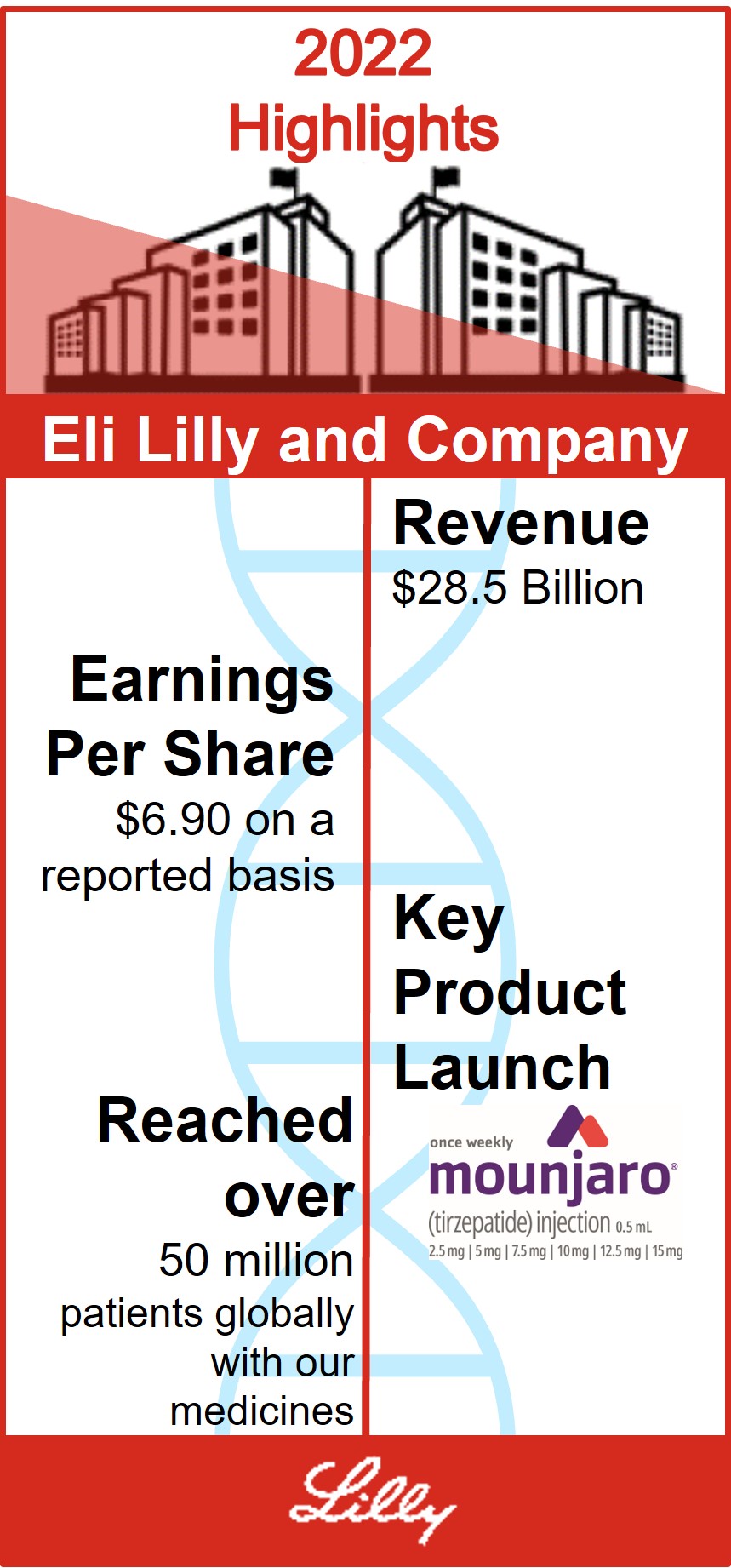












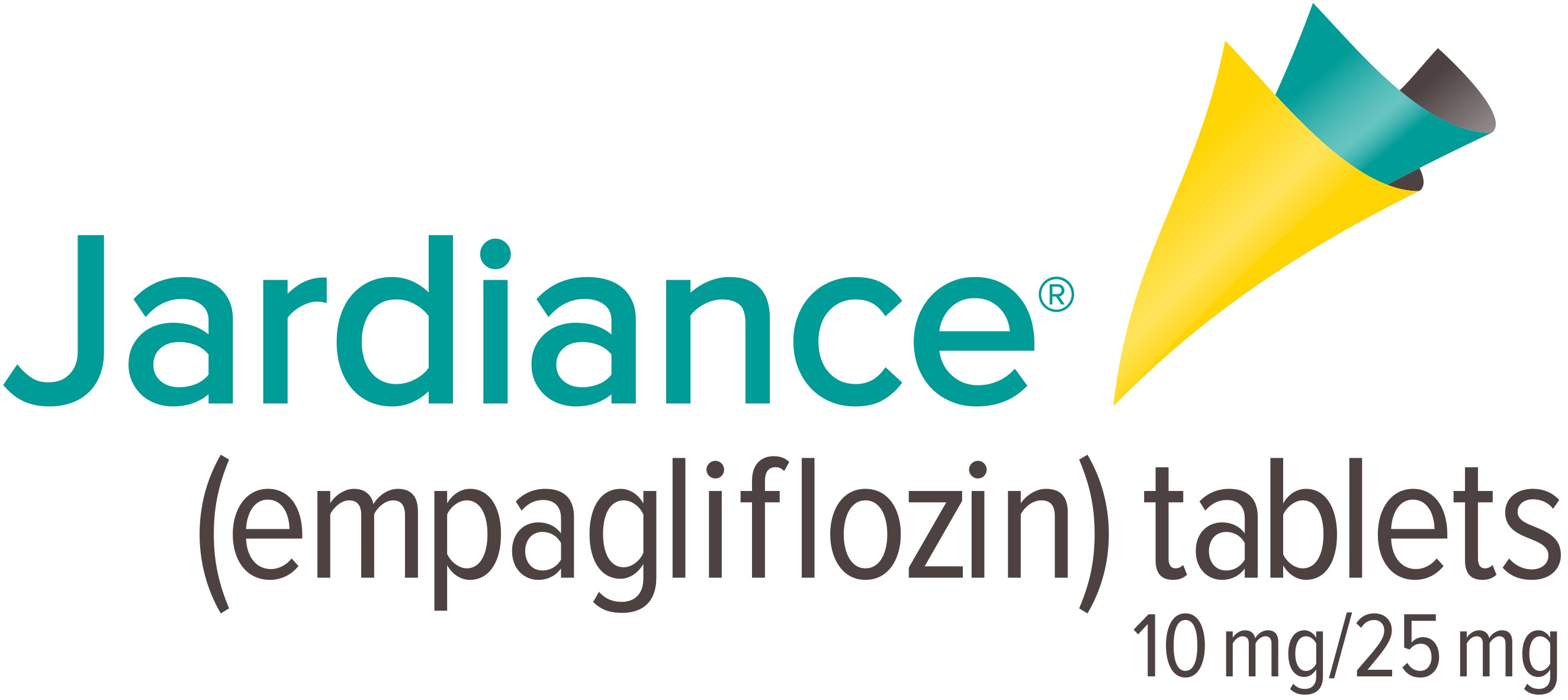
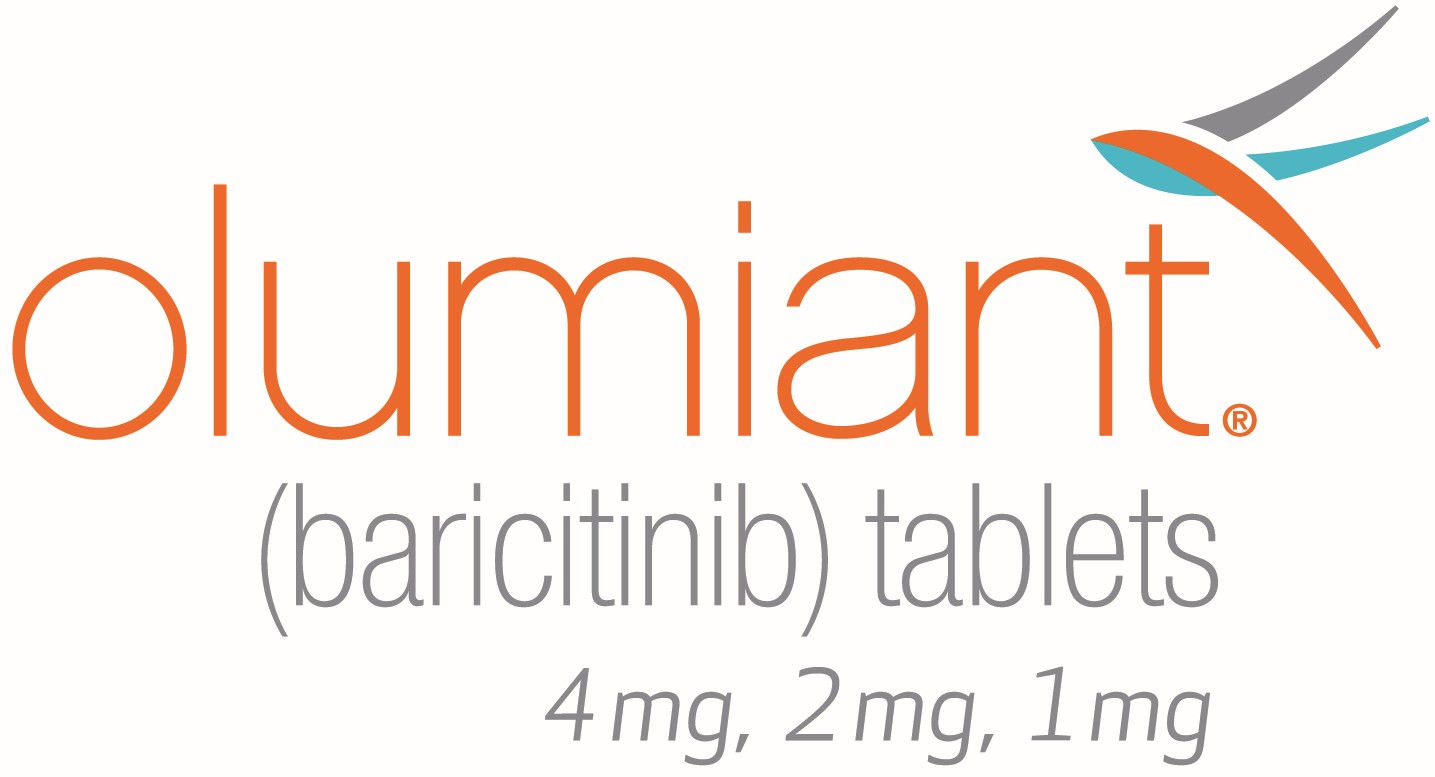
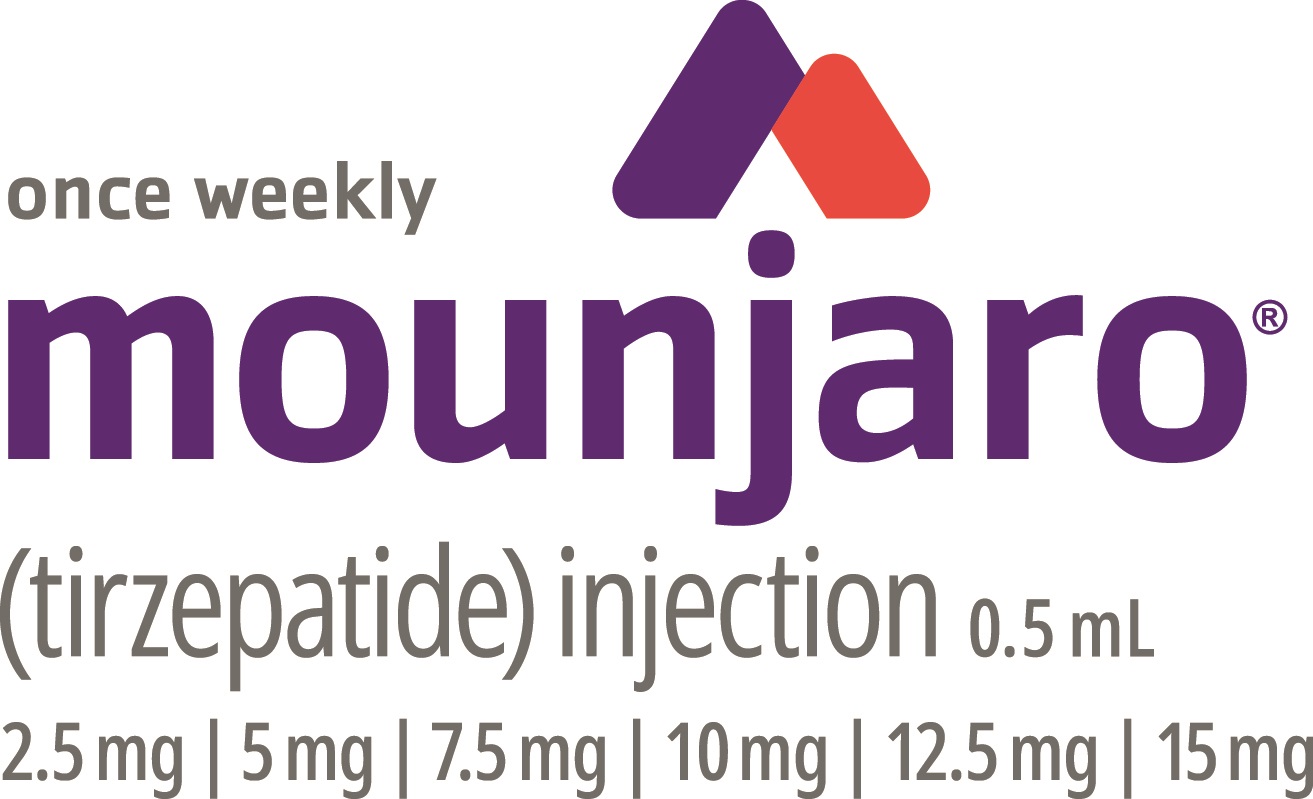
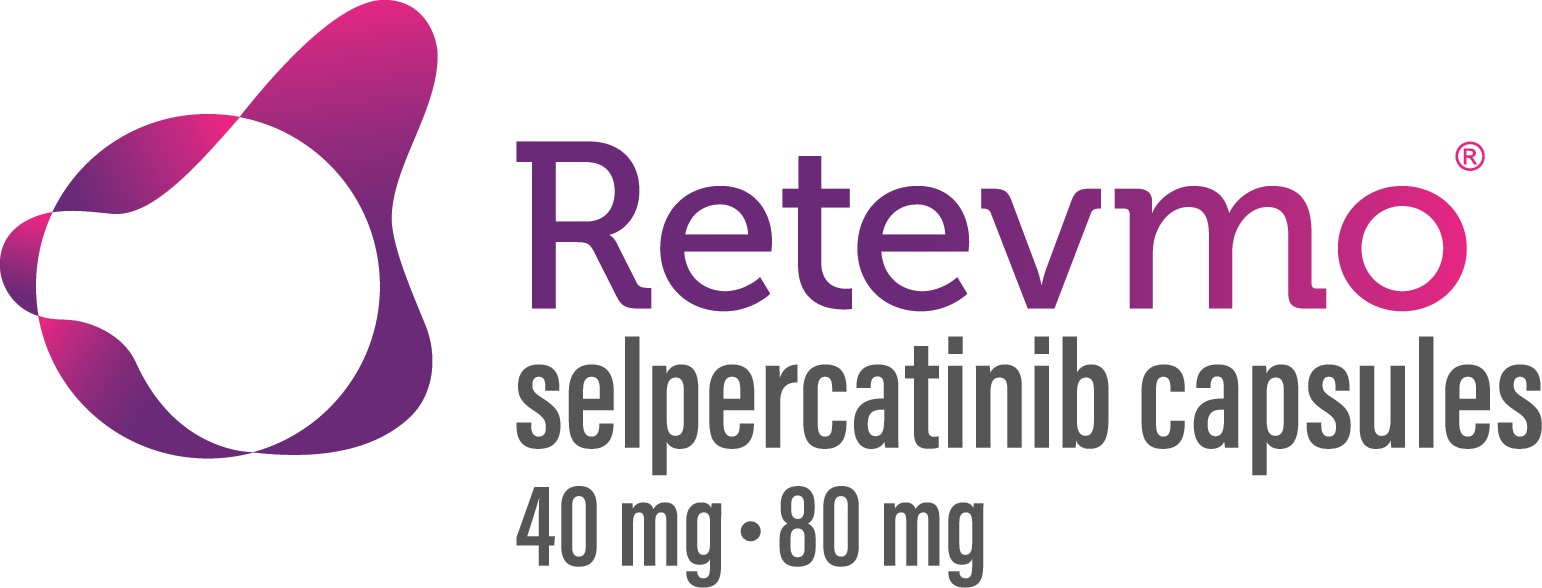

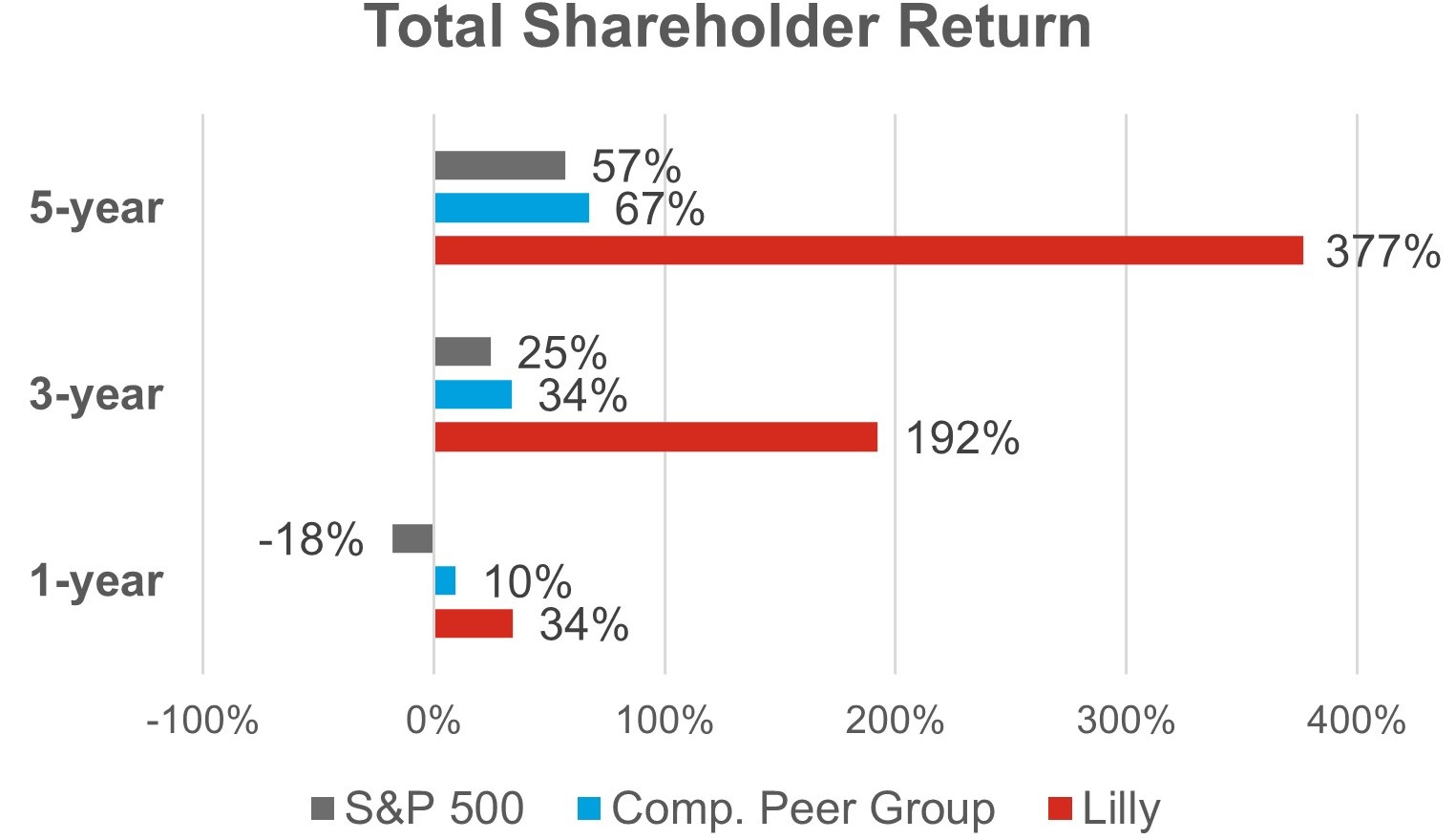

 Science & Technology
Science & Technology Directors & Corporate Governance
Directors & Corporate Governance

 Ethics & Compliance
Ethics & Compliance Science & Technology
Science & Technology
 Talent and Compensation
Talent and Compensation Audit
Audit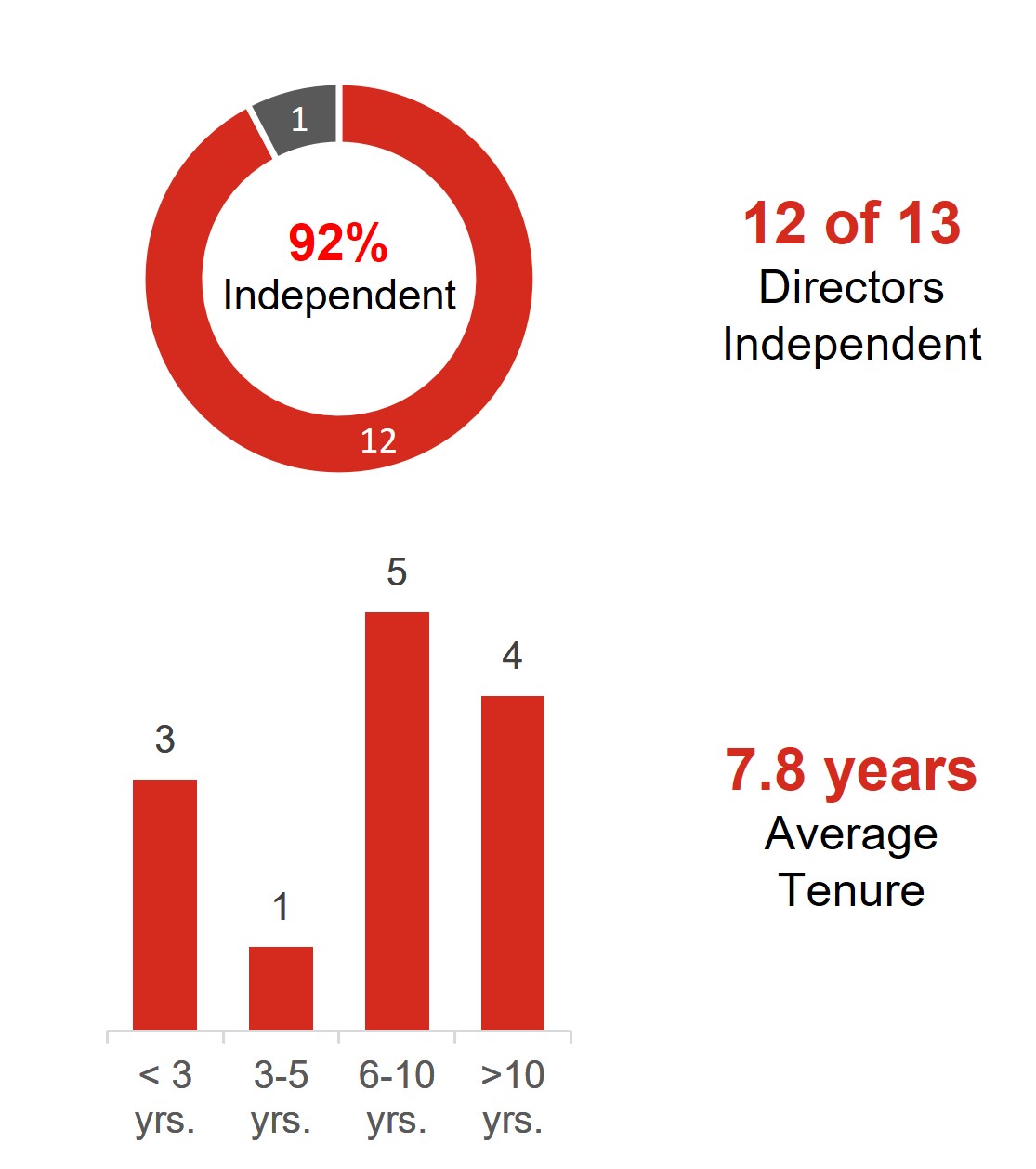




 Our compensation programs are designed to align executive pay with shareholder interests and link pay to performance through a blend of short- and long-term performance measures.
Our compensation programs are designed to align executive pay with shareholder interests and link pay to performance through a blend of short- and long-term performance measures. Our Talent and Compensation Committee annually reviews our compensation programs to help ensure they provide incentives to deliver long-term, sustainable business results while discouraging excessive risk-taking and other adverse behaviors.
Our Talent and Compensation Committee annually reviews our compensation programs to help ensure they provide incentives to deliver long-term, sustainable business results while discouraging excessive risk-taking and other adverse behaviors. We have robust stock ownership and retention guidelines for executive officers.
We have robust stock ownership and retention guidelines for executive officers. Executive officers are prohibited from hedging or pledging their company stock.
Executive officers are prohibited from hedging or pledging their company stock. We have a compensation recovery or “clawback” policy that applies to all executives and covers a wide range of misconduct.
We have a compensation recovery or “clawback” policy that applies to all executives and covers a wide range of misconduct. We have a restrictive policy on perquisites.
We have a restrictive policy on perquisites. We have double trigger change-in-control provisions in severance plans.
We have double trigger change-in-control provisions in severance plans. We don’t enter into employment agreements with any of our executive officers.
We don’t enter into employment agreements with any of our executive officers. We don’t provide “top hat” retirement plans.
We don’t provide “top hat” retirement plans.  We don’t provide tax gross-ups to executive officers (except for limited gross-ups related to international assignments).
We don’t provide tax gross-ups to executive officers (except for limited gross-ups related to international assignments).






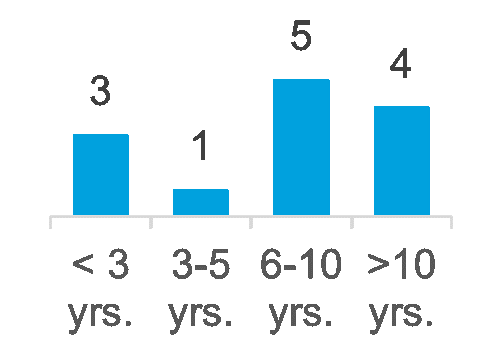






























































































































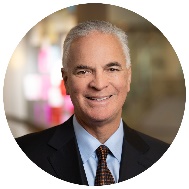








































































 Shareholder Recommendations of Director Candidates - A shareholder who wishes to recommend a director candidate for evaluation should forward the candidate’s name and information about the candidate’s qualifications by delivery and email to:
Shareholder Recommendations of Director Candidates - A shareholder who wishes to recommend a director candidate for evaluation should forward the candidate’s name and information about the candidate’s qualifications by delivery and email to: Shareholder Nominations for Director Candidates for Inclusion in the Proxy Statement (“Proxy Access”) - If a shareholder or group of shareholders wishes to nominate one or more director candidates to be included in the proxy statement for the 2024 annual meeting pursuant to the “proxy access” provisions of the company’s bylaws (section 1.10), such shareholder or group of shareholders must deliver to the company’s Secretary, and the company’s Secretary must receive, written notice no later than November 18, 2023, and no earlier than October 19, 2023. However, if the date of the 2024 annual meeting is changed by more than 30 days from May 1, 2024 (the date contemplated for the 2024 annual meeting as set forth in this proxy statement), a shareholder must give the company written notice no earlier than 150 days in advance of the date of the 2024 meeting and no later than the close of business on the later of 120 days in advance of the 2024 annual meeting or 10 days following the date we first publicly announce the date of 2024 annual meeting. Any such notice must also comply with the timing, disclosure, procedural, and other requirements as set forth in the bylaws.
Shareholder Nominations for Director Candidates for Inclusion in the Proxy Statement (“Proxy Access”) - If a shareholder or group of shareholders wishes to nominate one or more director candidates to be included in the proxy statement for the 2024 annual meeting pursuant to the “proxy access” provisions of the company’s bylaws (section 1.10), such shareholder or group of shareholders must deliver to the company’s Secretary, and the company’s Secretary must receive, written notice no later than November 18, 2023, and no earlier than October 19, 2023. However, if the date of the 2024 annual meeting is changed by more than 30 days from May 1, 2024 (the date contemplated for the 2024 annual meeting as set forth in this proxy statement), a shareholder must give the company written notice no earlier than 150 days in advance of the date of the 2024 meeting and no later than the close of business on the later of 120 days in advance of the 2024 annual meeting or 10 days following the date we first publicly announce the date of 2024 annual meeting. Any such notice must also comply with the timing, disclosure, procedural, and other requirements as set forth in the bylaws. Other Shareholder Nominations for Director Candidates - In addition, under Section 1.9 of the company’s bylaws, any shareholder of record wishing to directly nominate a director candidate at the 2024 annual meeting of shareholders (i.e., to propose a candidate for election who is not otherwise nominated by the board through the recommendation process described above and not pursuant to the “proxy access” provisions described above) must deliver to the company’s Secretary, and the company’s Secretary must receive, written notice no later than the close of business on November 18, 2023, and no earlier than the close of business on September 19, 2023. However, if the date of the 2024 annual meeting is changed by more than 30 days from May 1, 2024 (the date contemplated for the 2024 annual meeting as set forth in this proxy statement), a shareholder must give the company written notice no later than the close of business on the later of 120 days in advance of the 2024 annual meeting or 10 days following the date we first publicly announce the date of 2024 annual meeting. Any such notice must also comply with the timing, disclosure, procedural and other requirements as set forth in the bylaws. A copy of the bylaws is available online at lilly.com/leadership/governance.
Other Shareholder Nominations for Director Candidates - In addition, under Section 1.9 of the company’s bylaws, any shareholder of record wishing to directly nominate a director candidate at the 2024 annual meeting of shareholders (i.e., to propose a candidate for election who is not otherwise nominated by the board through the recommendation process described above and not pursuant to the “proxy access” provisions described above) must deliver to the company’s Secretary, and the company’s Secretary must receive, written notice no later than the close of business on November 18, 2023, and no earlier than the close of business on September 19, 2023. However, if the date of the 2024 annual meeting is changed by more than 30 days from May 1, 2024 (the date contemplated for the 2024 annual meeting as set forth in this proxy statement), a shareholder must give the company written notice no later than the close of business on the later of 120 days in advance of the 2024 annual meeting or 10 days following the date we first publicly announce the date of 2024 annual meeting. Any such notice must also comply with the timing, disclosure, procedural and other requirements as set forth in the bylaws. A copy of the bylaws is available online at lilly.com/leadership/governance. Universal Proxy for Shareholder Nominations - In addition to satisfying the requirements under our bylaws, if a shareholder intends to comply with the SEC’s universal proxy rules and to solicit proxies in support of director nominees other than the company’s nominees, the shareholder must provide notice that sets forth the information required by Rule 14a-19 under the Exchange Act, which notice must be postmarked or transmitted electronically to us at the address stated above for shareholder recommendations no later than 60 calendar days prior to the one-year anniversary date of the Annual Meeting (for the 2024 annual meeting of shareholders, no later than March 2, 2024). If the date of the 2024 annual meeting of shareholders is changed by more than 30 calendar days from such anniversary date, however, then the shareholder must provide notice by the later of 60 calendar days prior to the date of the 2024 annual meeting of shareholders and the 10th calendar day following the date on which public announcement of the date of the 2024 annual meeting of shareholders is first made by the company.
Universal Proxy for Shareholder Nominations - In addition to satisfying the requirements under our bylaws, if a shareholder intends to comply with the SEC’s universal proxy rules and to solicit proxies in support of director nominees other than the company’s nominees, the shareholder must provide notice that sets forth the information required by Rule 14a-19 under the Exchange Act, which notice must be postmarked or transmitted electronically to us at the address stated above for shareholder recommendations no later than 60 calendar days prior to the one-year anniversary date of the Annual Meeting (for the 2024 annual meeting of shareholders, no later than March 2, 2024). If the date of the 2024 annual meeting of shareholders is changed by more than 30 calendar days from such anniversary date, however, then the shareholder must provide notice by the later of 60 calendar days prior to the date of the 2024 annual meeting of shareholders and the 10th calendar day following the date on which public announcement of the date of the 2024 annual meeting of shareholders is first made by the company.




